The Shelburne Museum in Vermont is like visiting 30 museums in one! 39 Rustic New England buildings on 45 acres house an eclectic collection of everything from fine paintings to antique duck decoys to an entire steamship!
Shelburne Museum
This “collection of collections” was created by Electra Havemeyer Webb. Mrs. Webb grew up in New York amid her wealthy parents’ collections of European and Asian art. When she started her own collecting, she determined to focus on American art, even folk crafts, that others weren’t admiring as much.
When she had to relocate some of her pieces, she realized she had the opportunity to showcase her collections to the public. So she and her friends created the Shelburne Museum in 1947. But instead of one huge museum, she used several interesting buildings gathered from all over New England. The result is a village where you walk past the general store to the rooming house on your way to a gallery of quilts or toys. And all of it in the midst of 22 beautiful gardens.
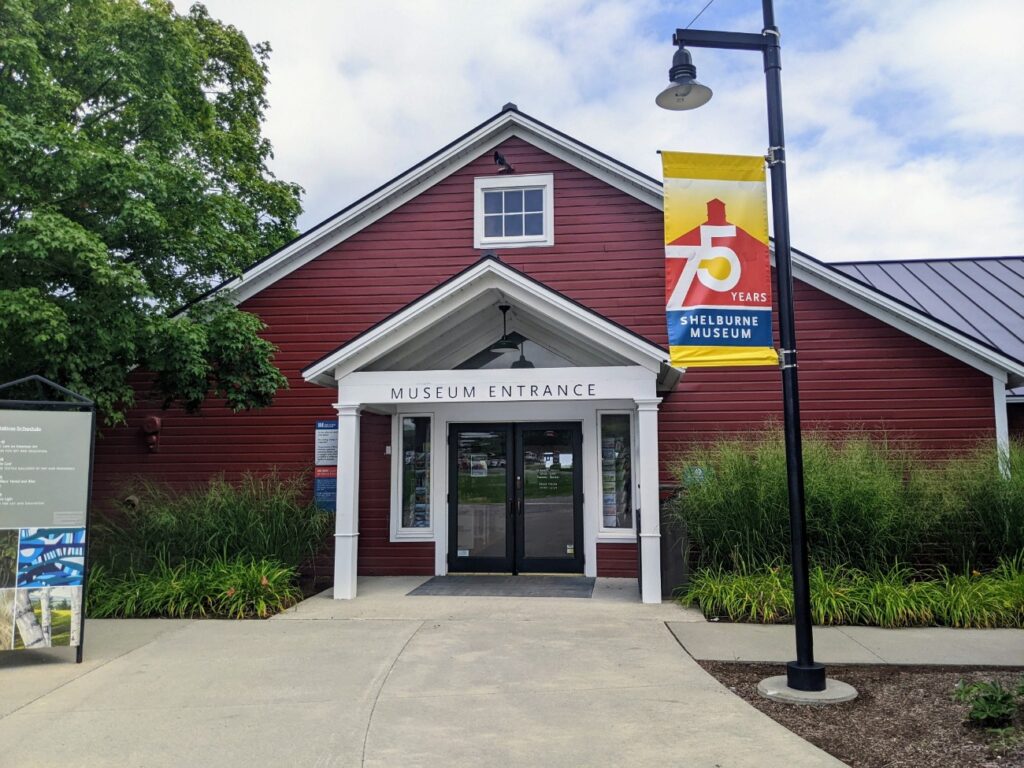
Round Barn
If we head left from the entrance building, the first building we come to is the Round Barn. This huge, three-story barn was built in 1901 in a bid for efficiency – hay stored in the top was fed through the center to cows on the middle floor, whose manure was shoveled to the bottom floor before being carted away.
Now the (thankfully poop-free) barn houses an impressive horse-drawn carriage & sleigh collection. Looking through the two floors makes me think of Dickens’ stories, the wild west, and the musical Oklahoma. There is an actual “Surry with the Fringe on Top!” Everything is incredibly well preserved but not behind glass. Standing with these pieces really makes history come alive.
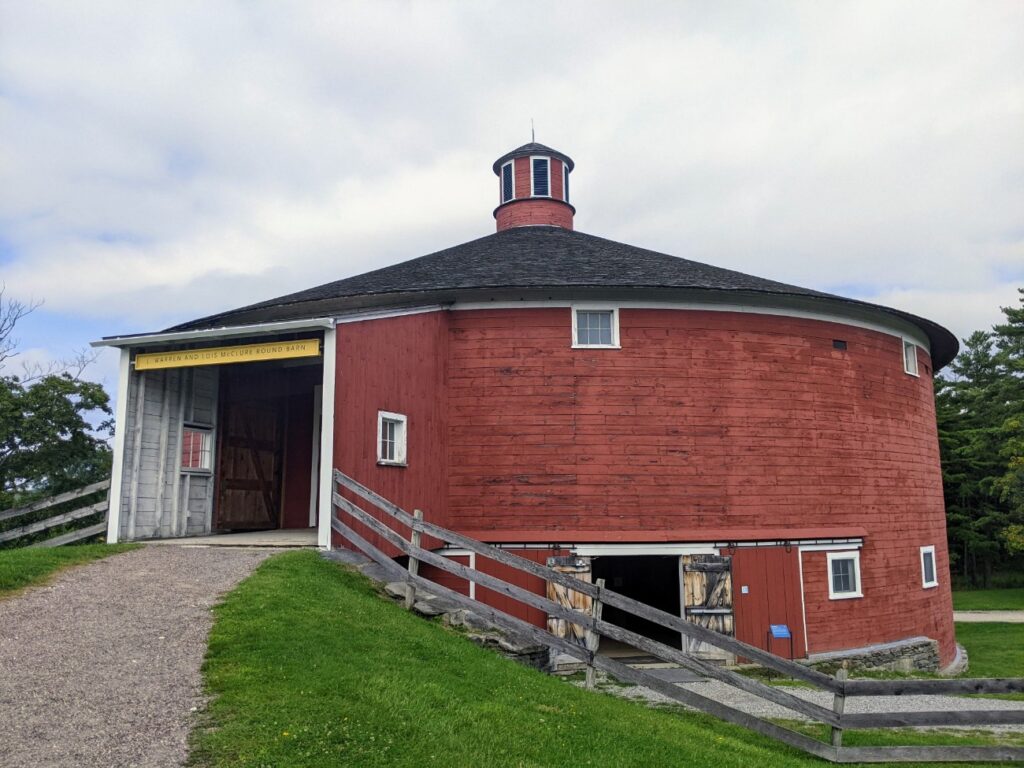
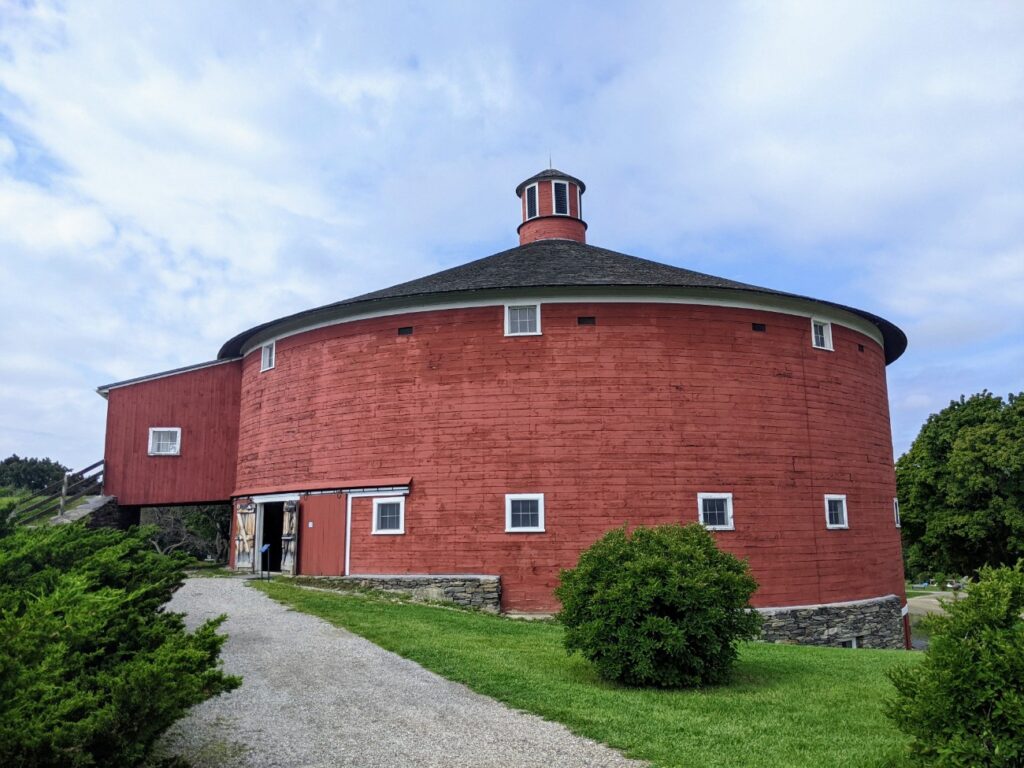
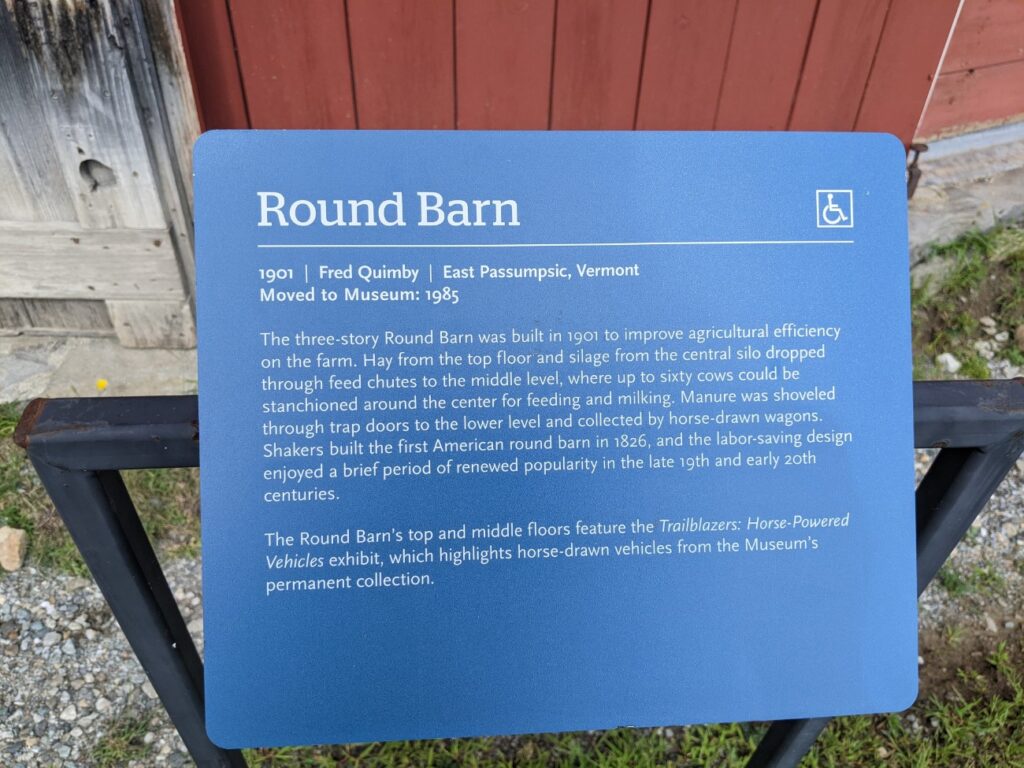
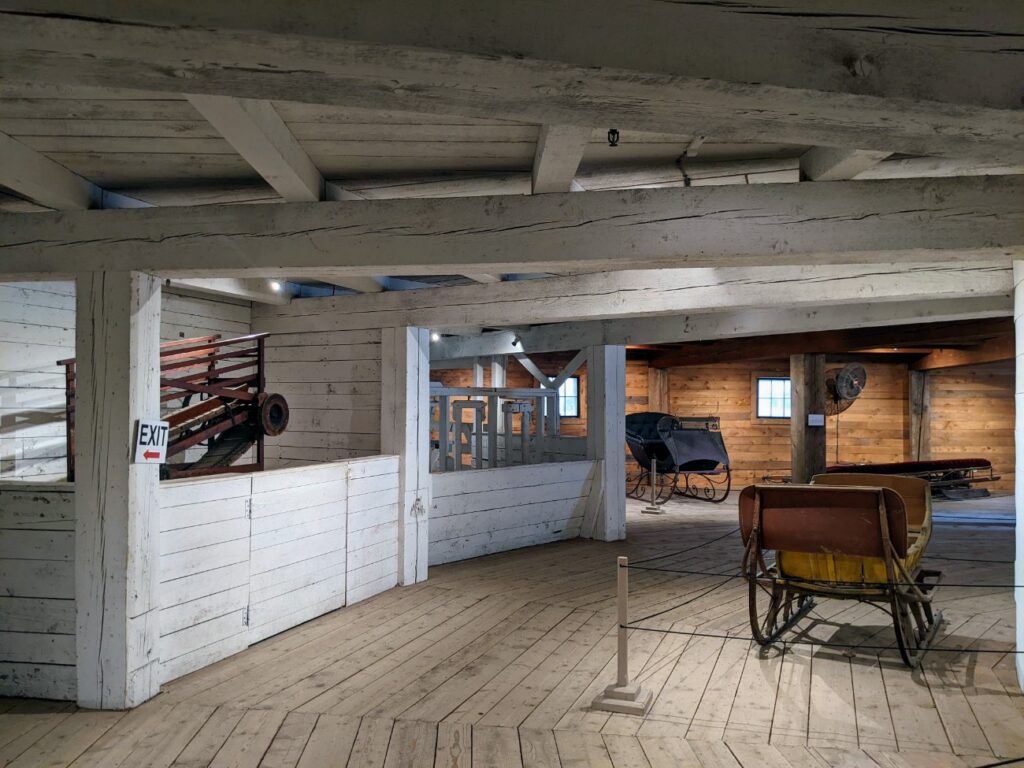
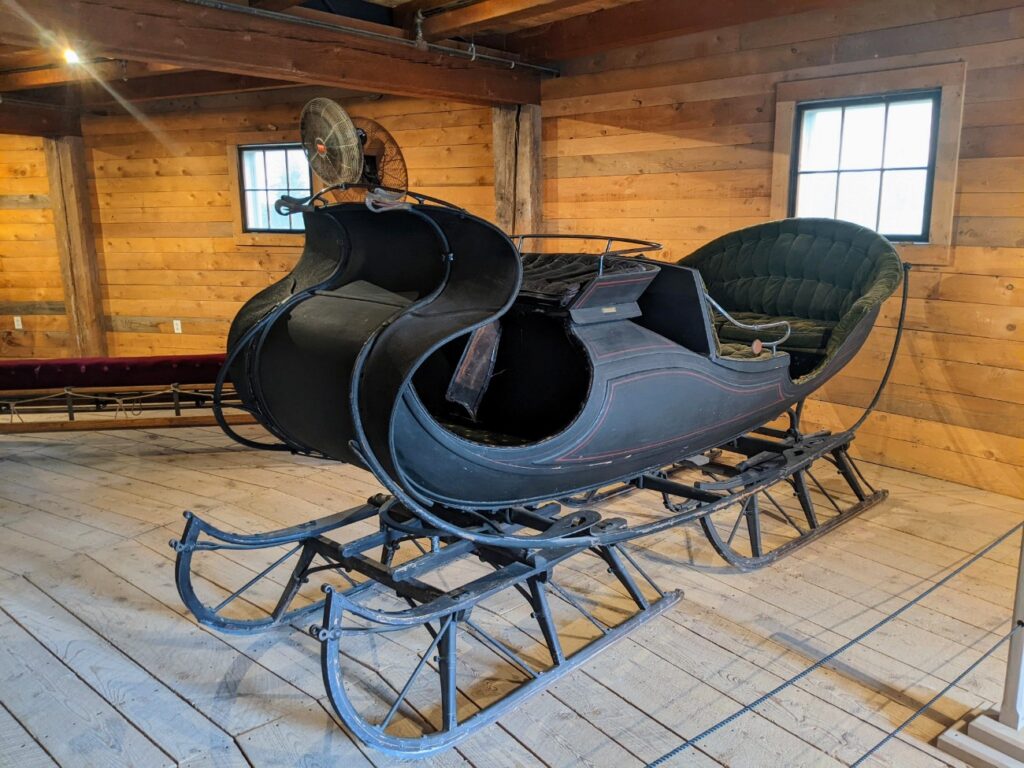
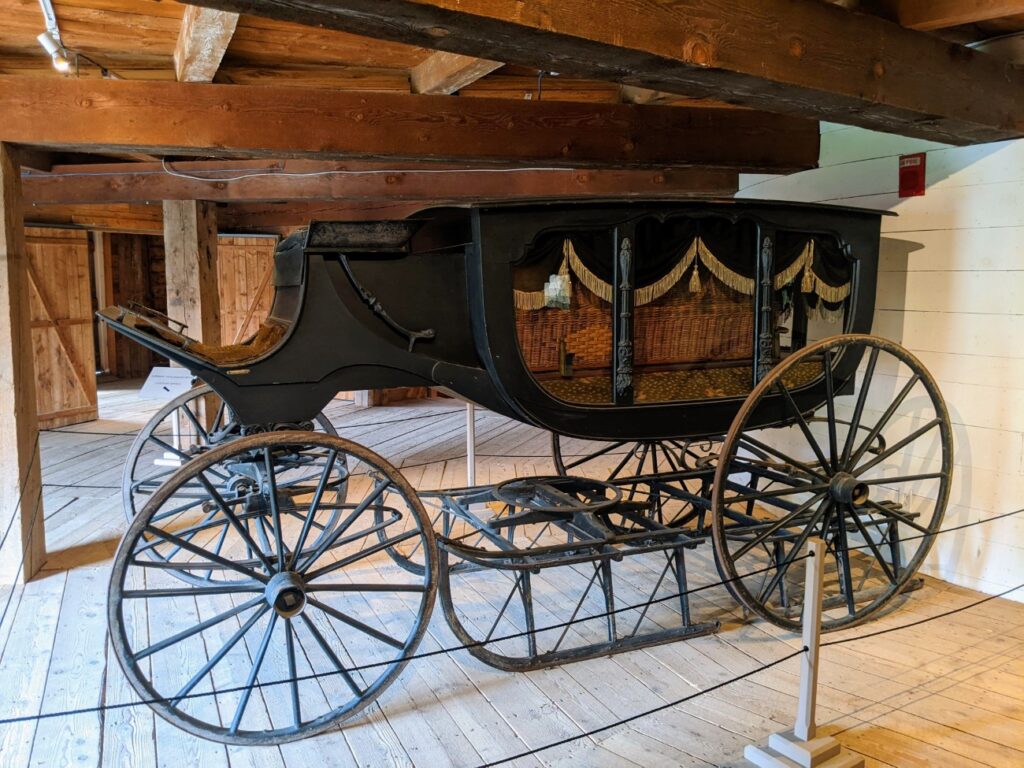
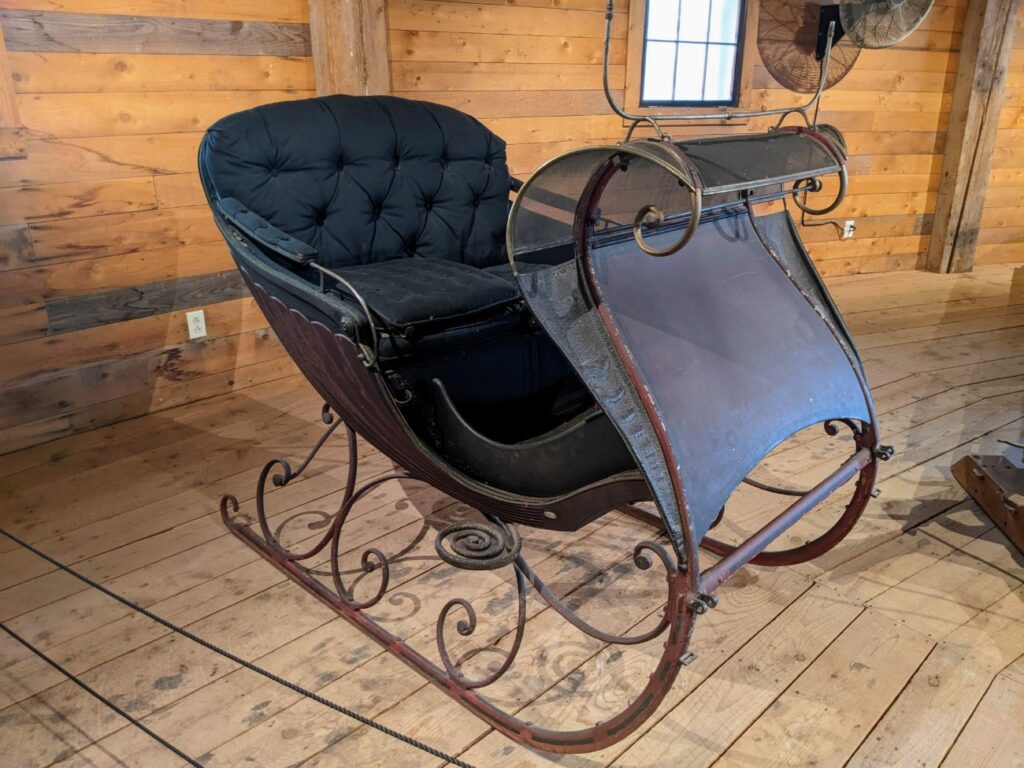
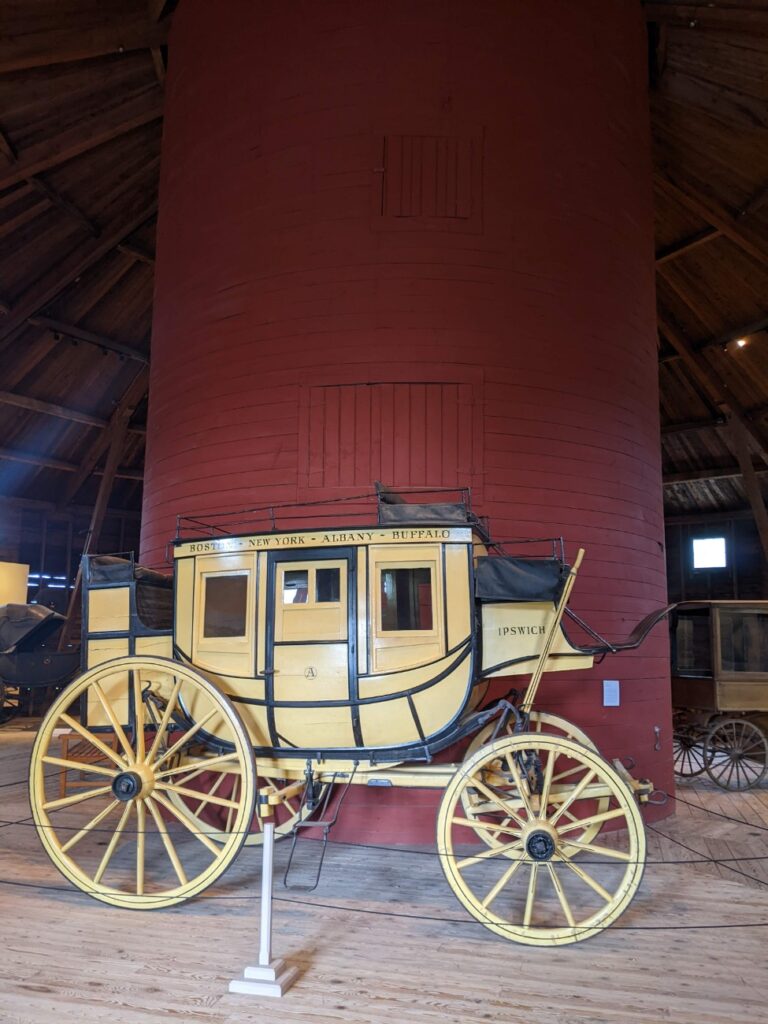
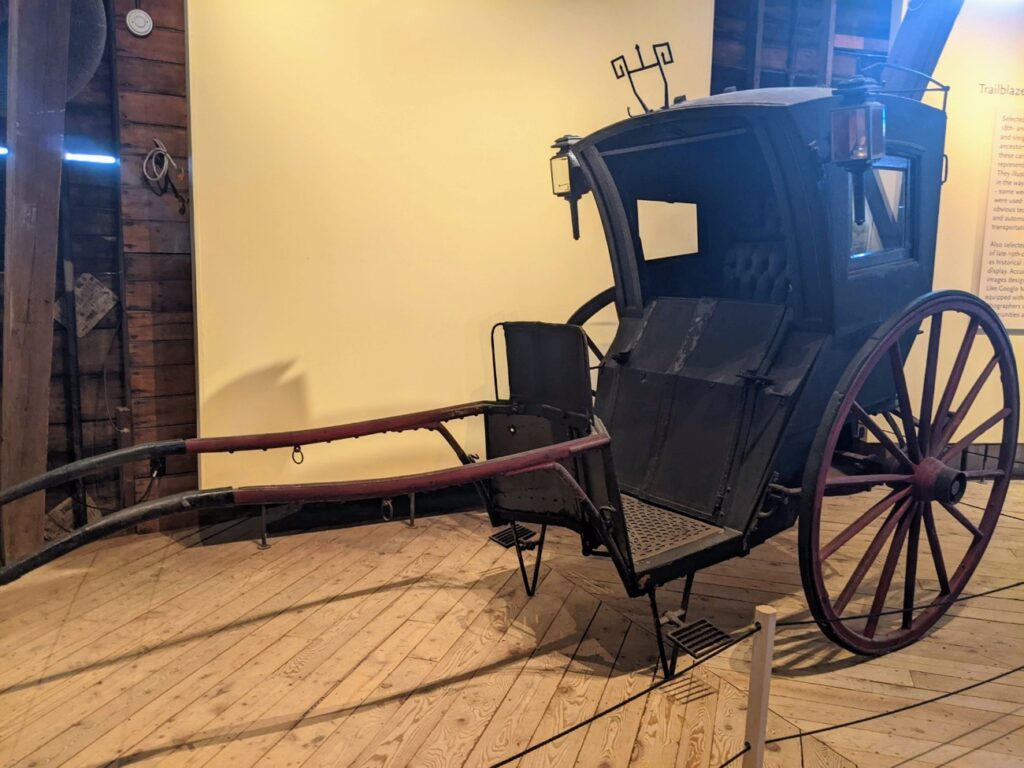
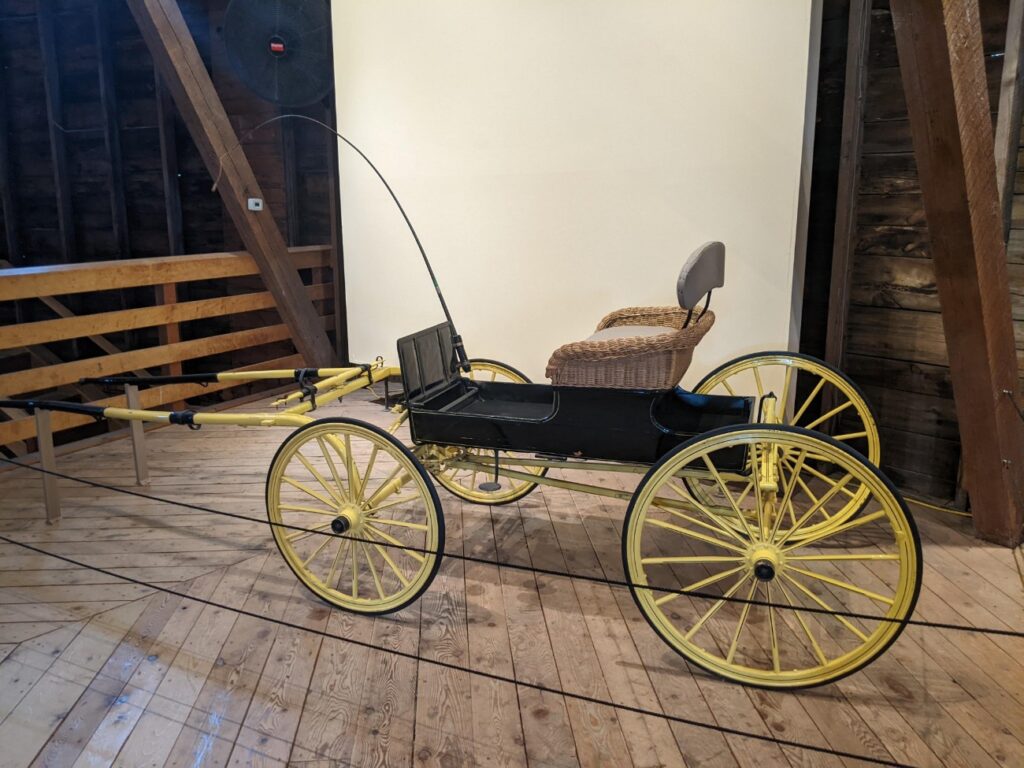
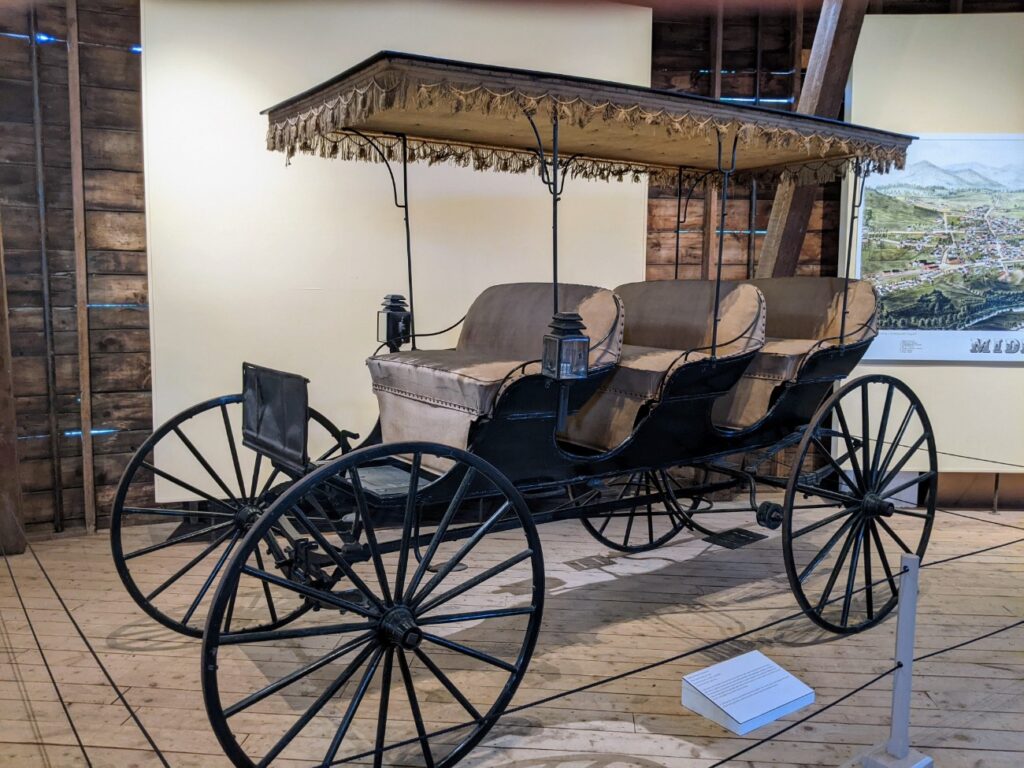
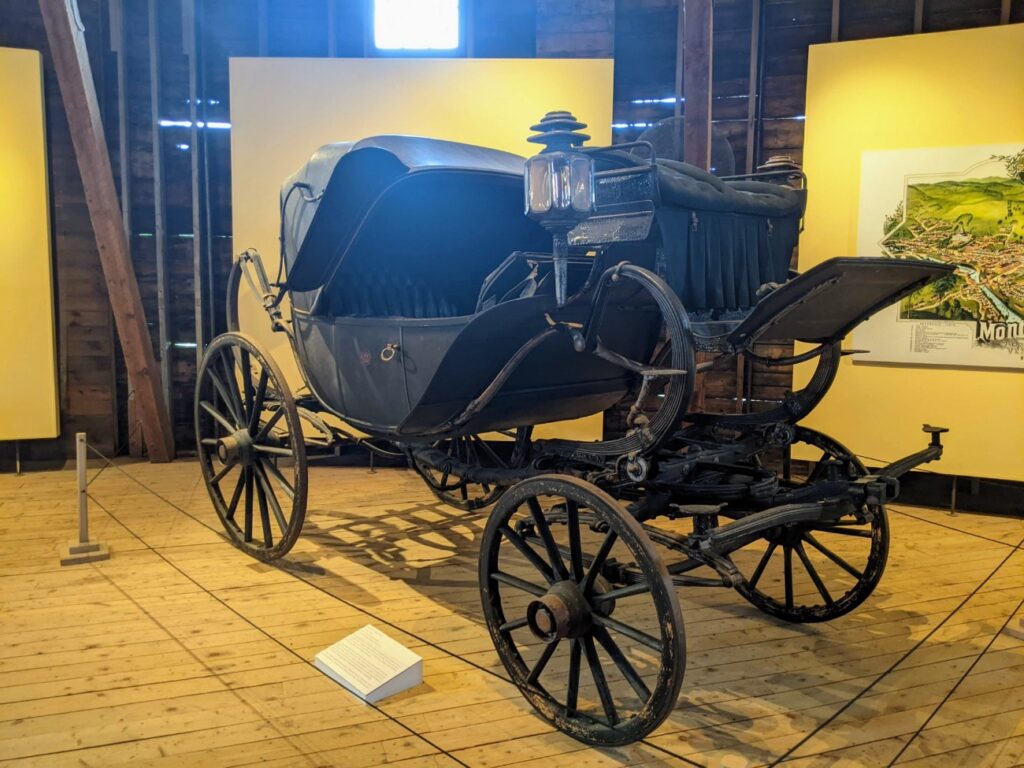
Circus Building
Continuing on to the left, we find the Circus Building, a fantastical long curved building, like a big “U.” It was purpose-built on location in 1960 to house an unusual collection – a miniature circus parade 525 feet long! The building itself shelters a wide lawn and a beautiful garden. The rock foundations create elevation in the building and a tunnel at the back.
Inside, the circus parade stretches in a display along the outer wall. It is a 1 inch=1 foot scale model. If it were life-sized, it would be about two miles long! Along an inner wall are beautiful examples of antique carousel animals and art. At the start of the parade is a massive miniature 3-ring circus and several circus posters. Note that if you enter at the door nearer to the Round Barn, that’s the end of the circus. If you want to start at the beginning of it, enter at the far door.
A 1920s traveling-model carousel between the “arms” of the building is open from May 1-October 31.
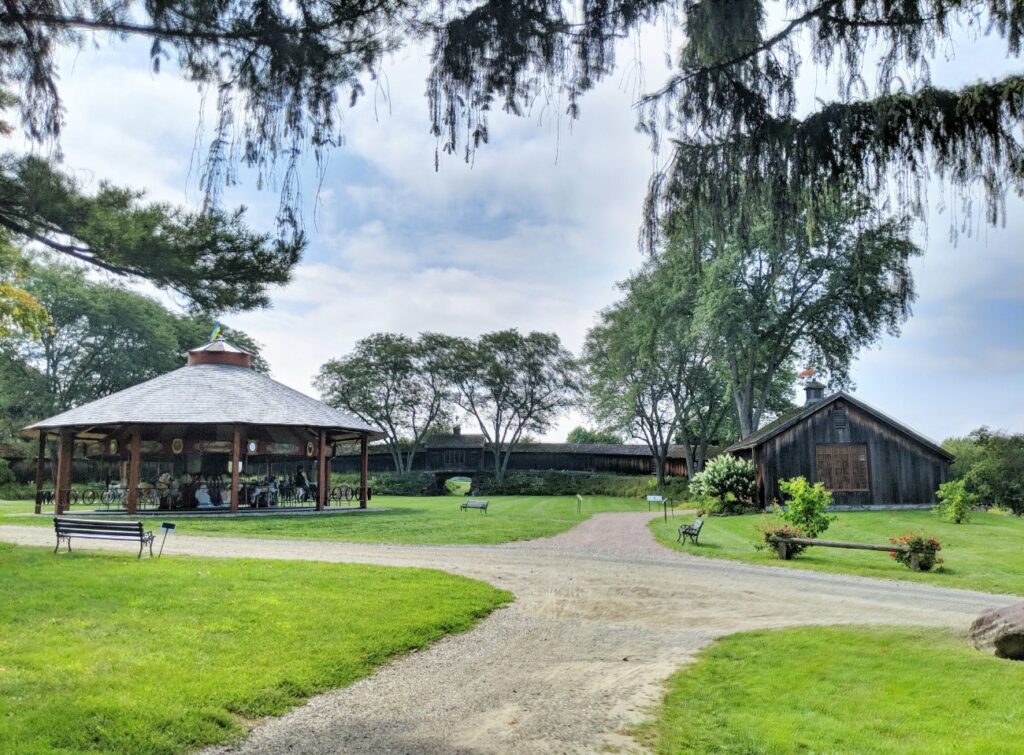
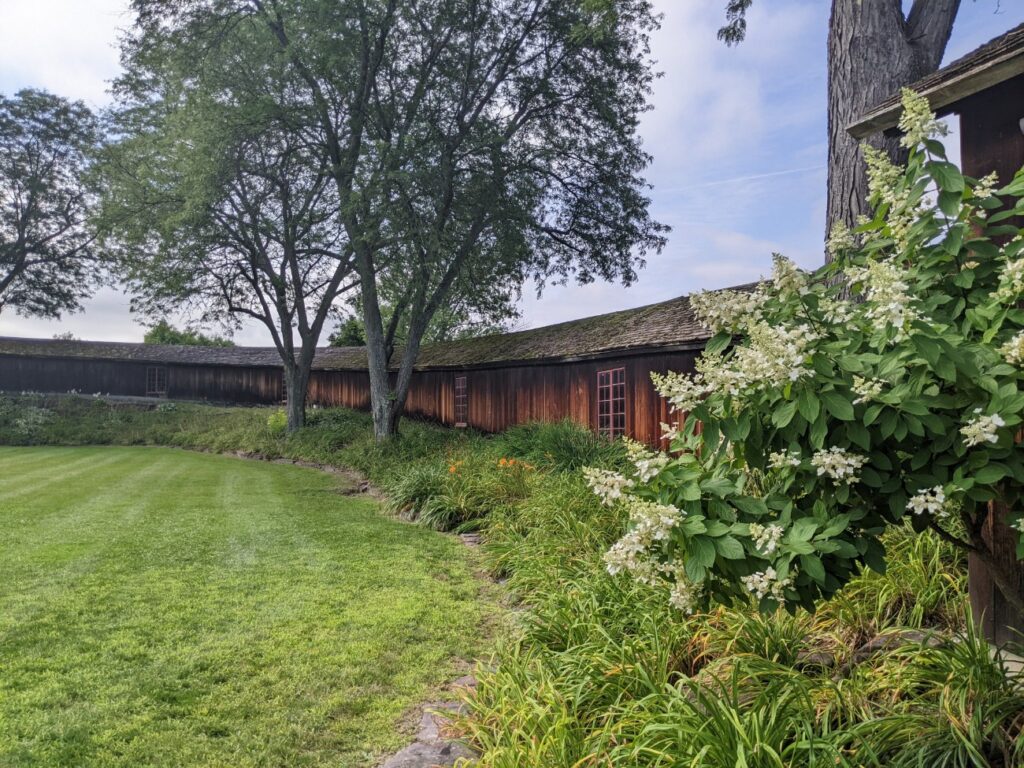
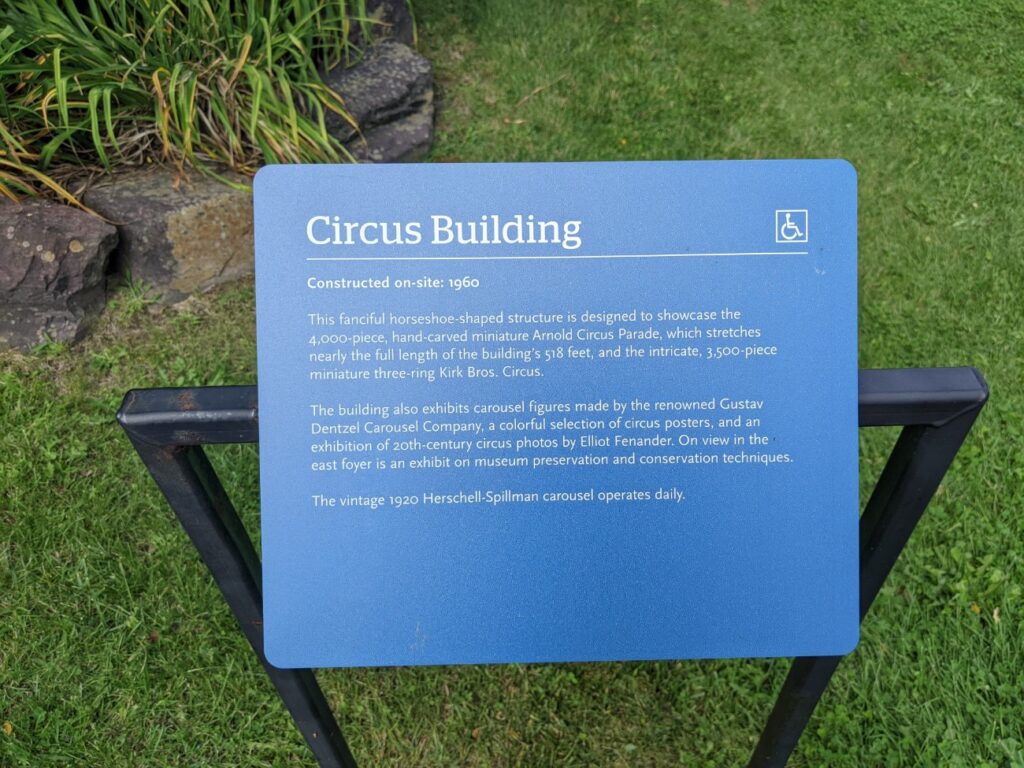
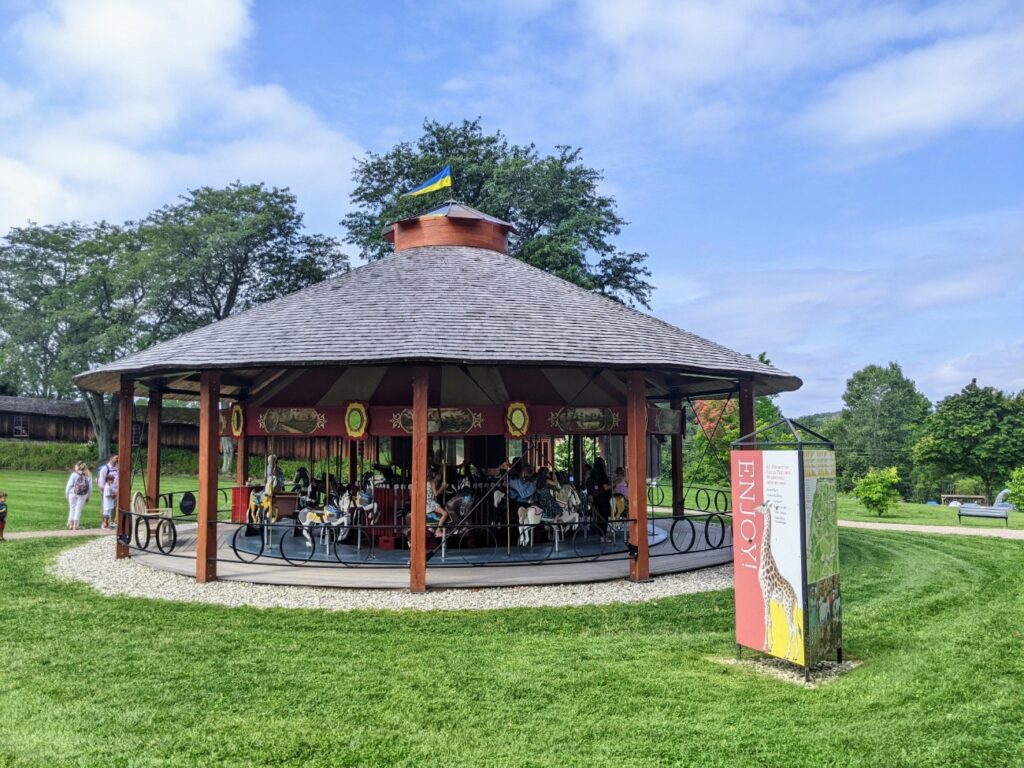
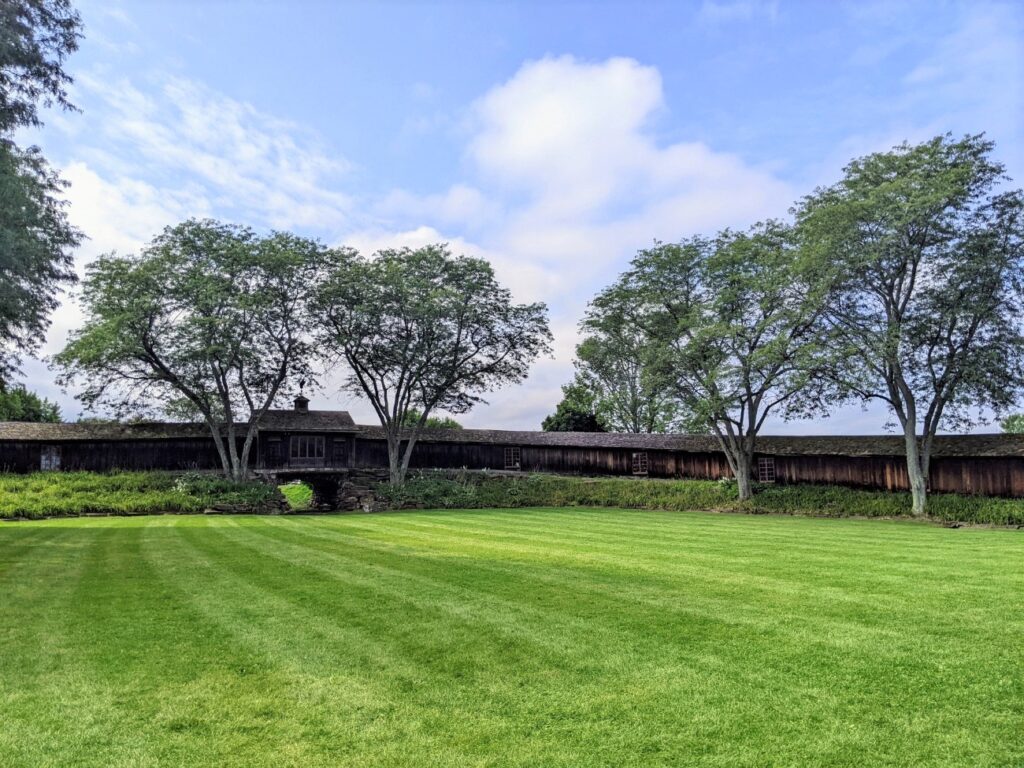
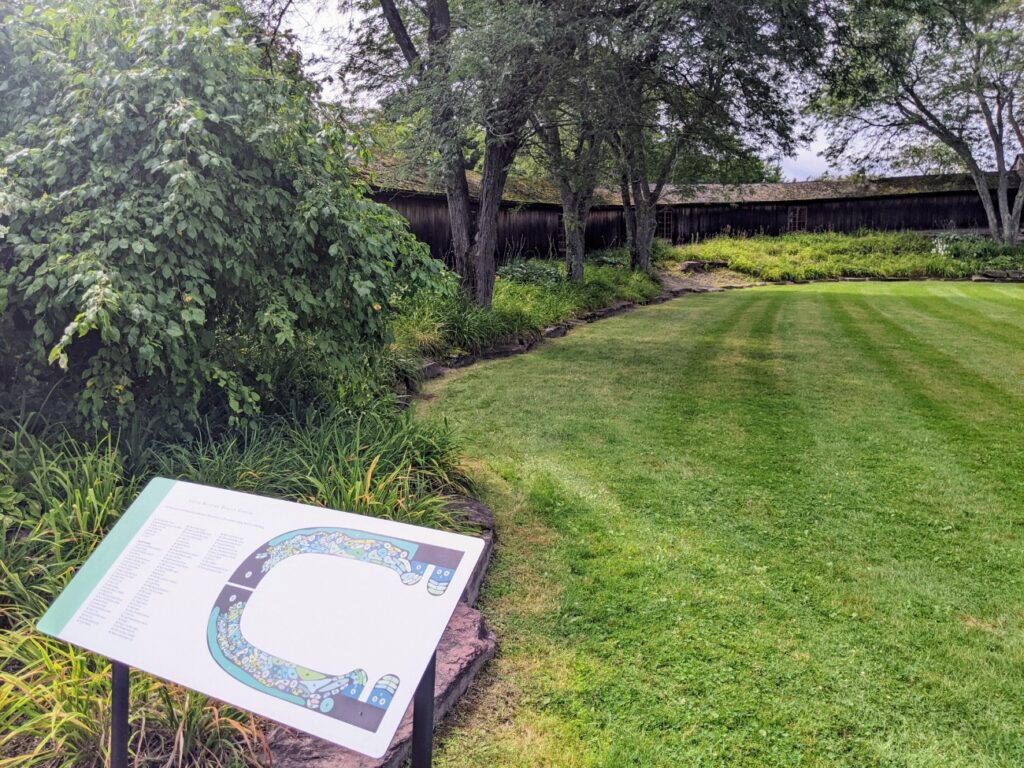
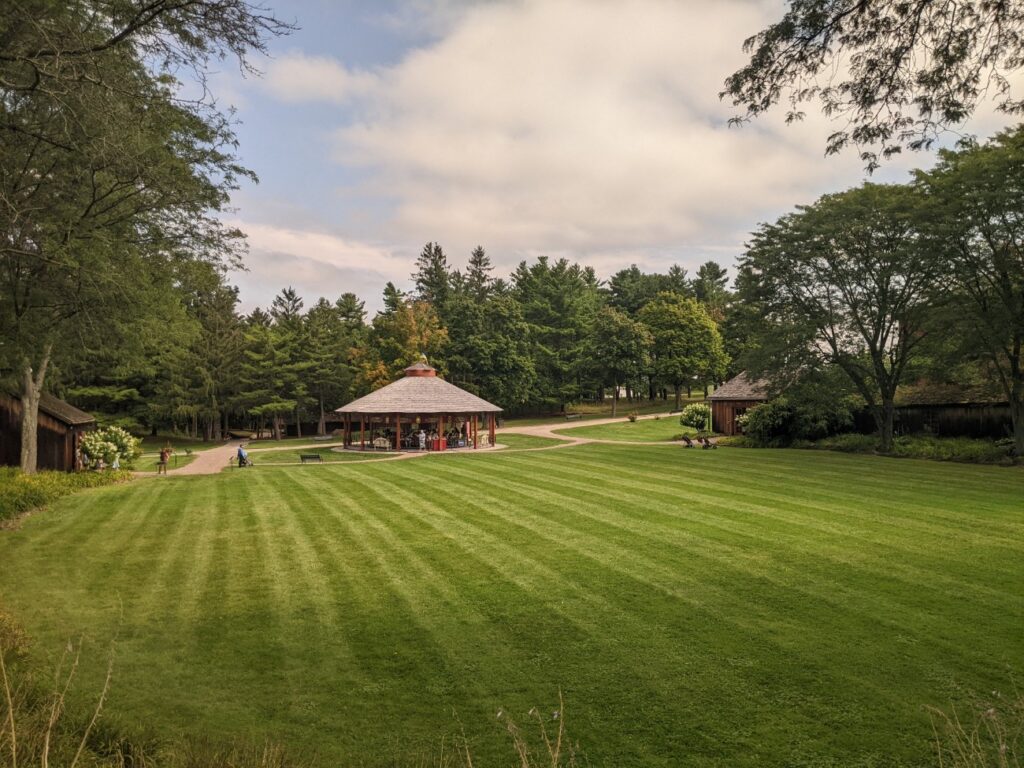
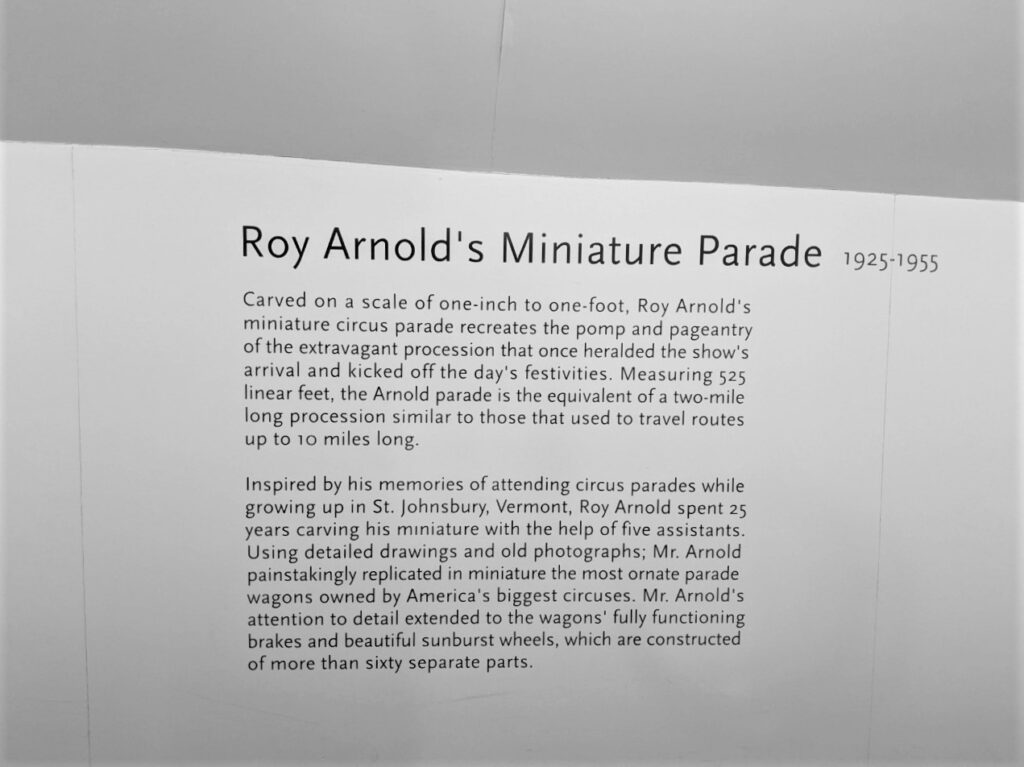
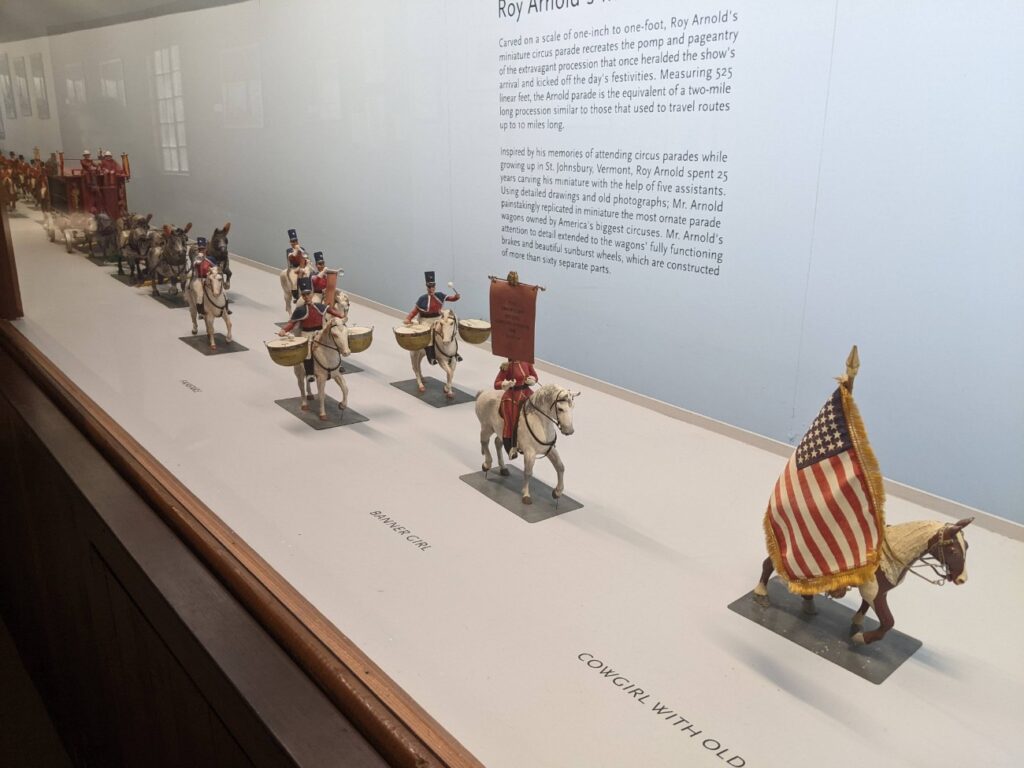
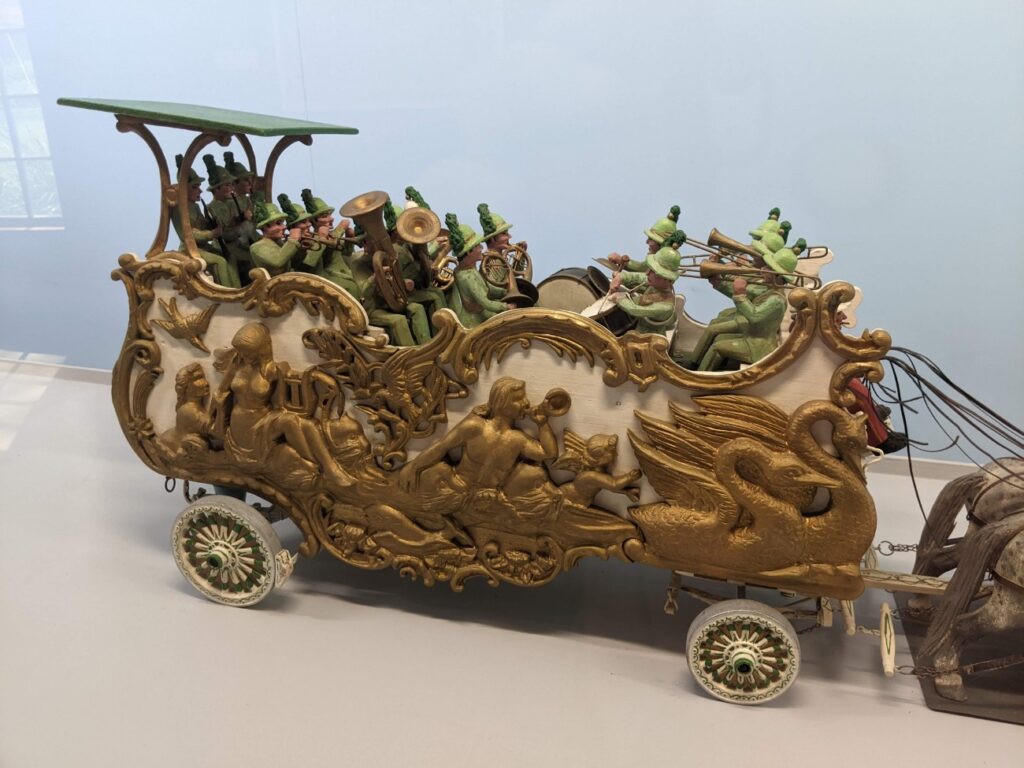
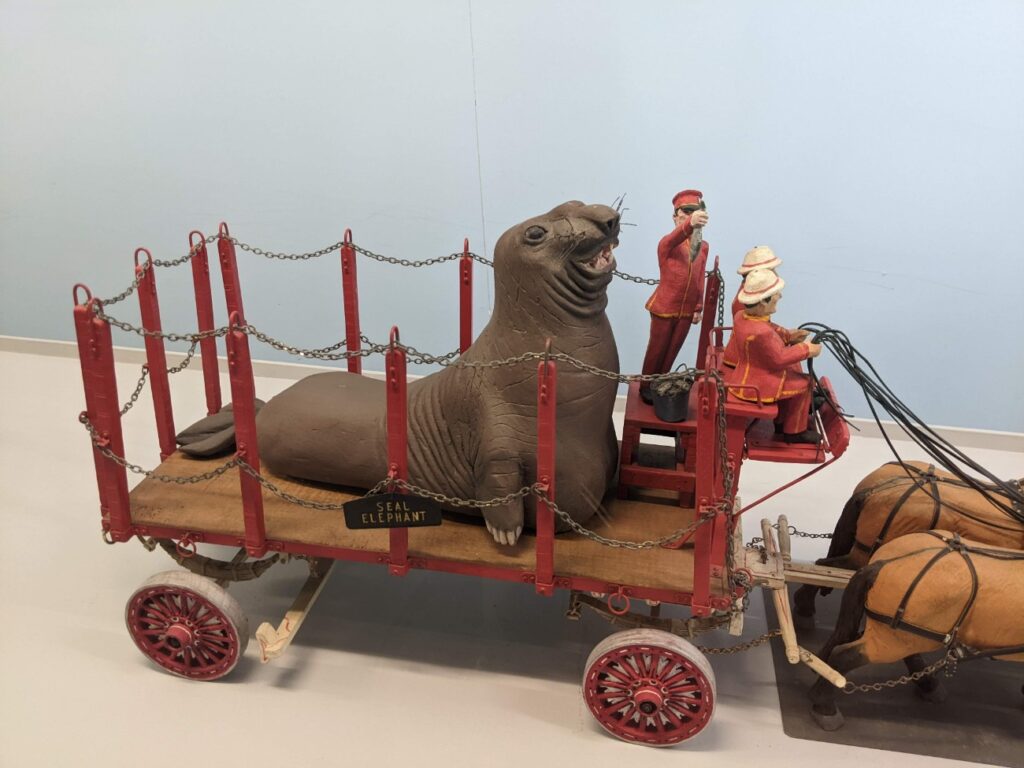
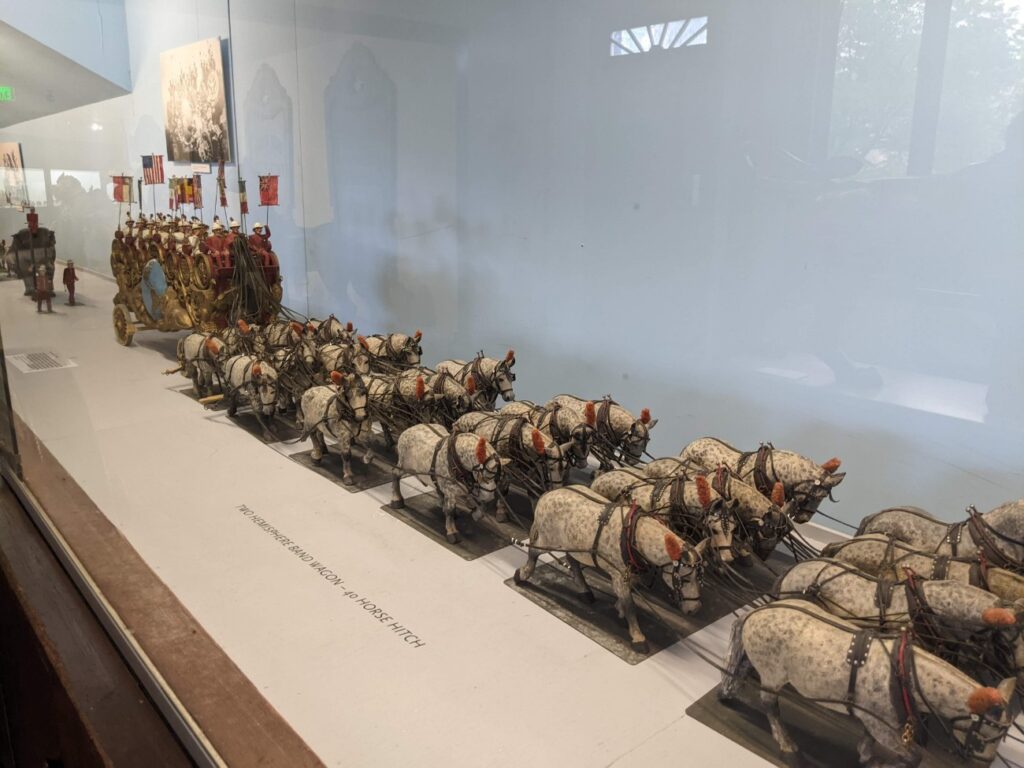

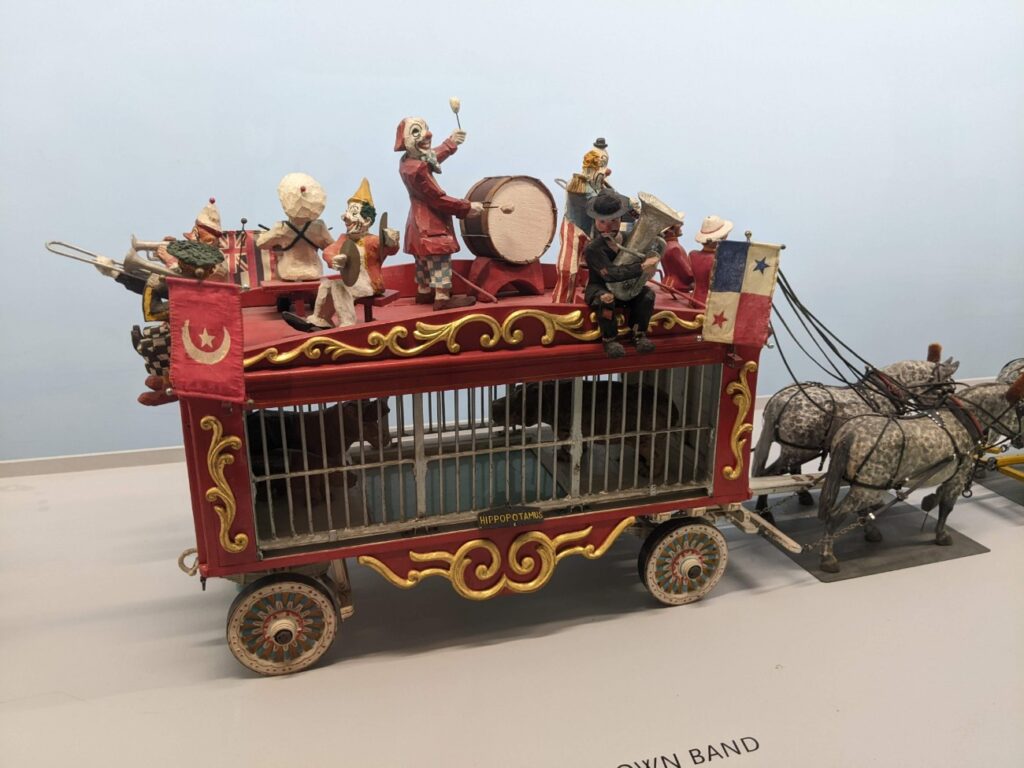
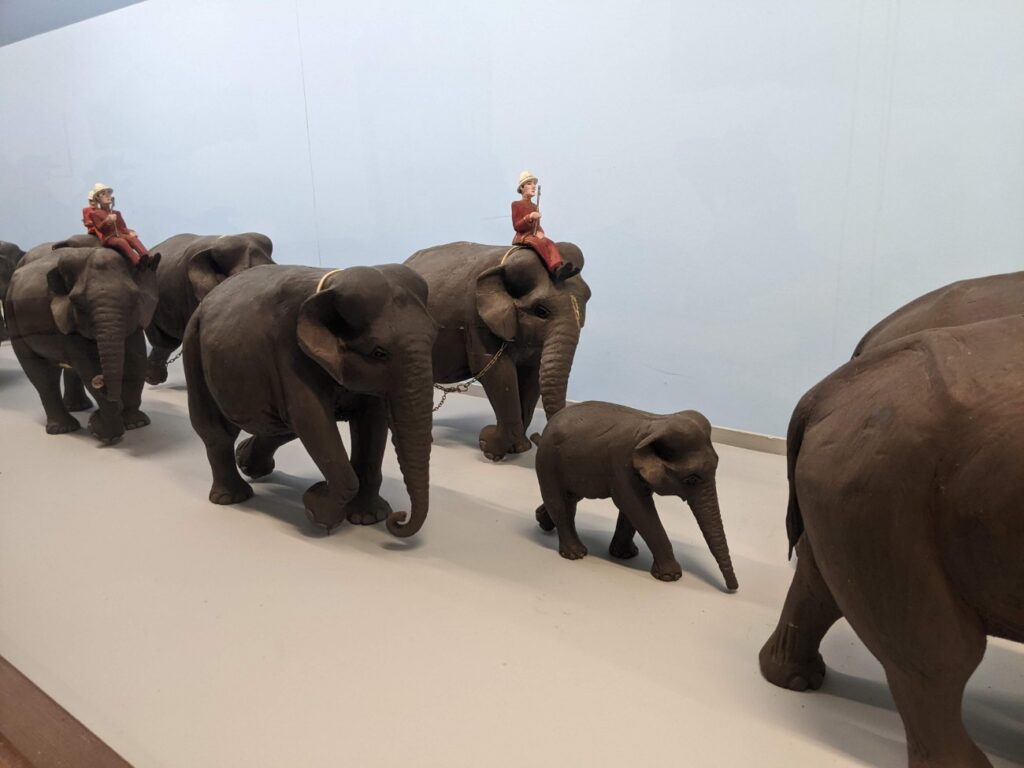
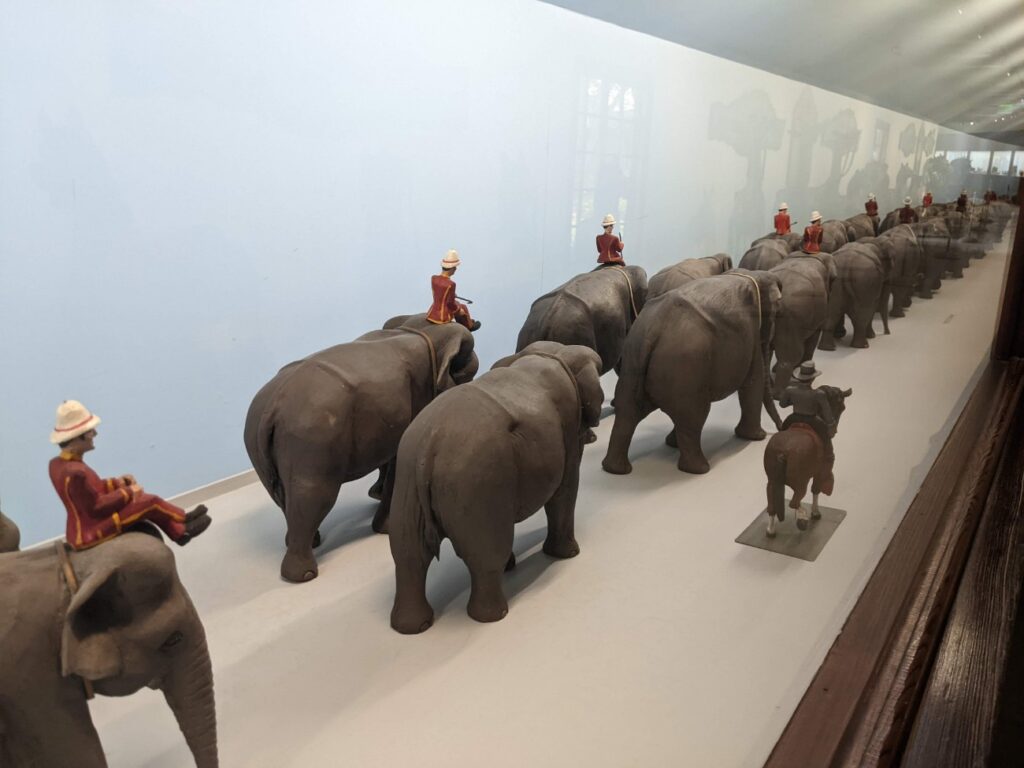
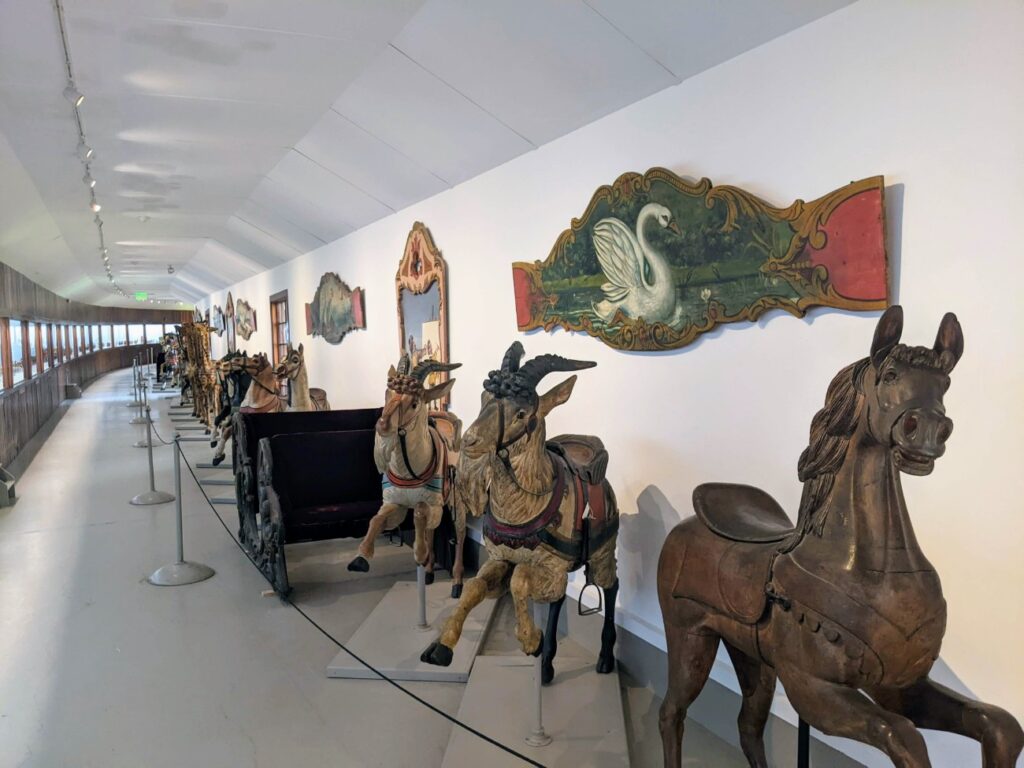
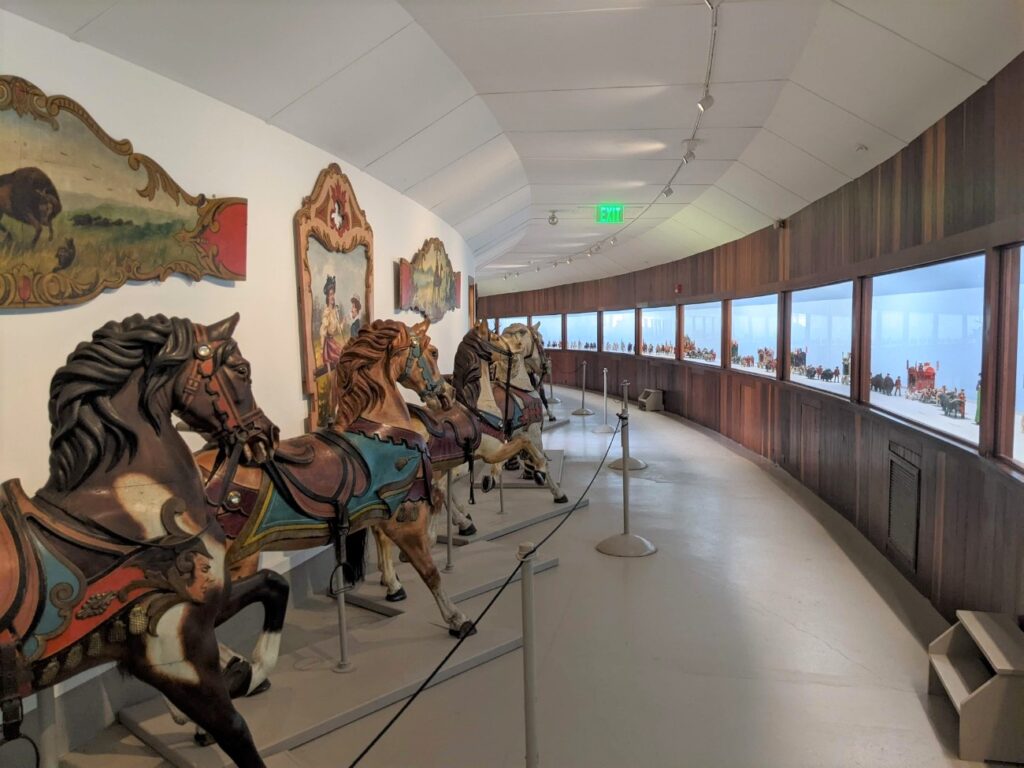
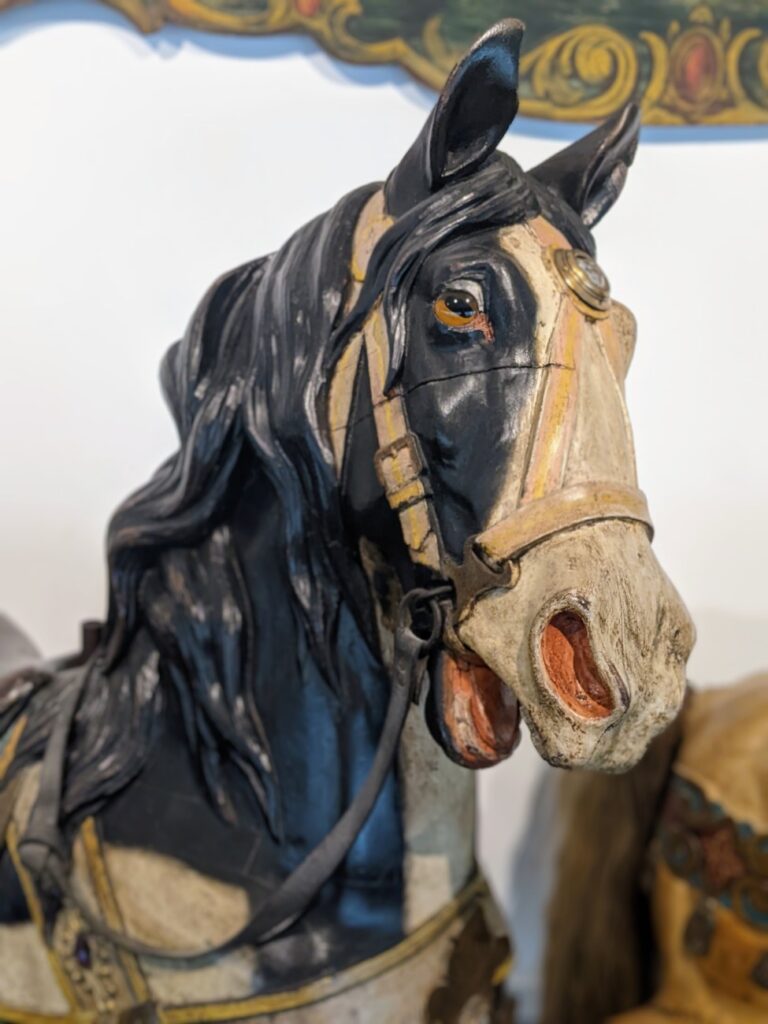
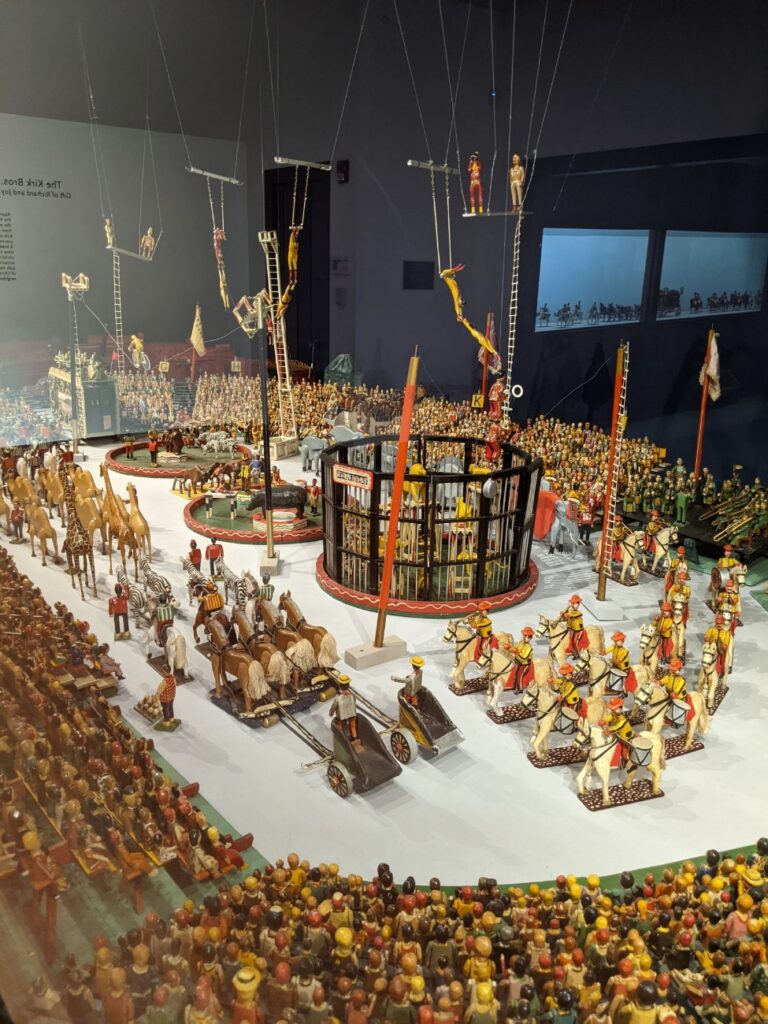
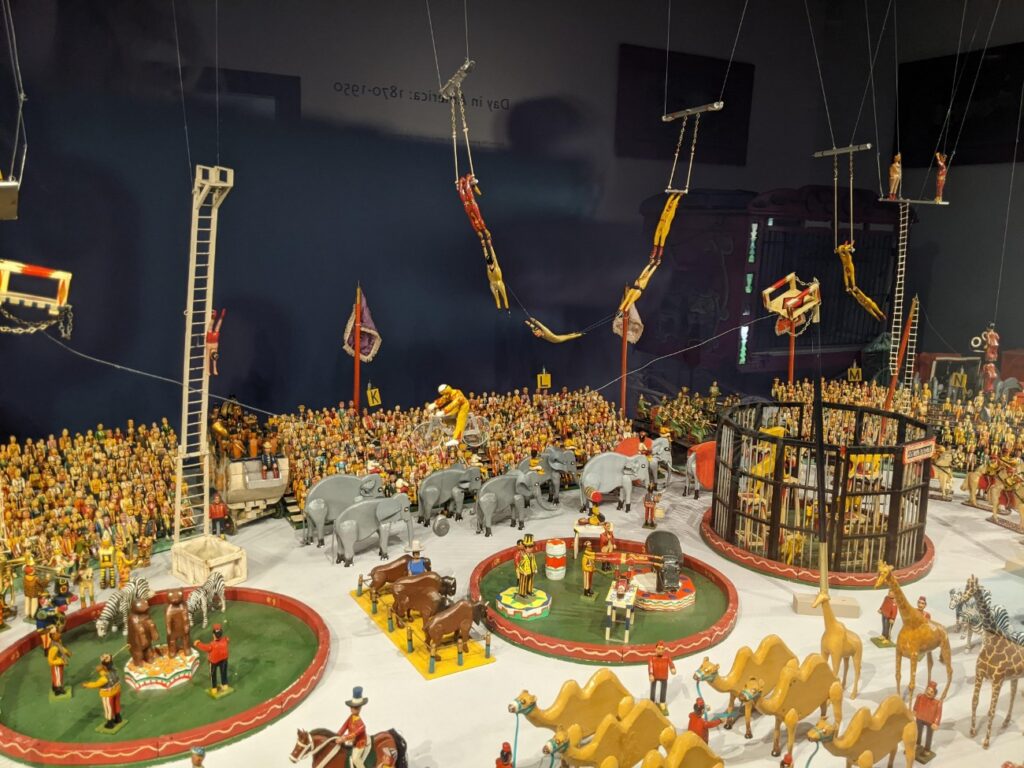
Railroad Station
To the left of the Circus Building is a full-sized Railroad Station. The train station is the original Shelburne station from 1890 and looks so picturesque! Like something straight out of Anne of Green Gables, with all the luggage carts and maps on the walls. There’s an old brass wood stove in the waiting room and everything.
You can find single-room bathrooms at the Railroad Station. Alongside is the Grand Isle rail car, which was closed during my visit for renovations. I imagine you can walk through it once it’s done. A separate freight shed holds a replica steam engine.
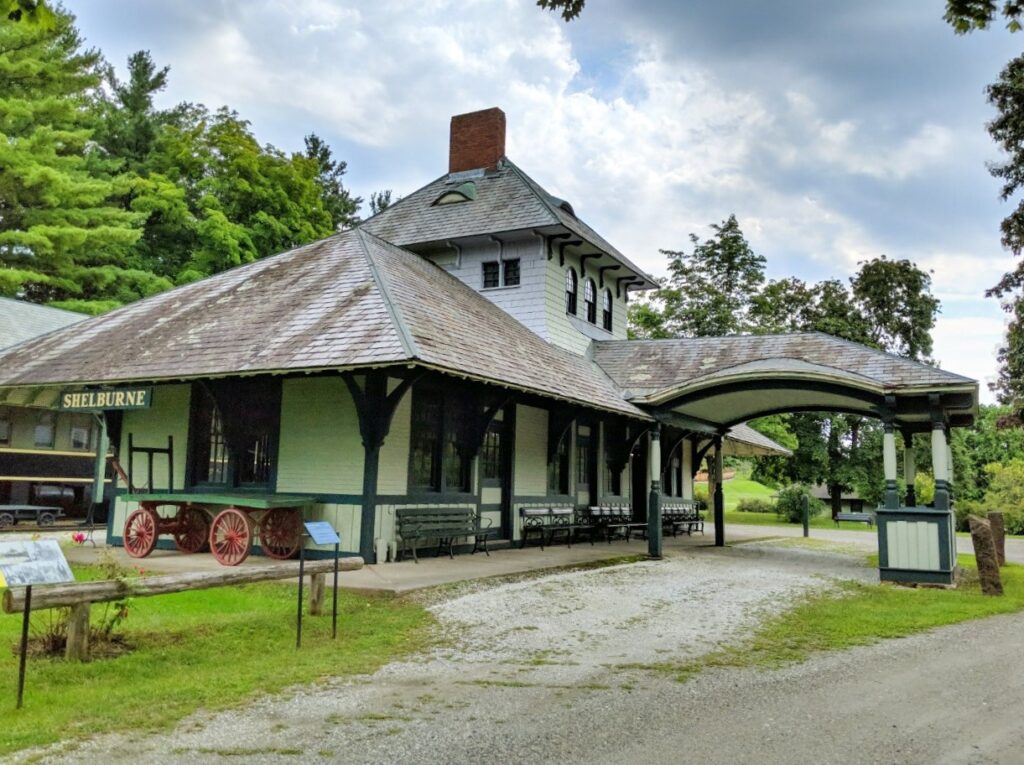
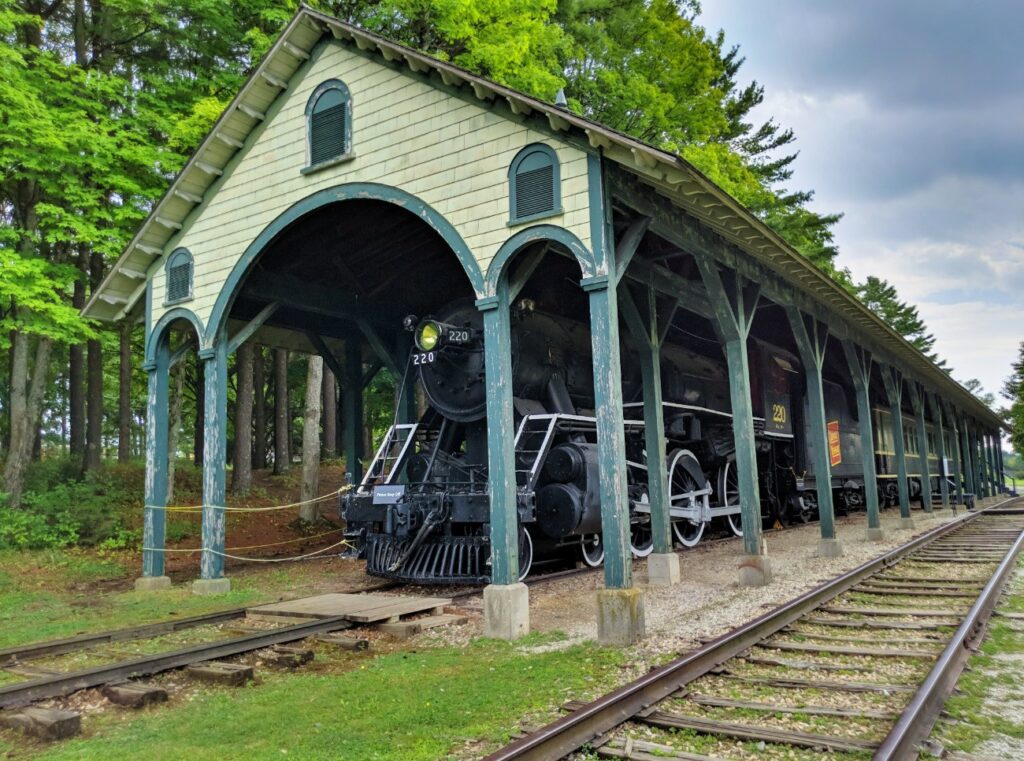
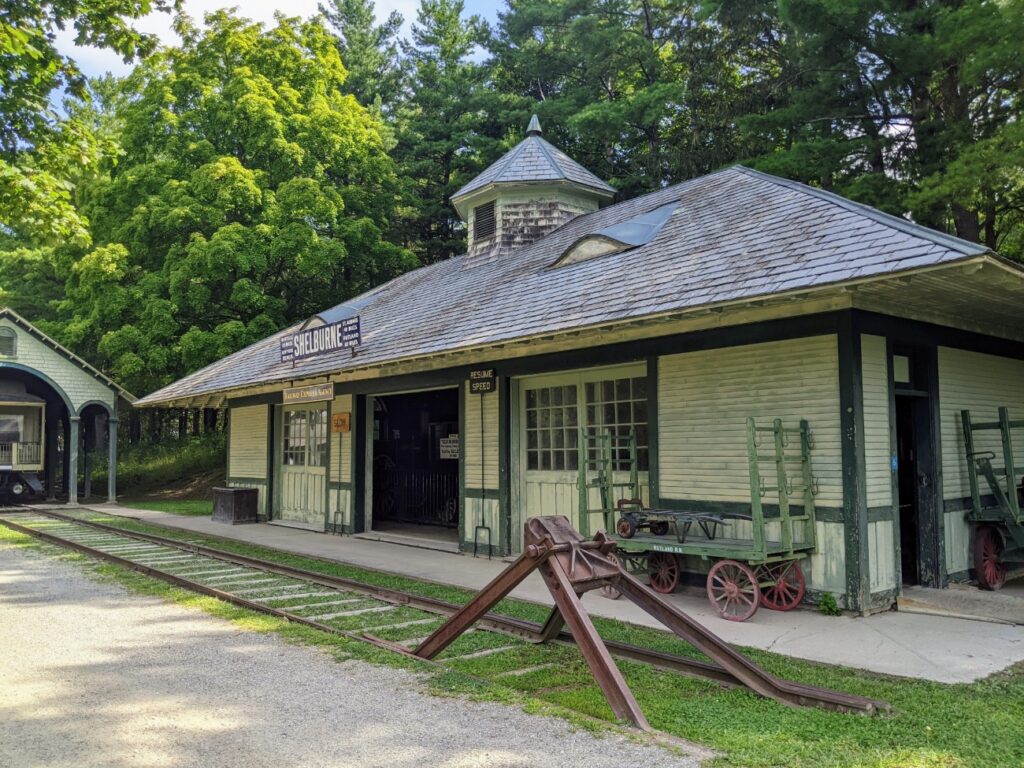
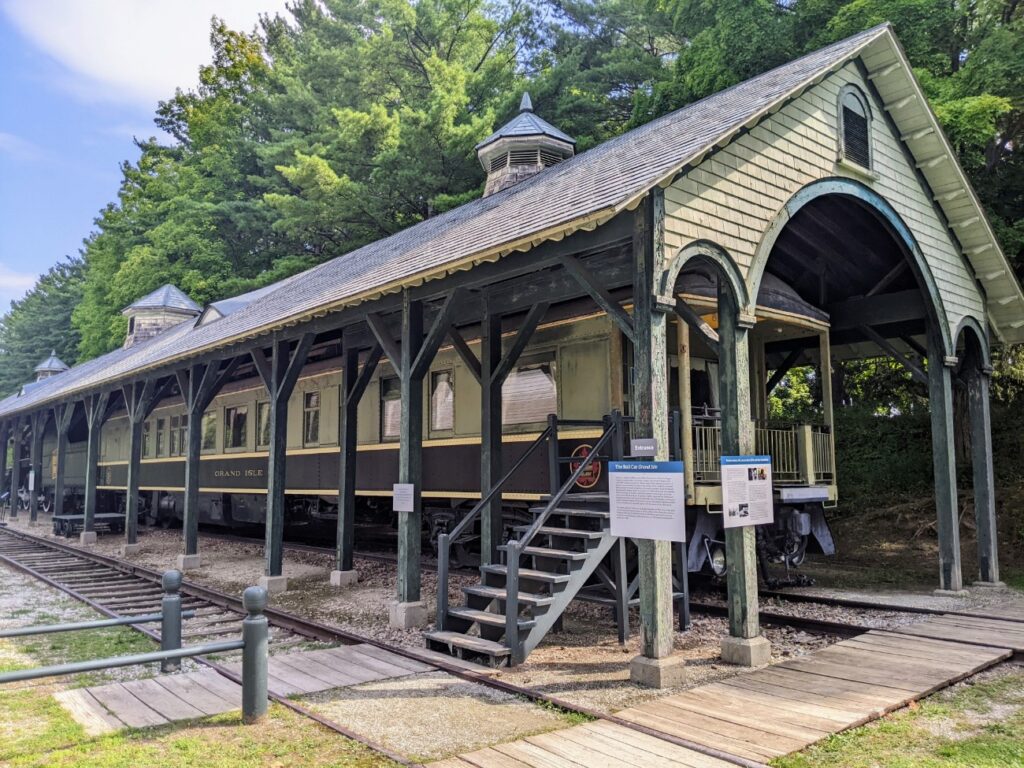
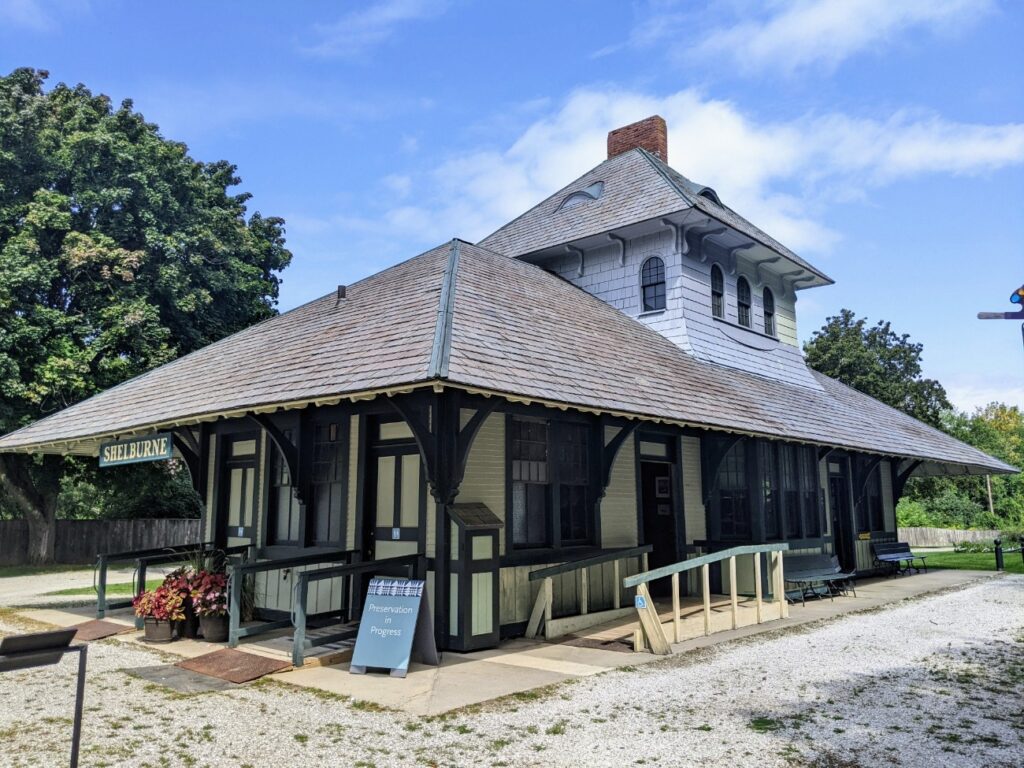
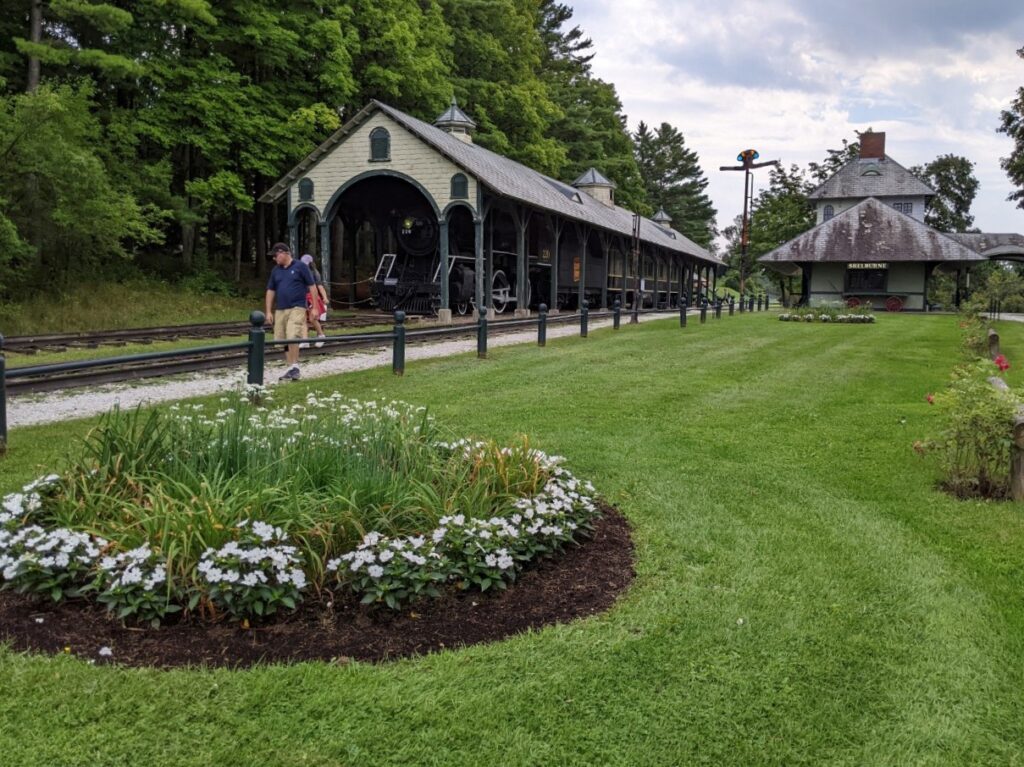
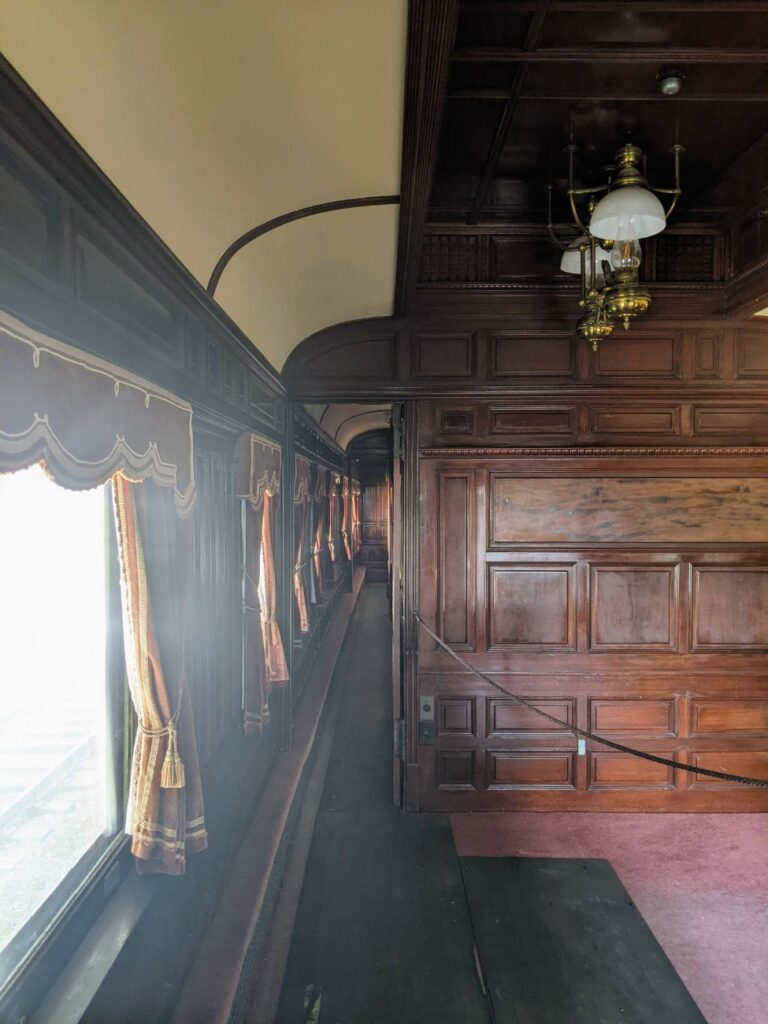
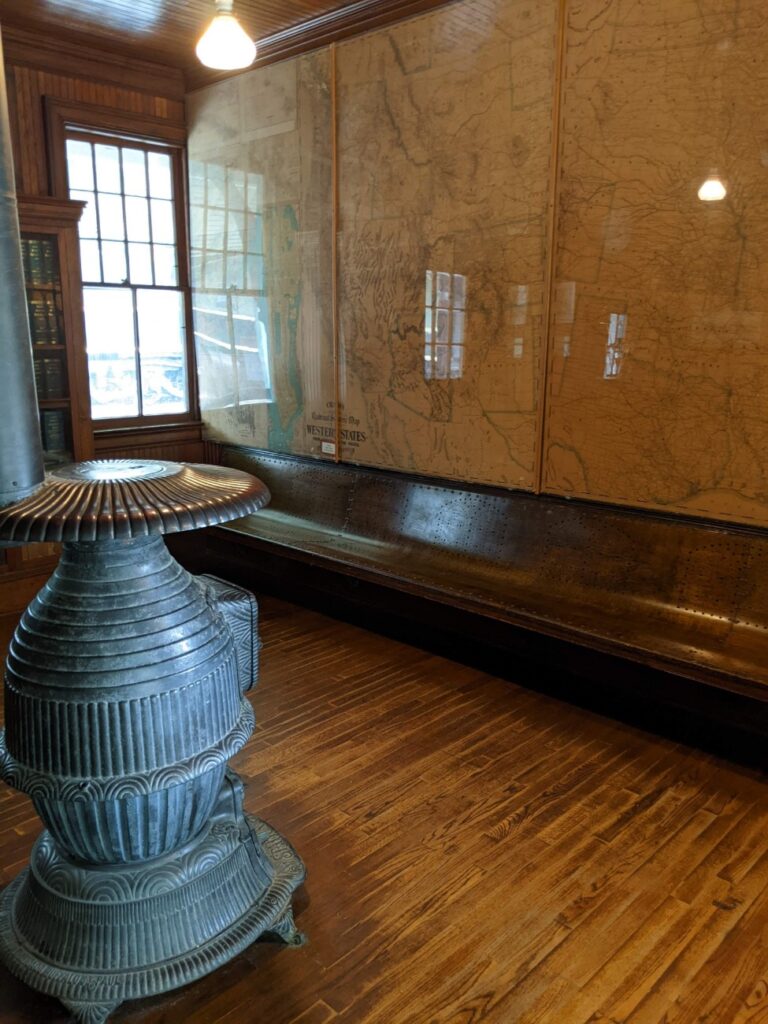
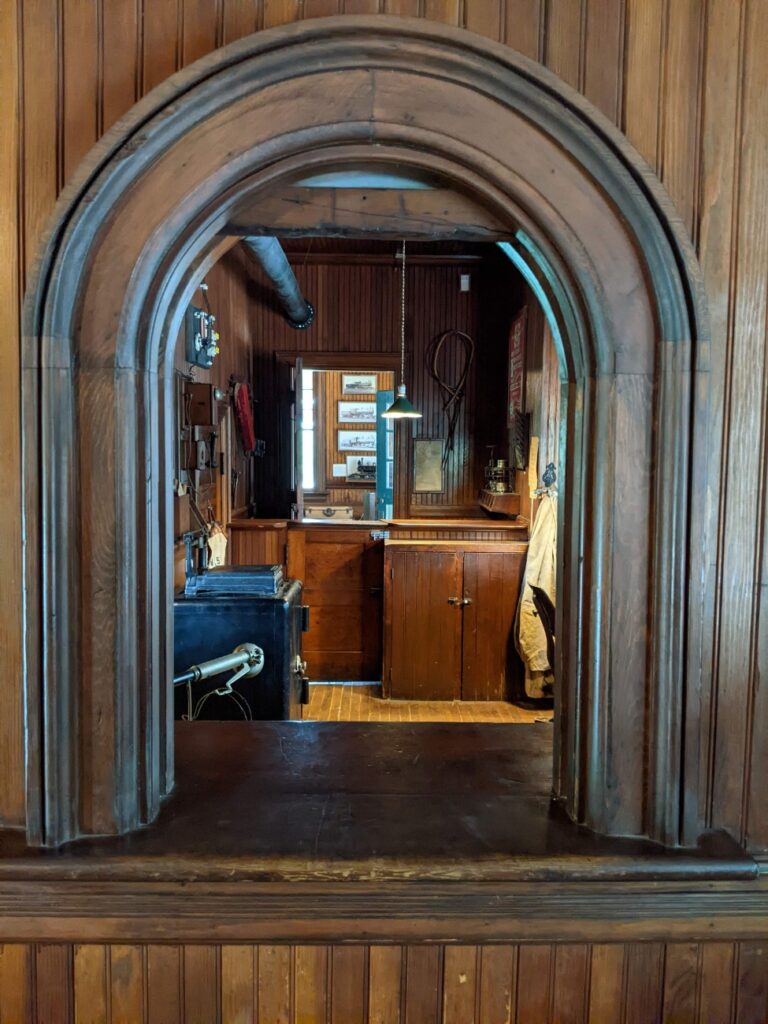
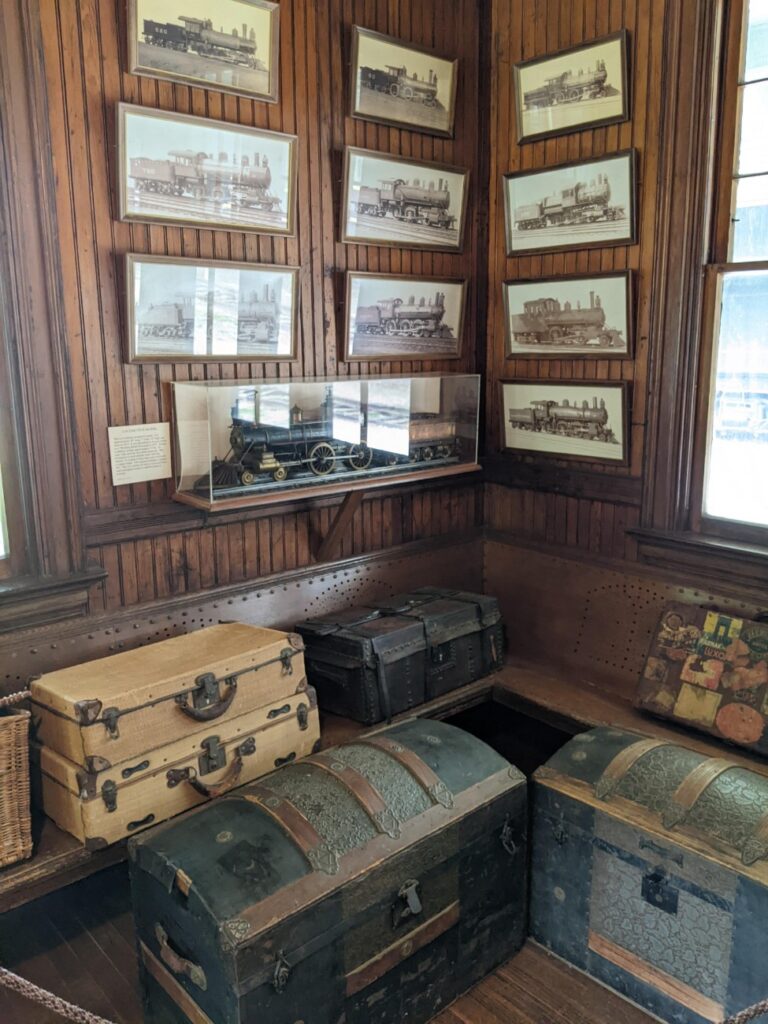
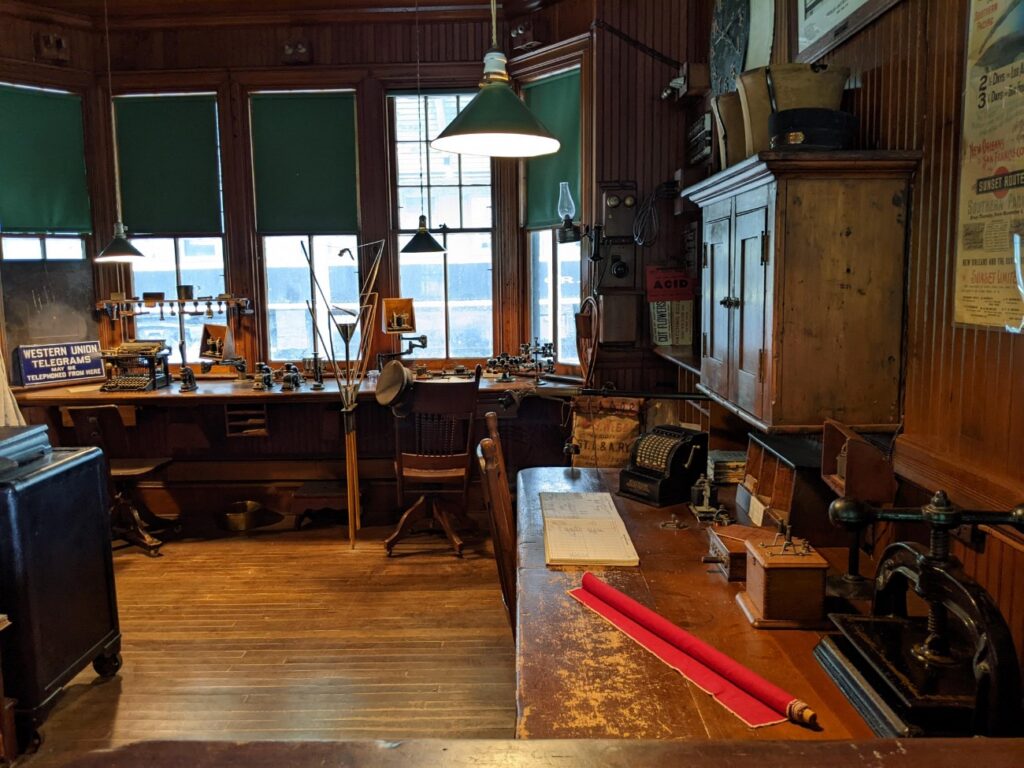
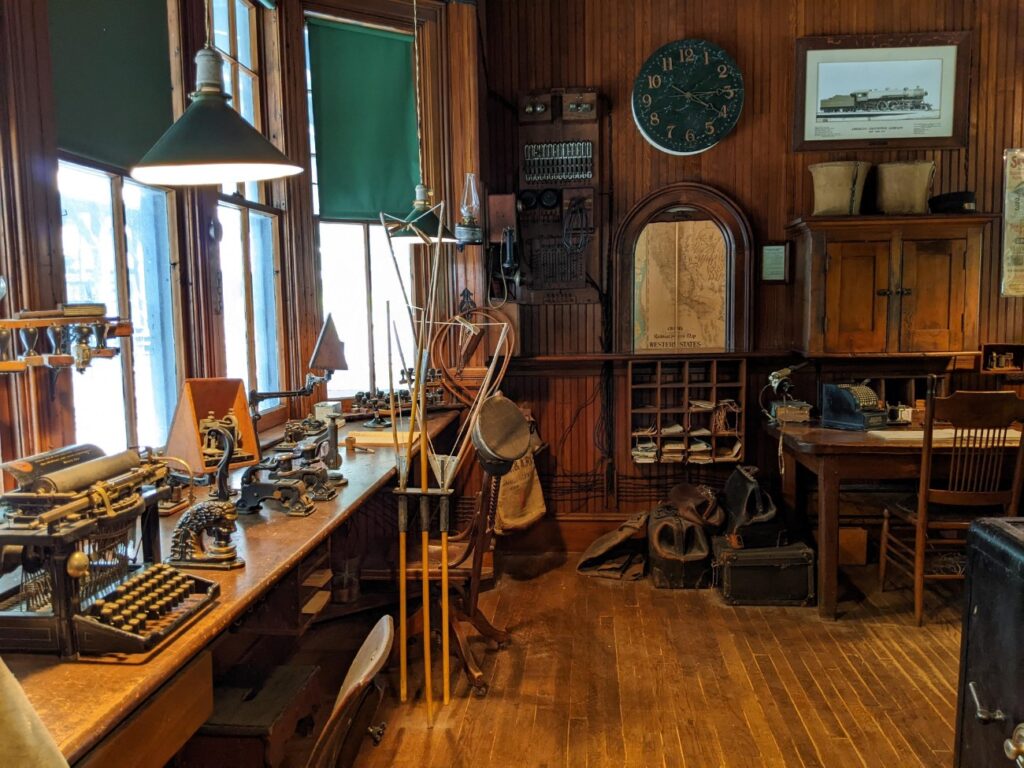
Beach Lodge
Next to the Railroad Station and straight ahead from the Circus Building is the Beach Lodge & Gallery. The two log cabins are tucked into a stand of trees native to Vermont. The first, the Beach Gallery, is surprisingly modern inside and holds a collection of Vermont-made firearms. Some of them are really beautiful!
The Beach Lodge next door looks more log-cabiny inside and holds a collection of taxidermied animals that are (I think) native to North America. An upper room plays a video about the building of the cabin. This one wasn’t relocated, it was built on-site around 1960, just prior to Mrs. Webb’s death.
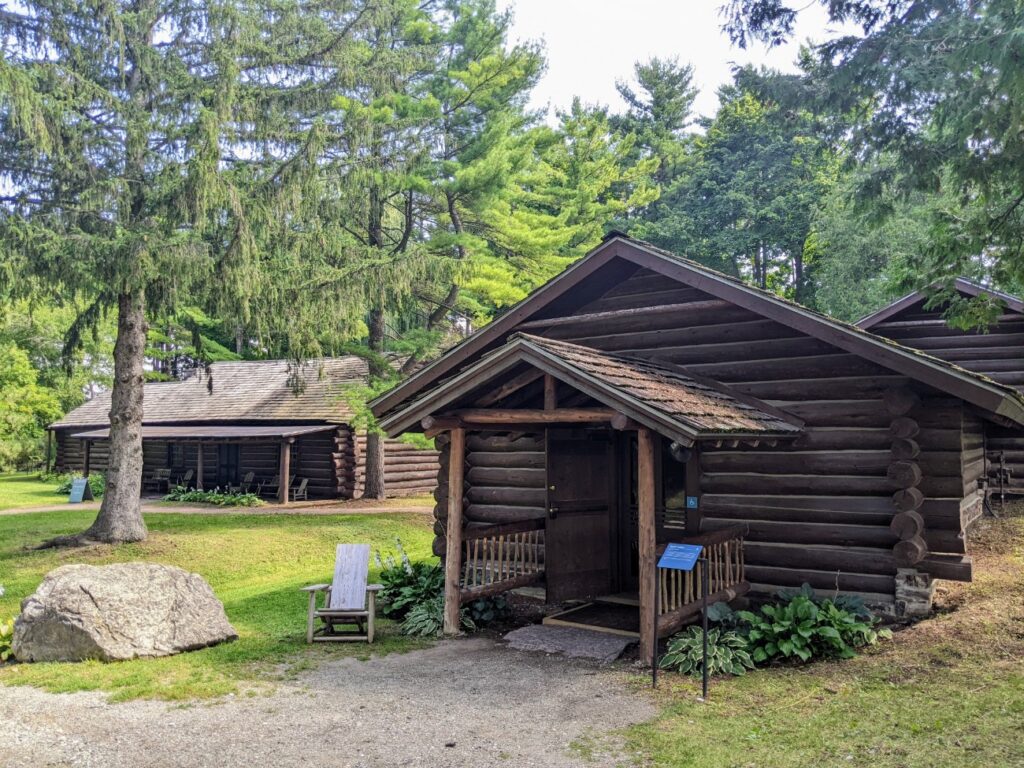
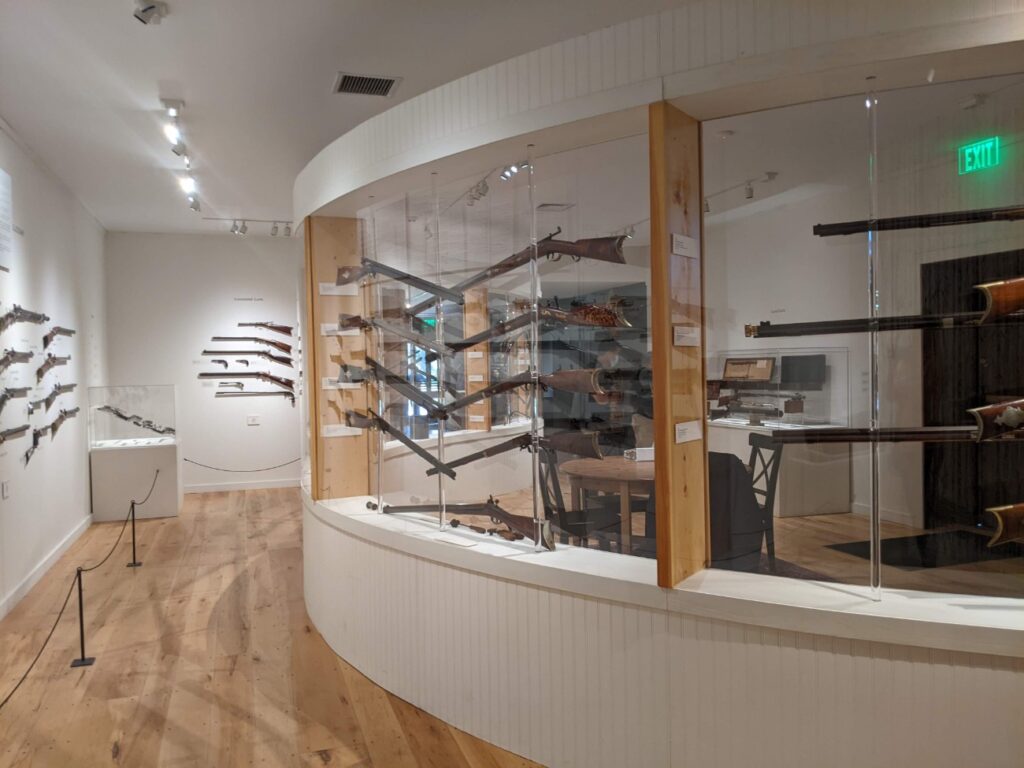
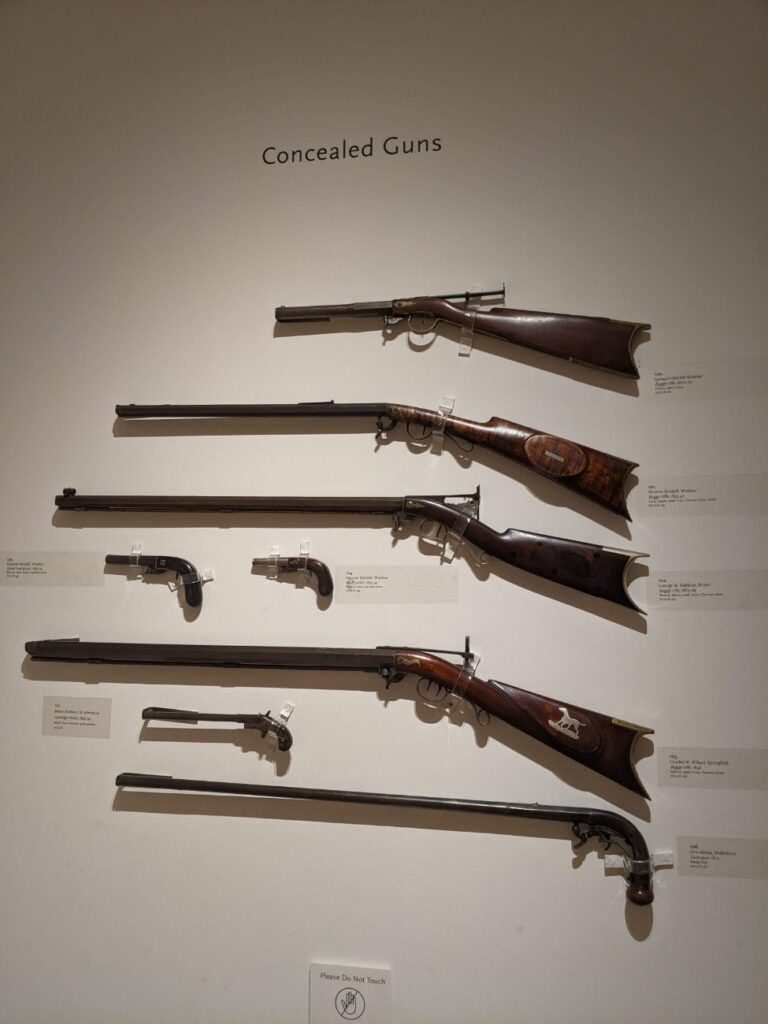
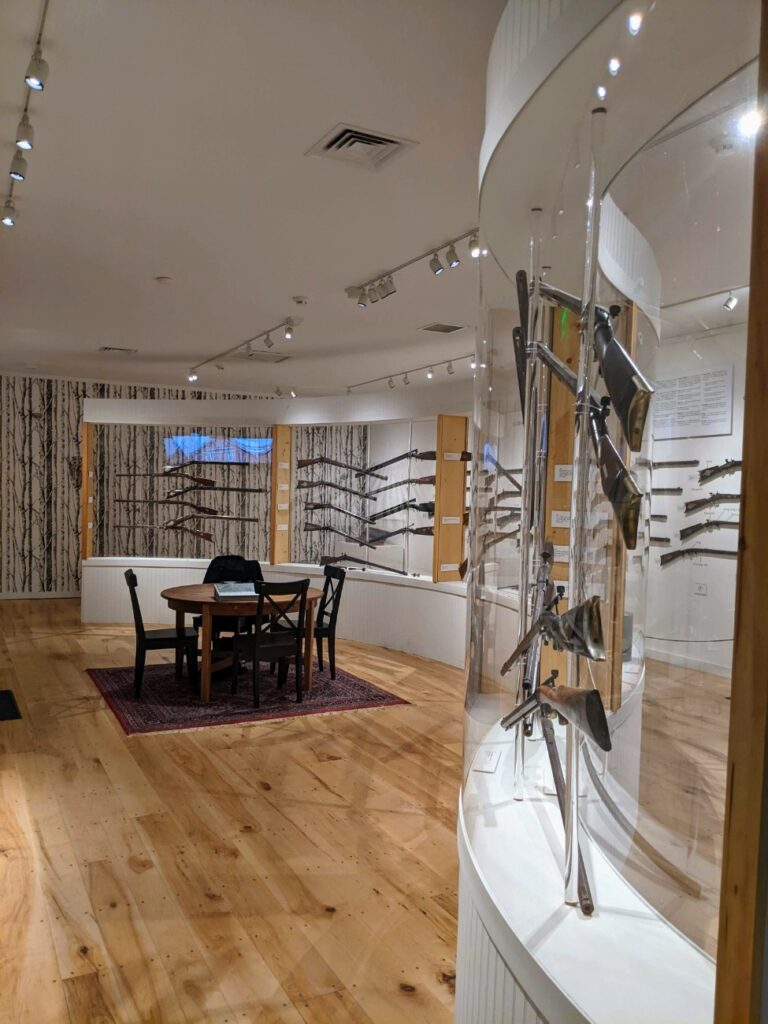
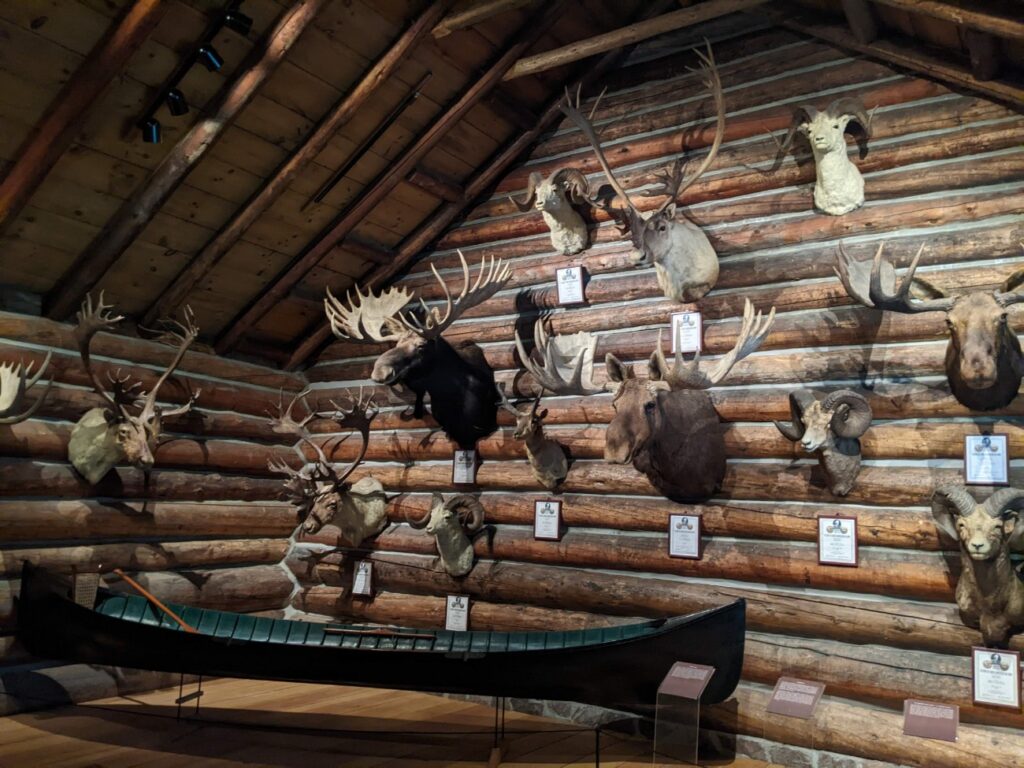
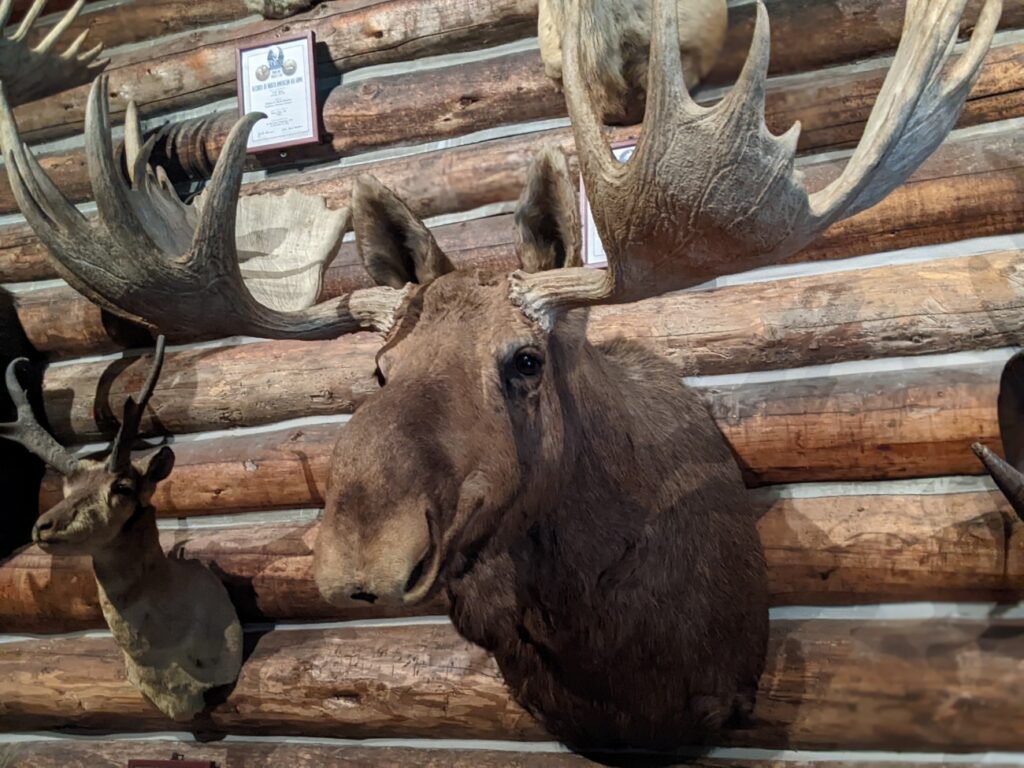
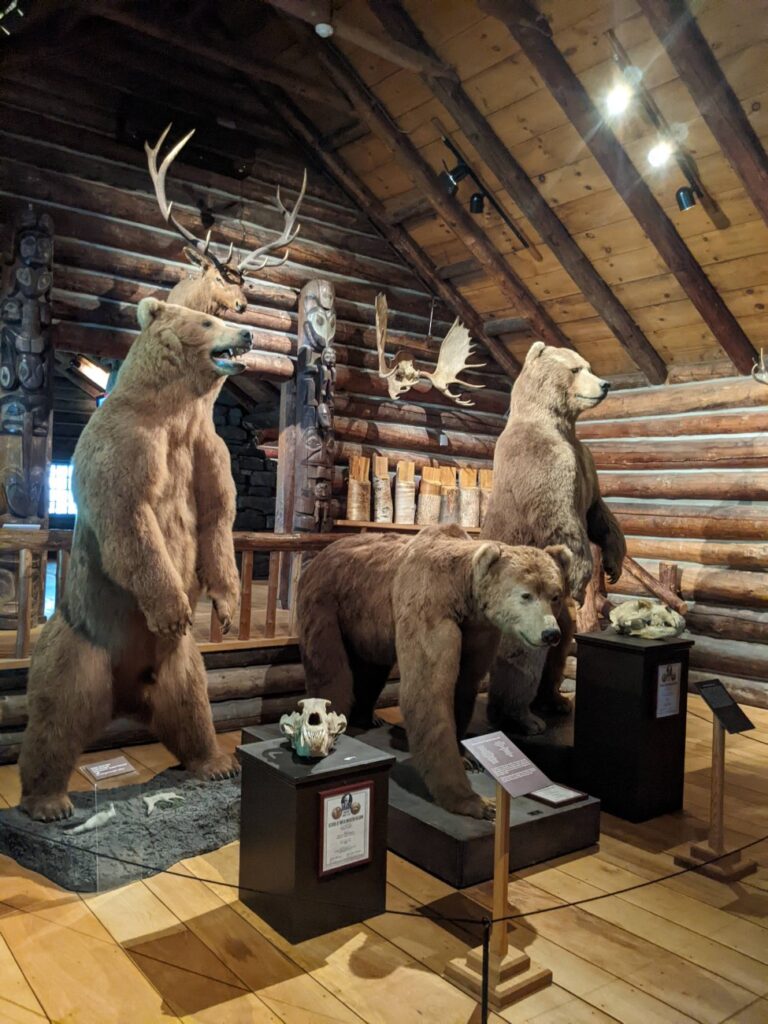
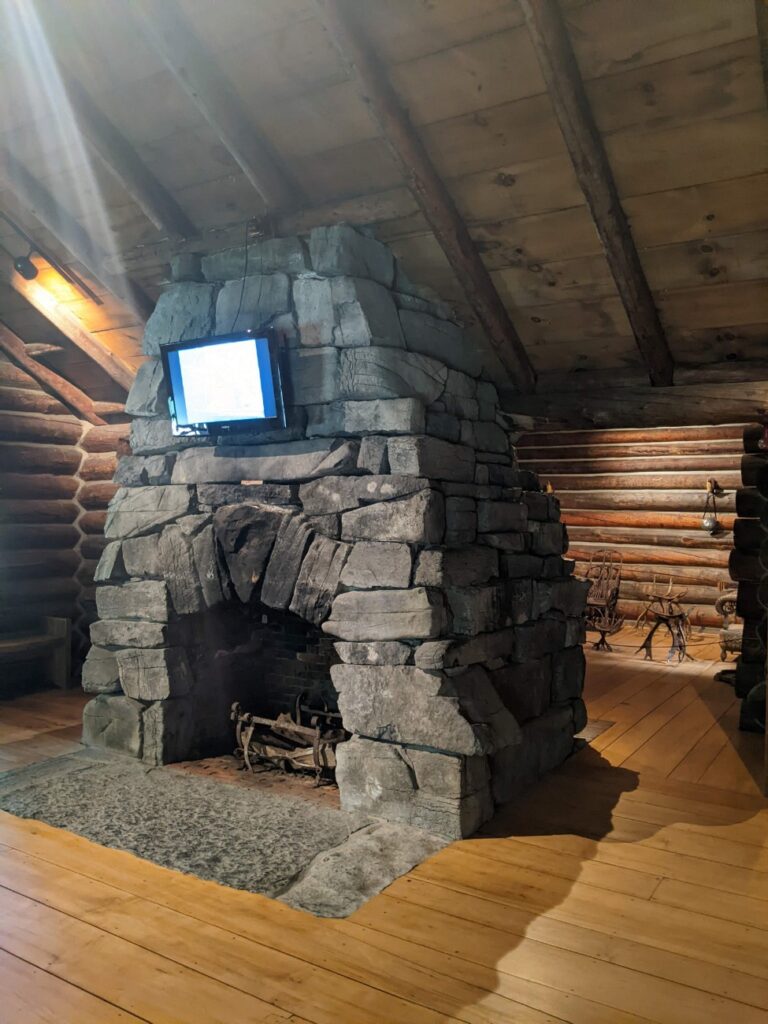
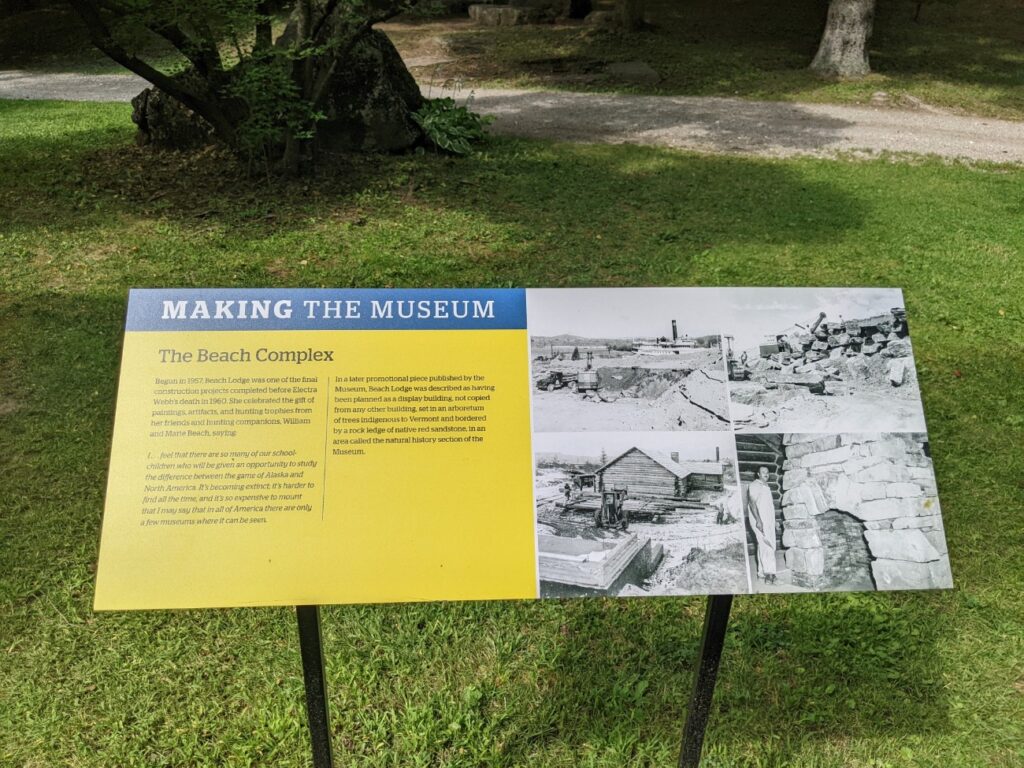
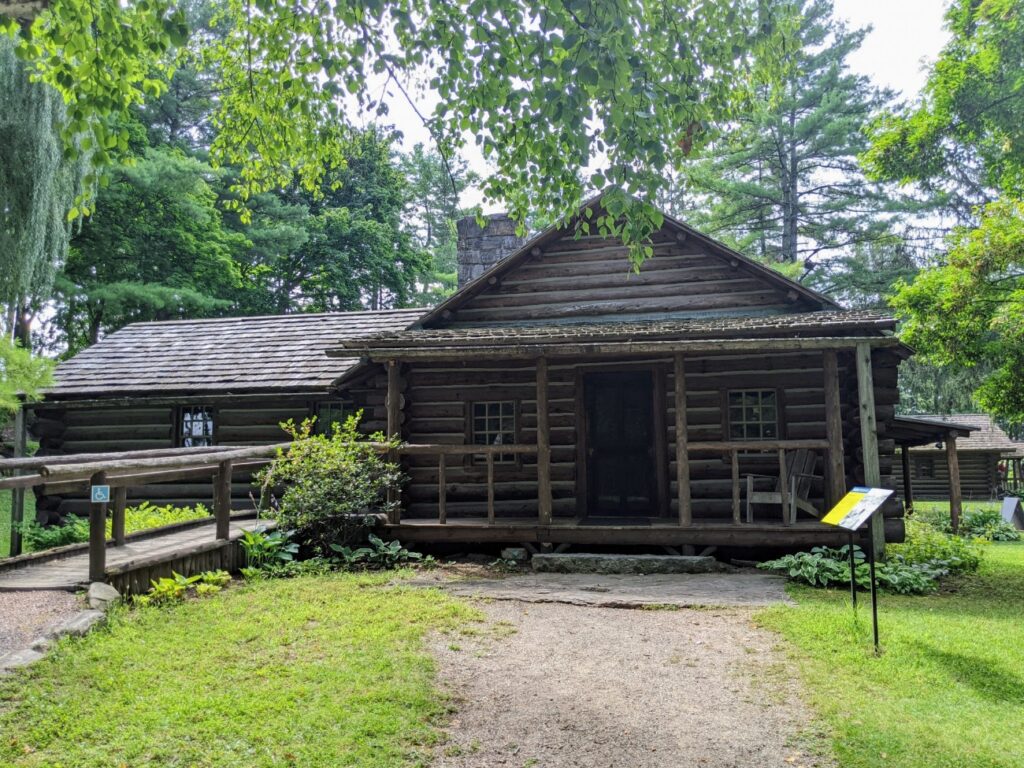
Ticonderoga
As you walk around the stand of trees behind the Beach Lodge, you suddenly come face-to-, er, prow of a 1906 220-foot sidewheel steamboat called the Ticonderoga. The Ti used to provide ferry service on nearby Lake Champlain, between ports on the Vermont and New York sides. You could also stay overnight and get a fancy dinner onboard, up until 1953, when the ship was put out of service. Now, it sits in a stone-lined gully and restored to its glory, circa 1923. The sight of the Ticonderoga from the street is what pulled me into the Shelburne Museum in the first place. Driving by, I thought, “Is that a steamship over there??”
Now, you can board the Ticonderoga from either side and even take daily tours, which I highly recommend! The tour is the only way to see certain compartments, particularly the behind-the-scenes parts like the kitchen, where the crew sleeps, and some of the mechanical rooms. Definitely set aside a fair amount of time to explore the whole ship either way. Tours are offered at 11:30 and 2:30 daily, from mid-May to mid-October. Allow 30-40 minutes.
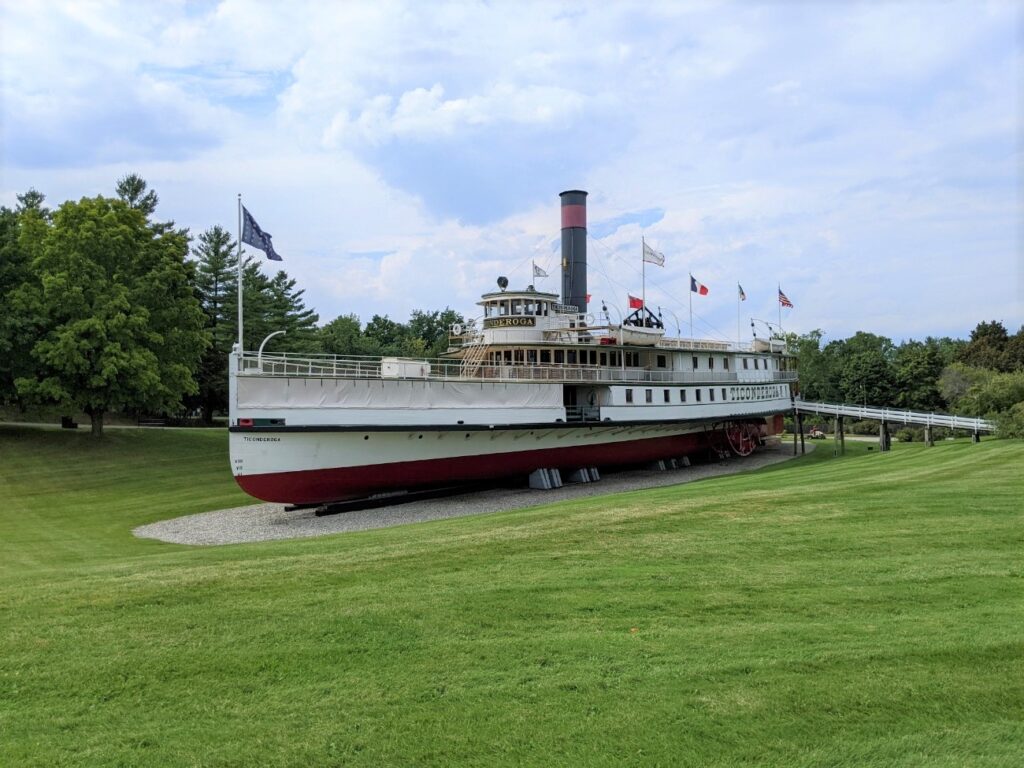
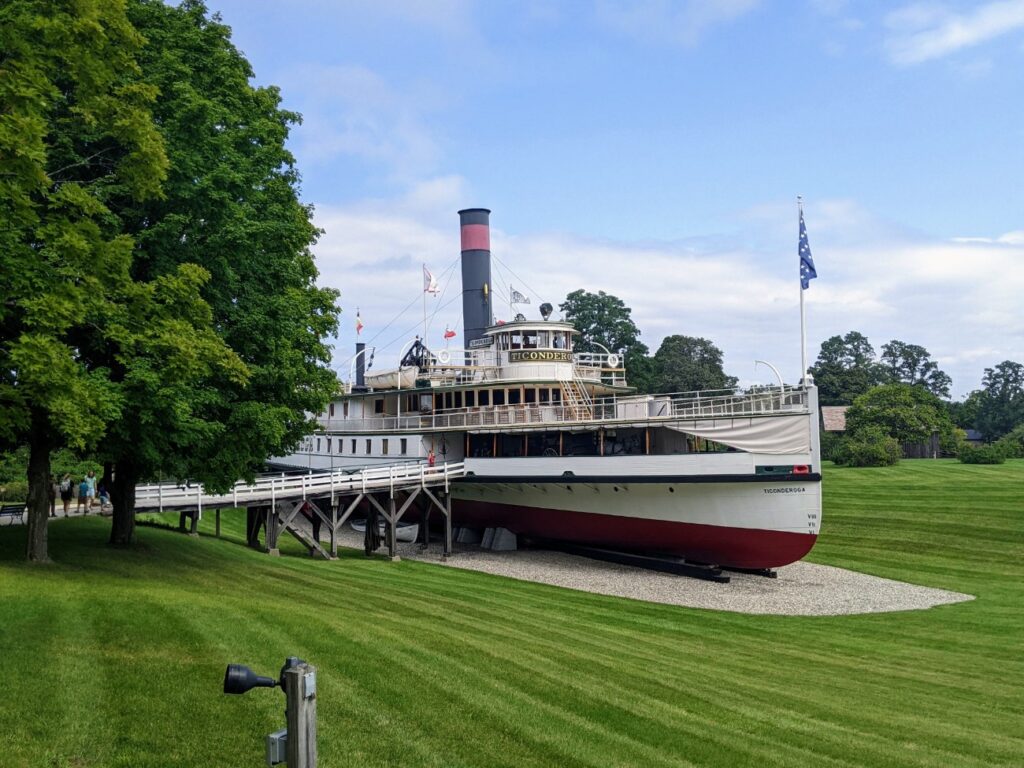
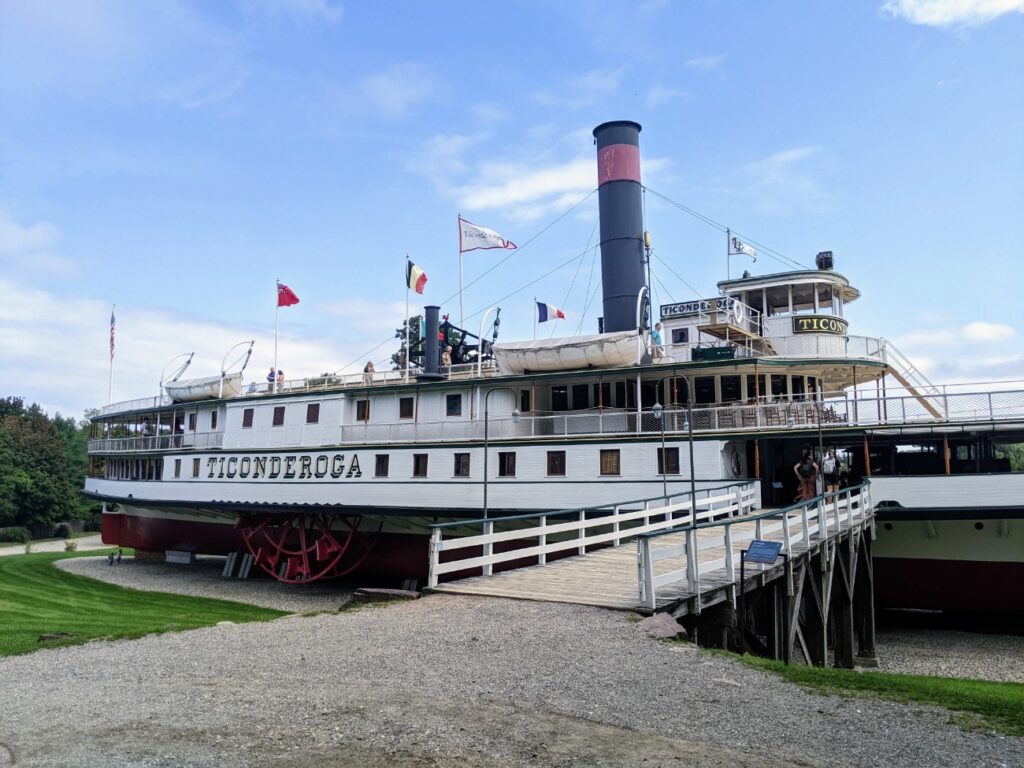

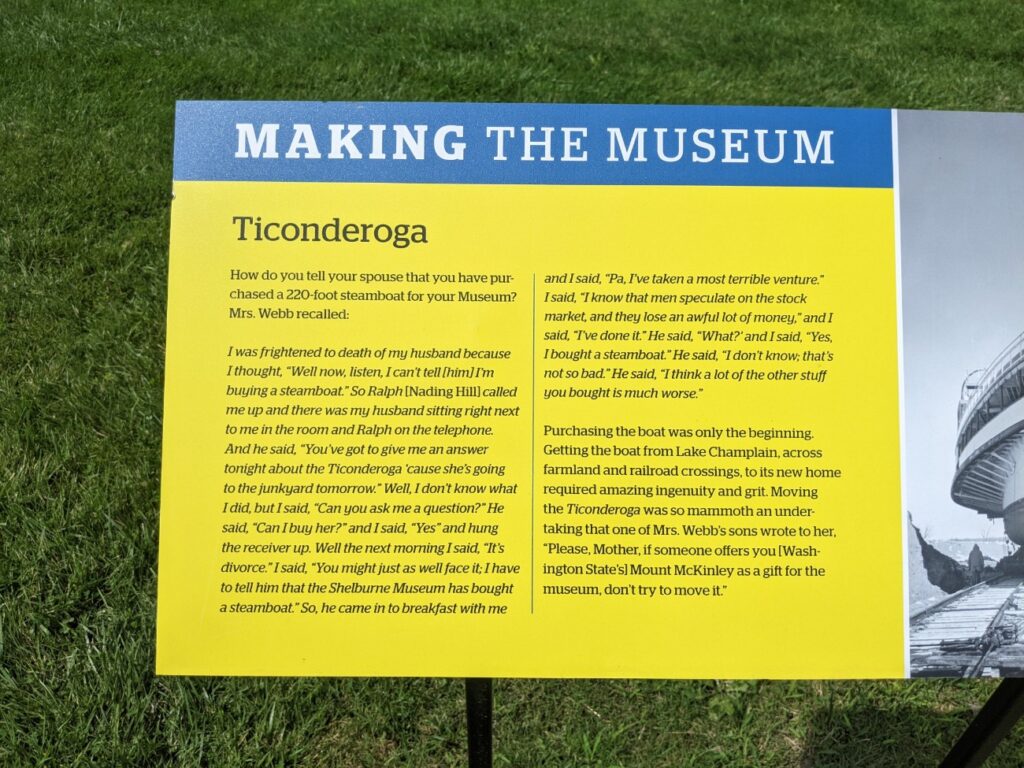
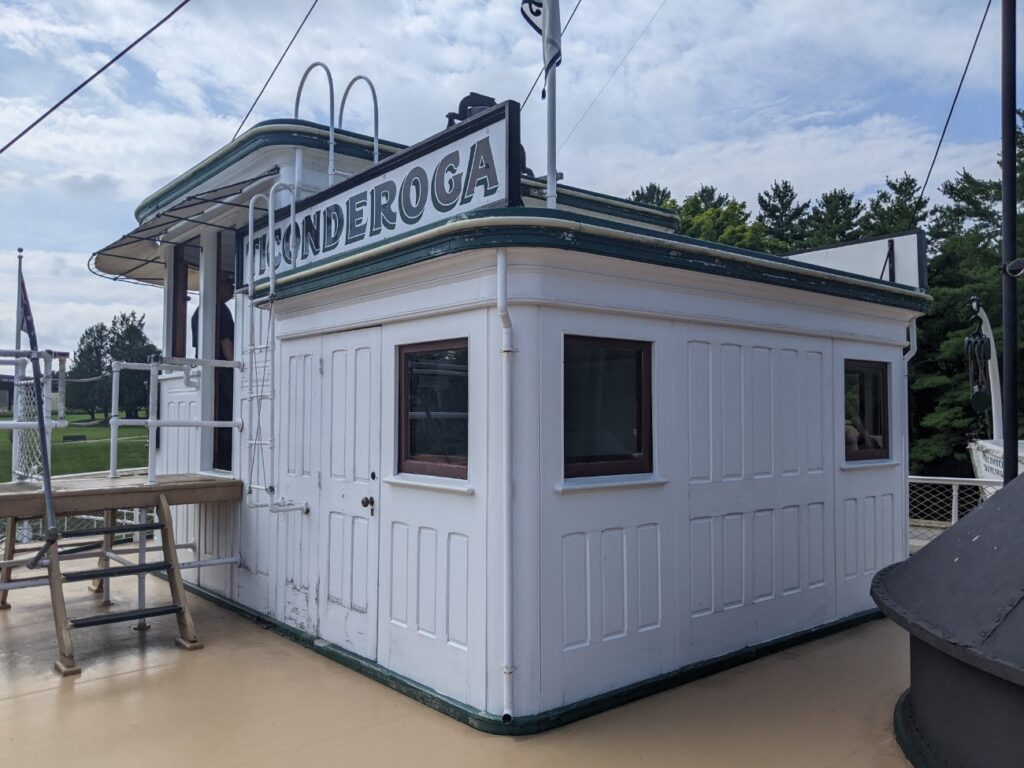
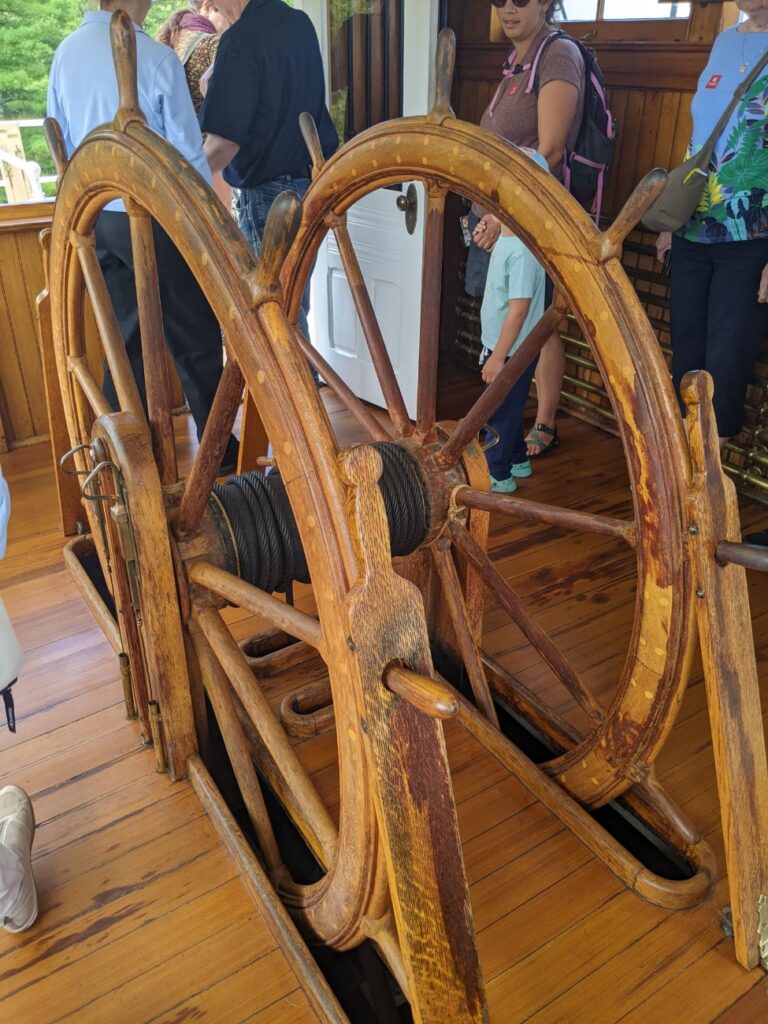
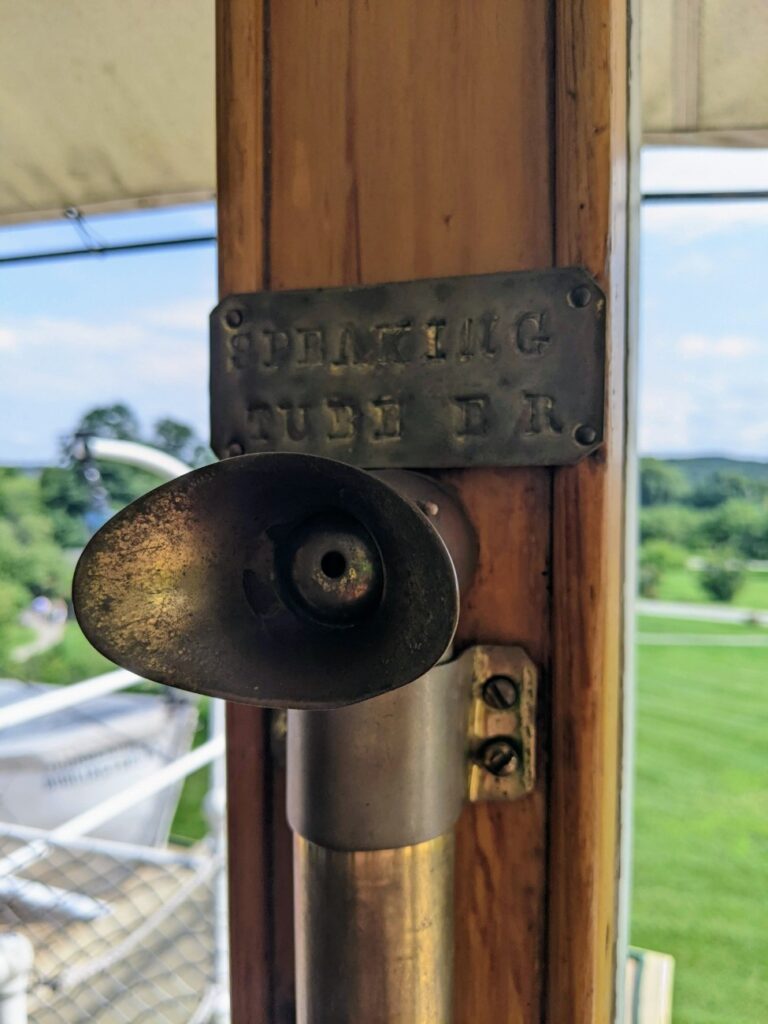
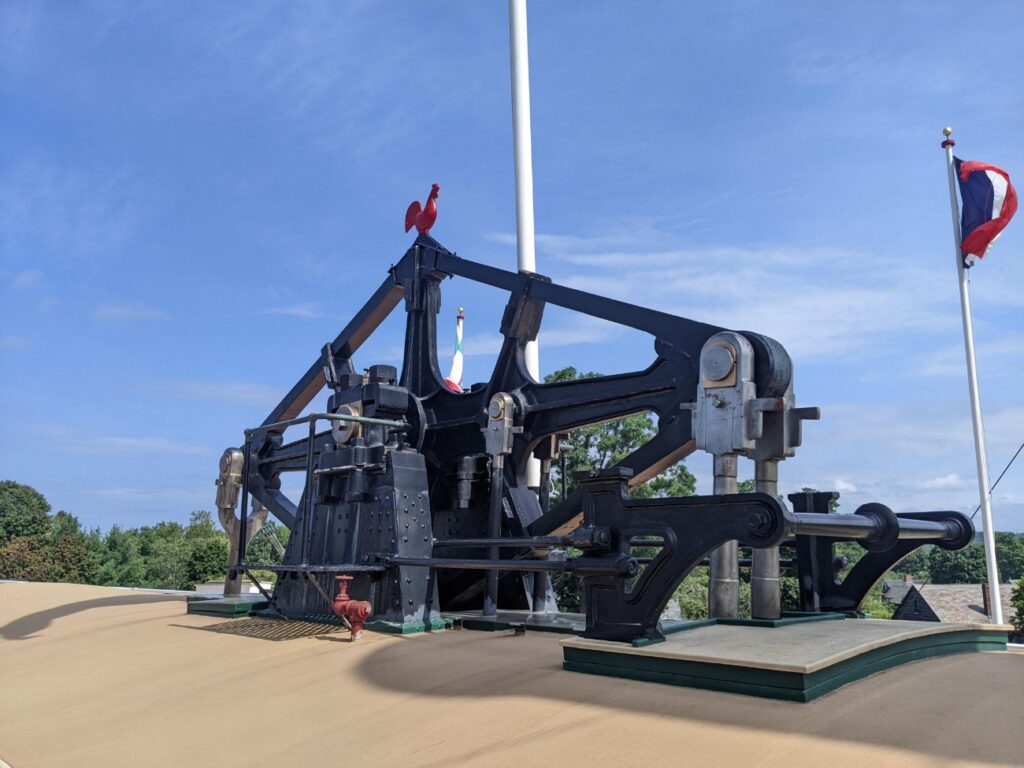
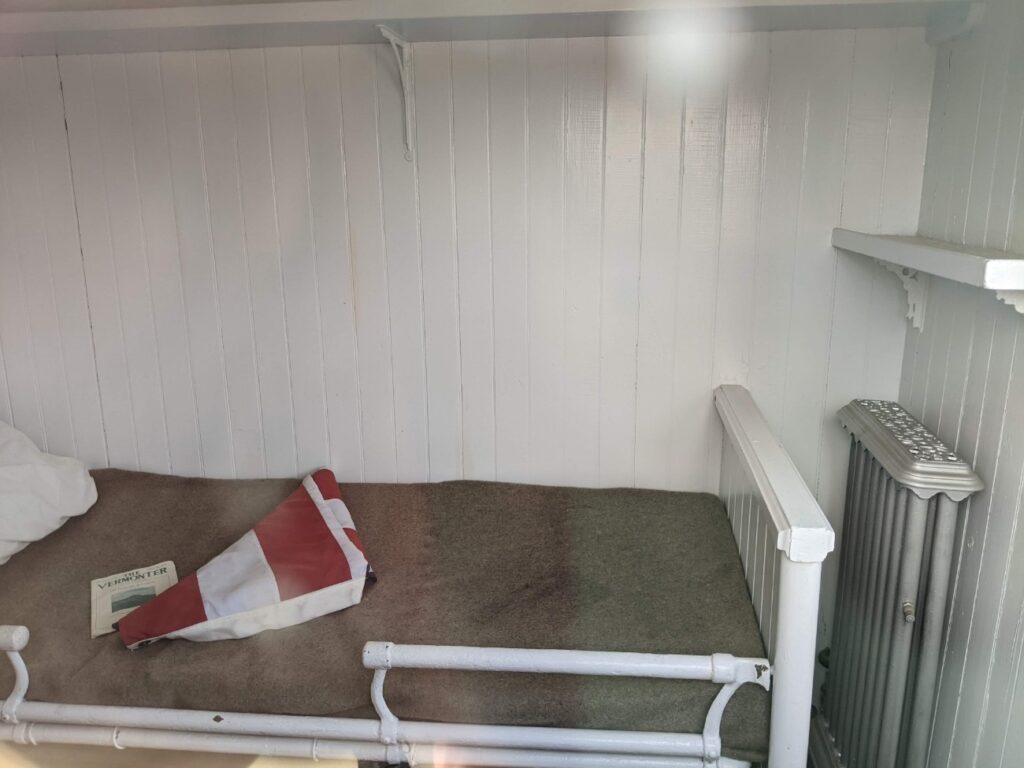
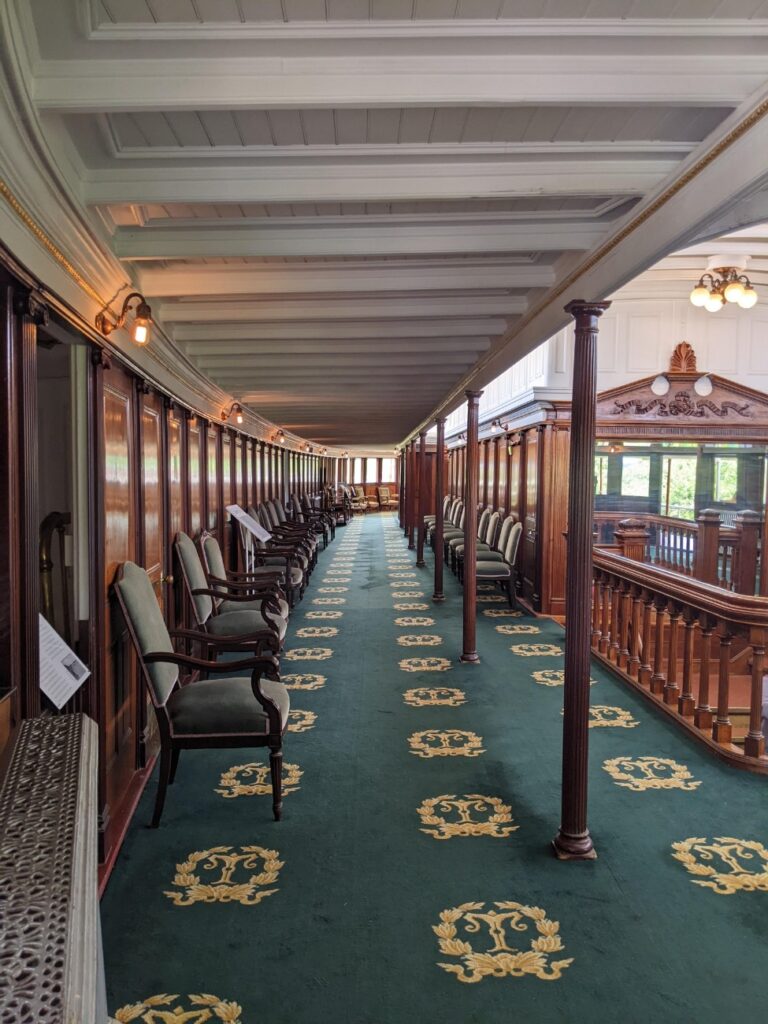
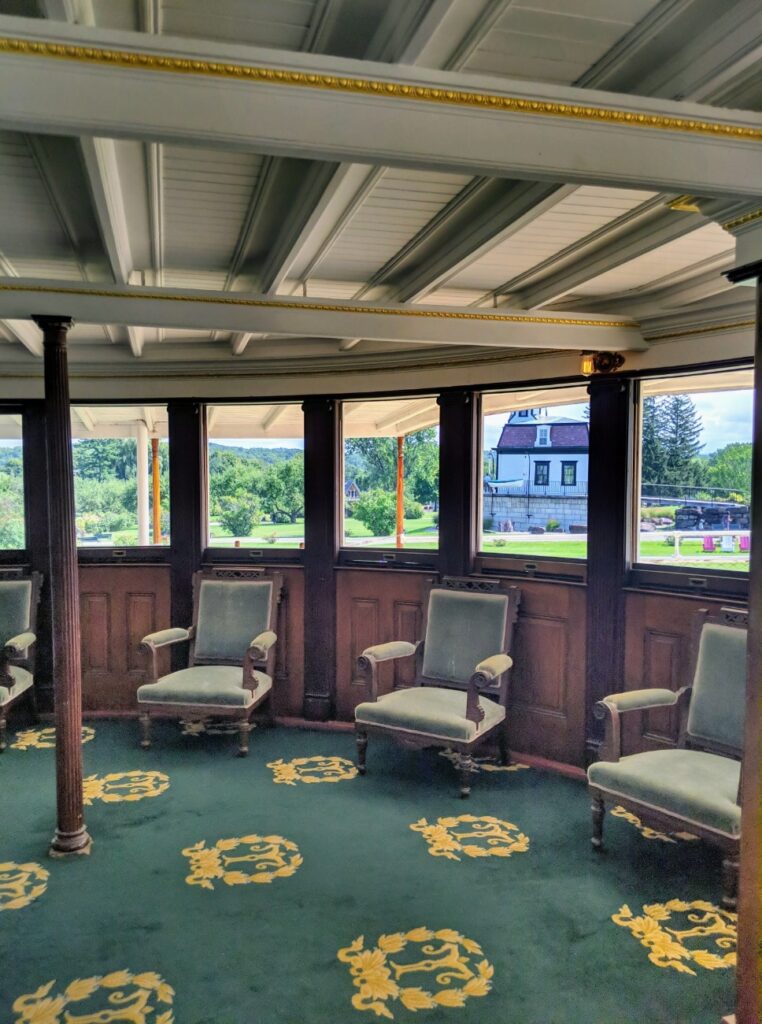
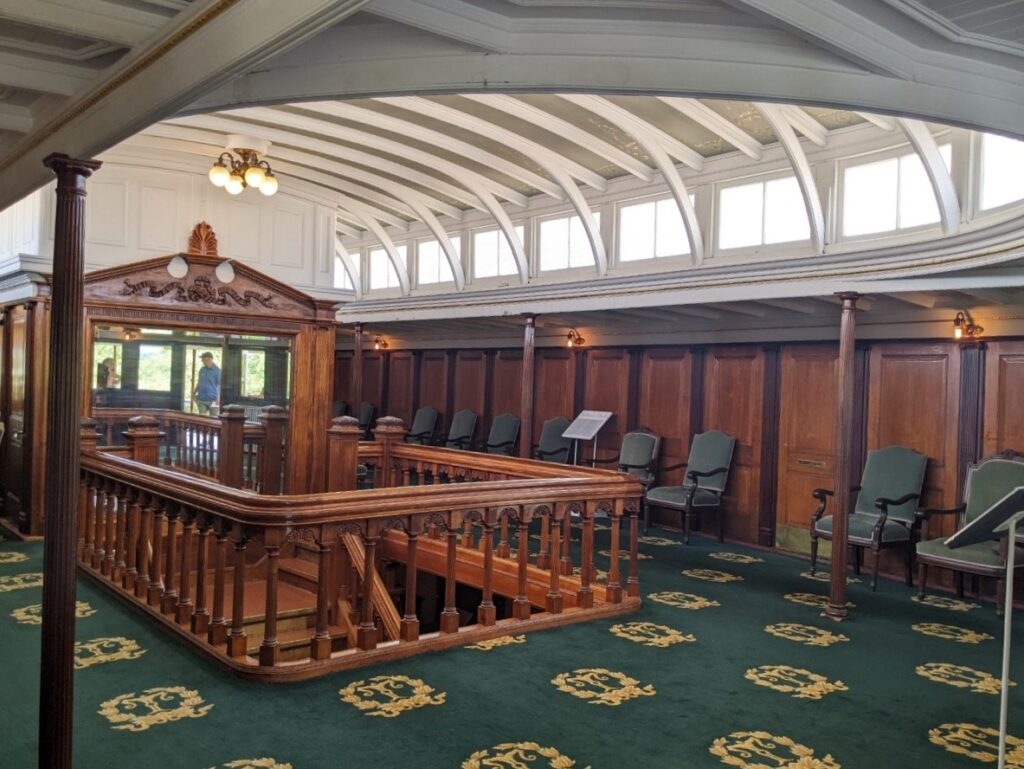
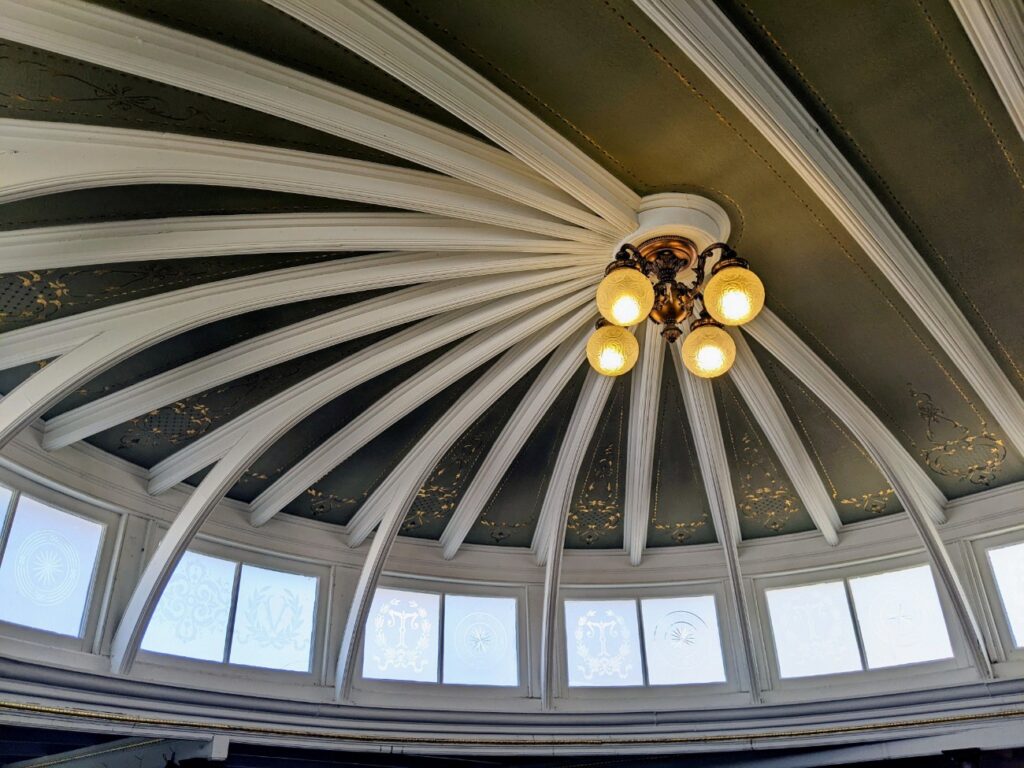
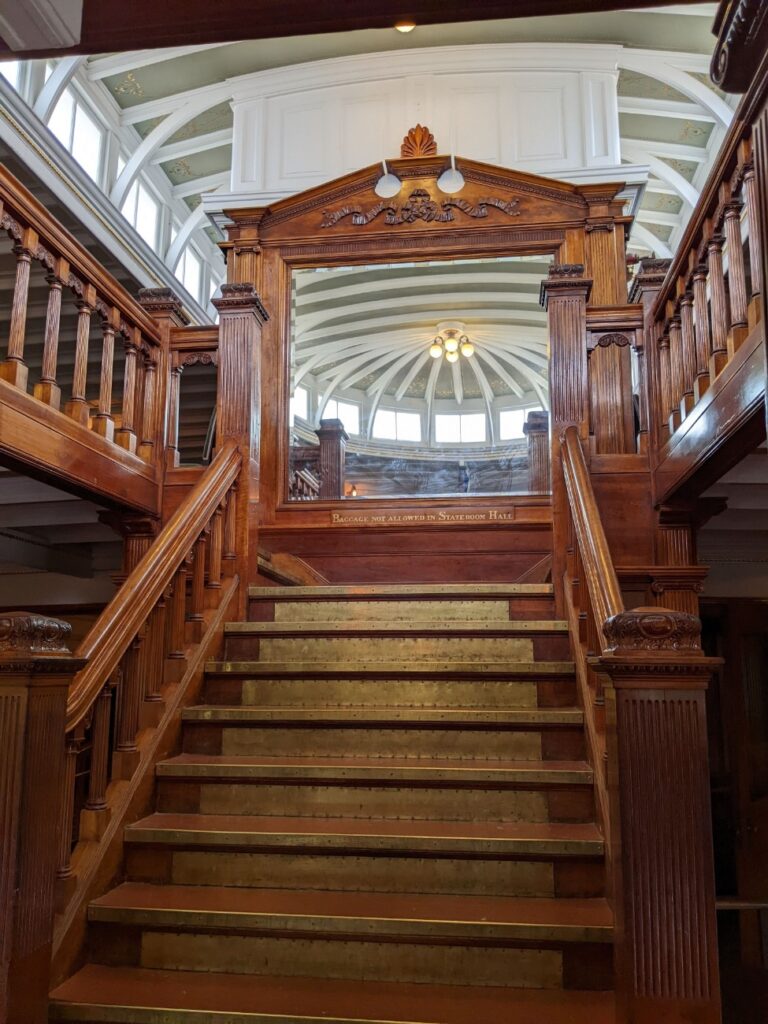
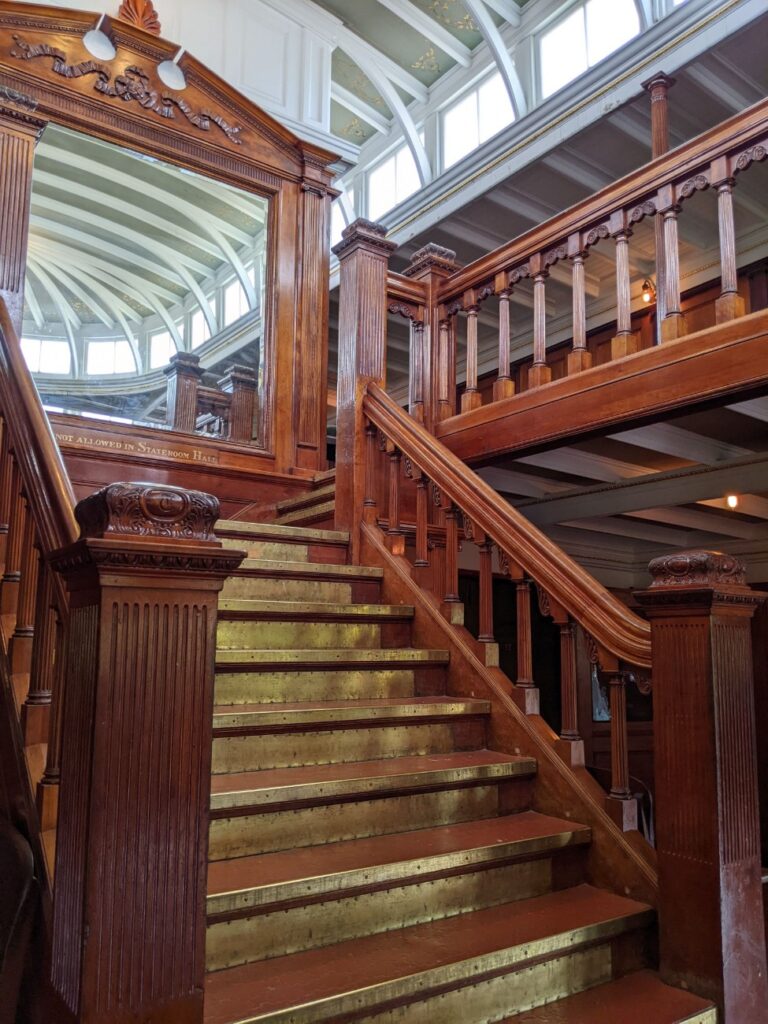
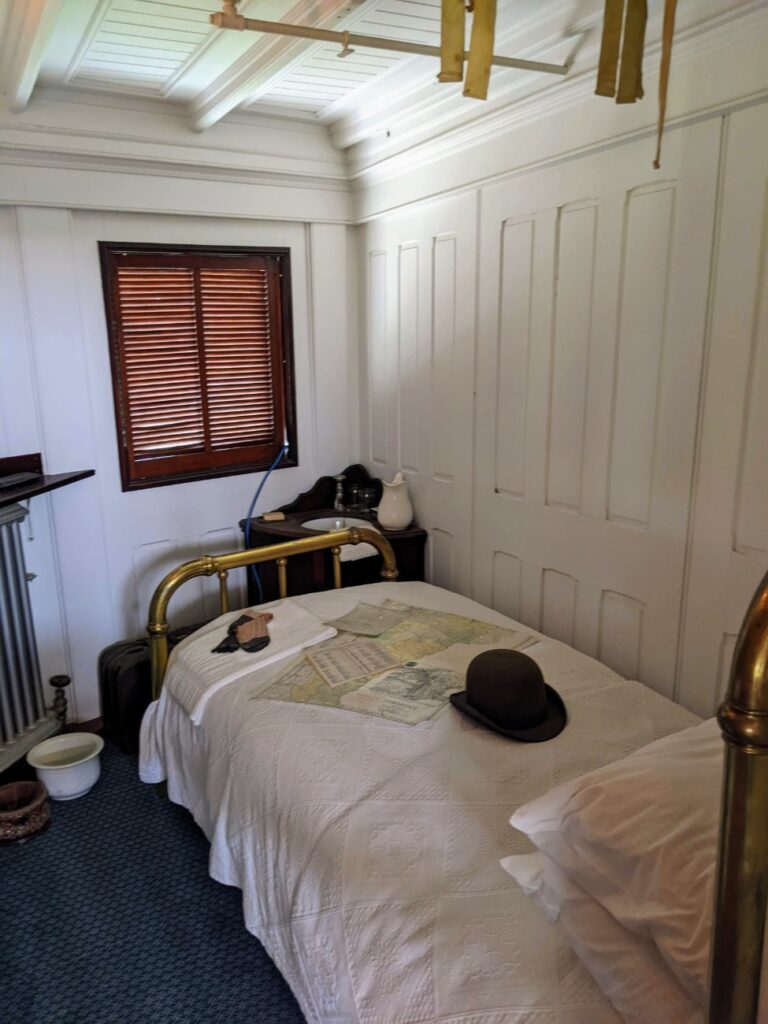
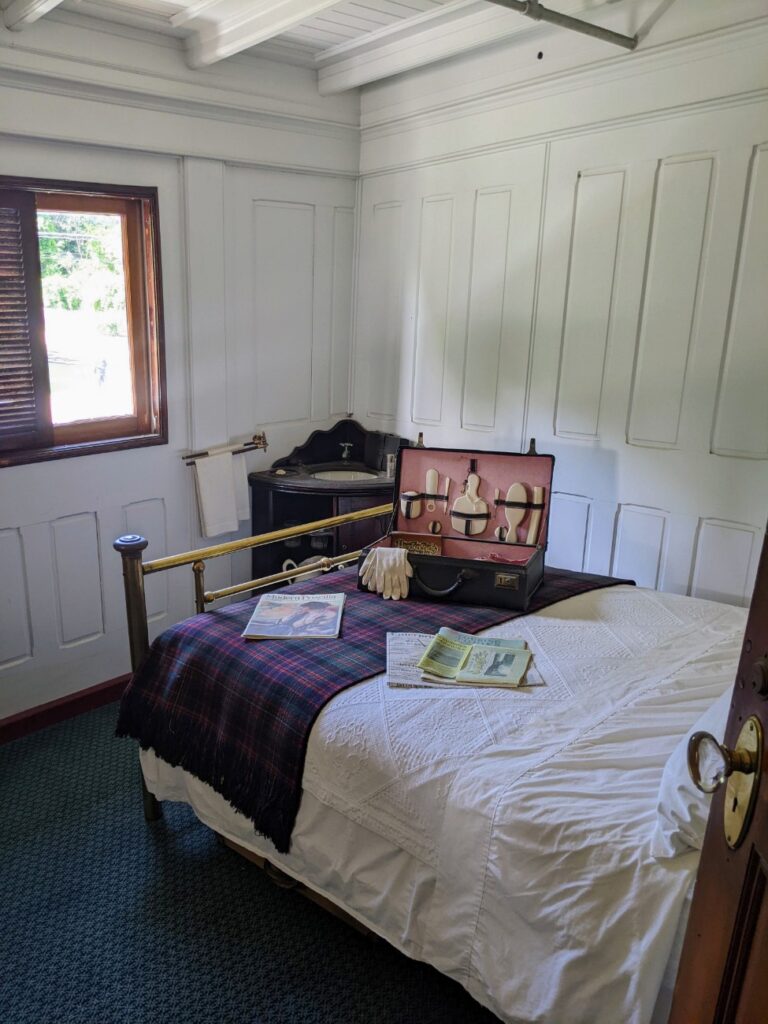
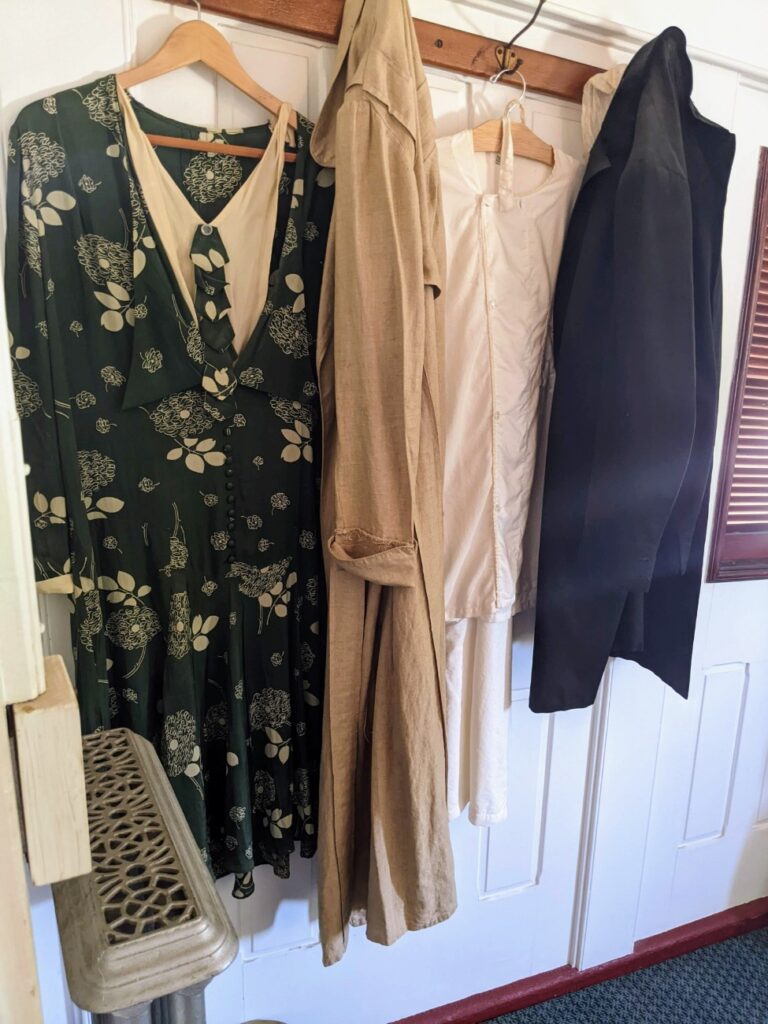
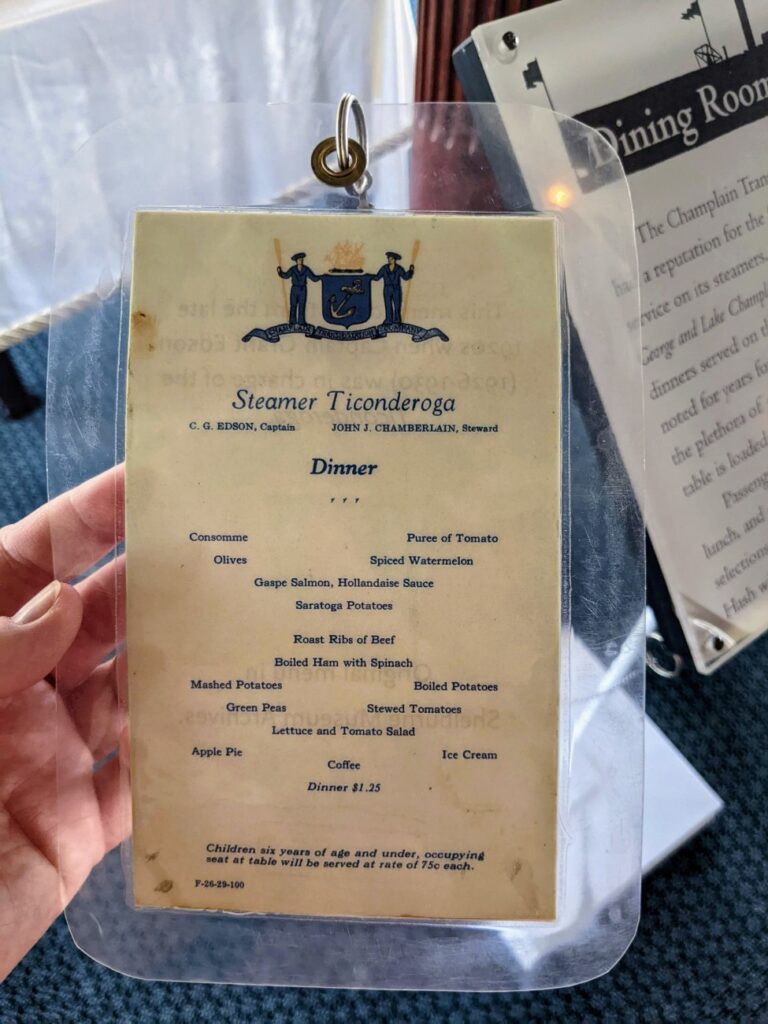
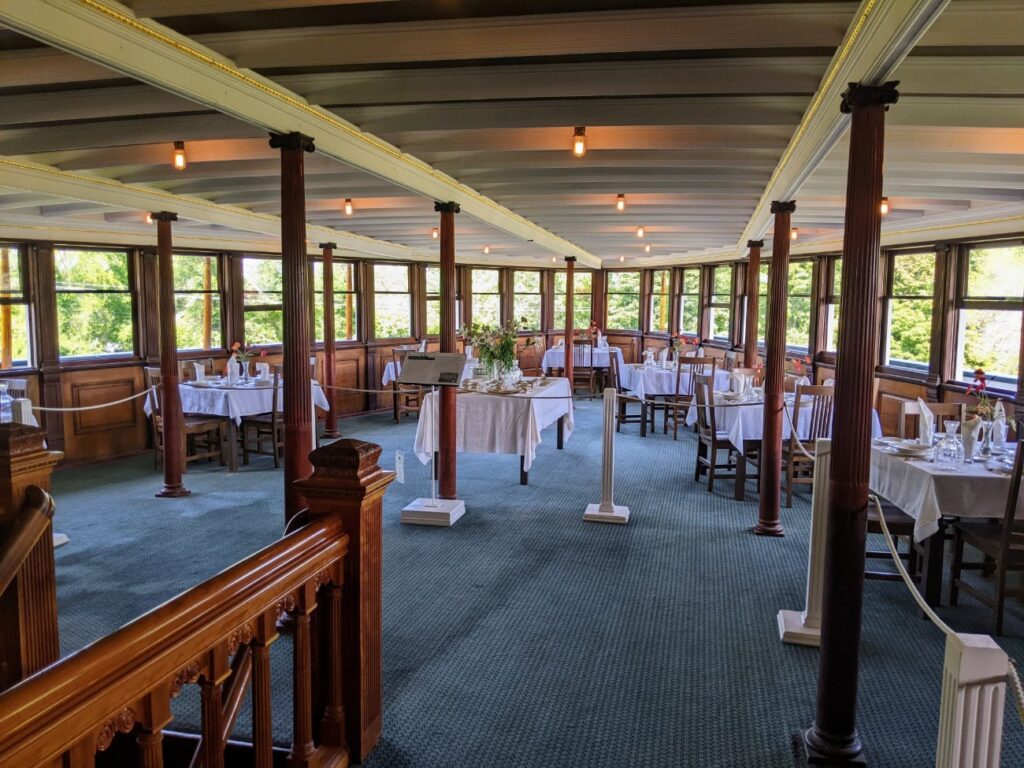
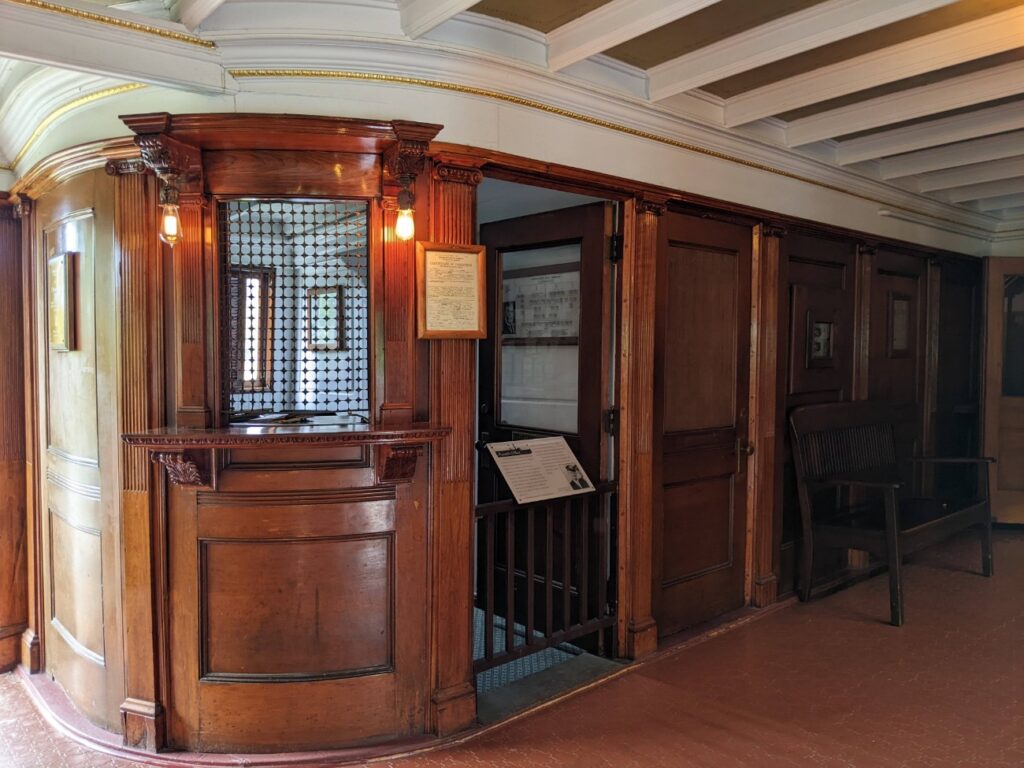
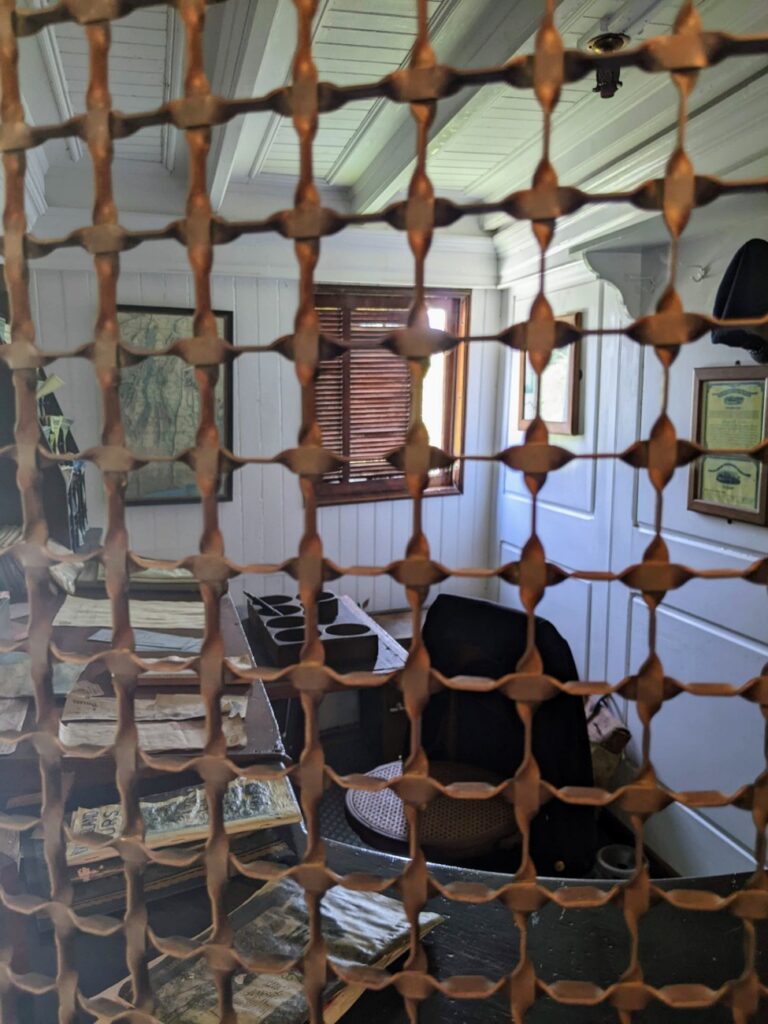
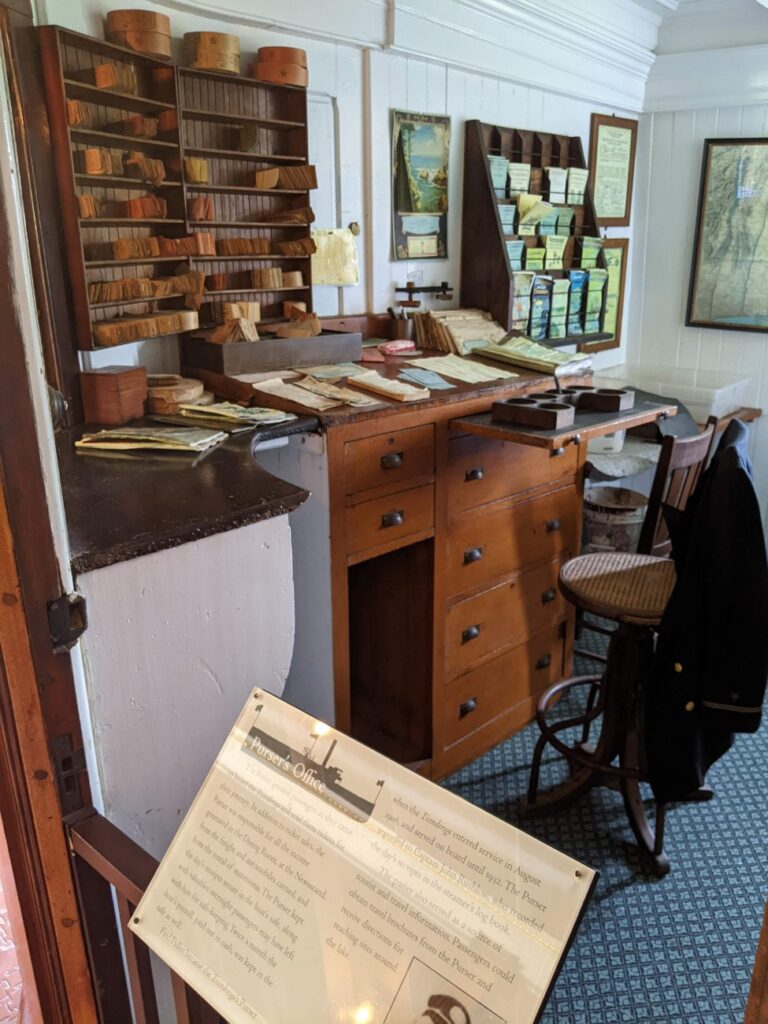
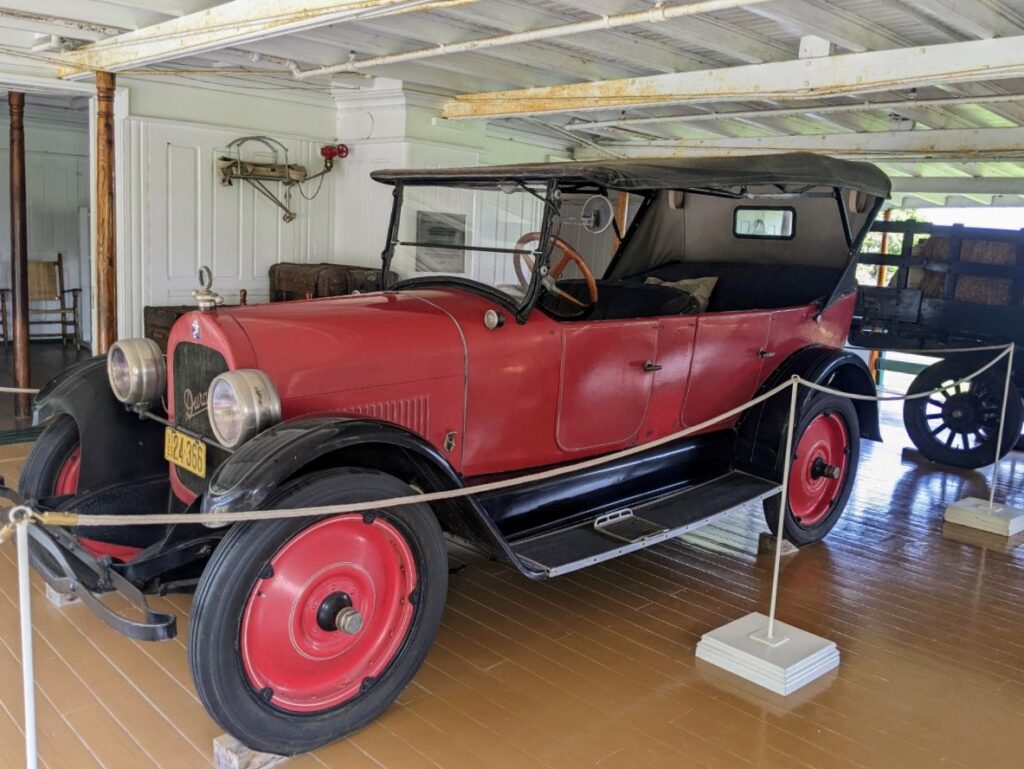
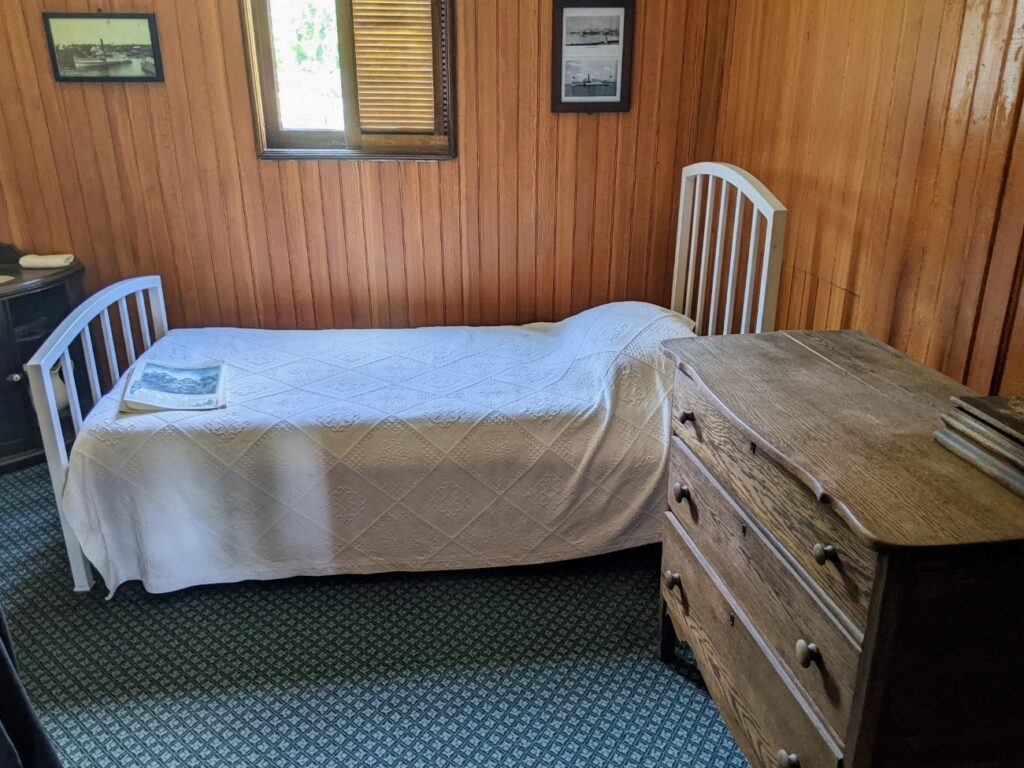
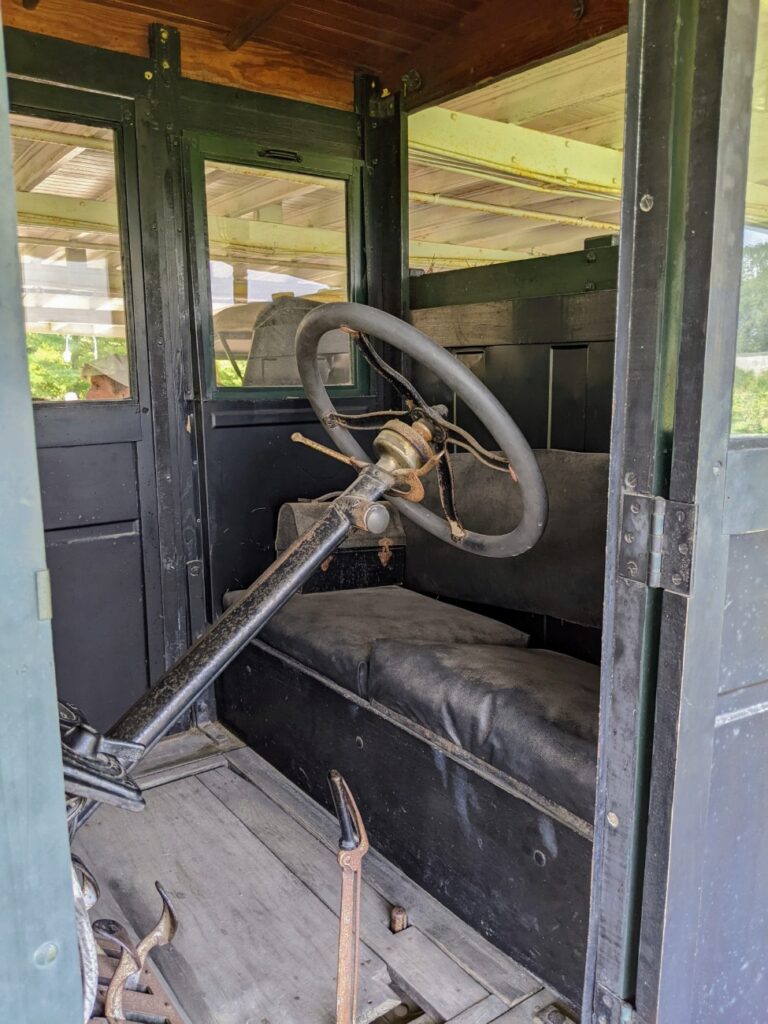
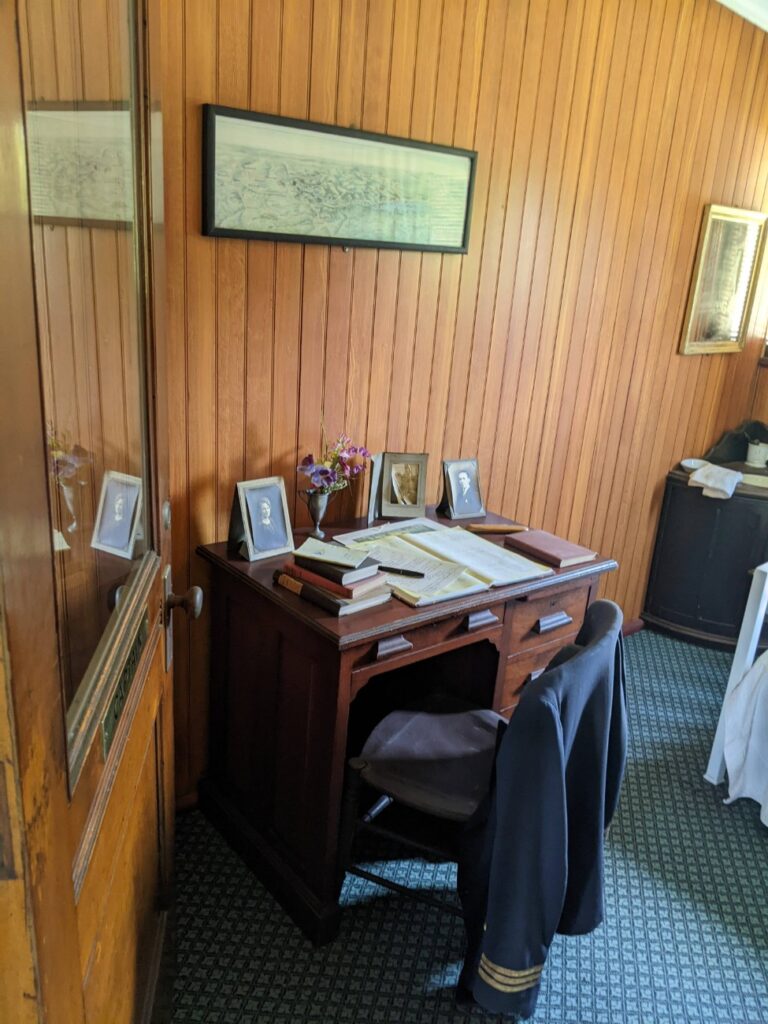
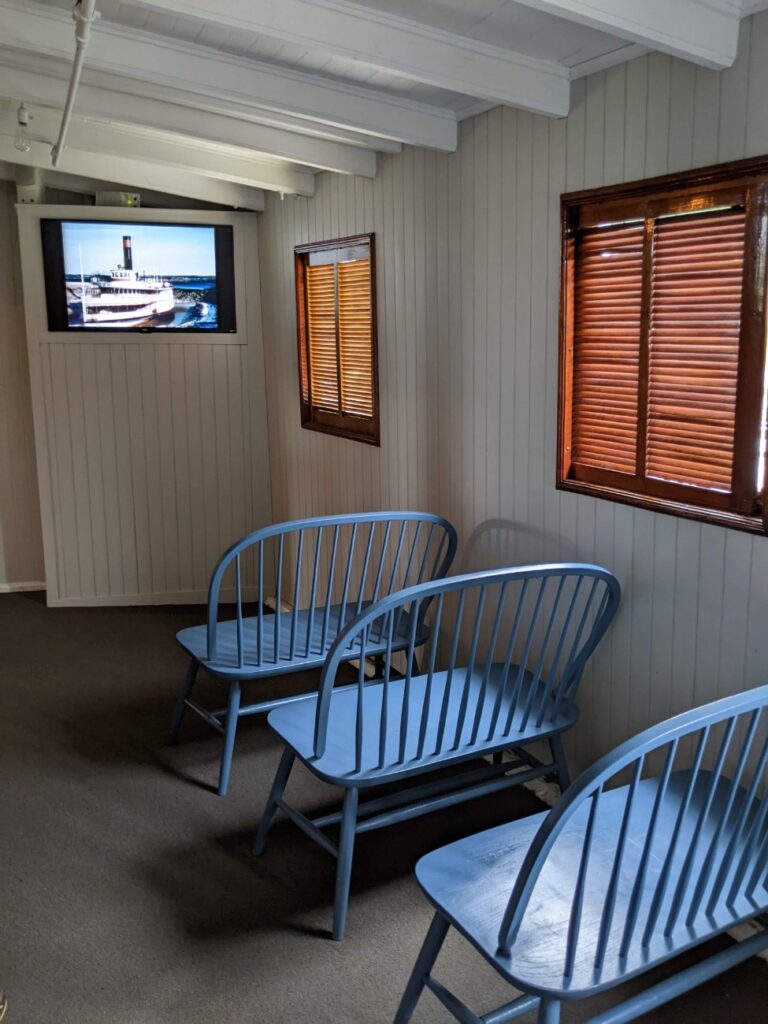
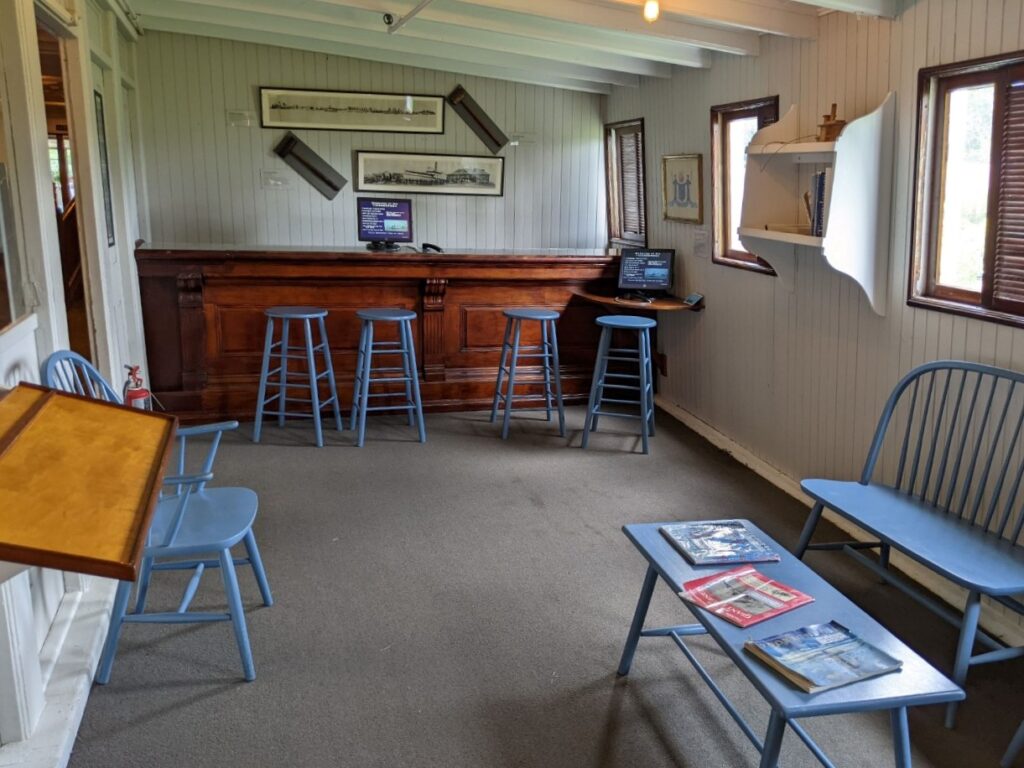
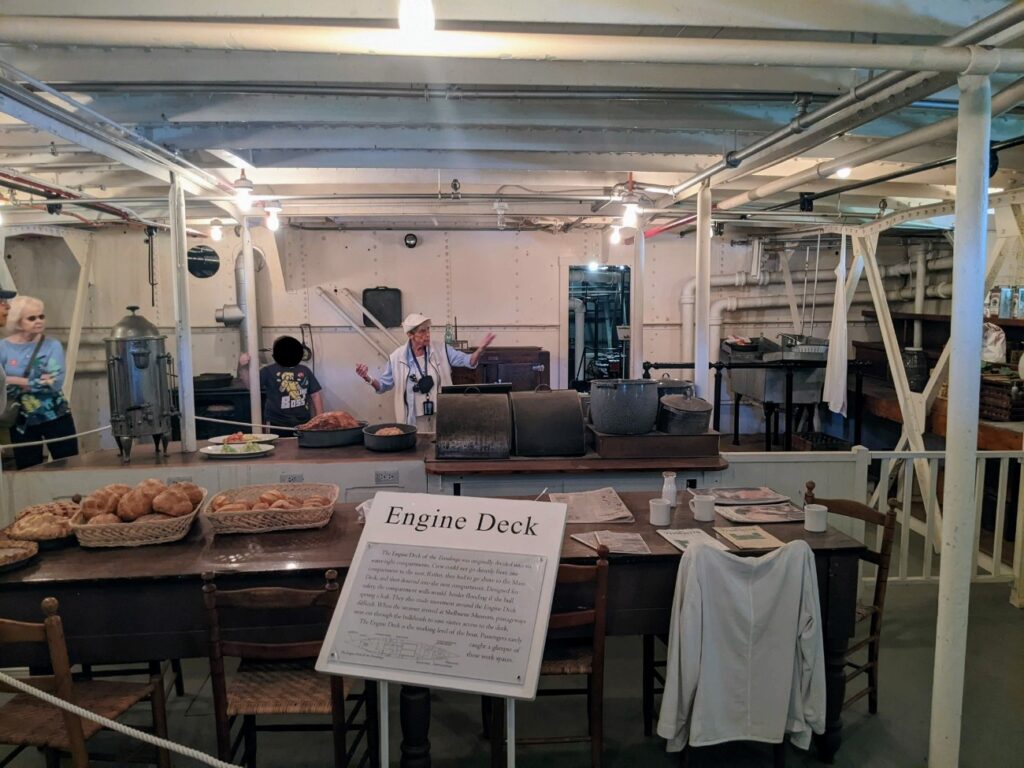
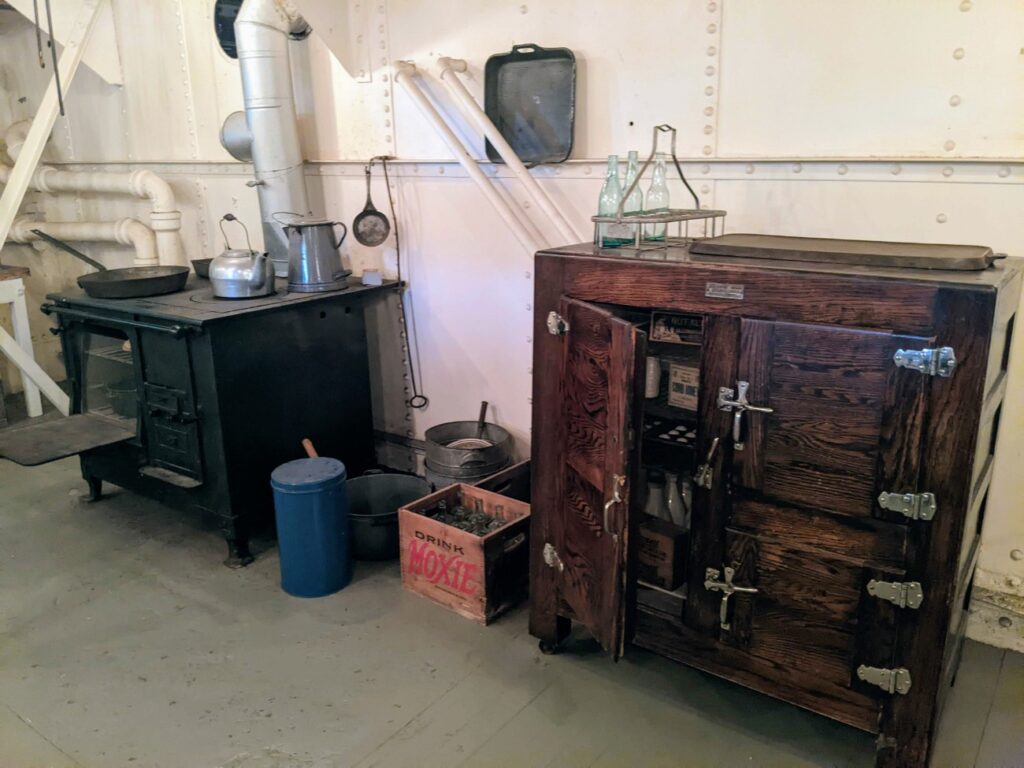
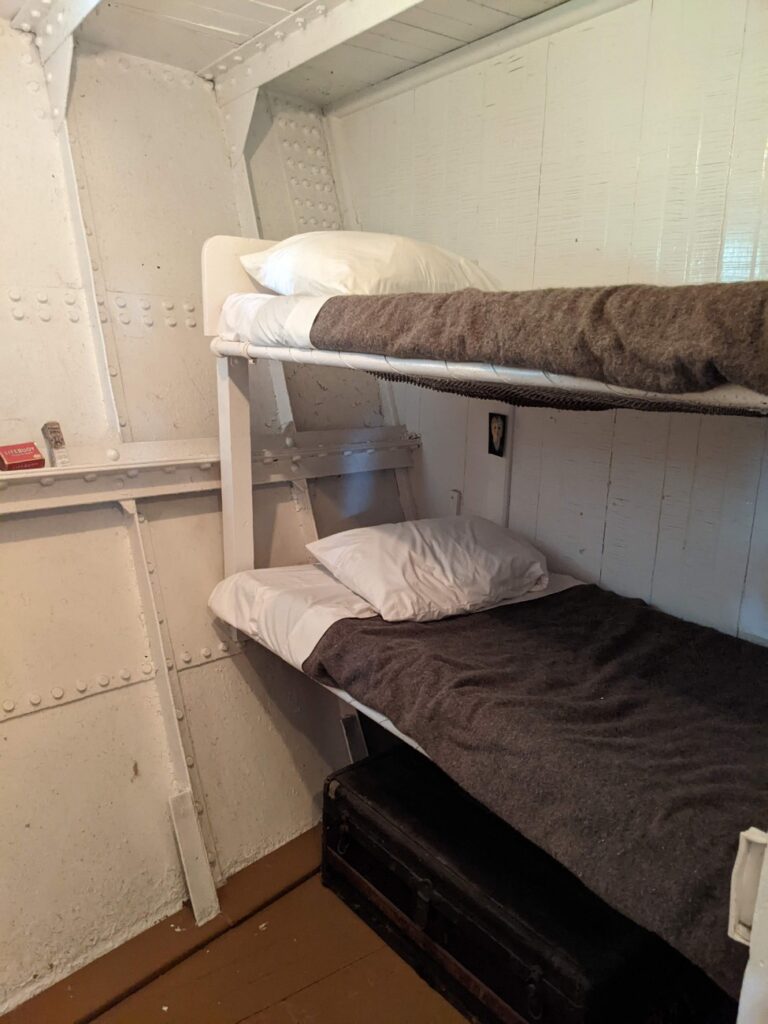
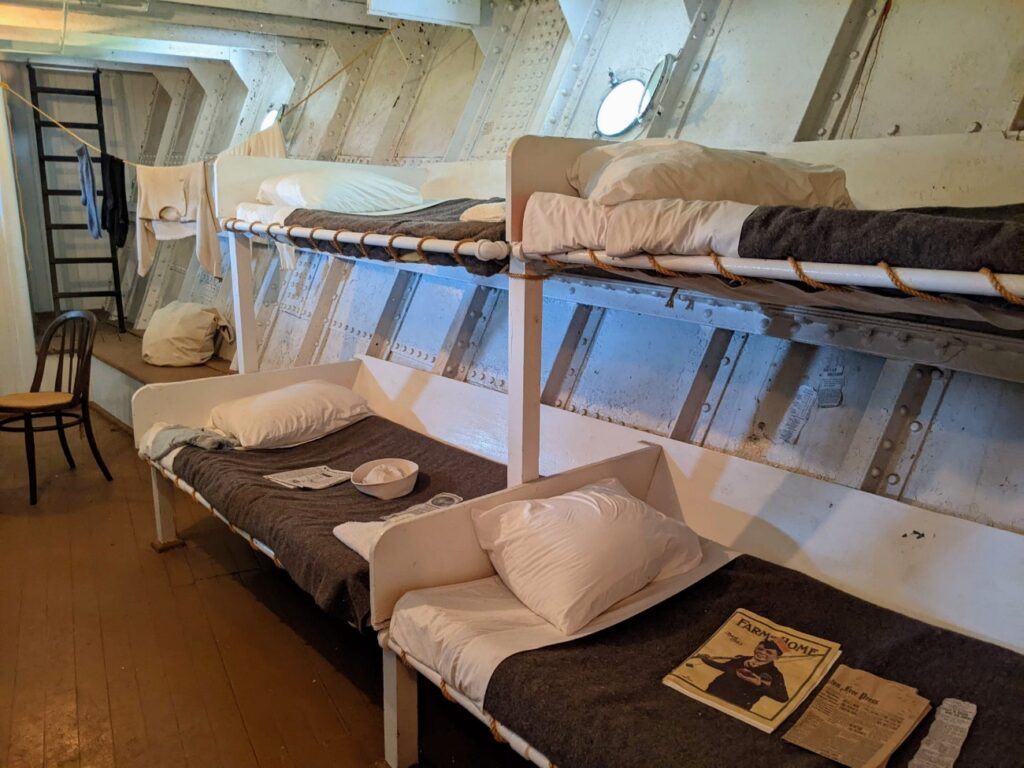
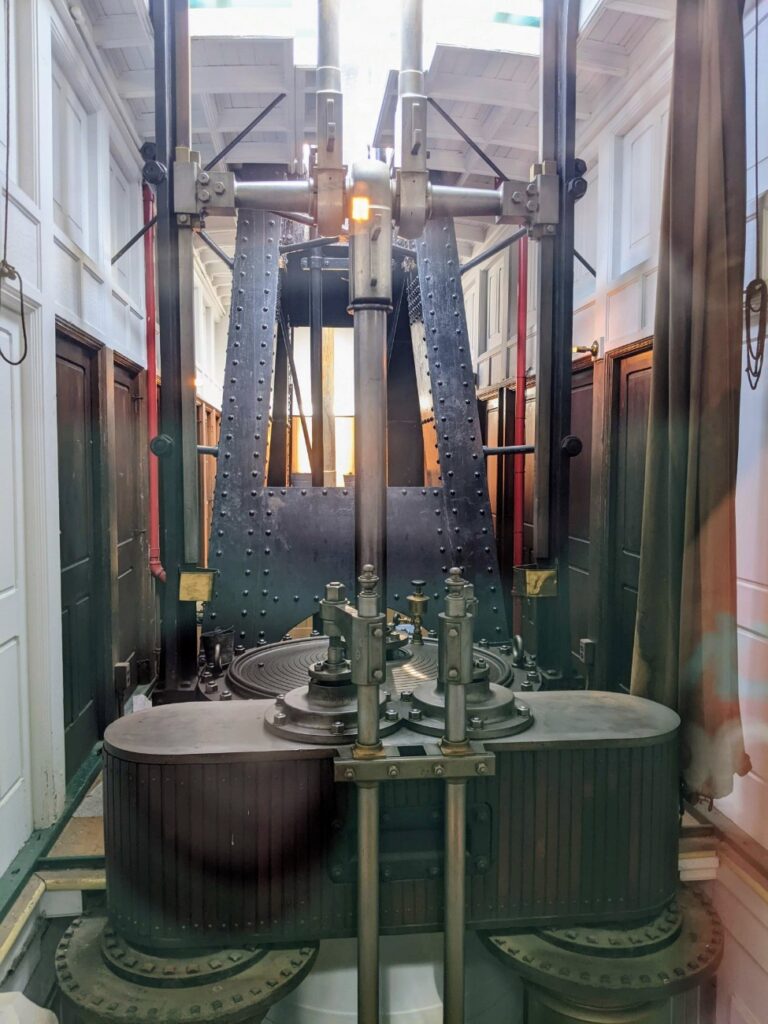
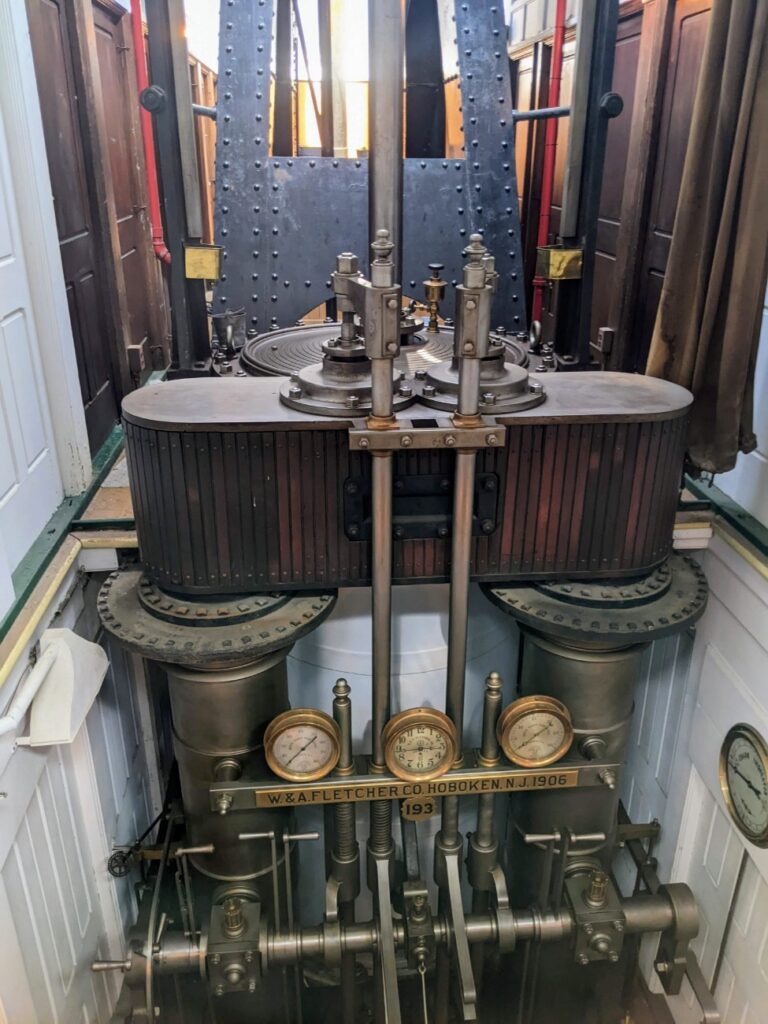
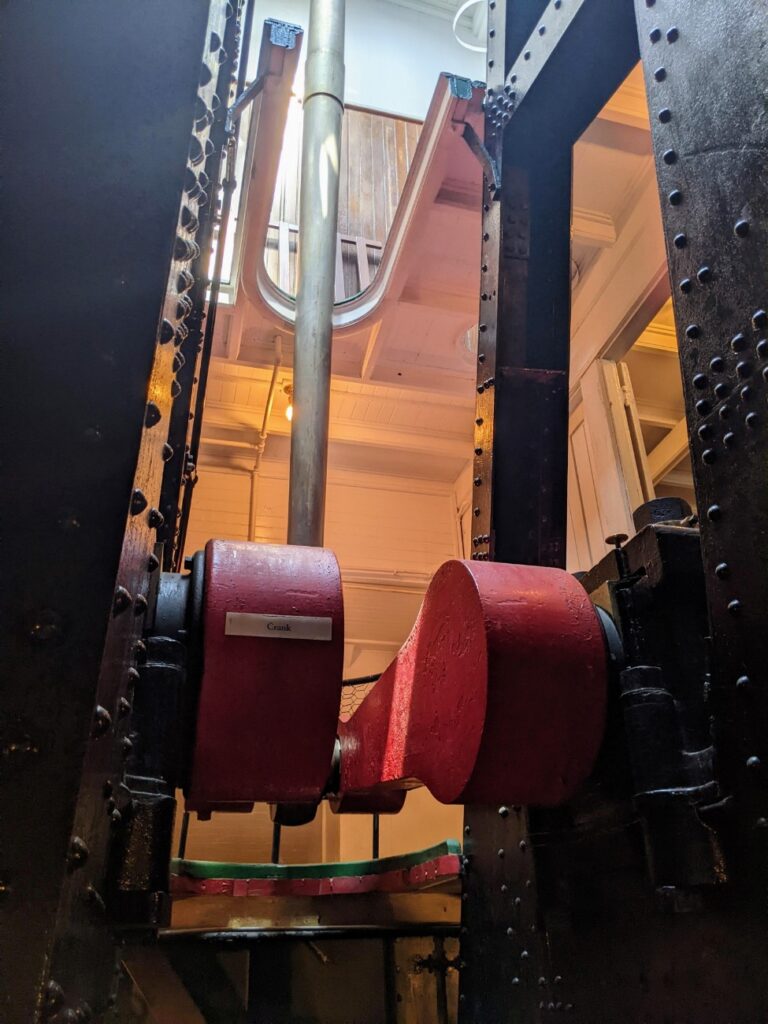
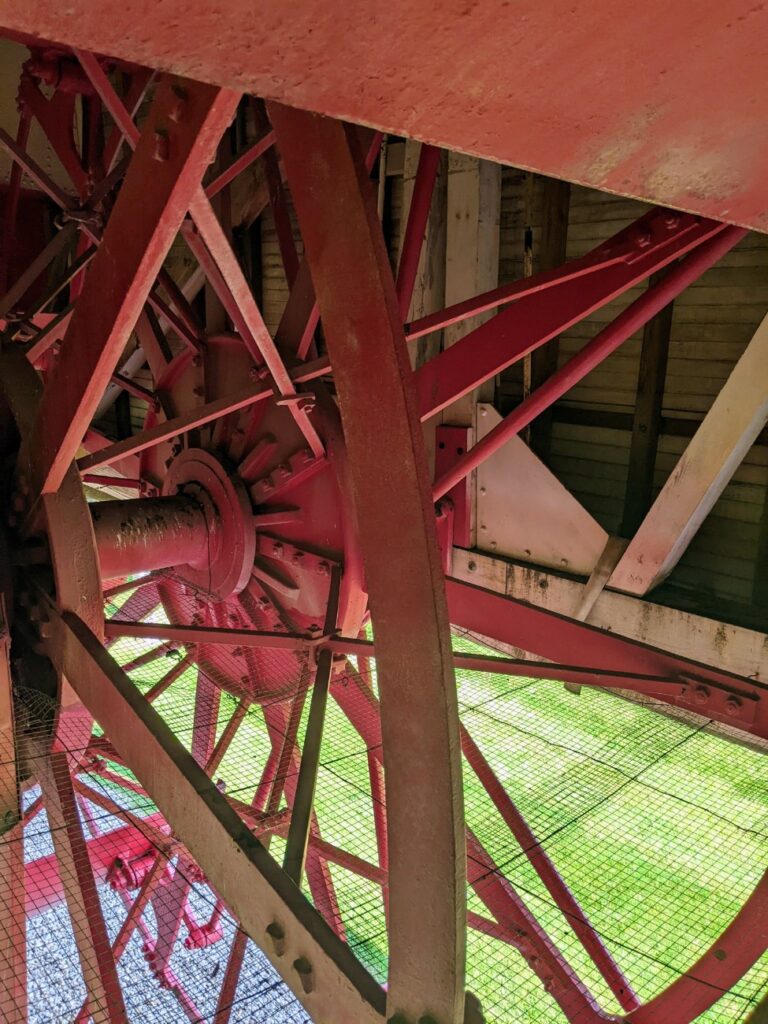
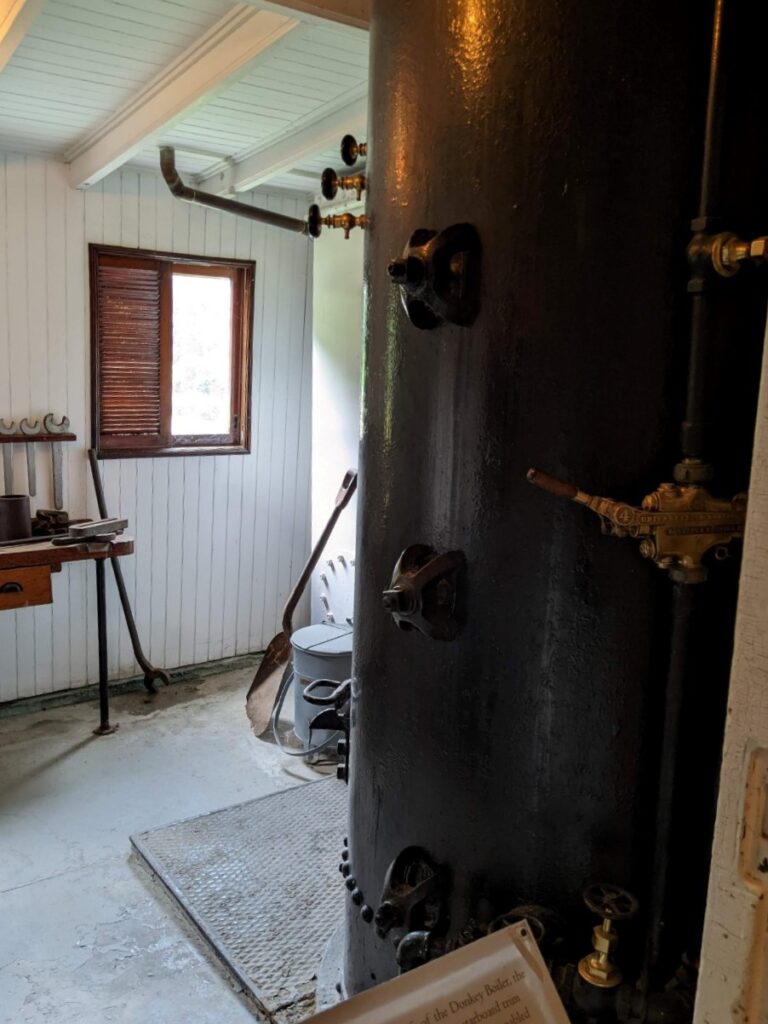
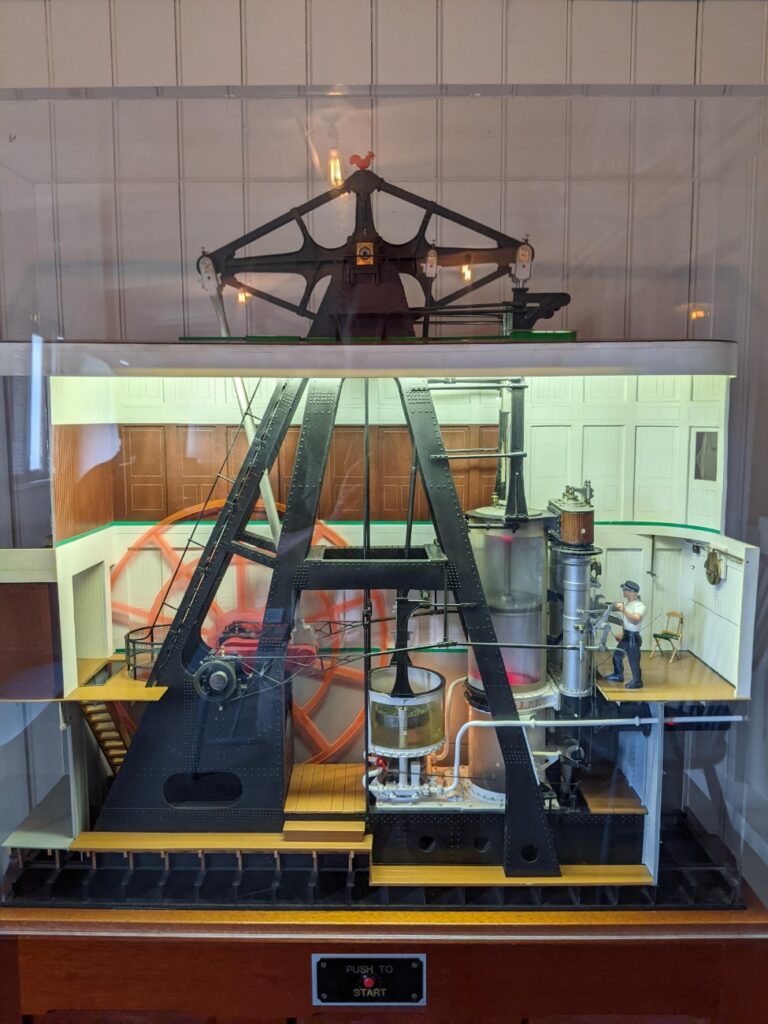
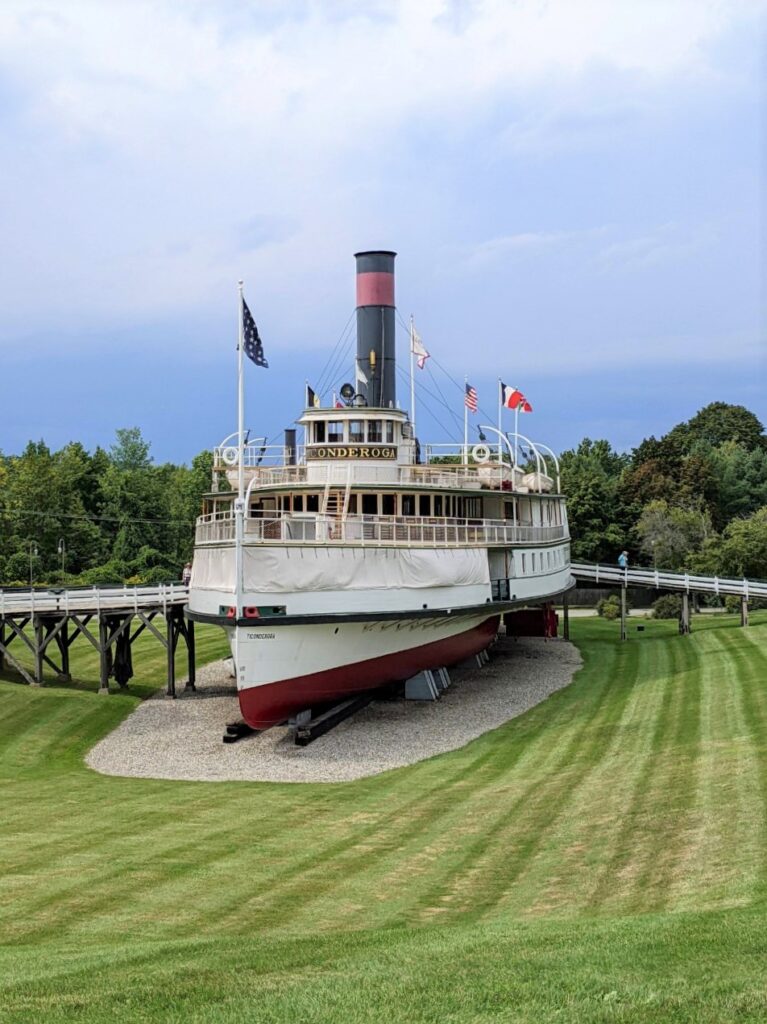
Pleissner Gallery
The Pleissner Gallery is a more modern building featuring a rotating collection of paintings by Ogden Pleissner. Manchester, Vermont, is where Pleissner had his studio and the state was a frequent subject in his art. The paintings currently on display all refer to “sporting life” like hunting and fishing. A recreation of his Manchester studio is also found in this gallery.
The Pleissner Gallery building and the (closed) Owl Cottage activity center make a sweet little garden courtyard. I think this area is generally used for school groups, since there’s a cubby area on the back of the gallery.
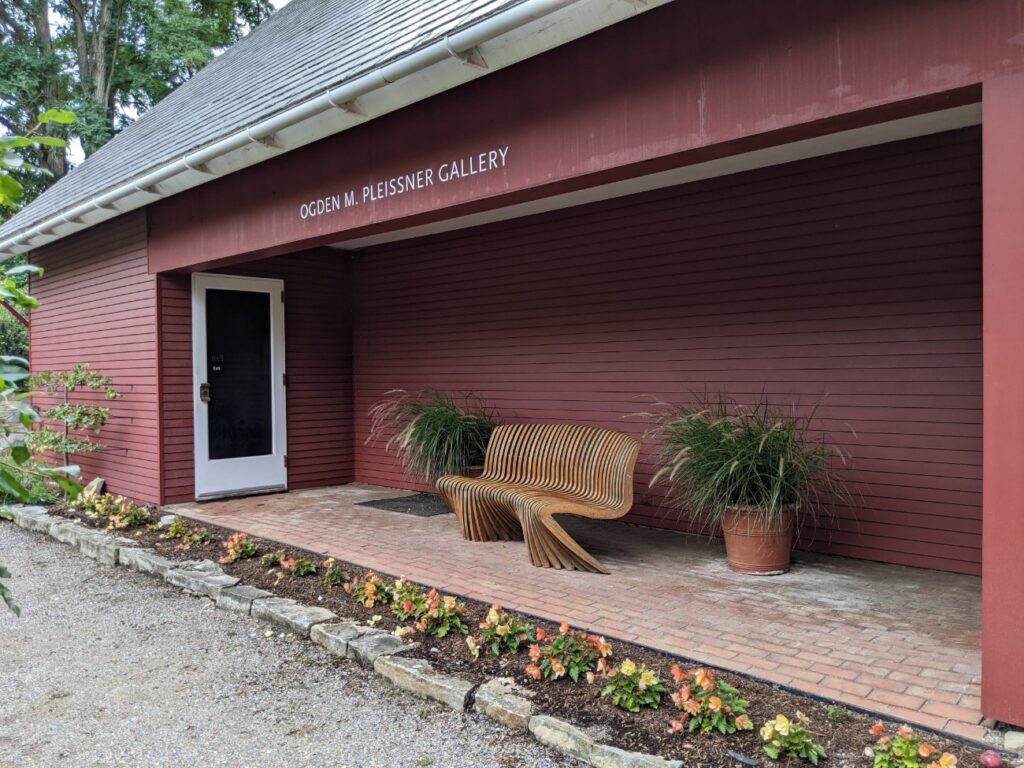
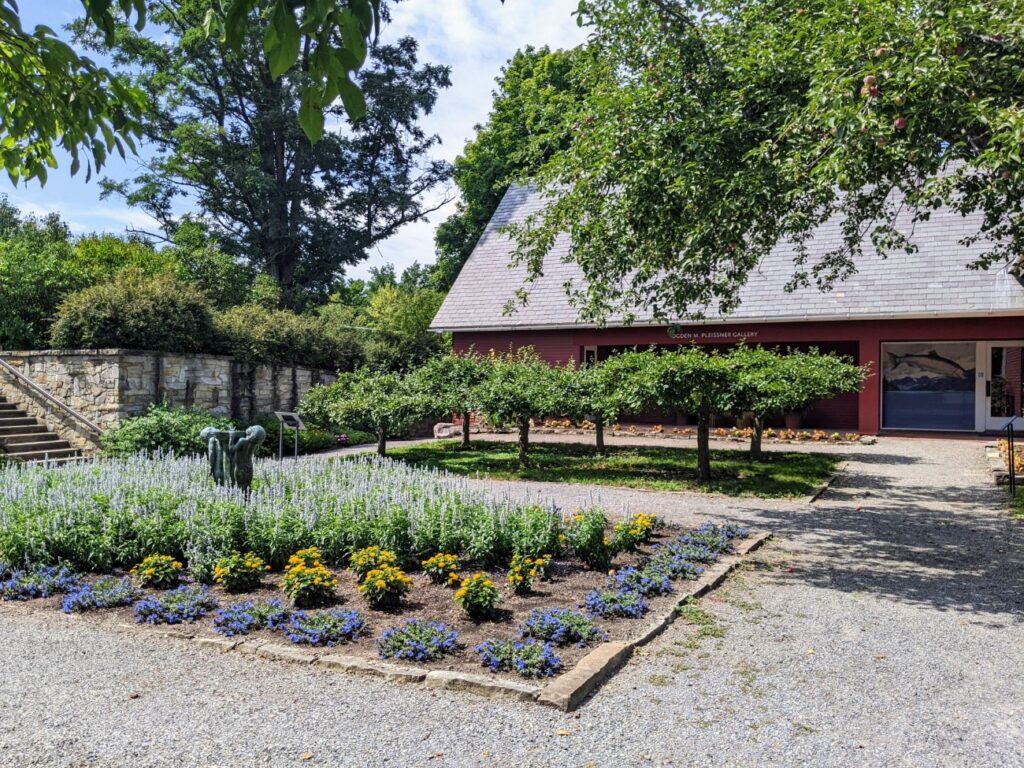
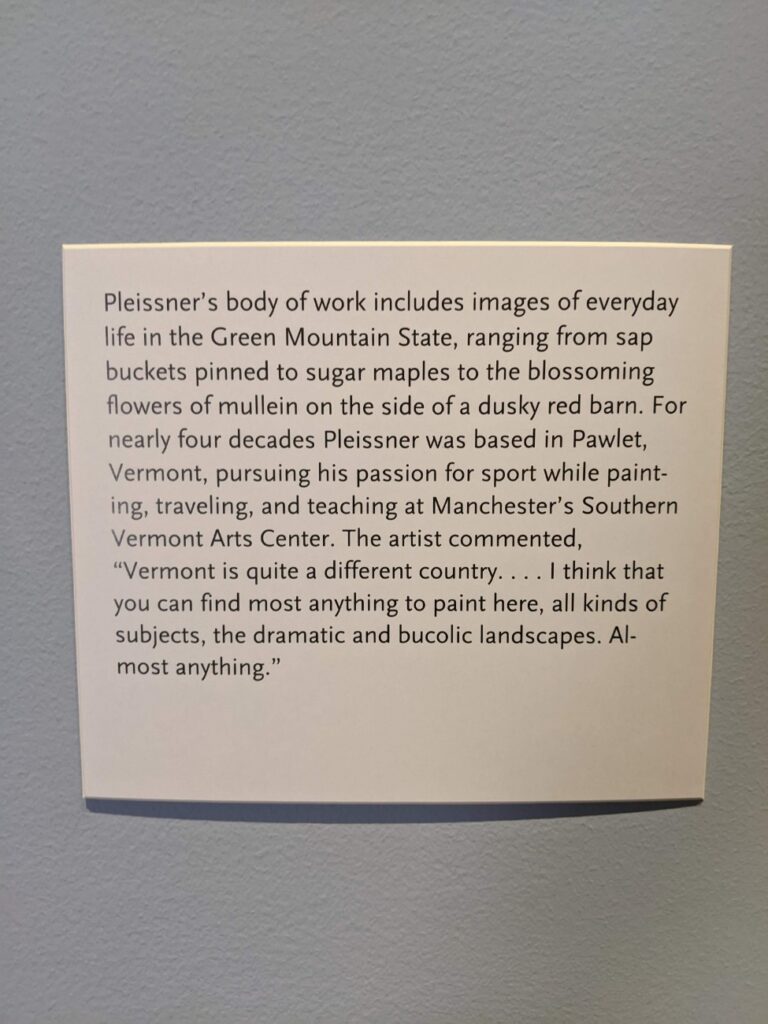
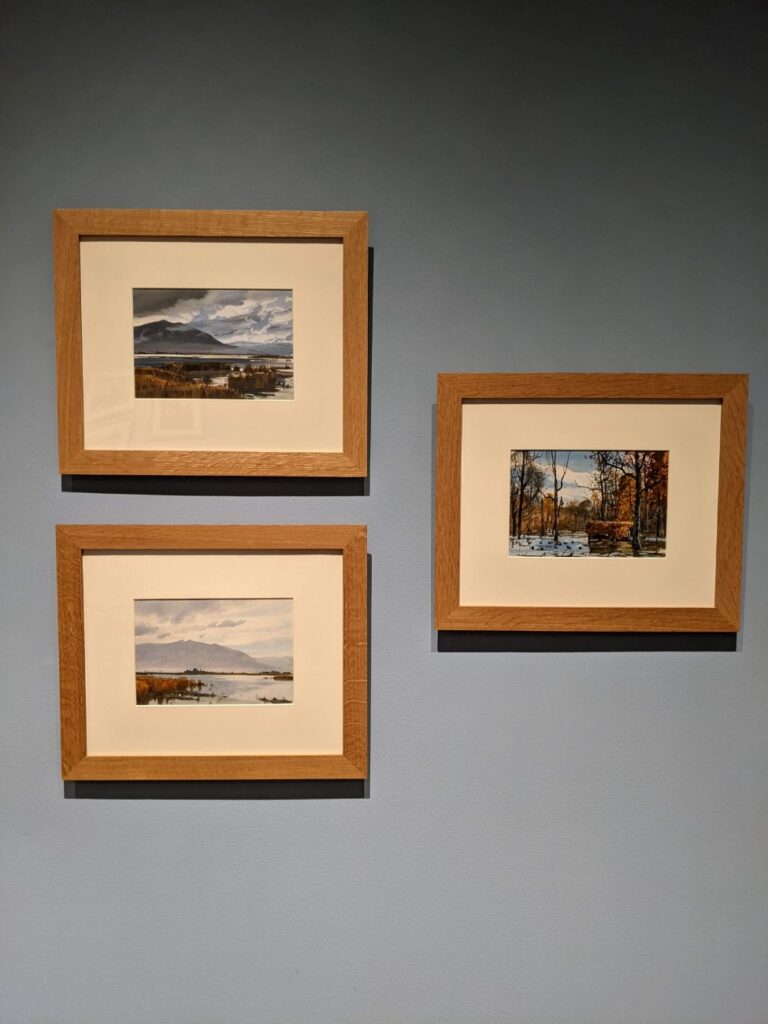
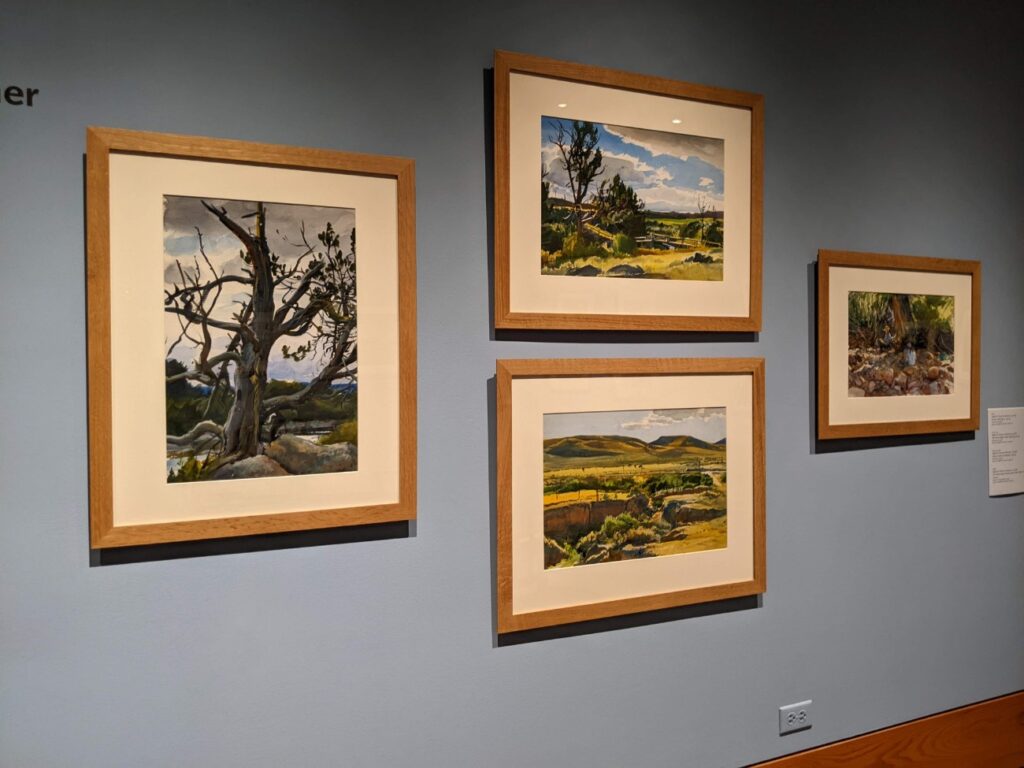
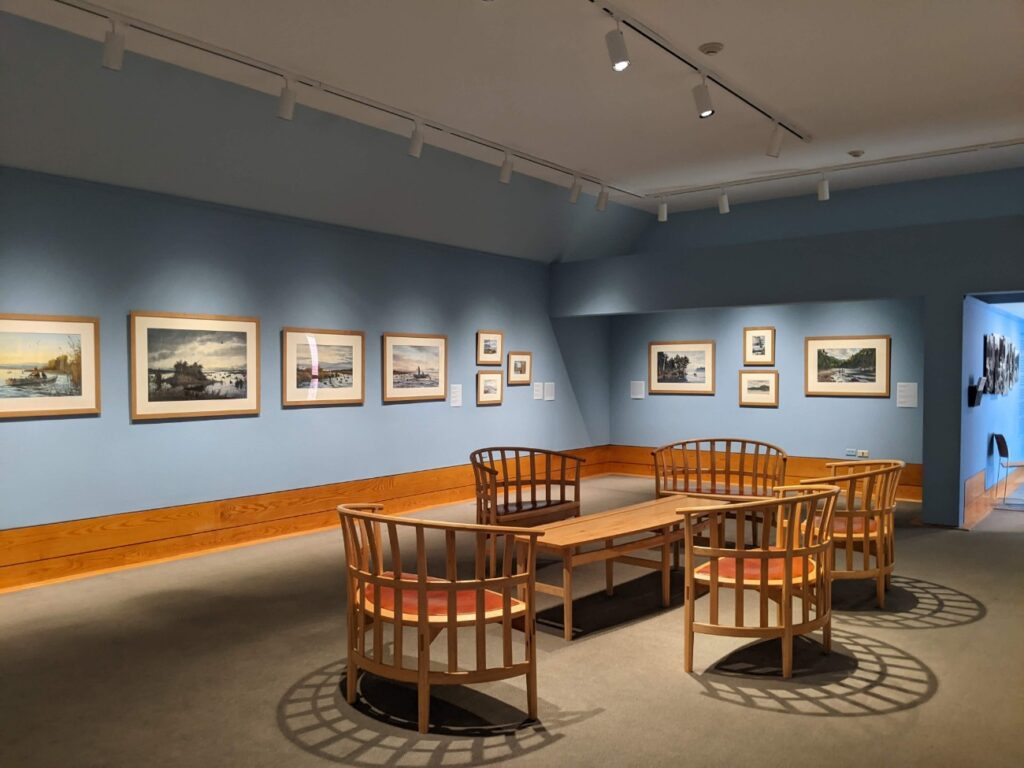
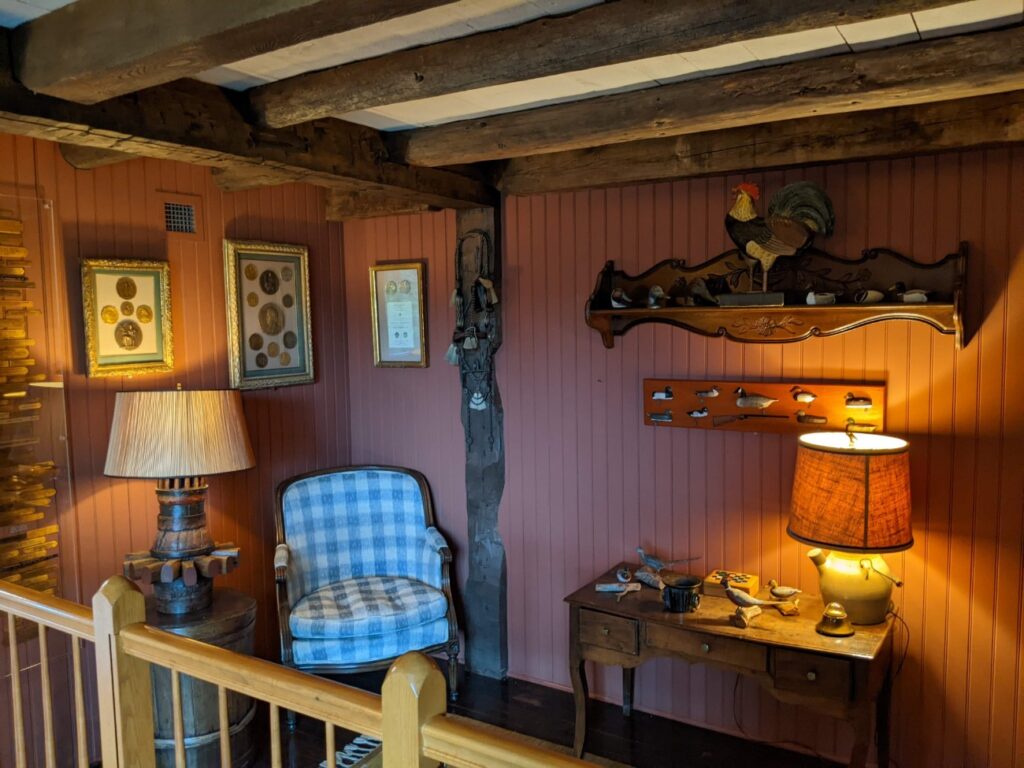
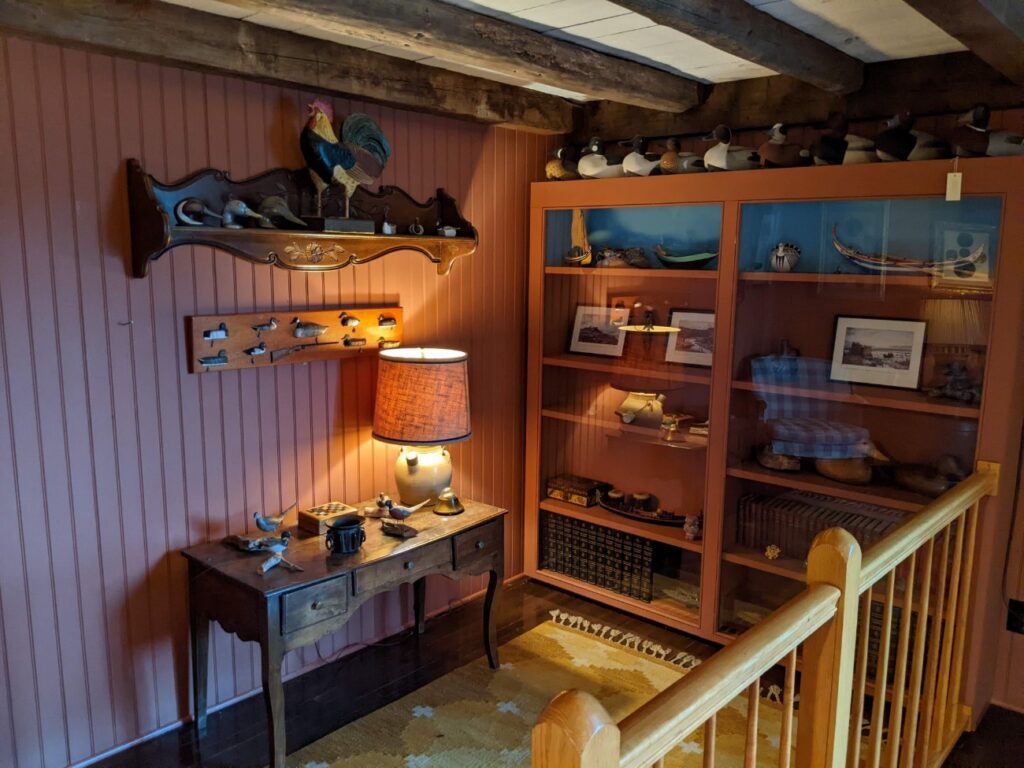
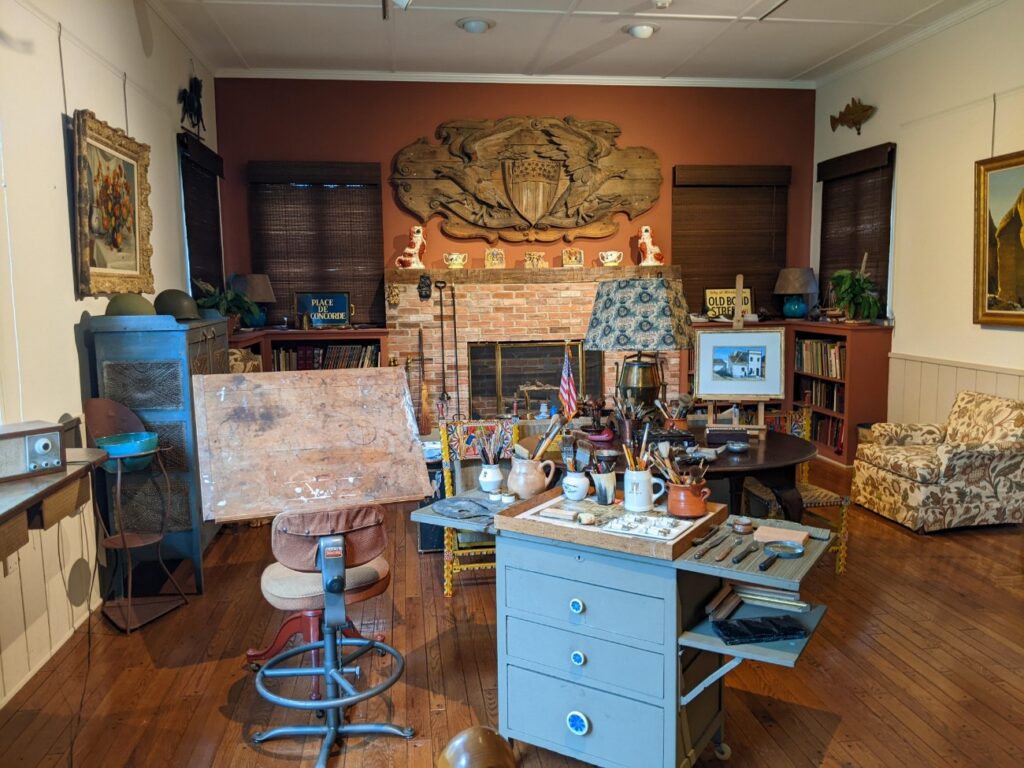
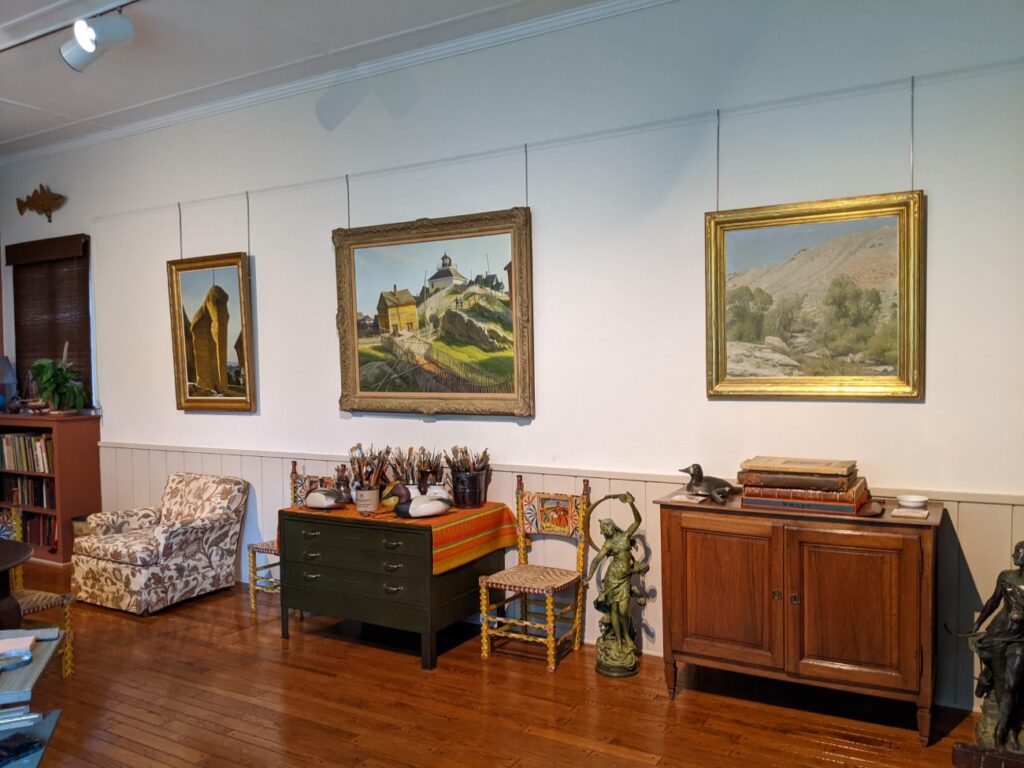
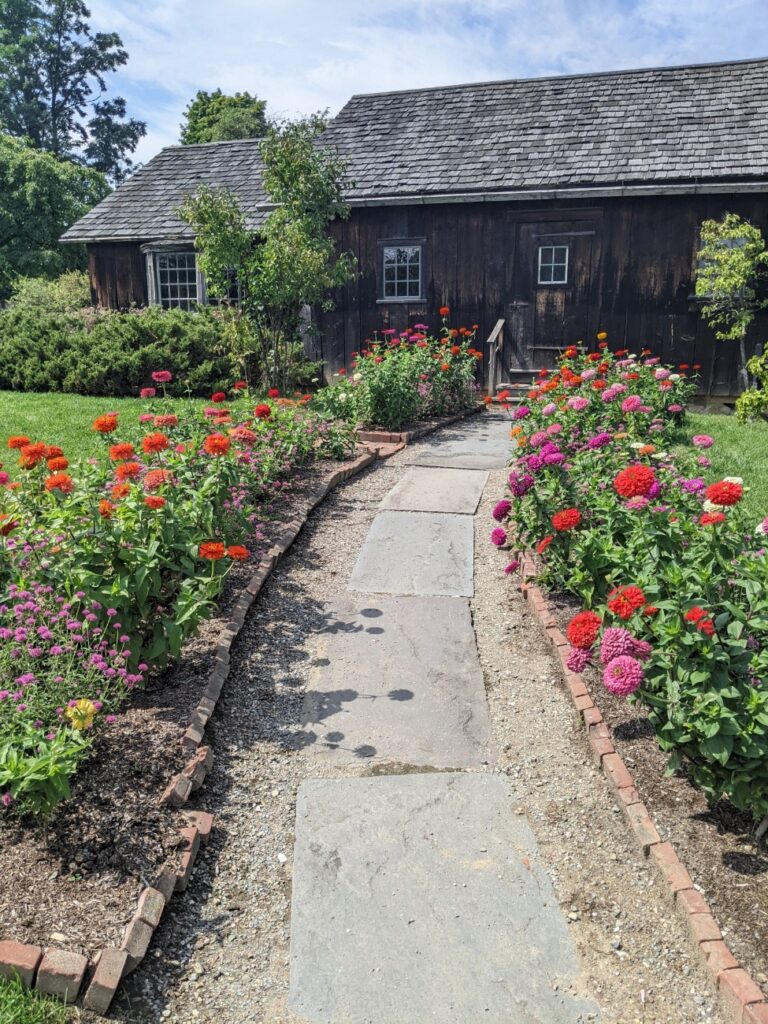
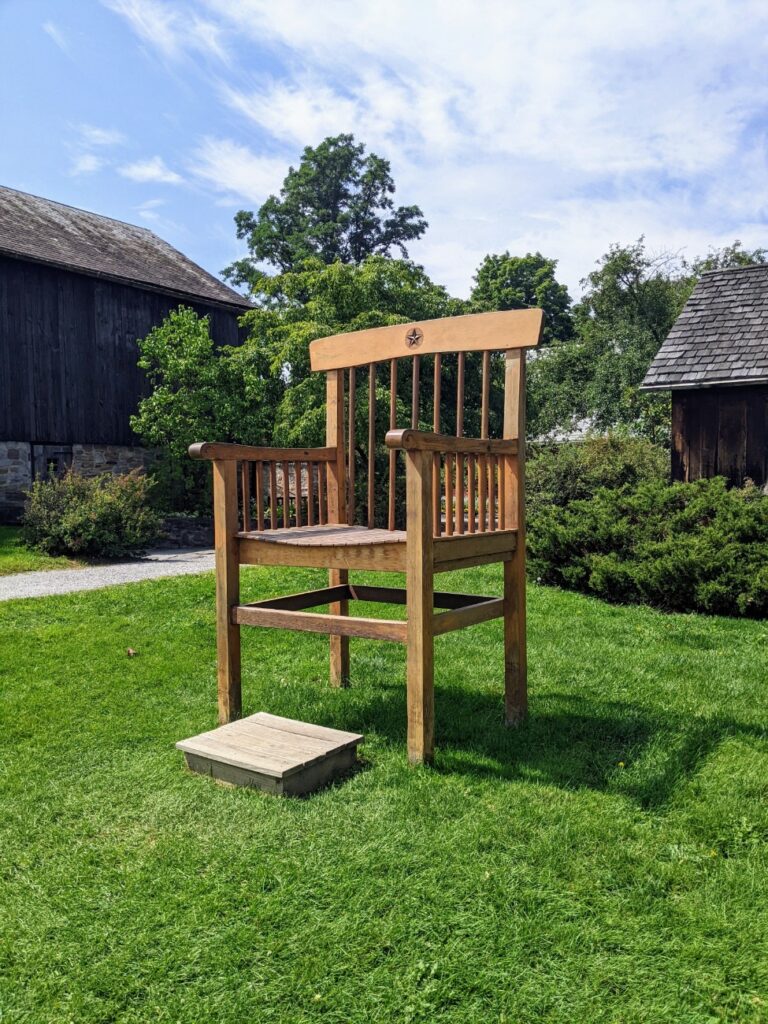
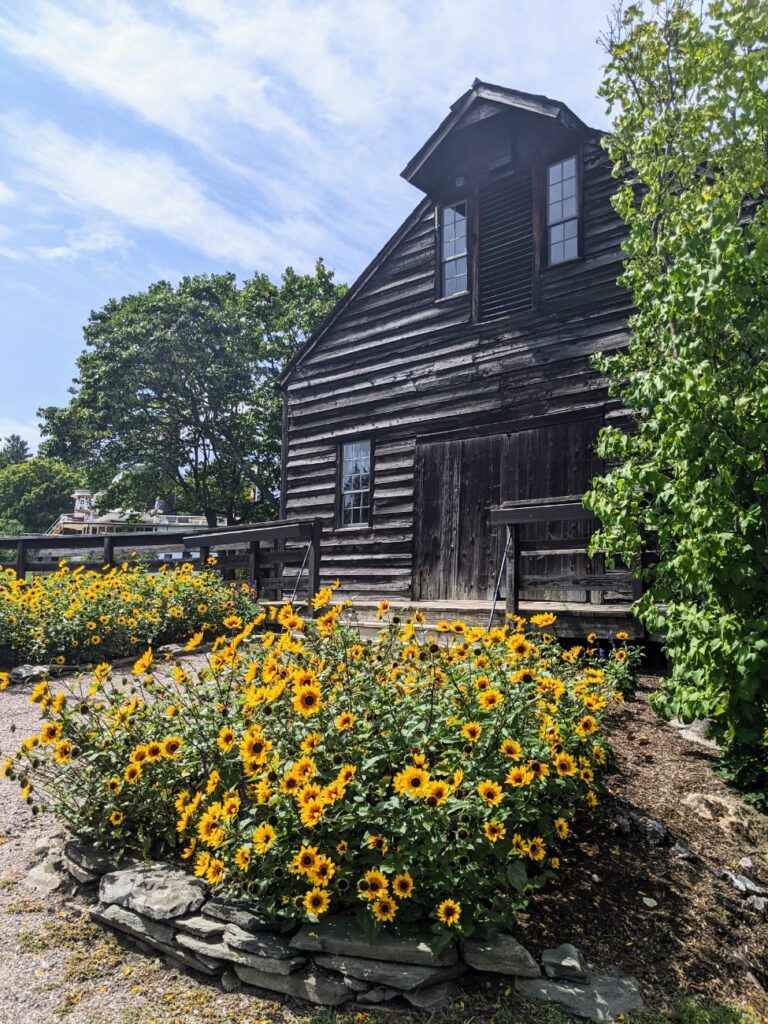
Lighthouse
The short 1871 Lighthouse is from Lake Champlain. I couldn’t enter during my visit, but it looked like it was set up as a member lounge and not anything period-specific.
I wondered if some of the closed spaces were more due to Covid than otherwise since most of them were smaller spaces, like the lighthouse, train car, and activity center. But then, there were other houses open for tours in small spaces, so who knows. You might need to be prepared that a few buildings may be closed during your visit anytime during the year.
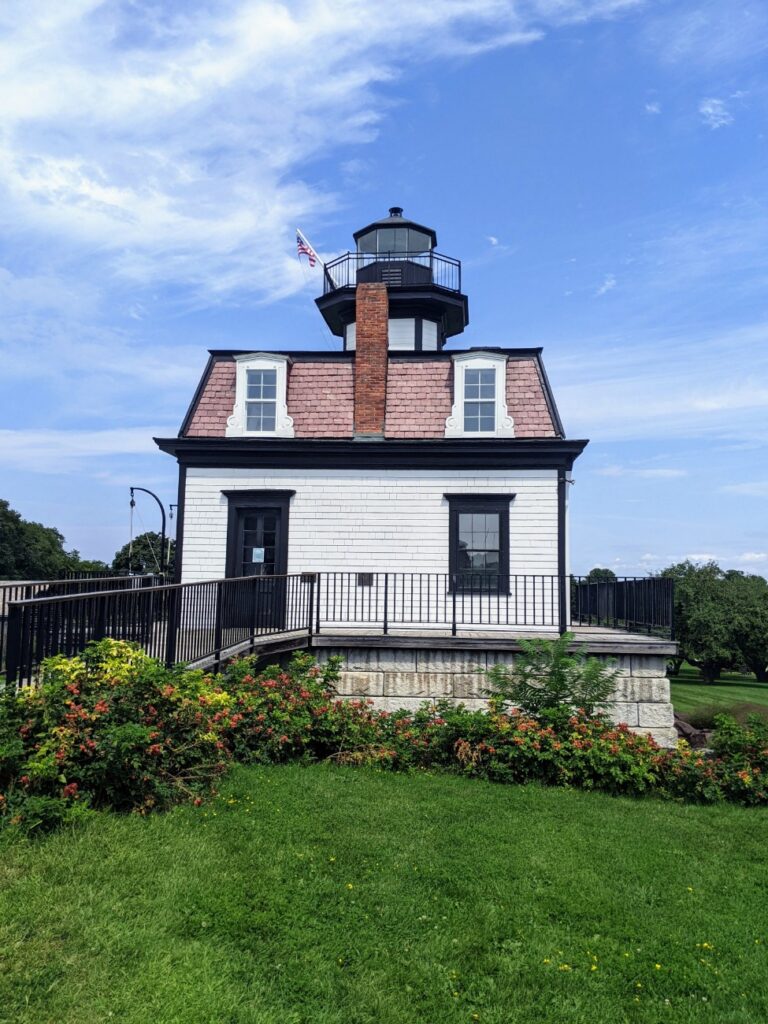
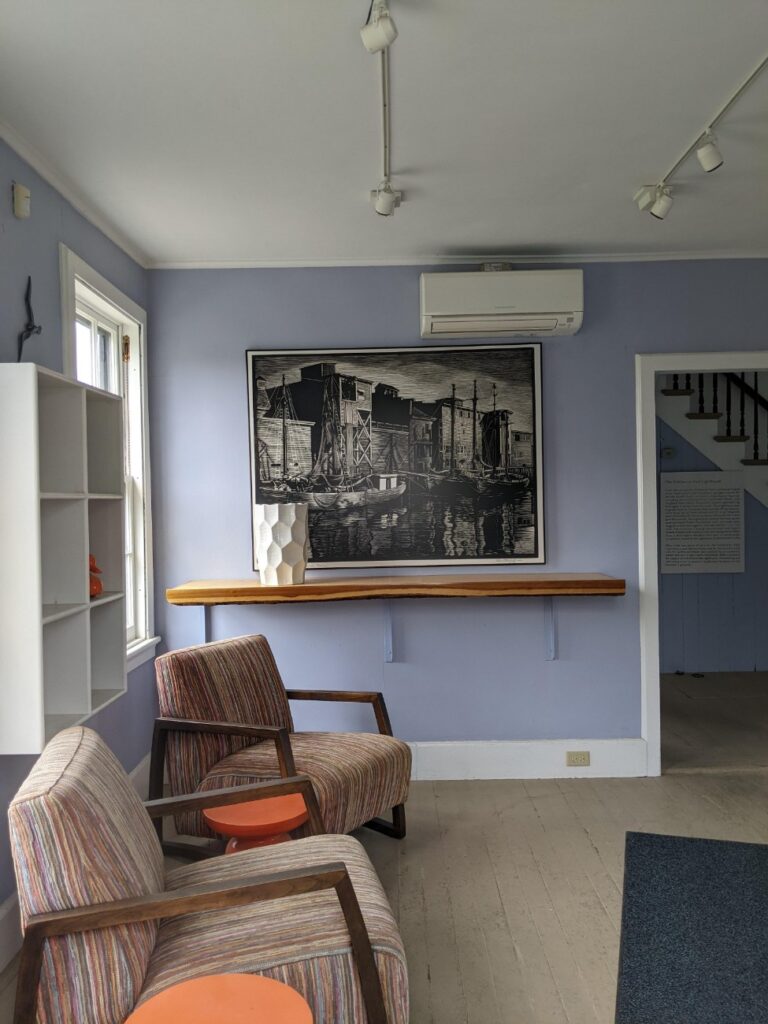
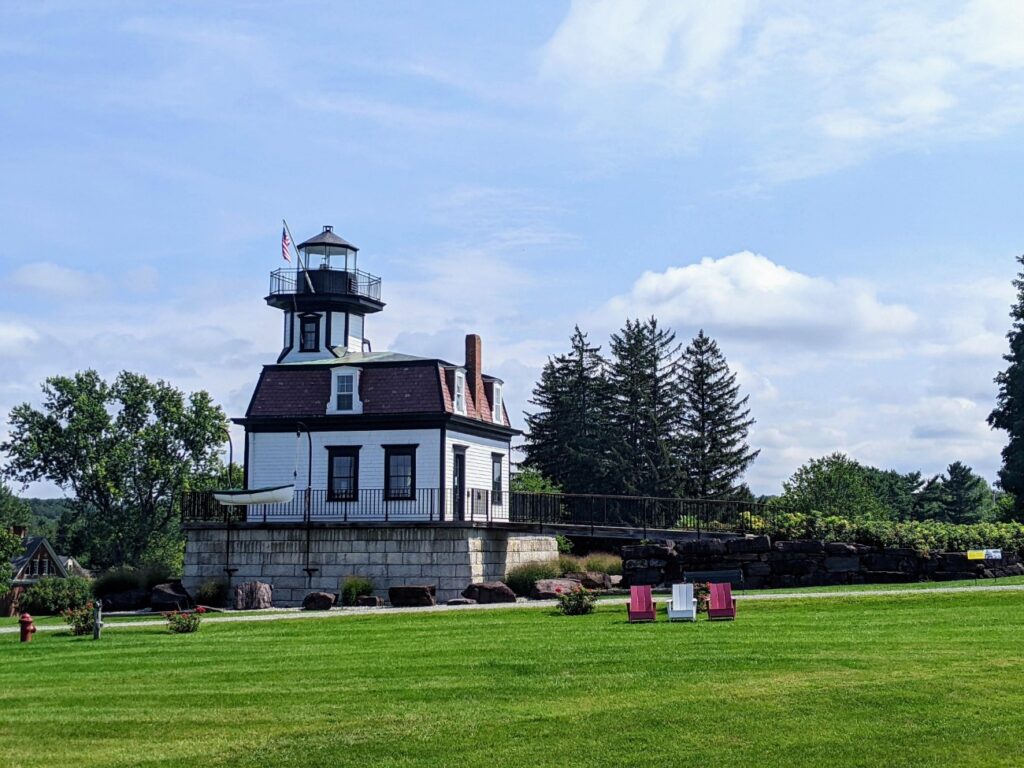
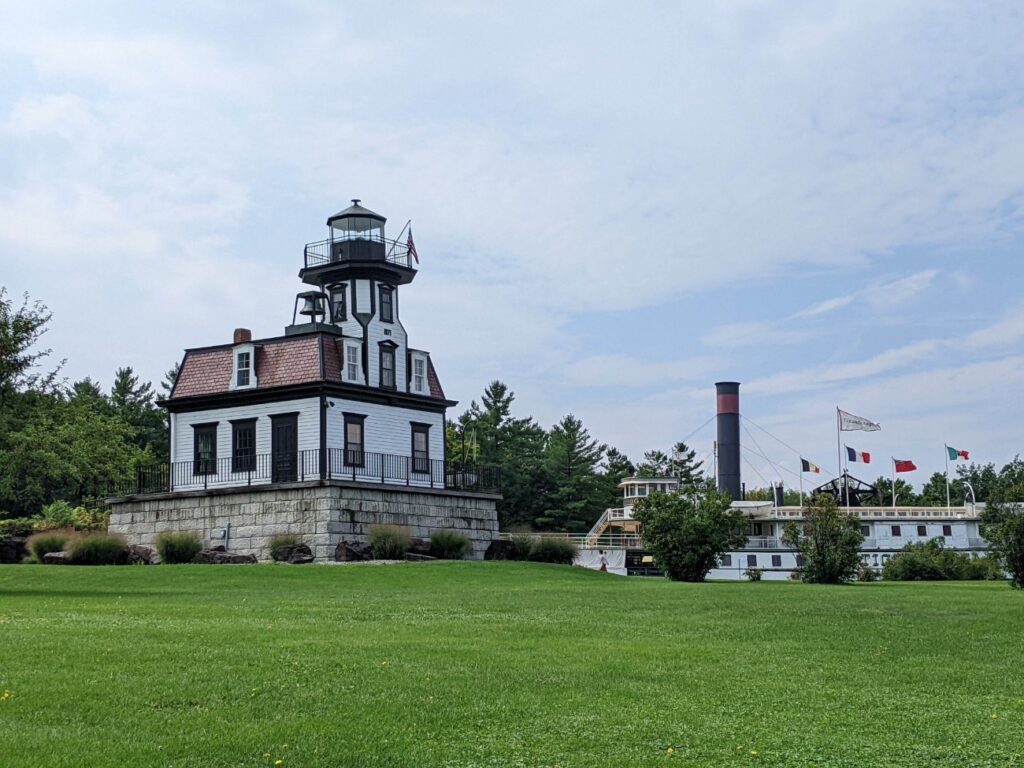
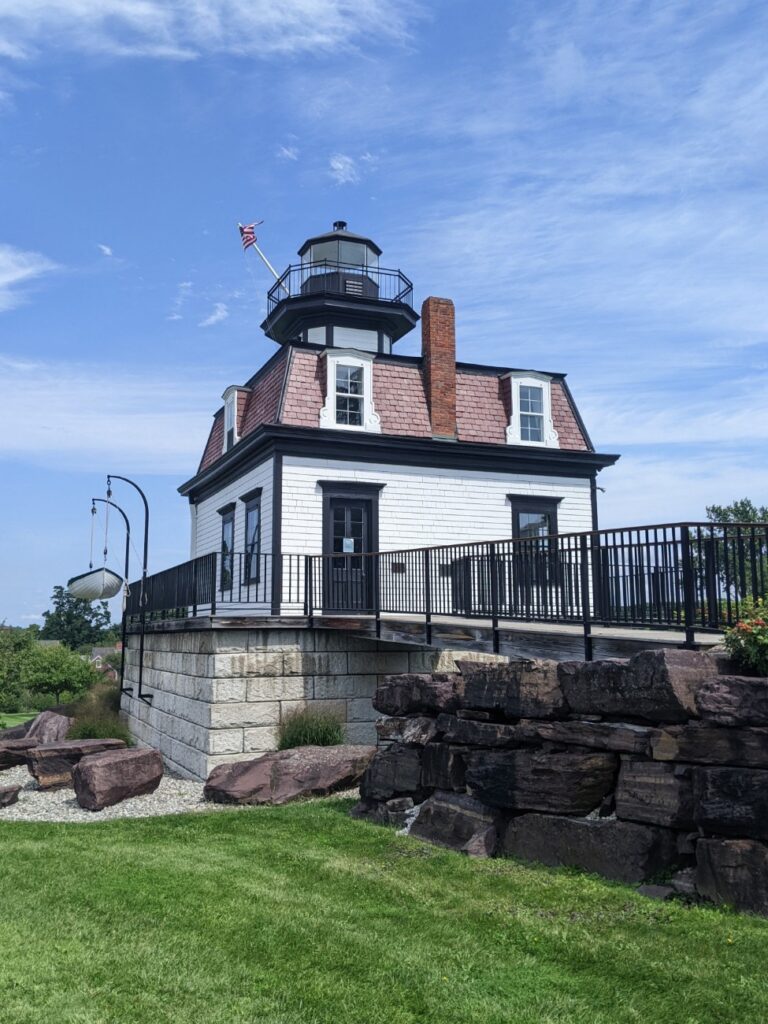
Prentis & Stencil Houses
Behind the Lighthouse are two houses that only open for guided tours. So if you want to see inside at all, make sure to snag a tour time. First on the tour is the Prentis House, a 1773 home found in Hadley, MA. Inside is a grand collection of Colonial Revival furnishings, quite a bit grander than what would have been found in the house originally. Second, the Stencil House features pretty stenciled walls and more humble furnishings.
Neither house is set up with any absolute historical accuracy, they’re more to showcase collections of early American furniture. But the houses themselves are fun to see and you can even walk upstairs, which I think is a real treat. Tour times are at 11:00, 1:00, and 3:00 daily from mid-May to mid-October. Allow 45 minutes for both houses.
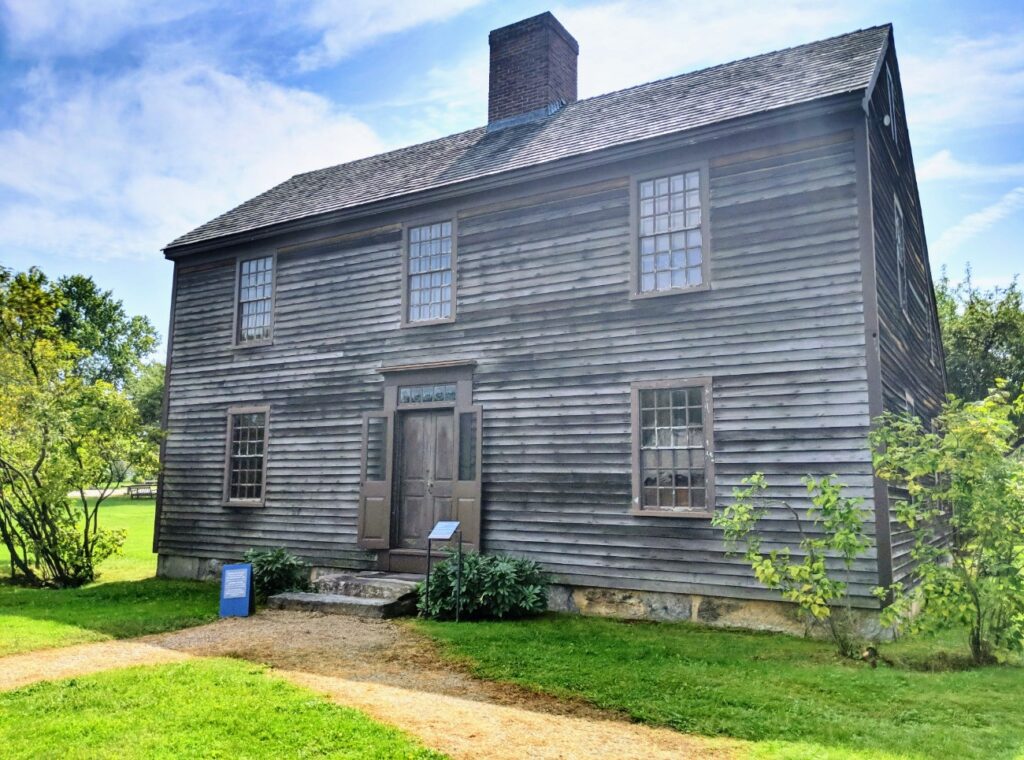
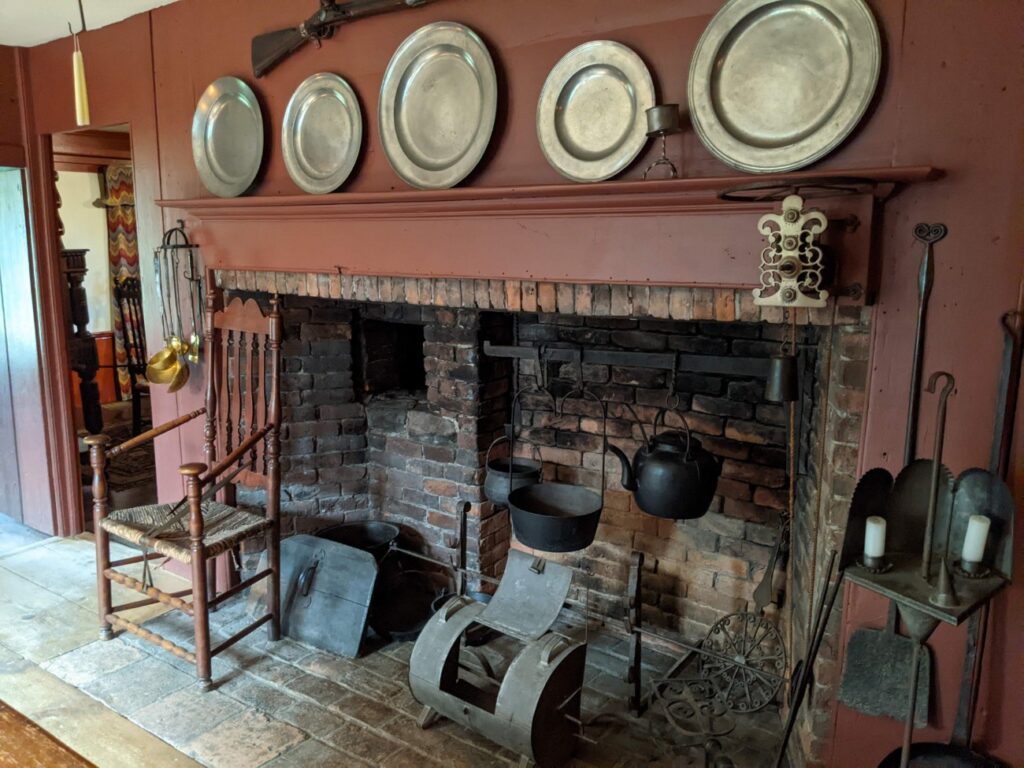
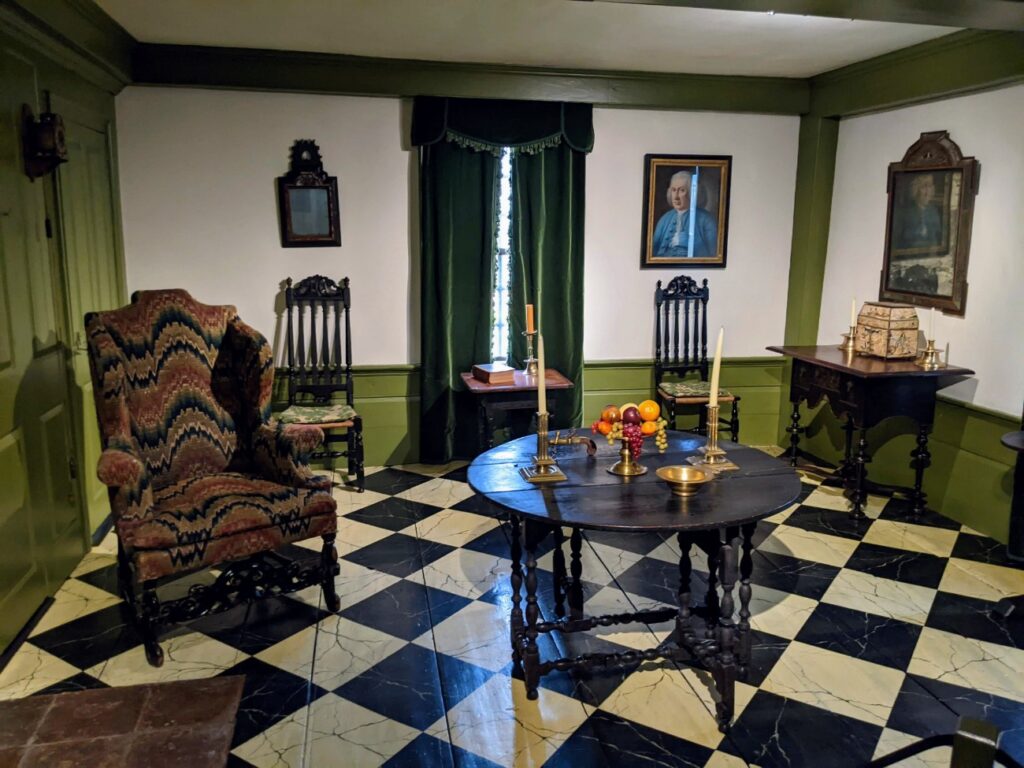
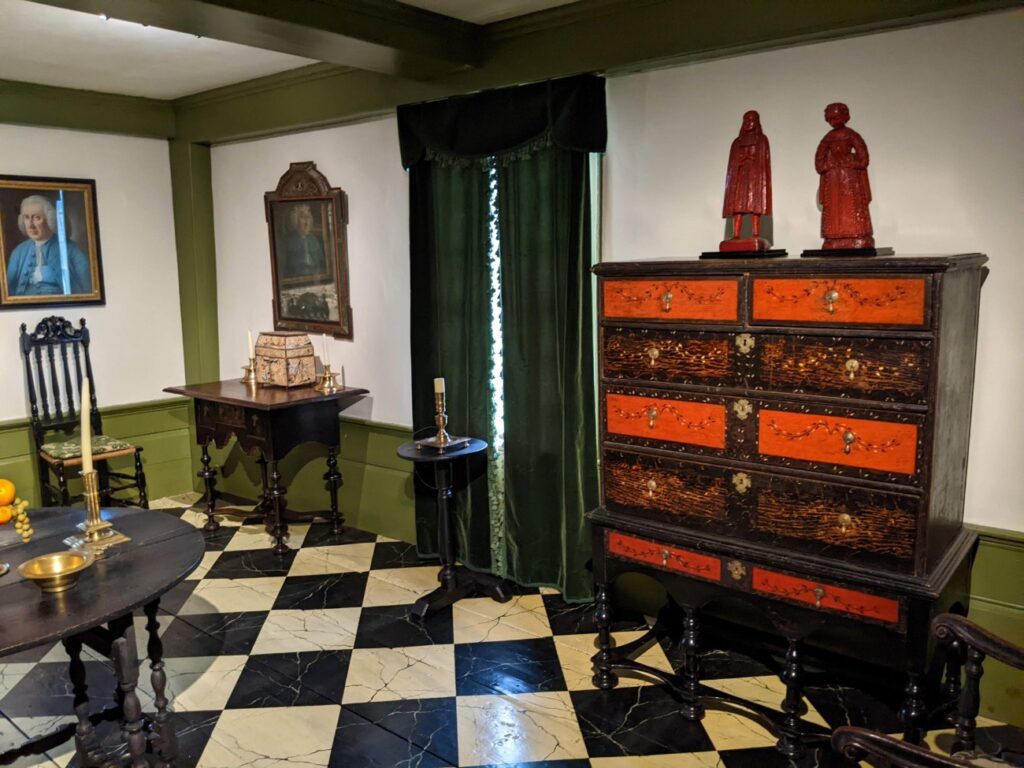
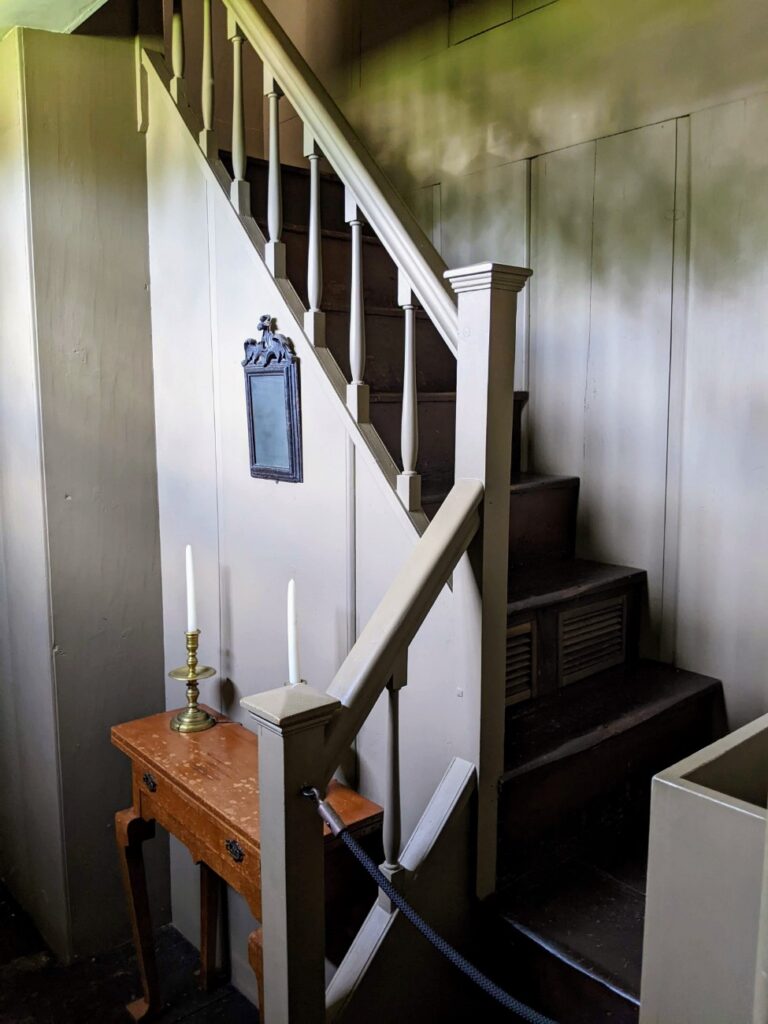
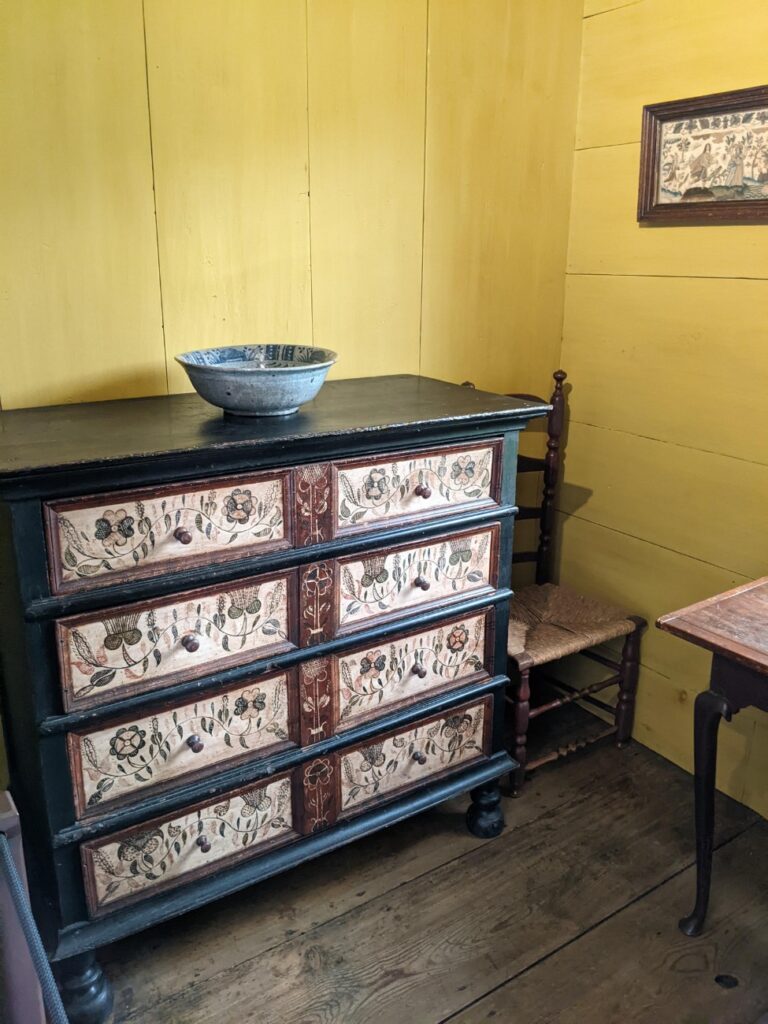
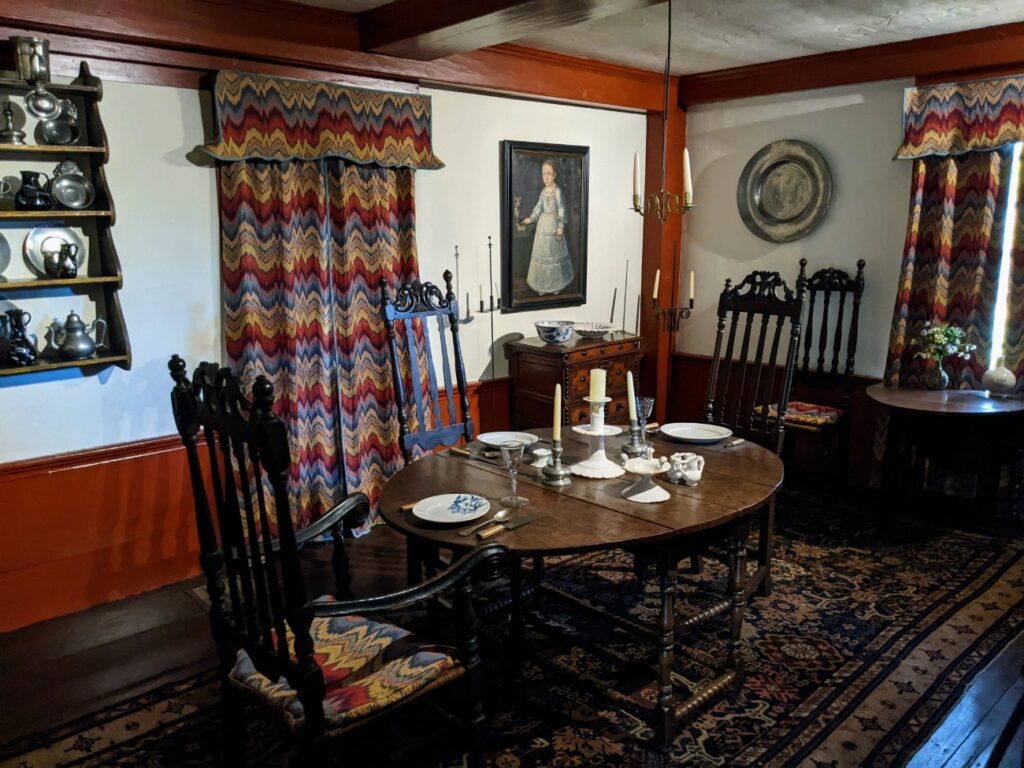
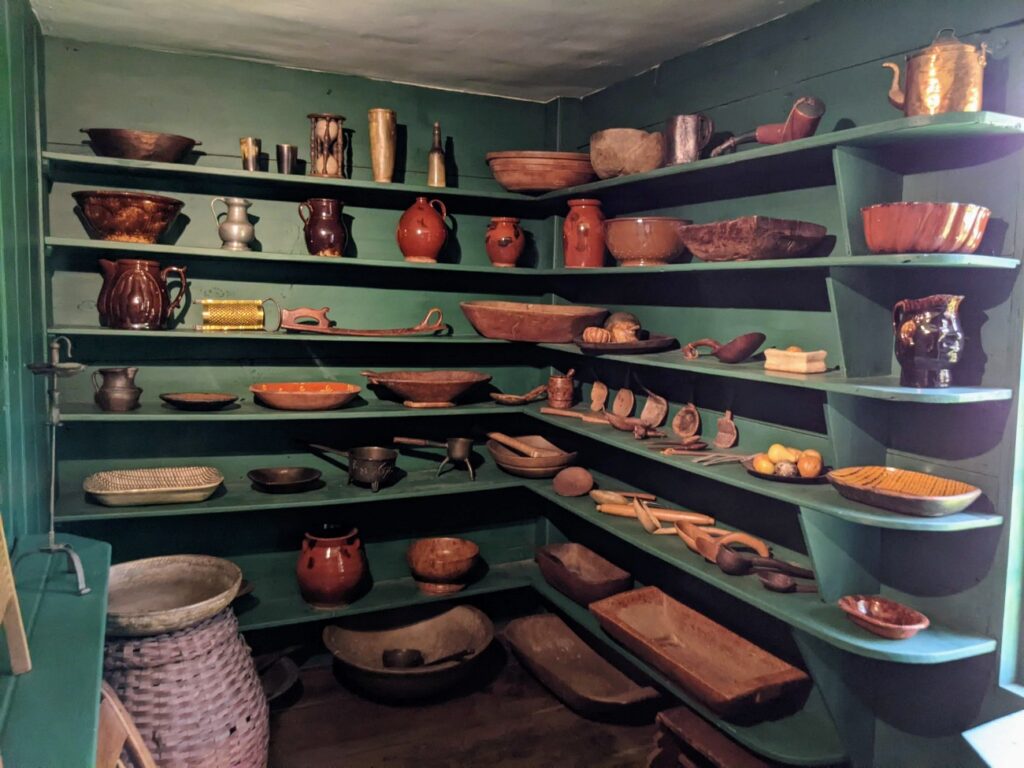
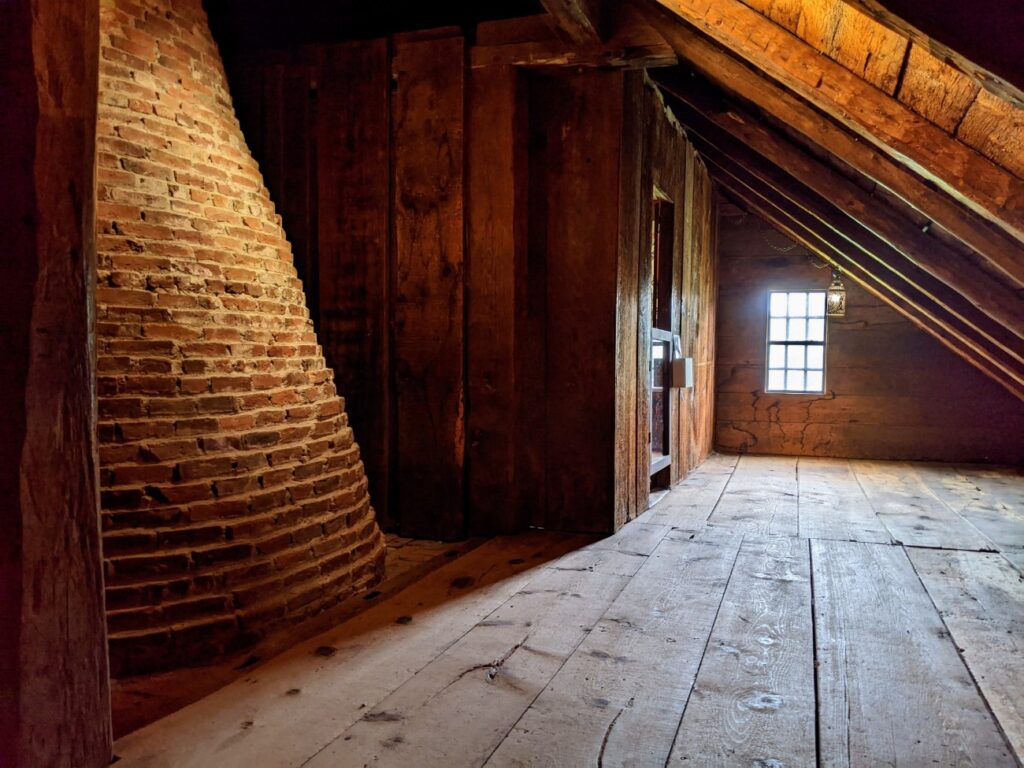
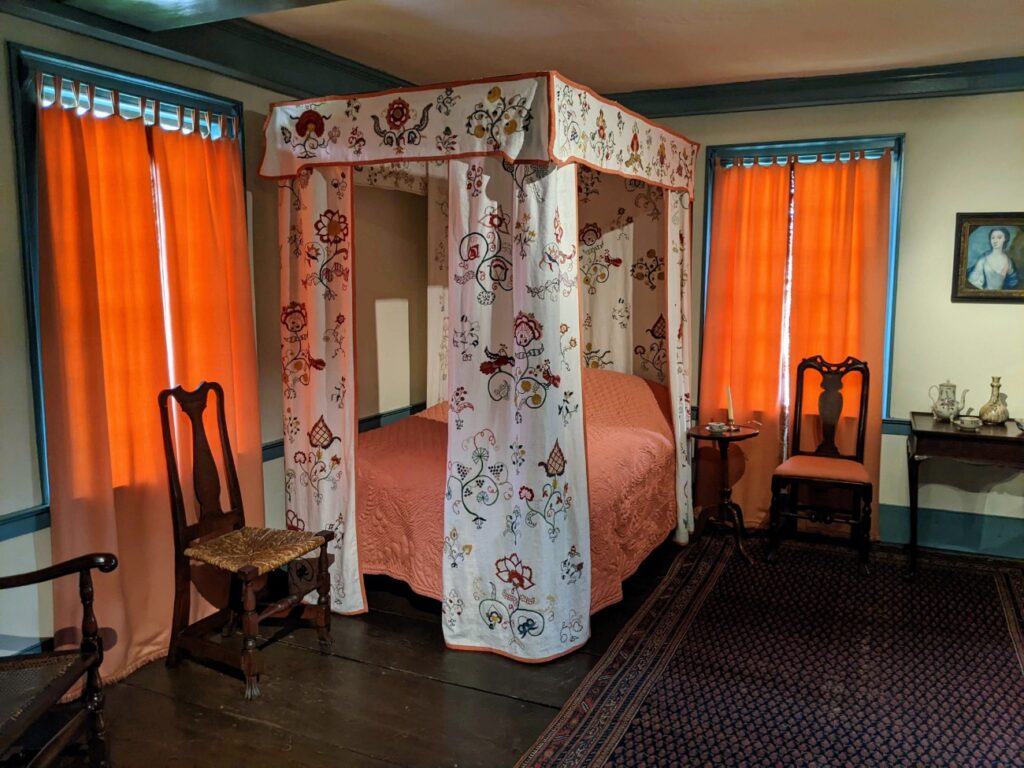
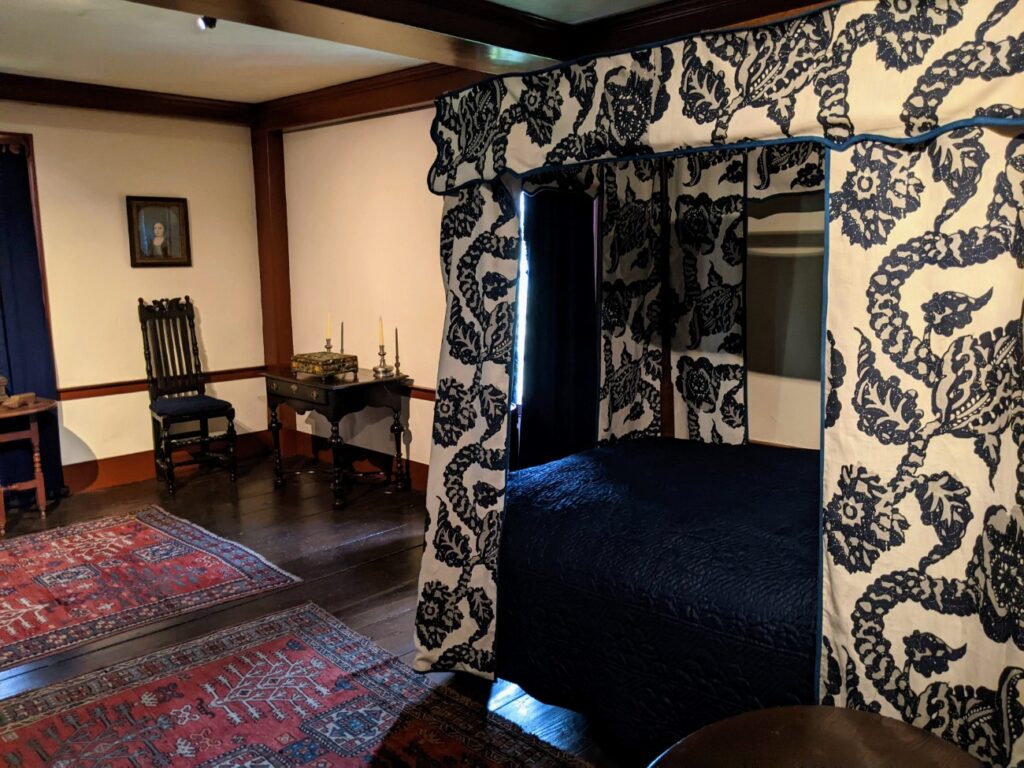
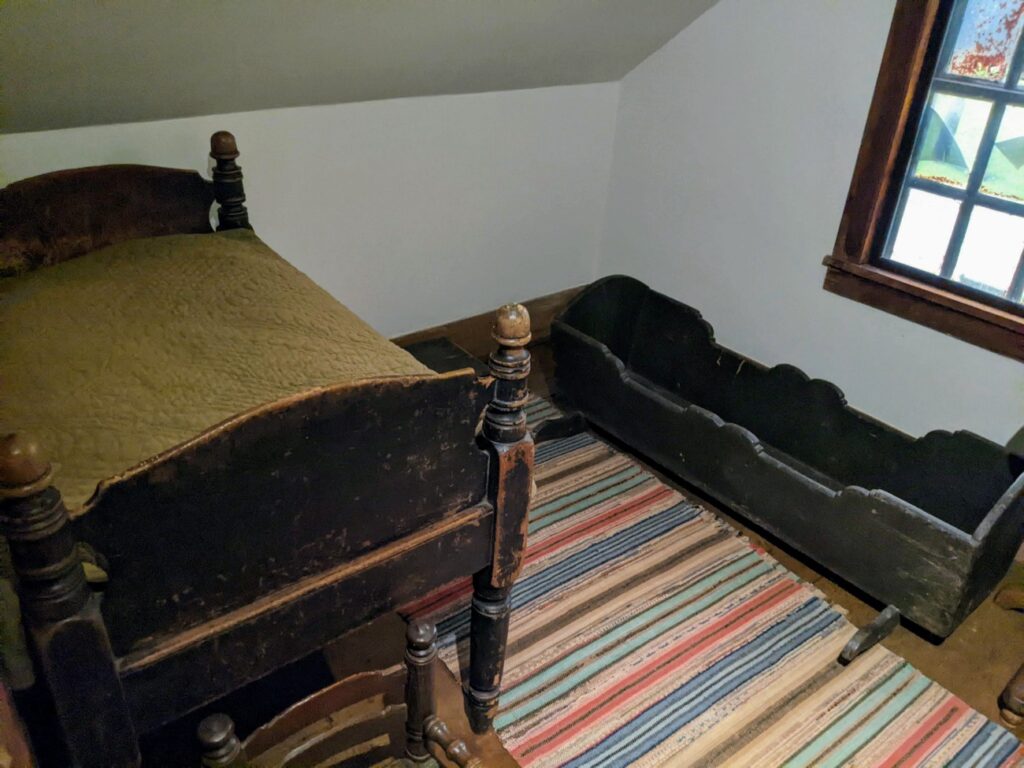
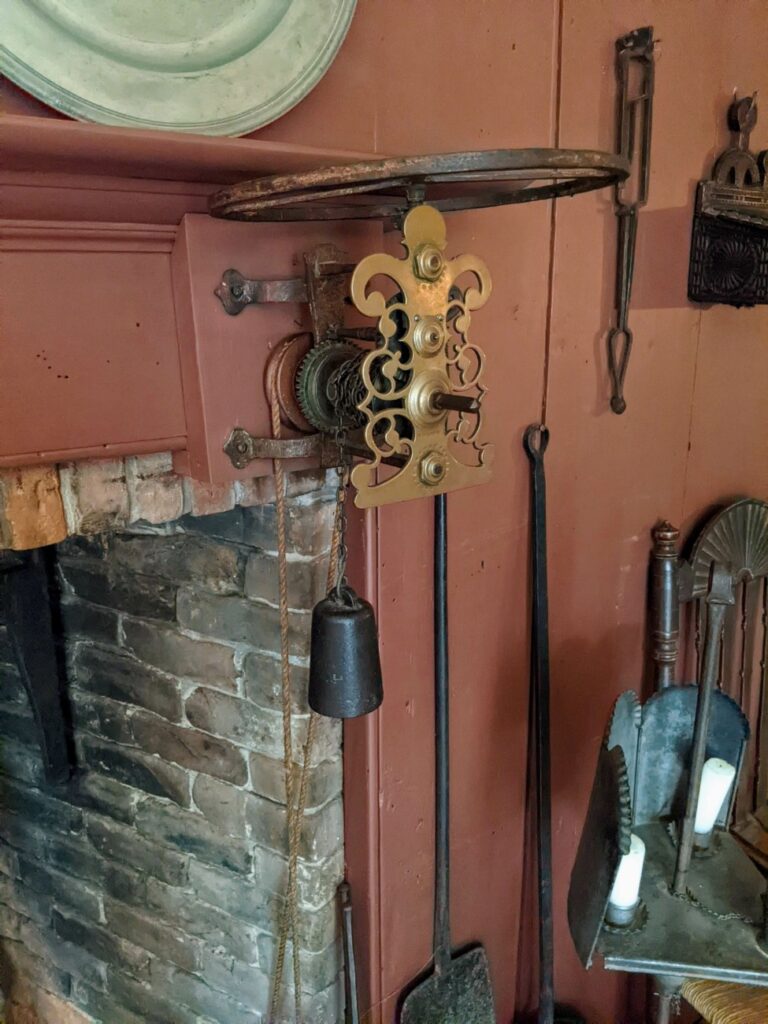
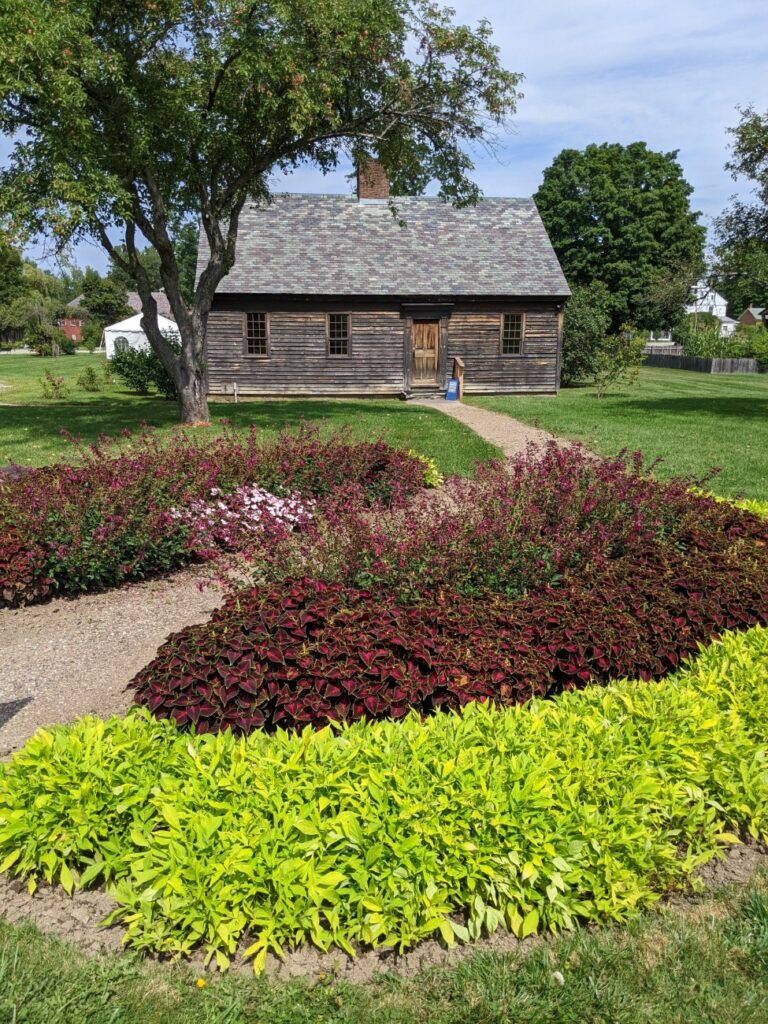
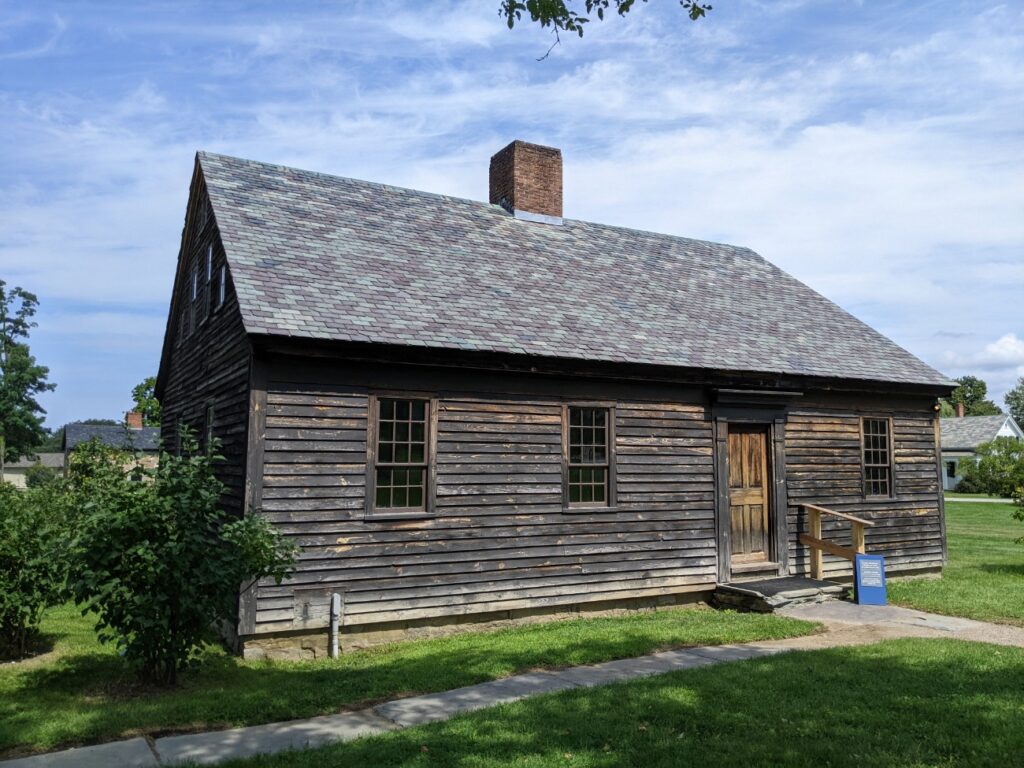
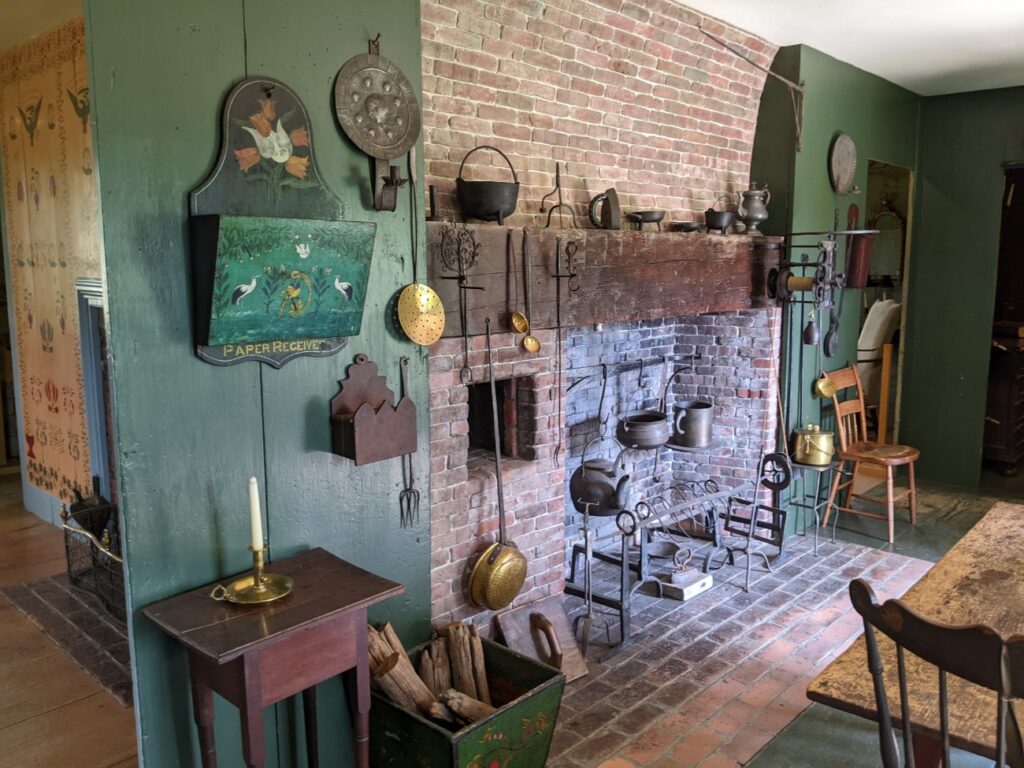
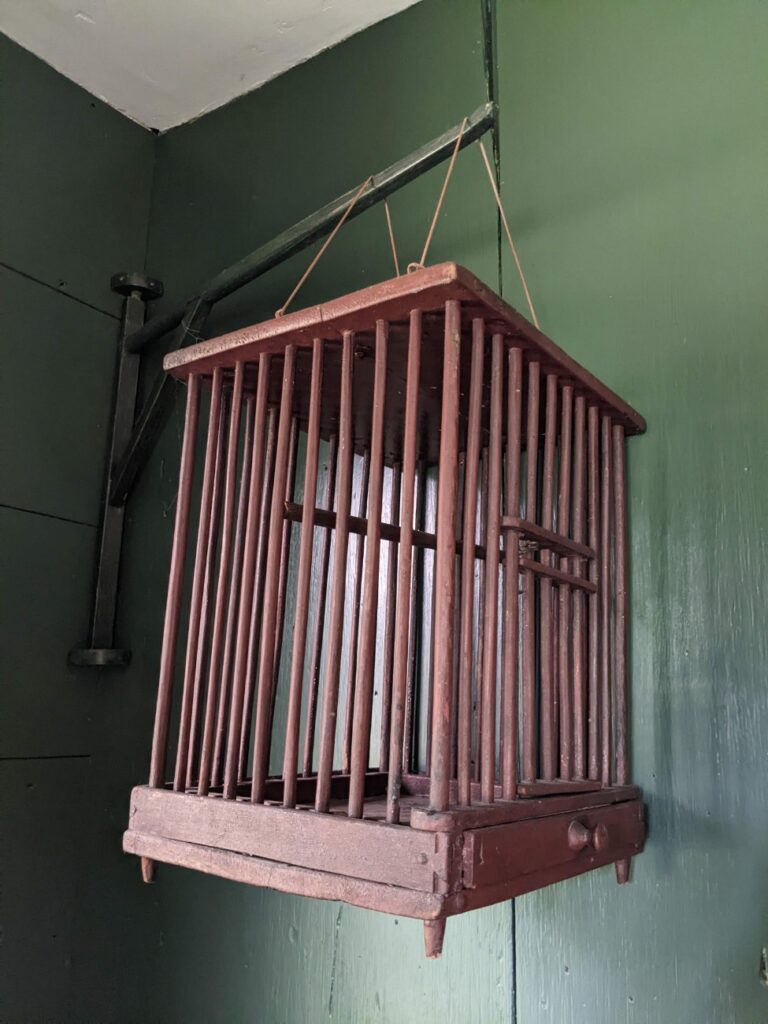
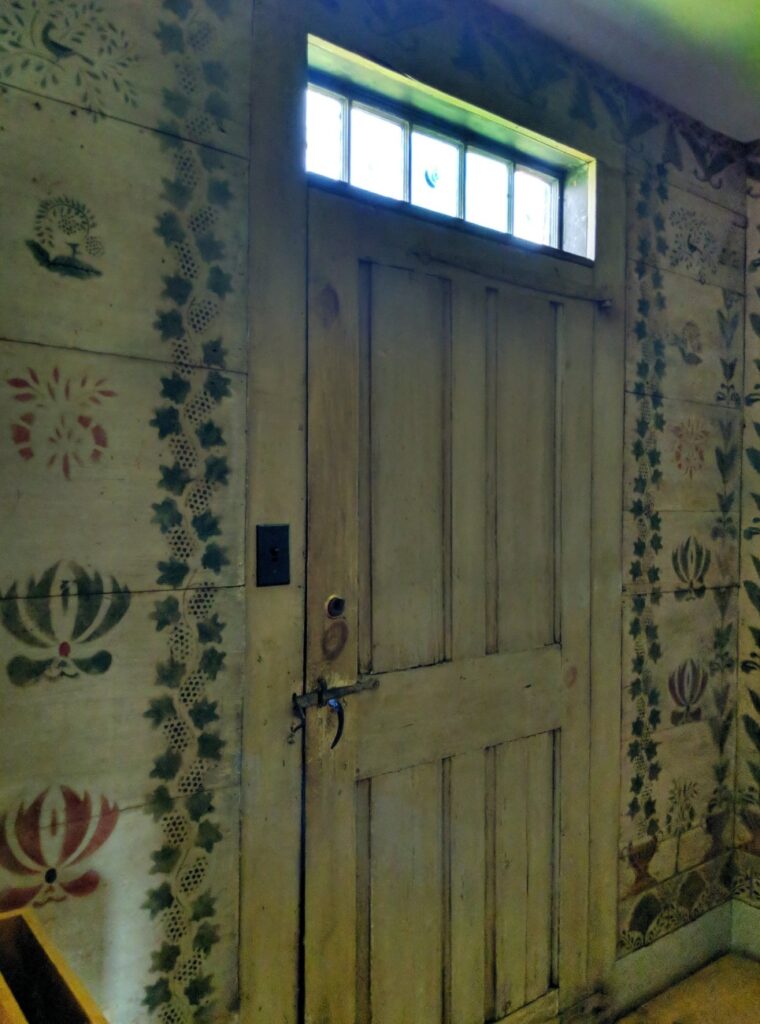
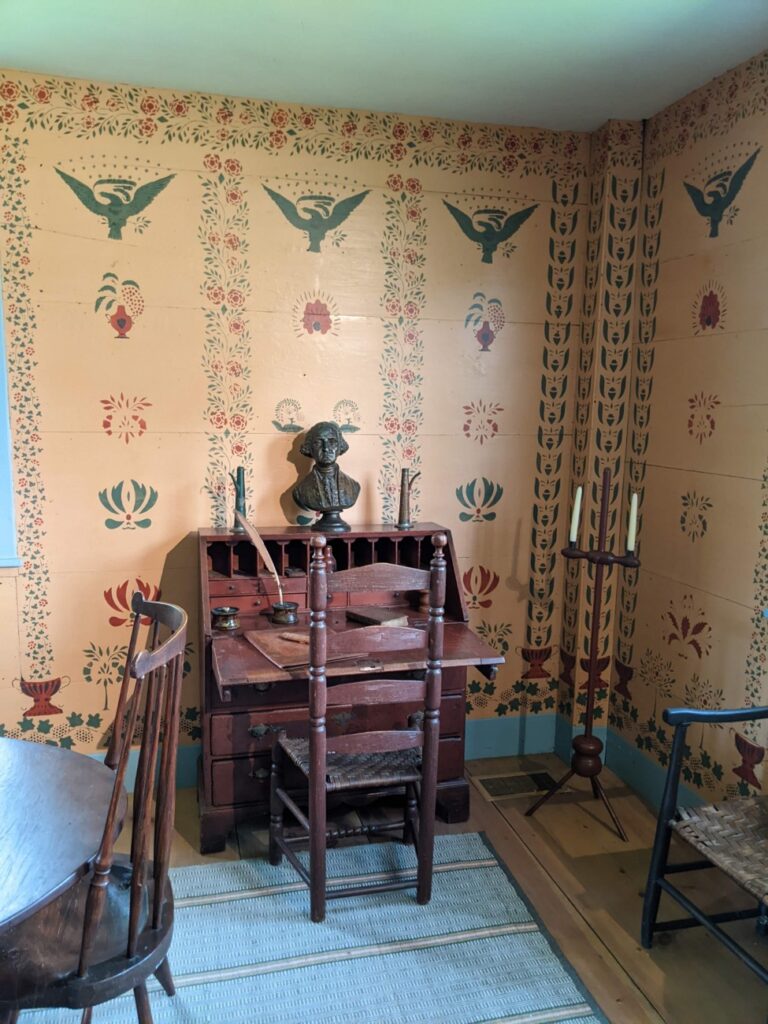
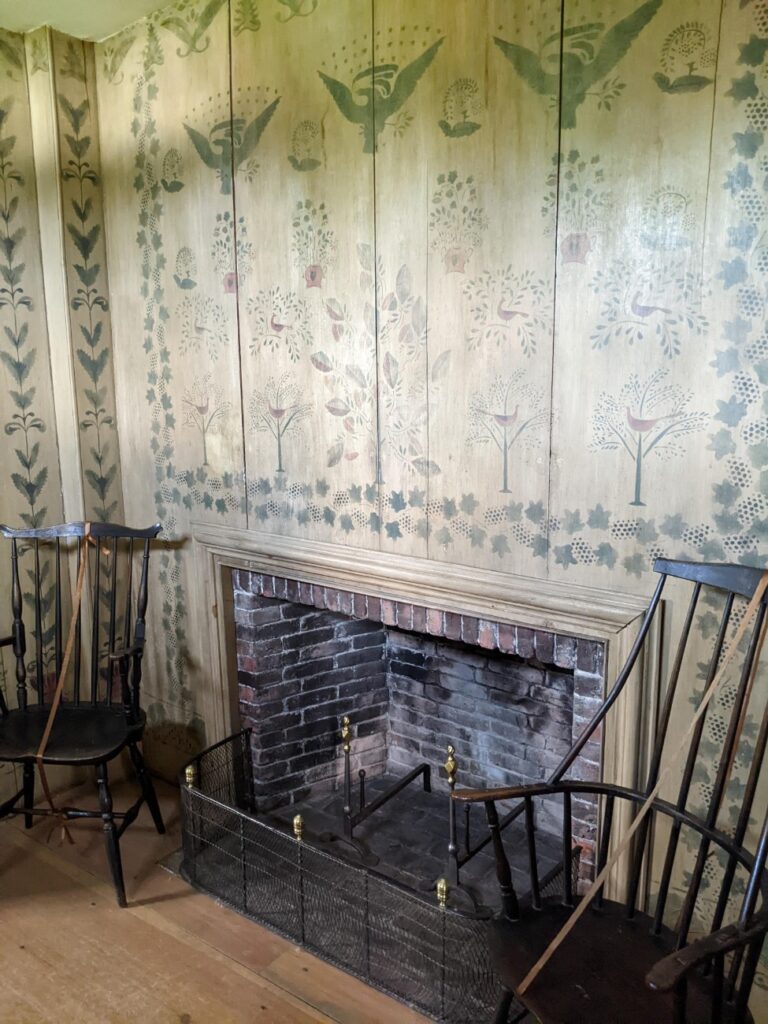
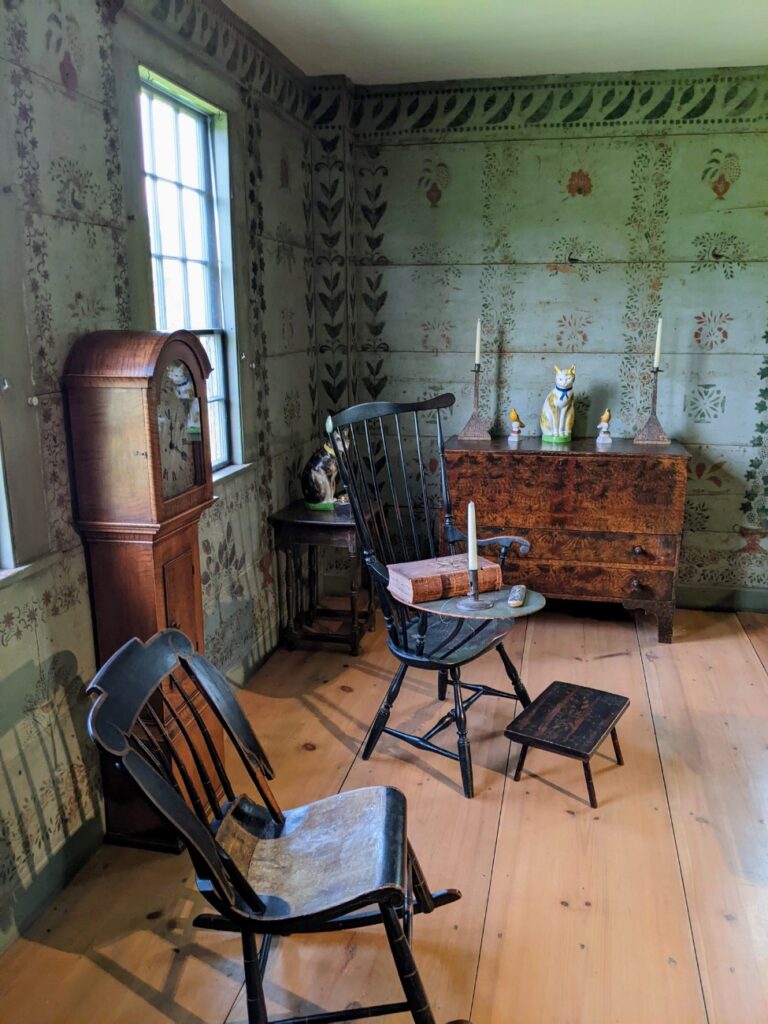
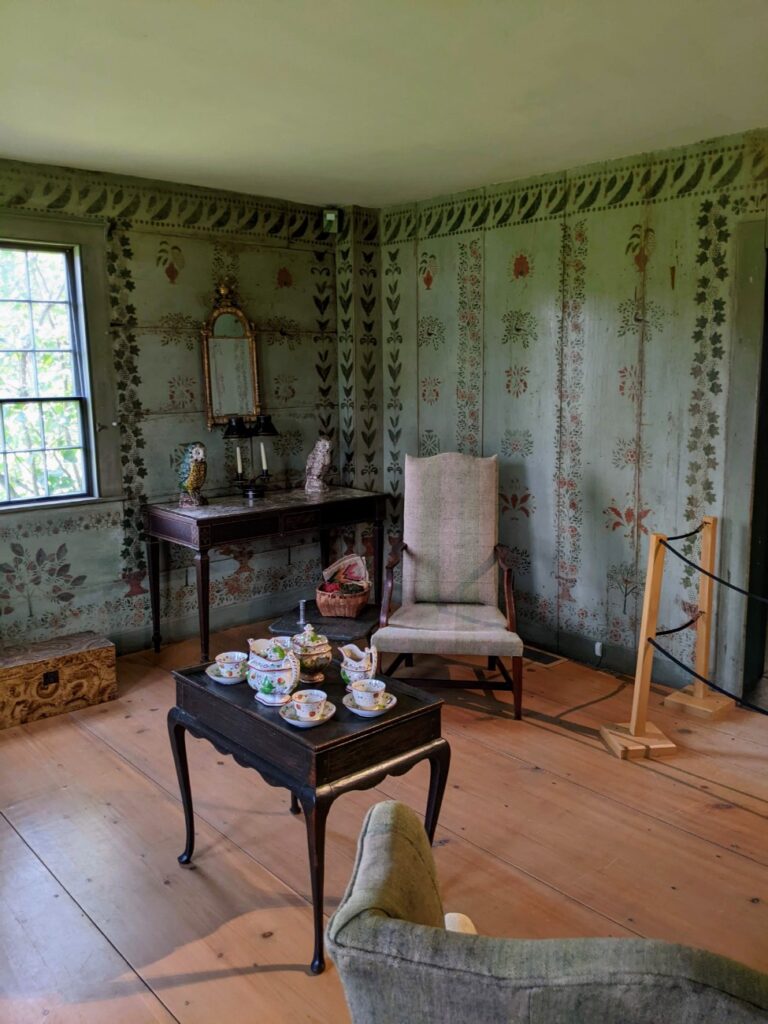
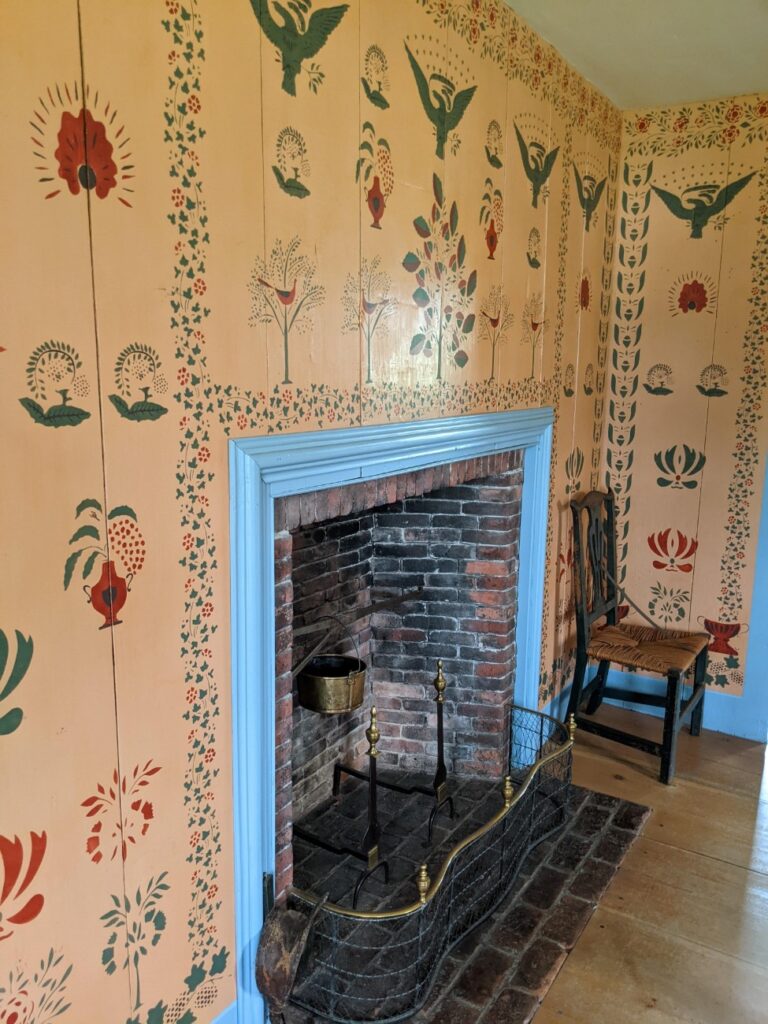
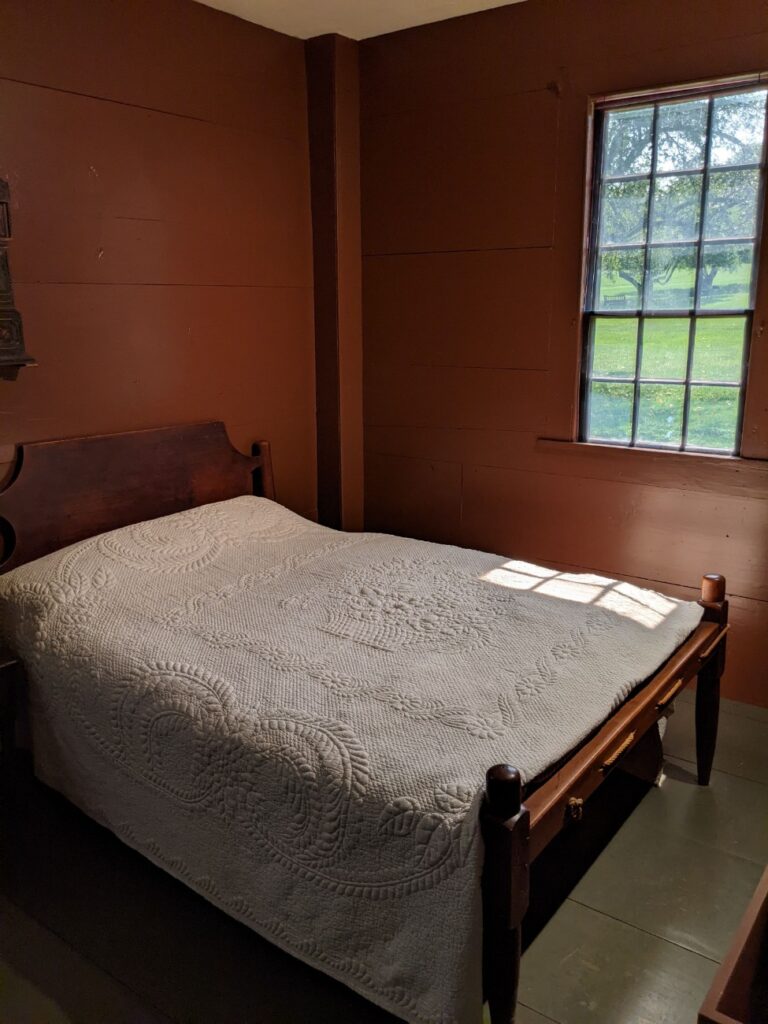
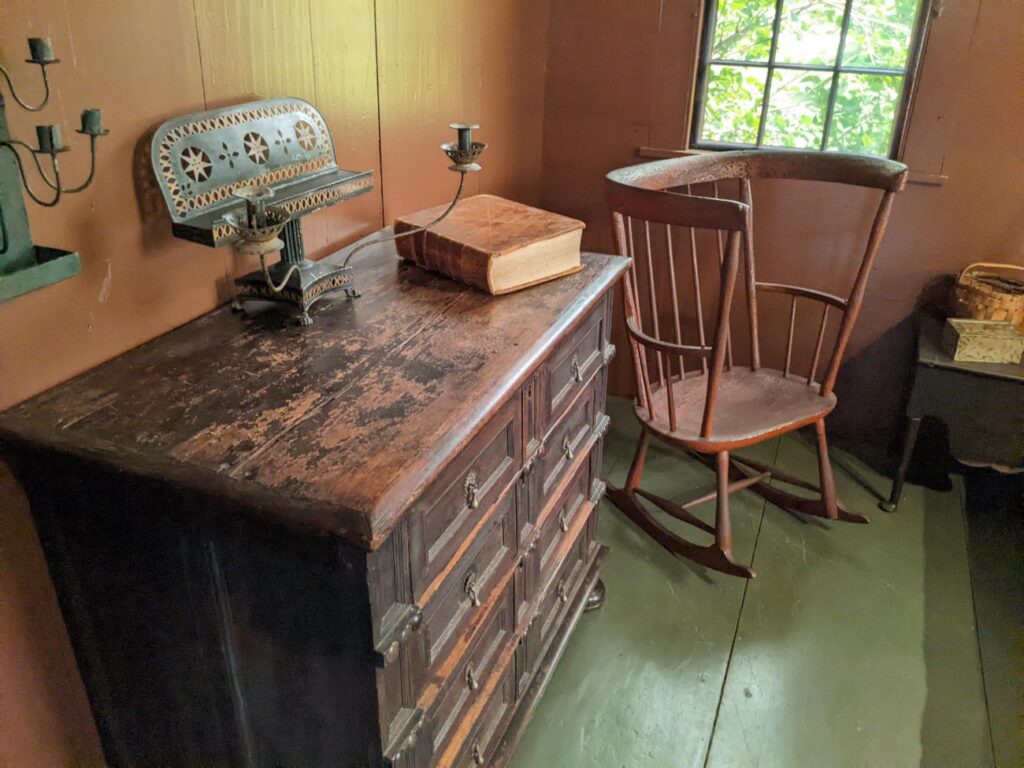
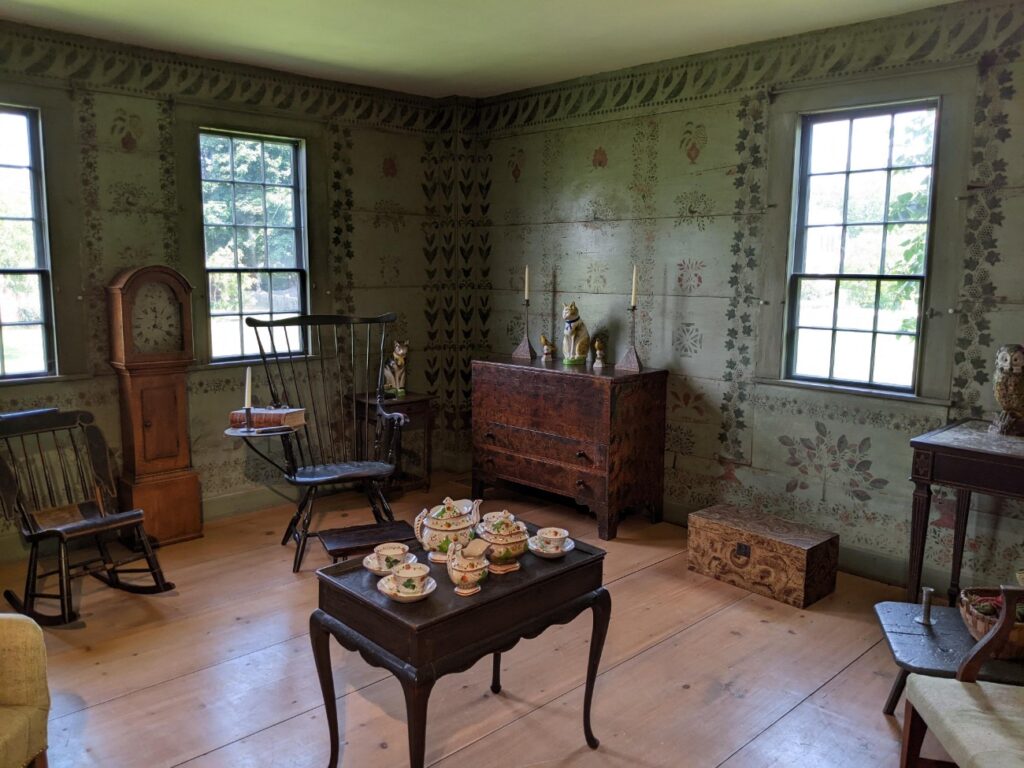
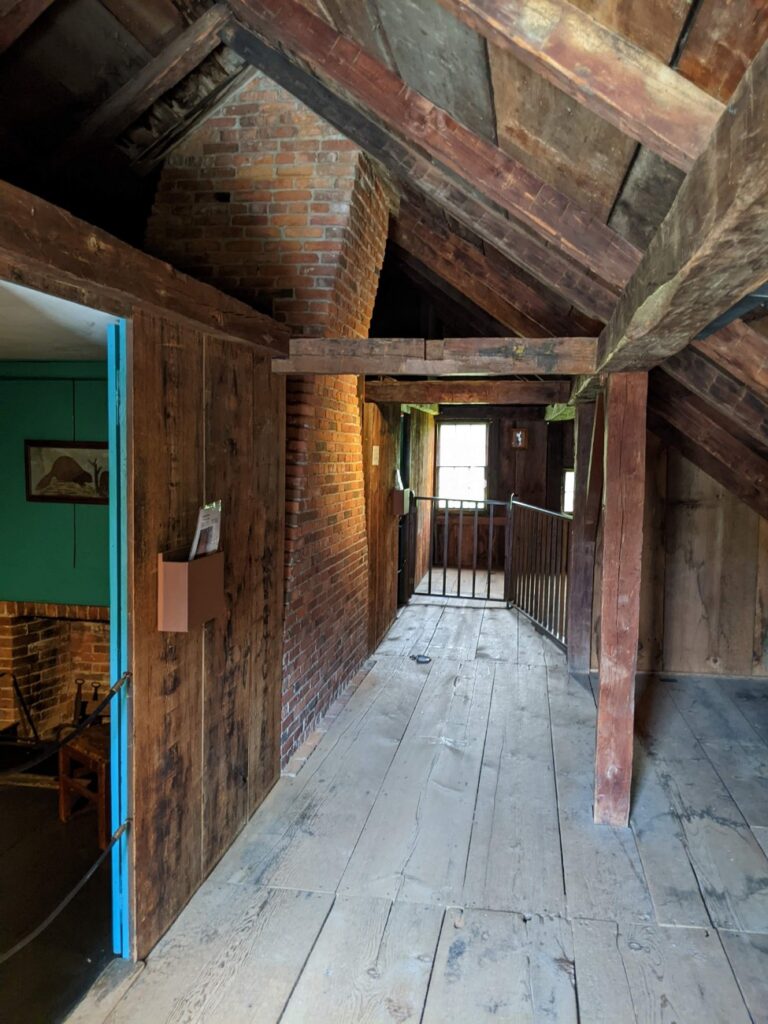
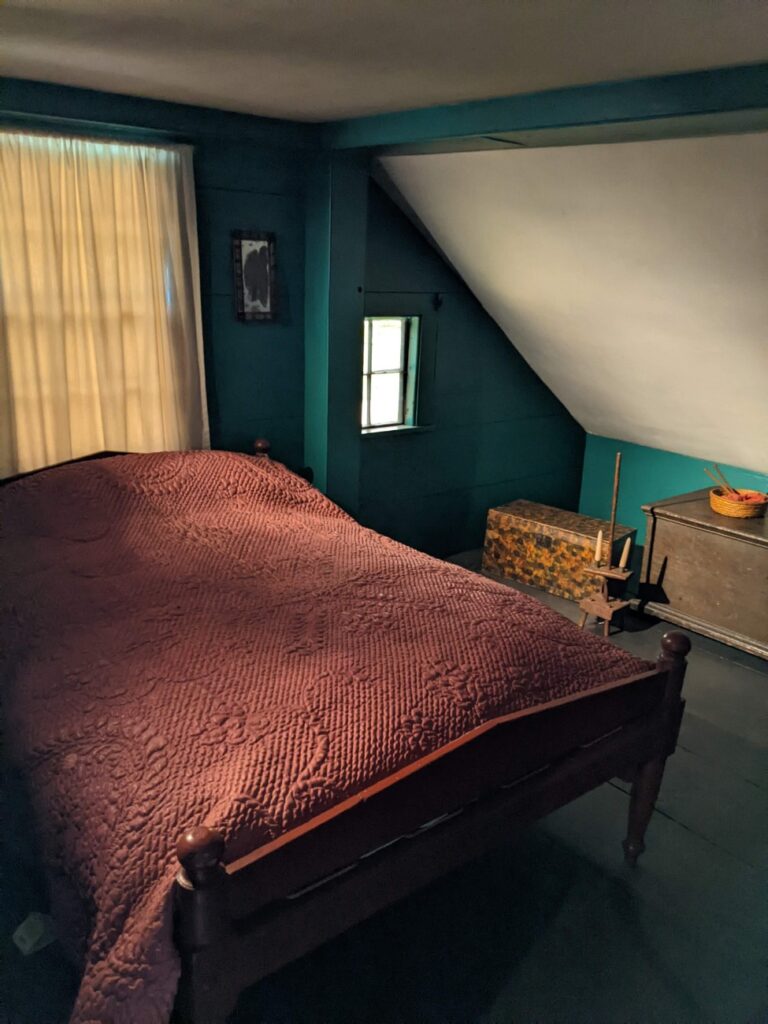
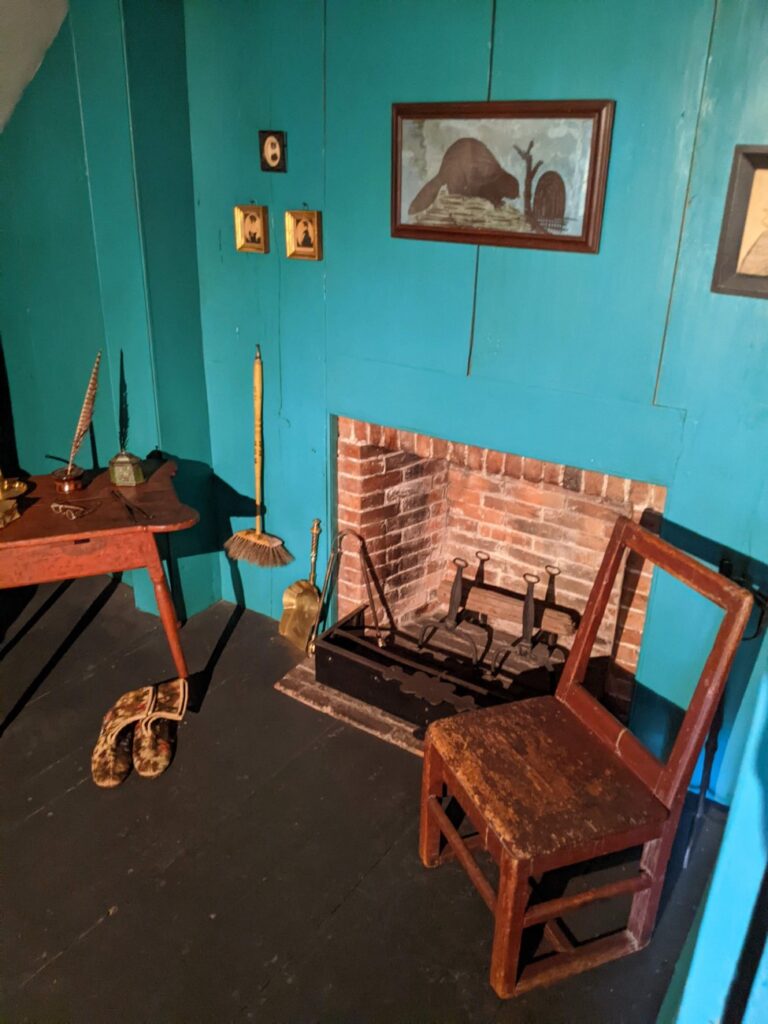
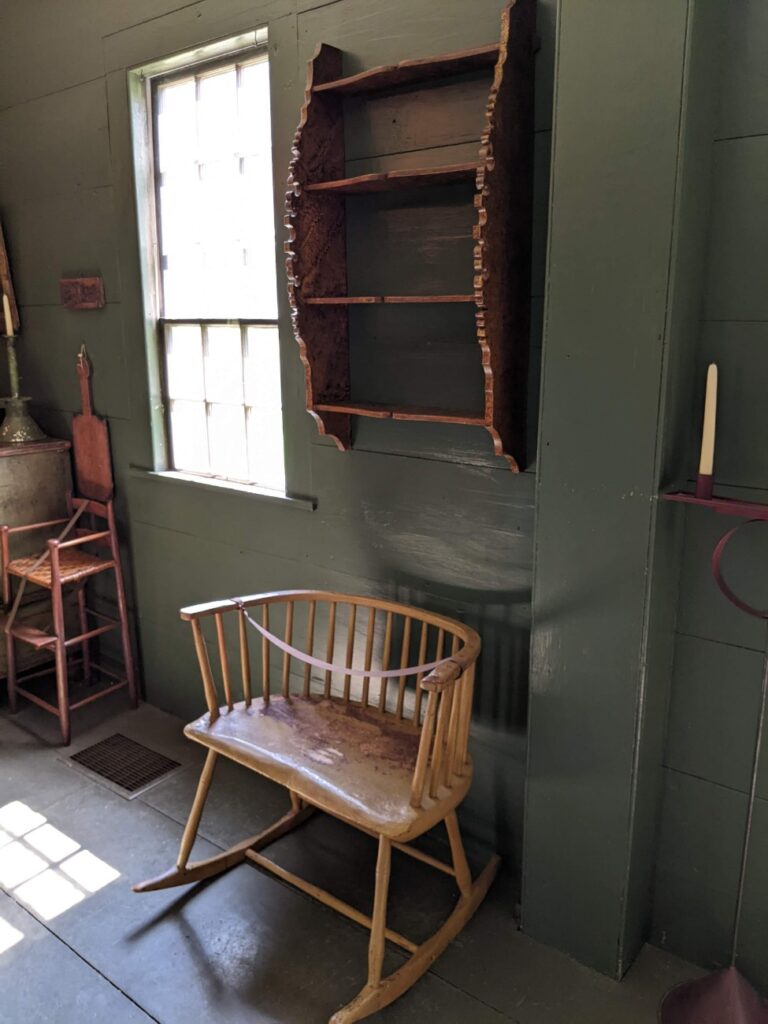
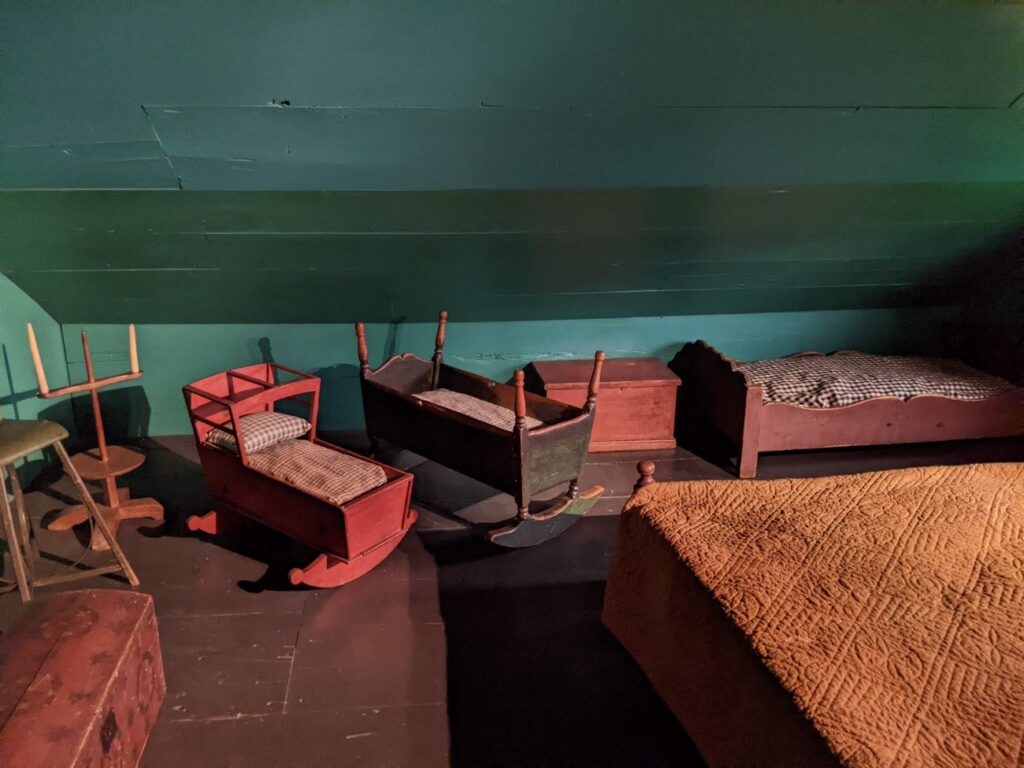
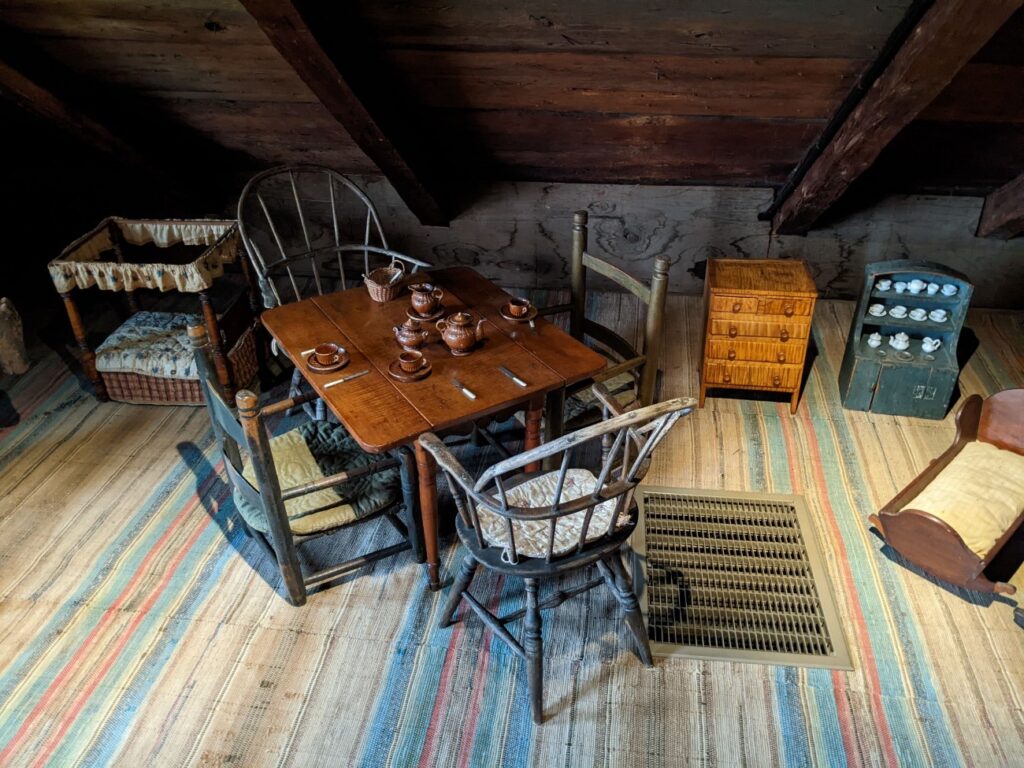
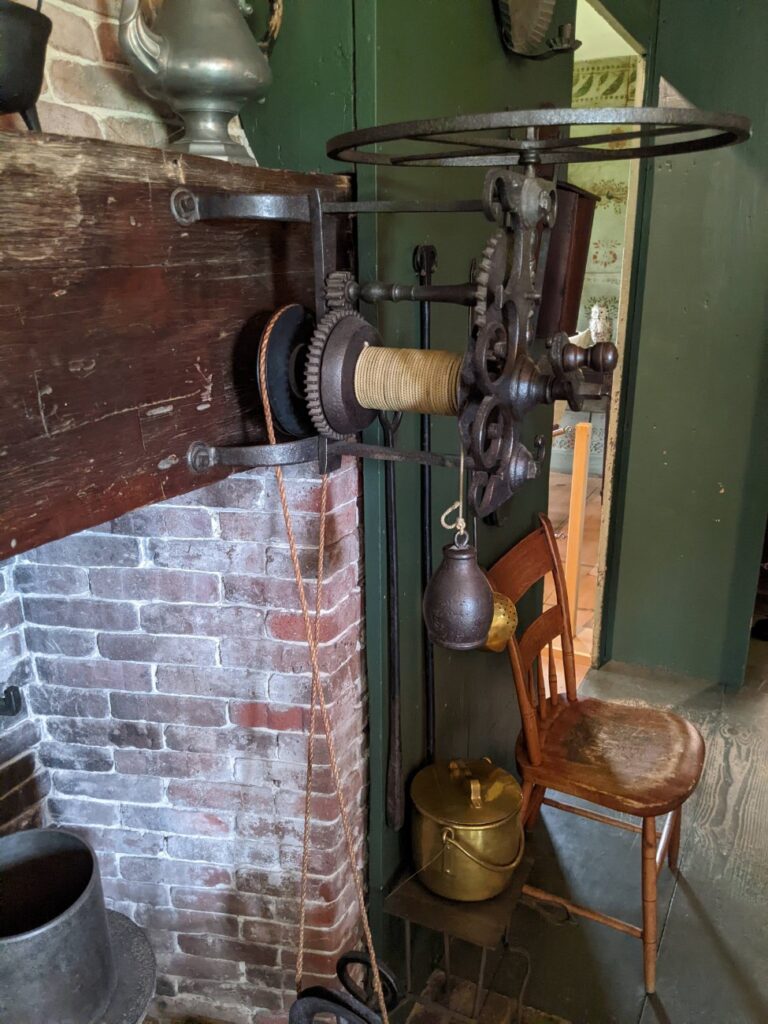
General Store
Around the corner from the Weathervane Cafe is the General Store. Originally from Shelburne, circa 1840, the store has not only dry goods and supplies, but also a tap room, a post office, and a barbershop! Looking at the wall-to-wall, floor-to-ceiling packed store, it makes my head spin to think that one person might have collected everything in here.
Attached to the side of the General Store is an Apothecary Shop, which wasn’t open during my visit.
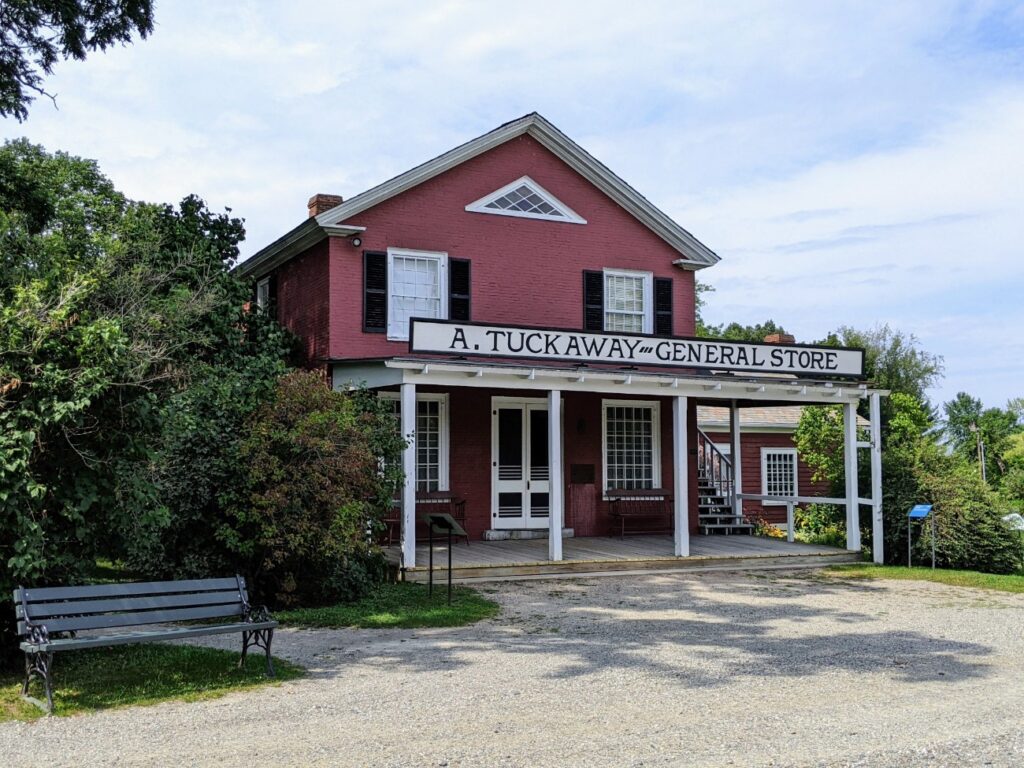
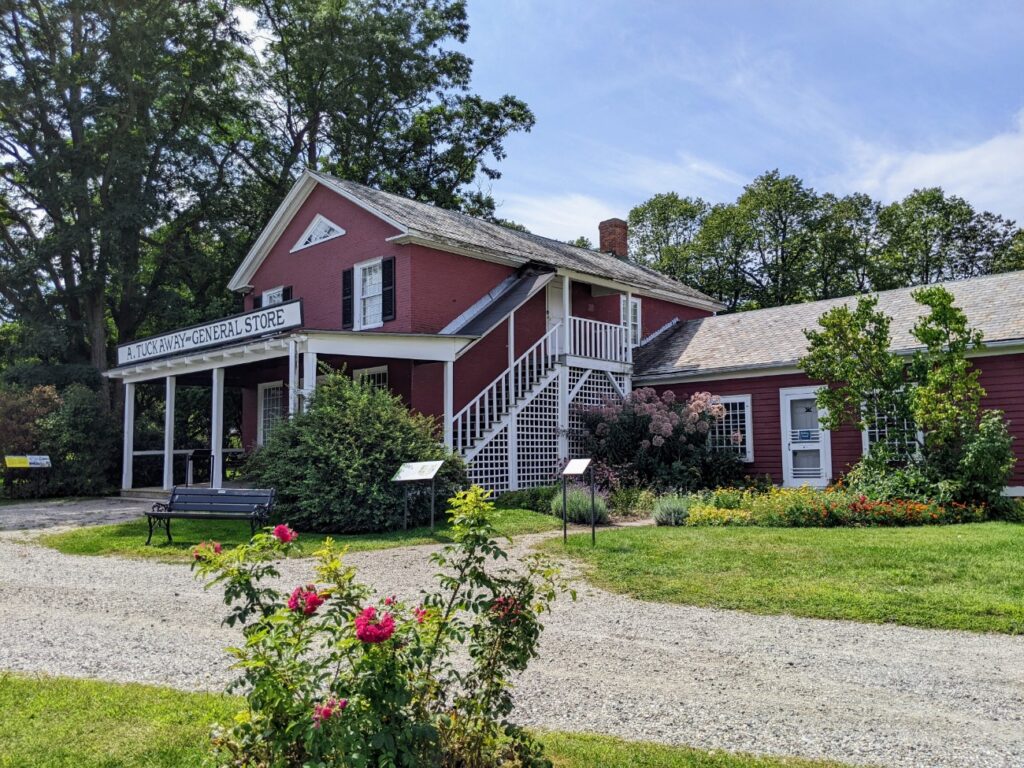
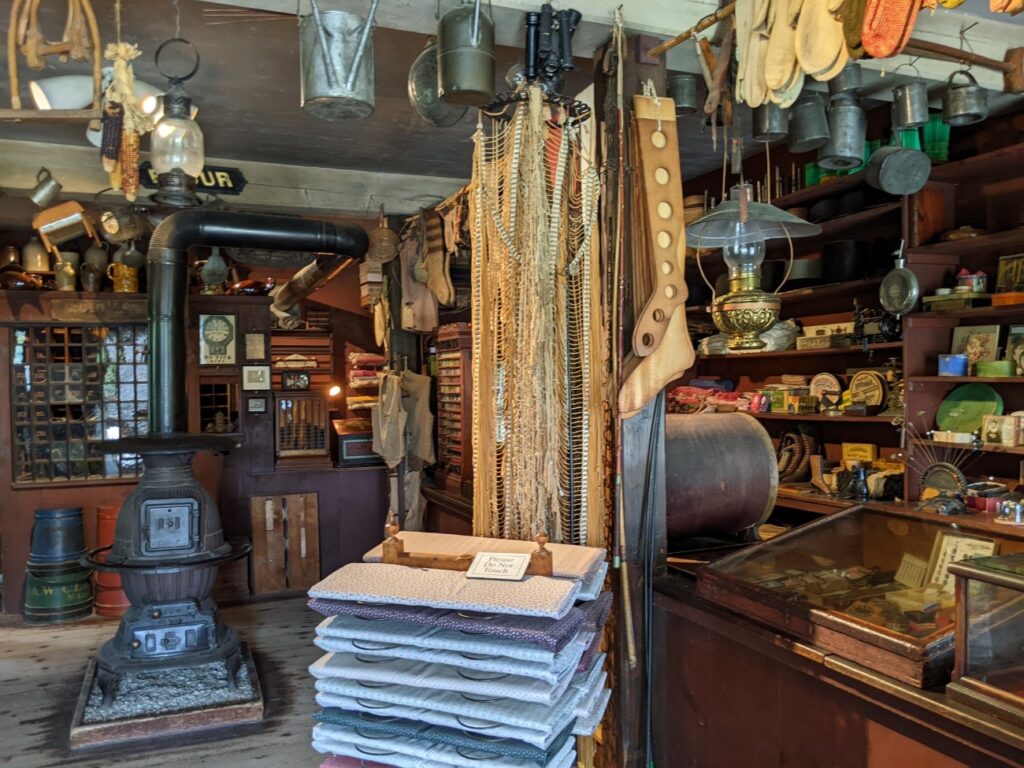
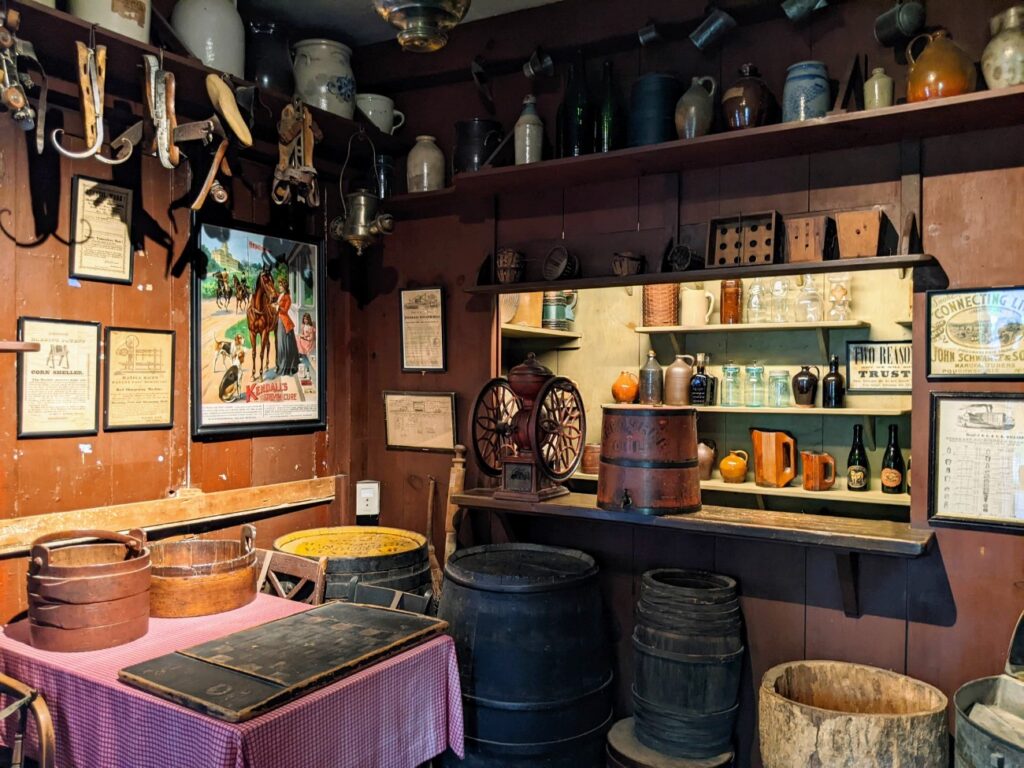
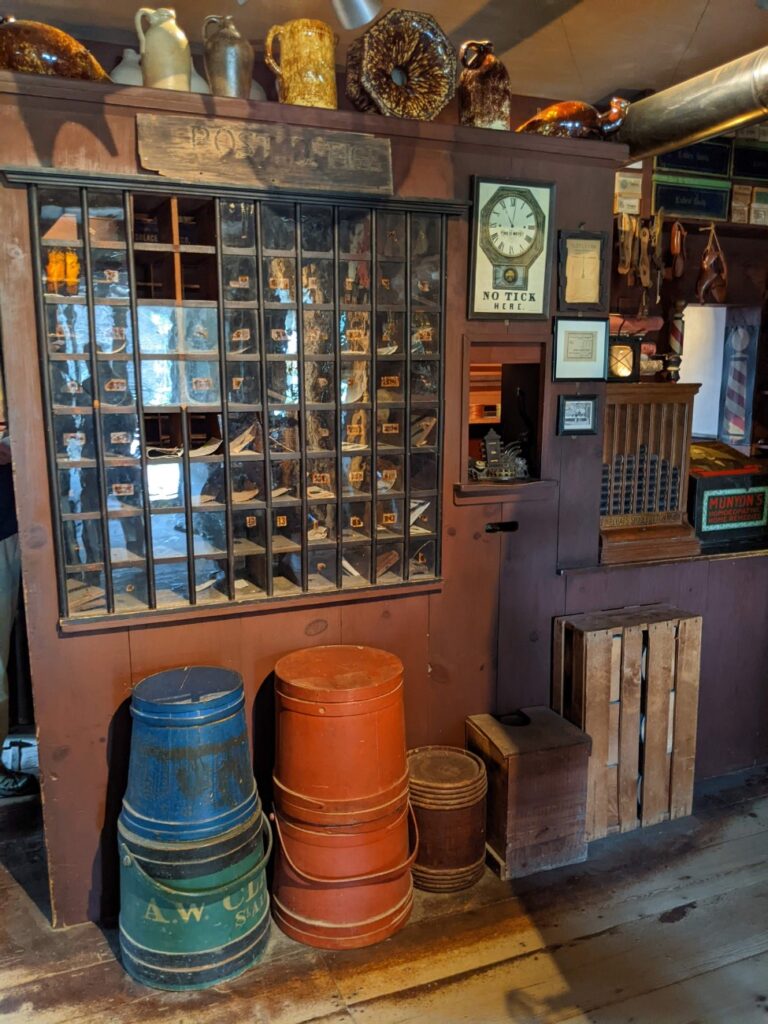
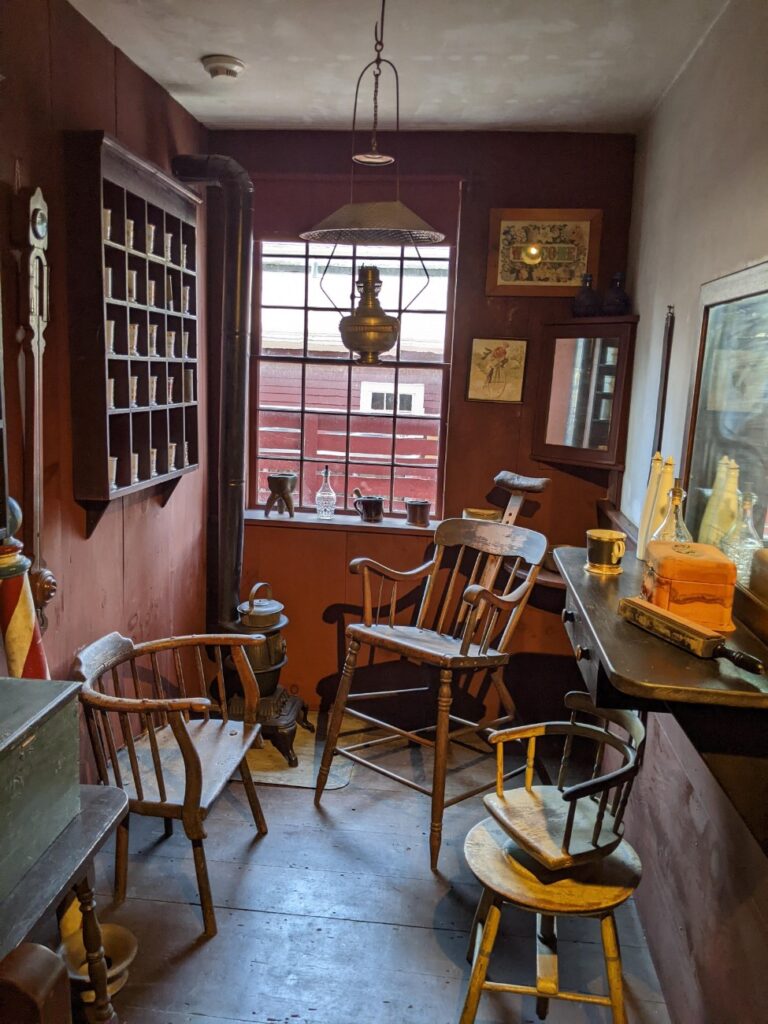
Dutton House
Past the General Store, the Dutton House represents the life of an enterprising family business in the 1820s. Built in 1782 in Cavendish, VT, you can see how the original saltbox-style family house has been expanded to include a tavern, a boarding house, and a large kitchen.
Inside, see many various early American furnishings, from simple cot beds to more luxurious canopied ones. I like all the bathtubs in the attic, supplied for the discerning traveler, of course.

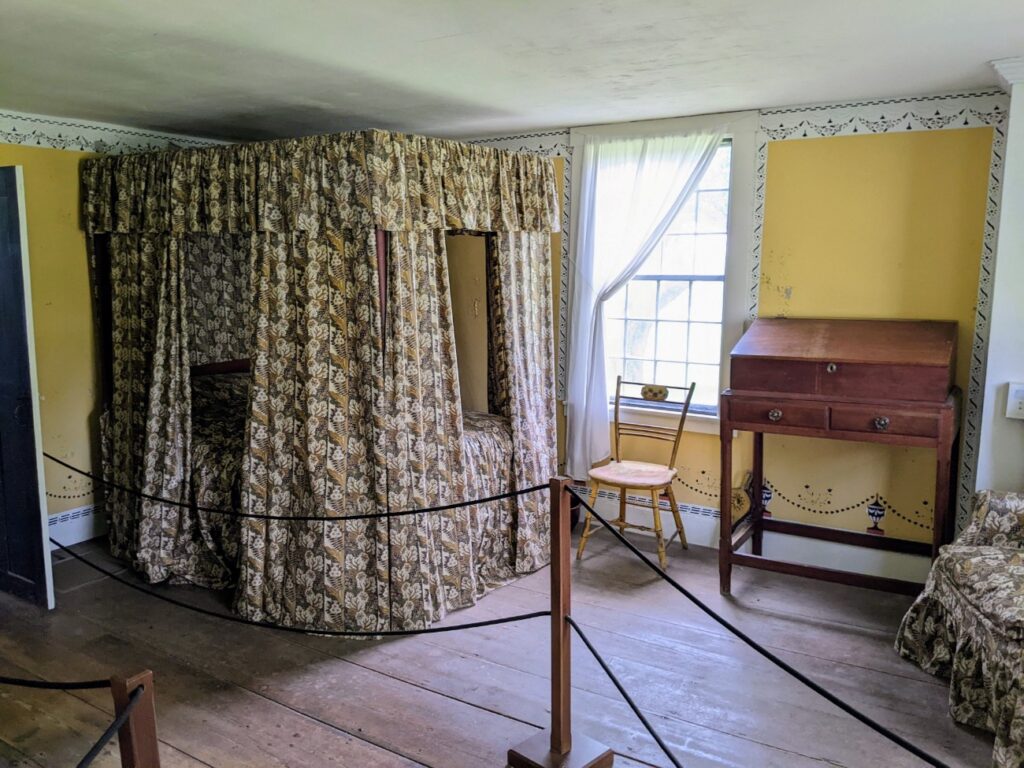
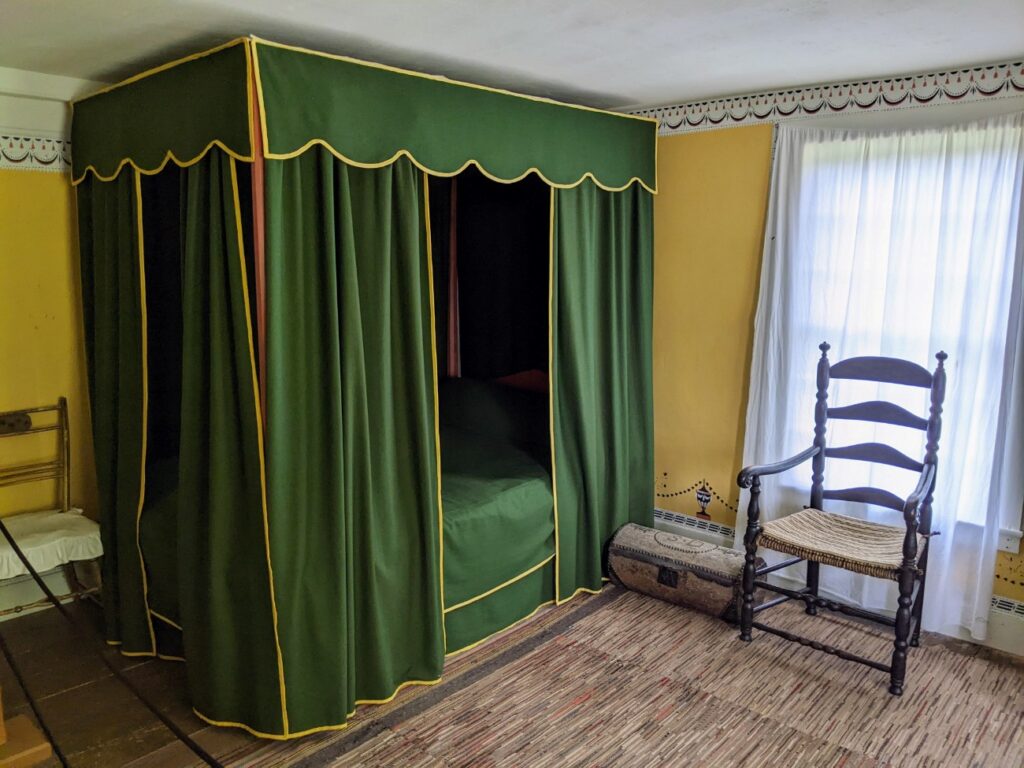
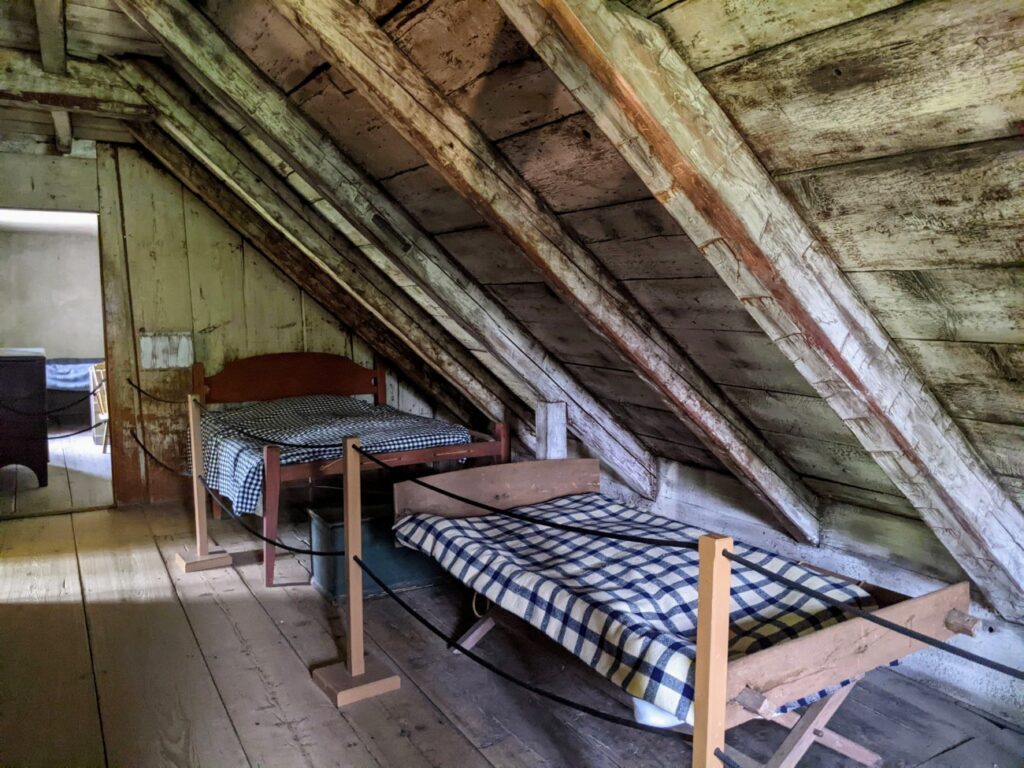
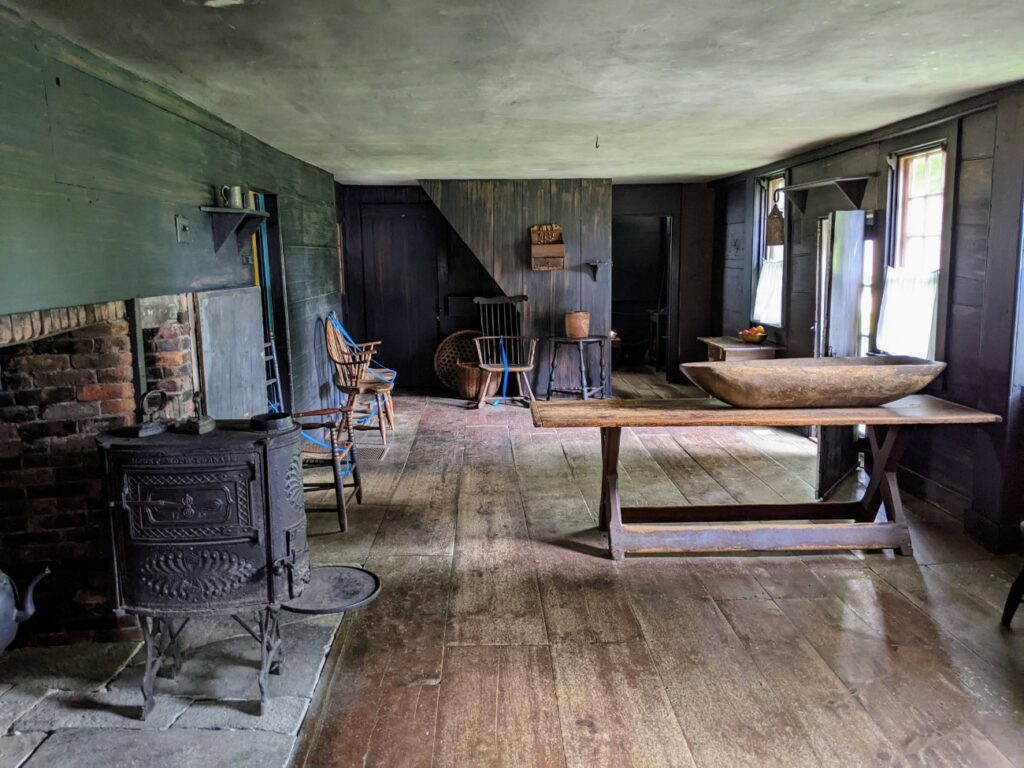
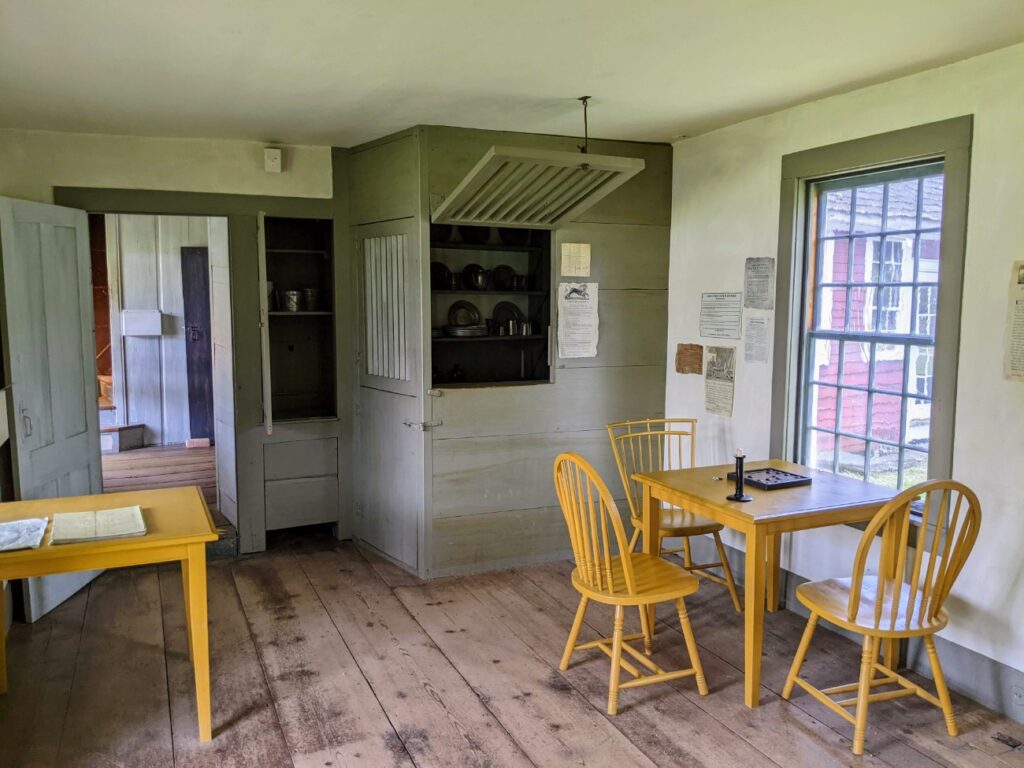
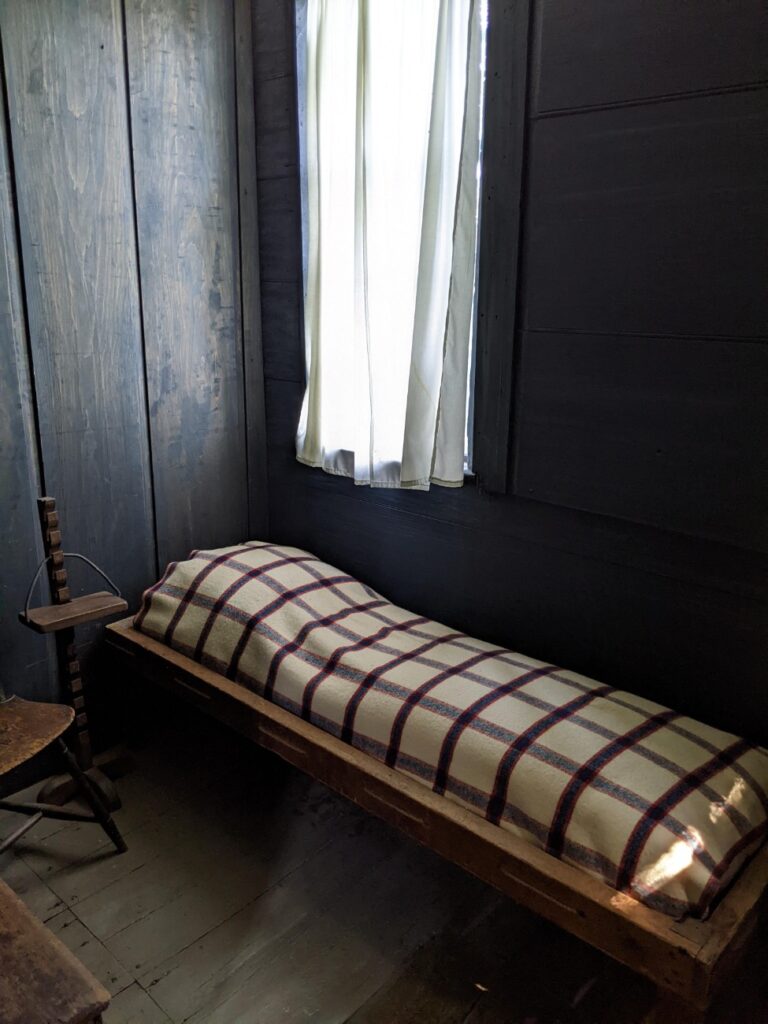
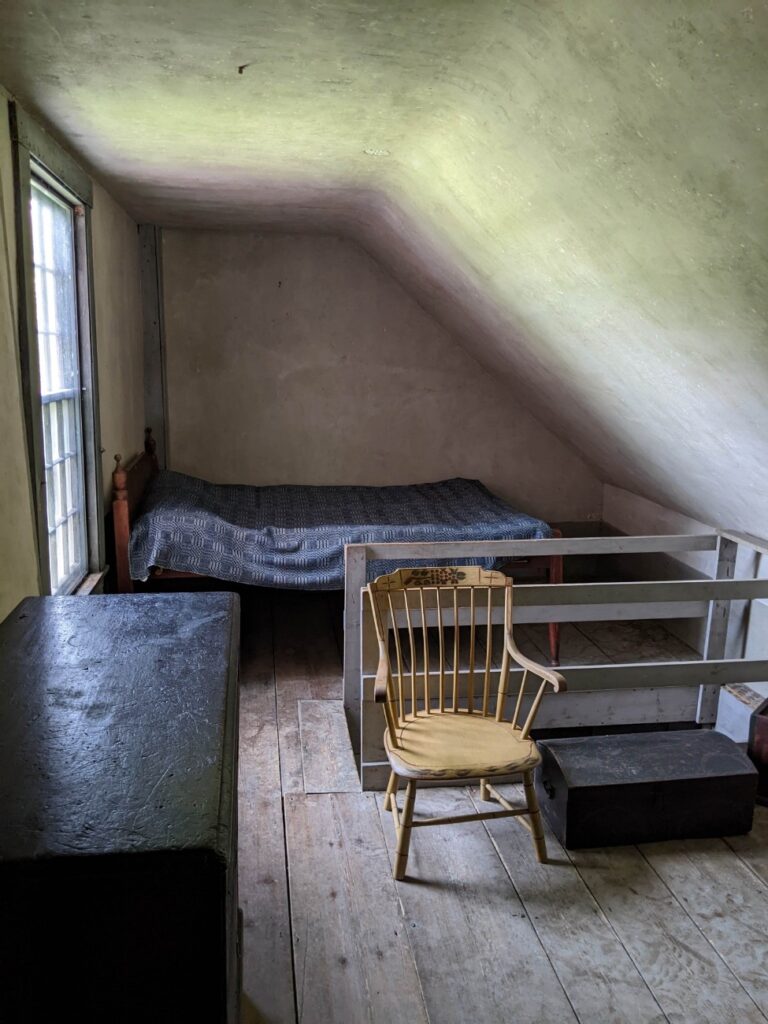
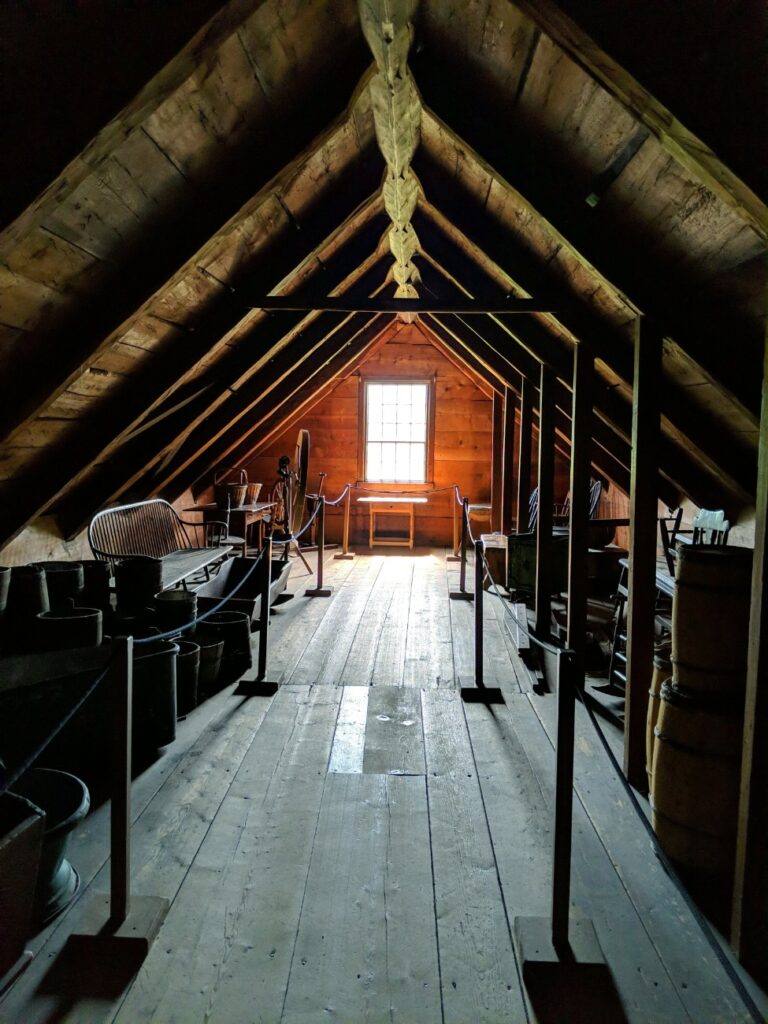
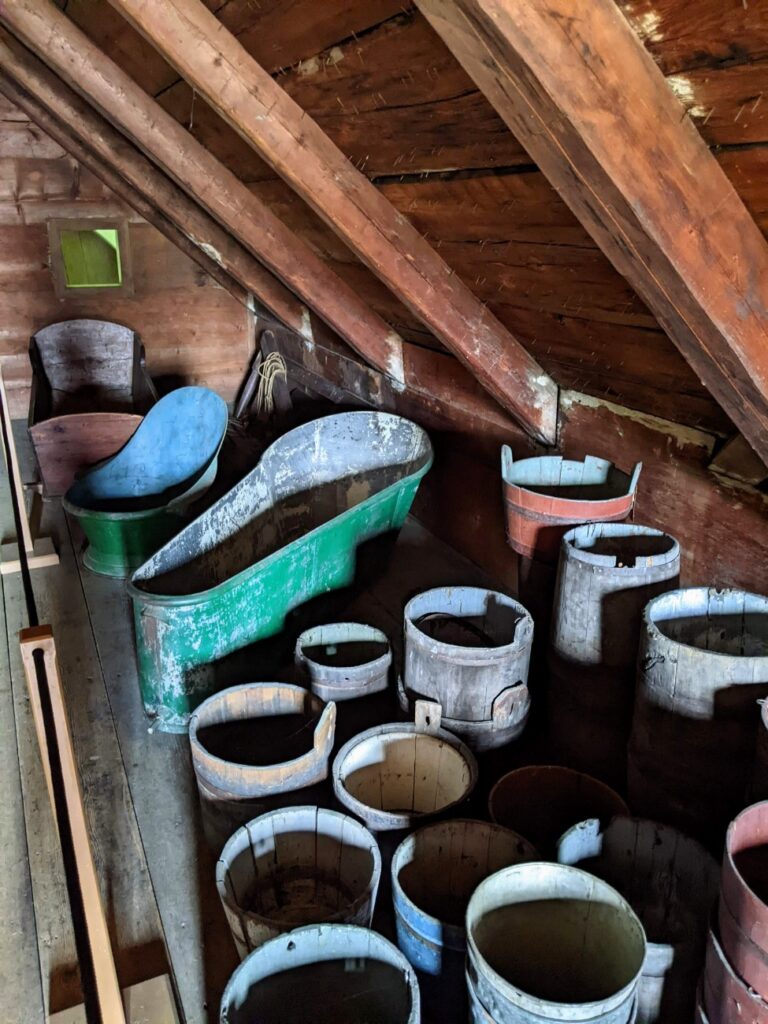
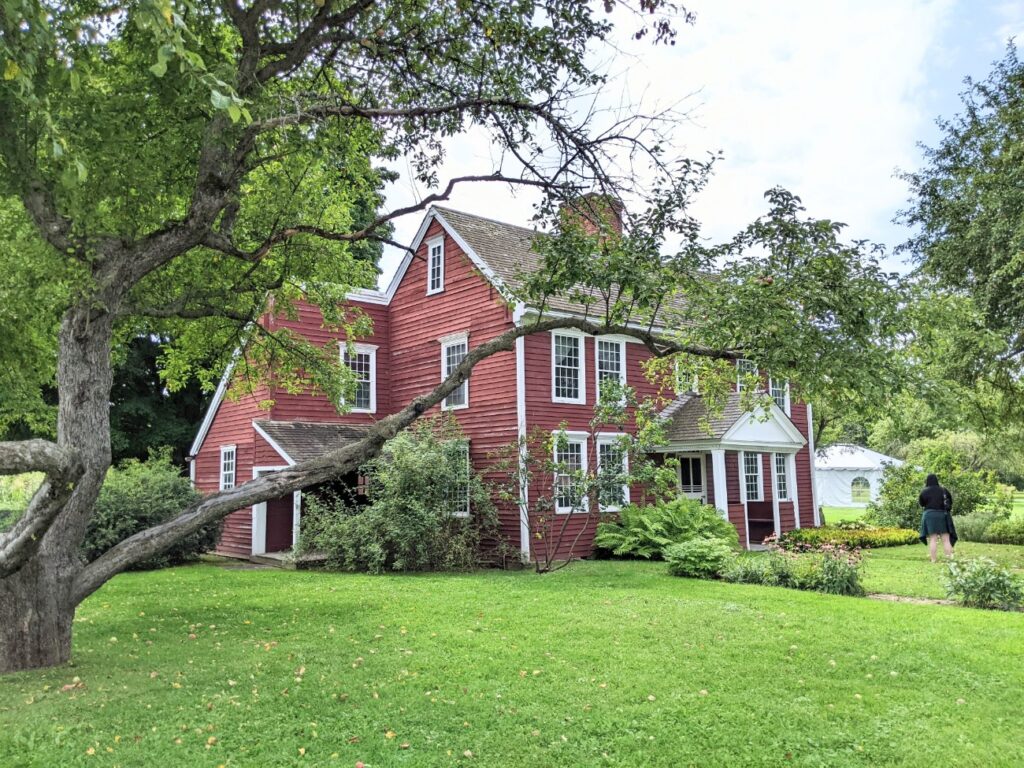
Vermont House Gallery
The Vermont House Gallery is a beautiful stone house from Shelburne, built in 1790. It houses a collection of new and old American furniture. Sadly, the building was closed during my visit.
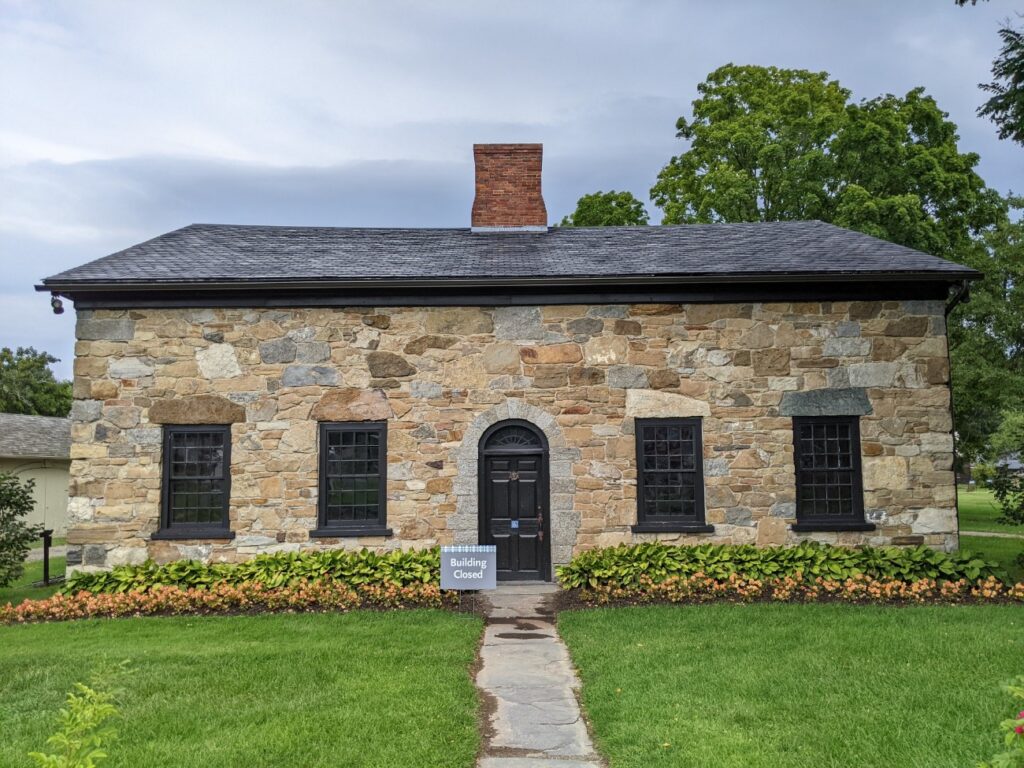
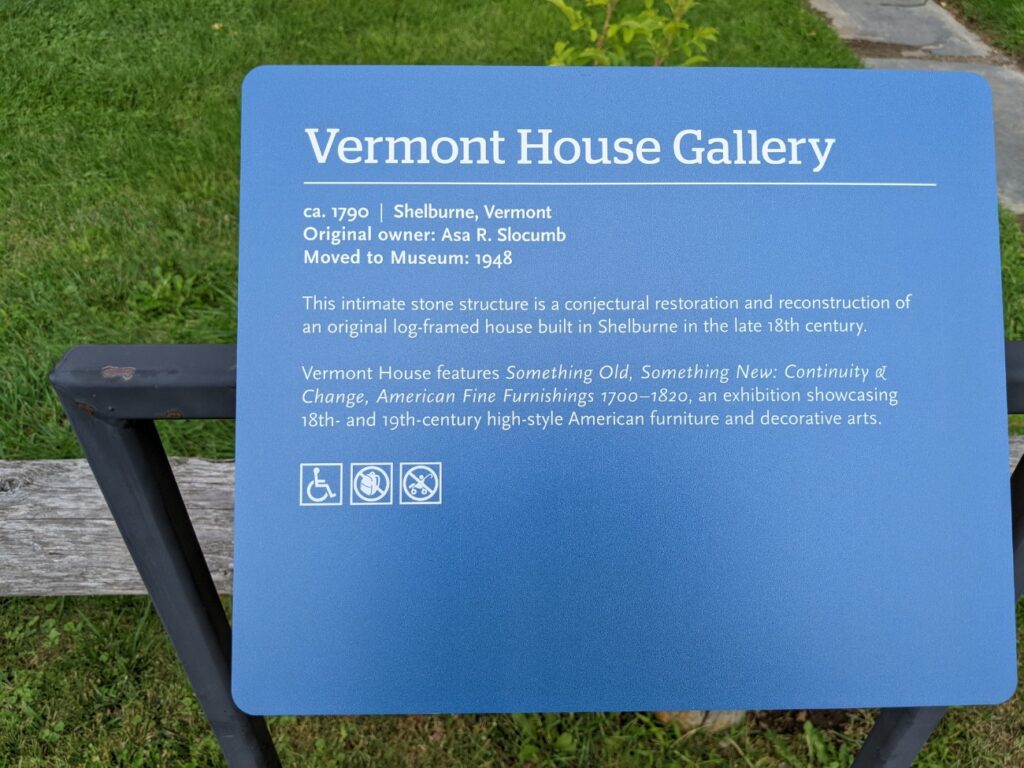
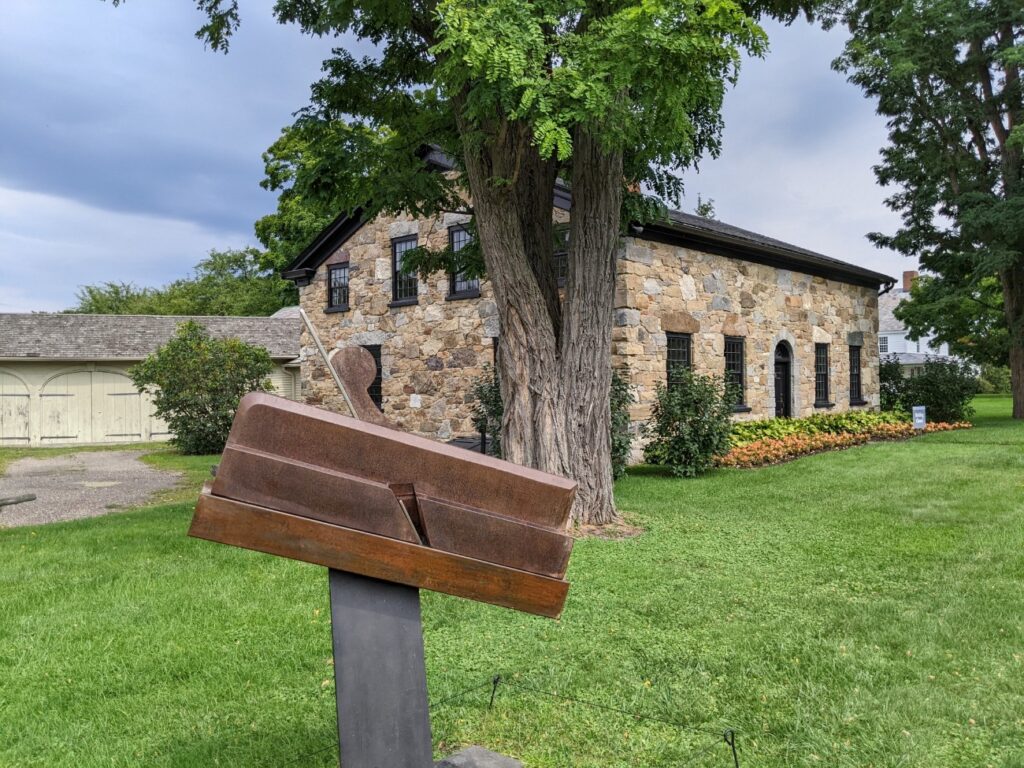
Blacksmith Shop
Tucked back behind the General Store, the Blacksmith Shop is remarkably large and pretty. This one is from Shelburne in 1800 and often has a working blacksmith inside.
He’s not there all the time, however. During my visit, the shop was closed all day, but when I came back for a few hours the next day, he was around.
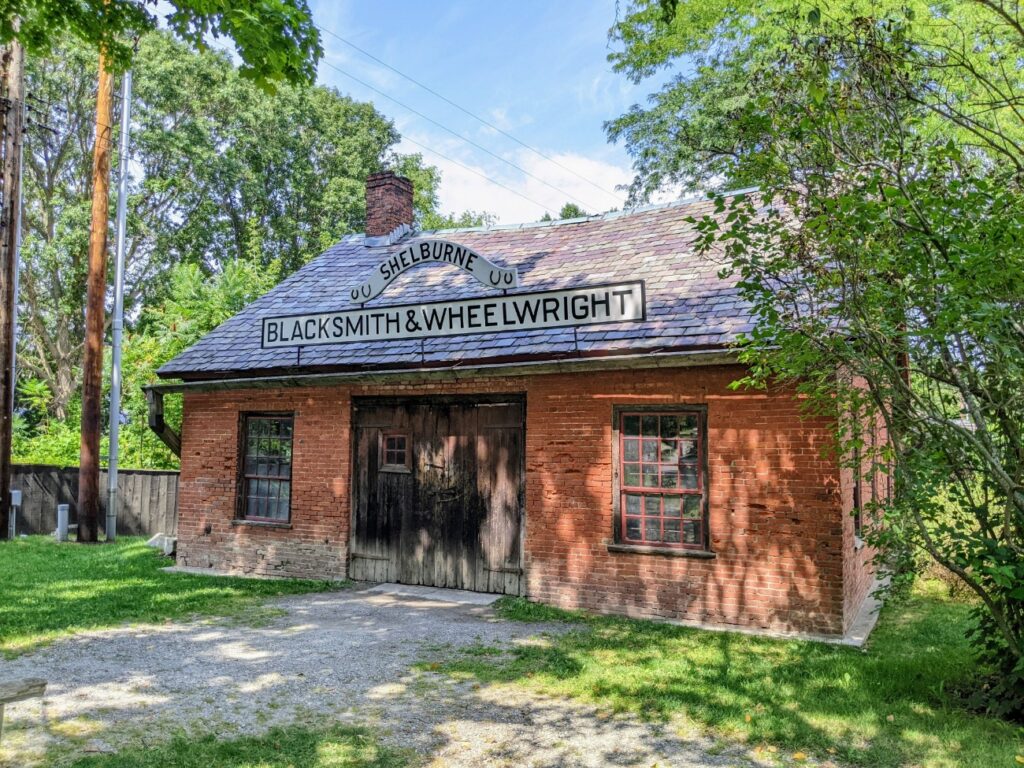
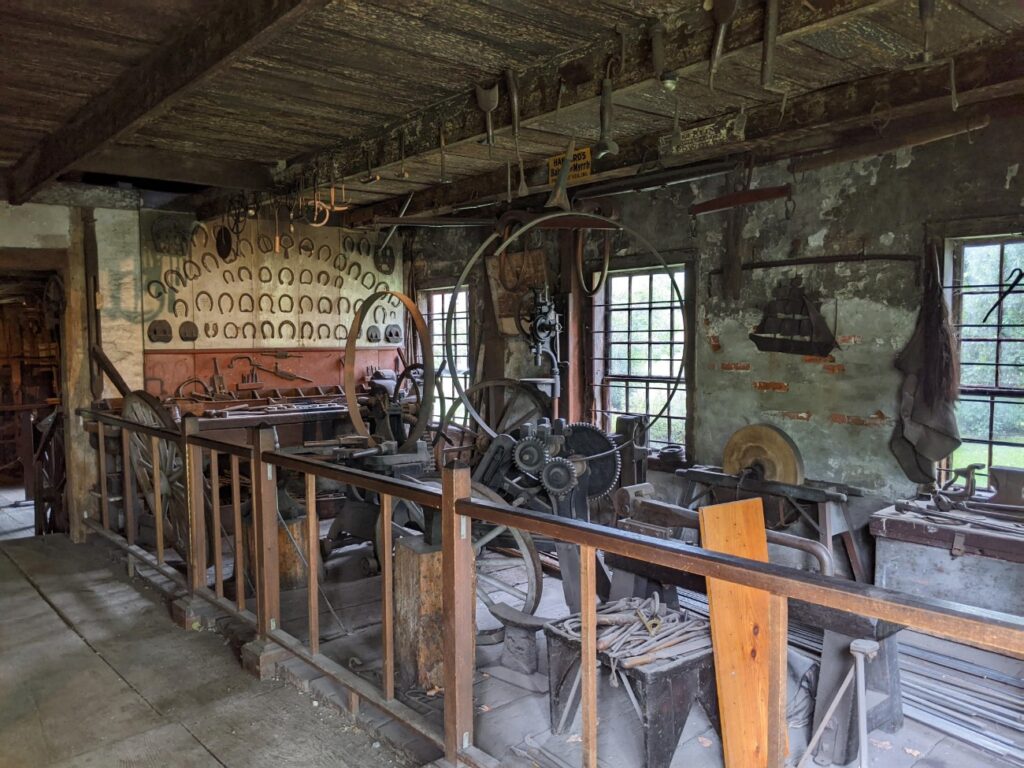
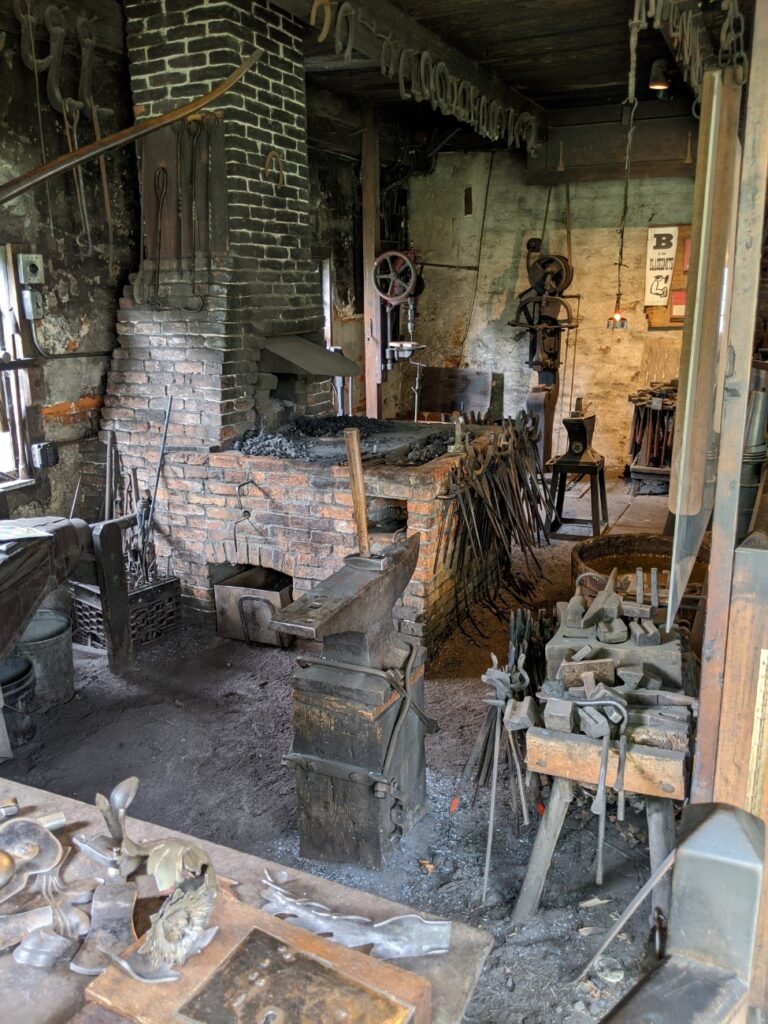
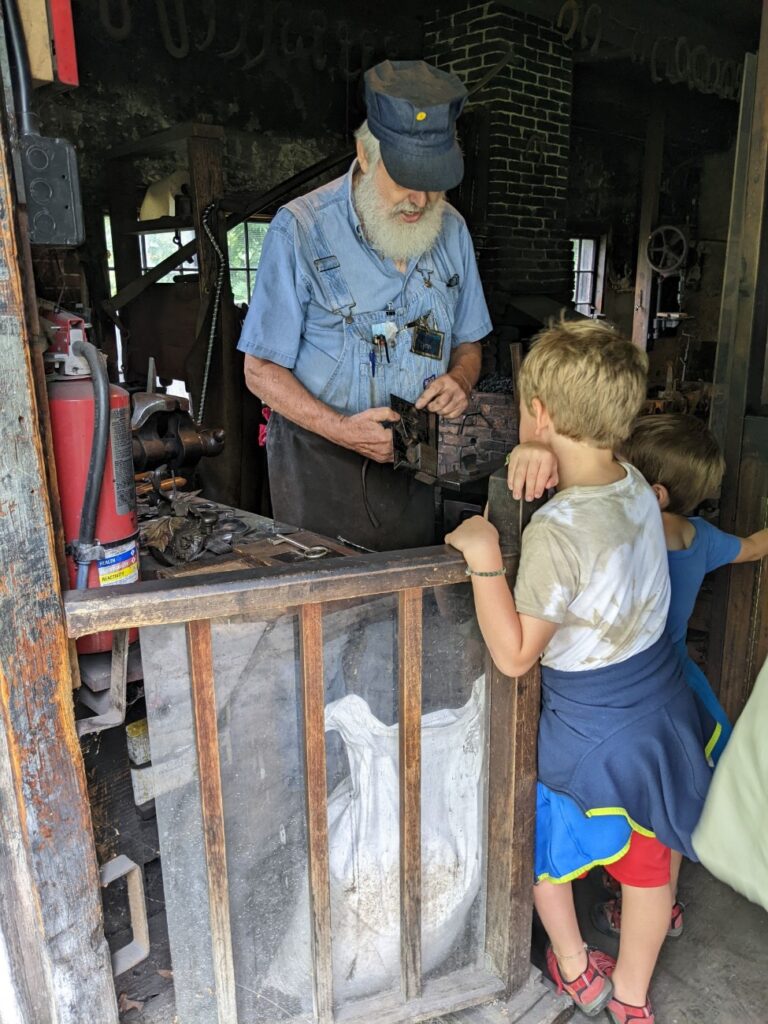
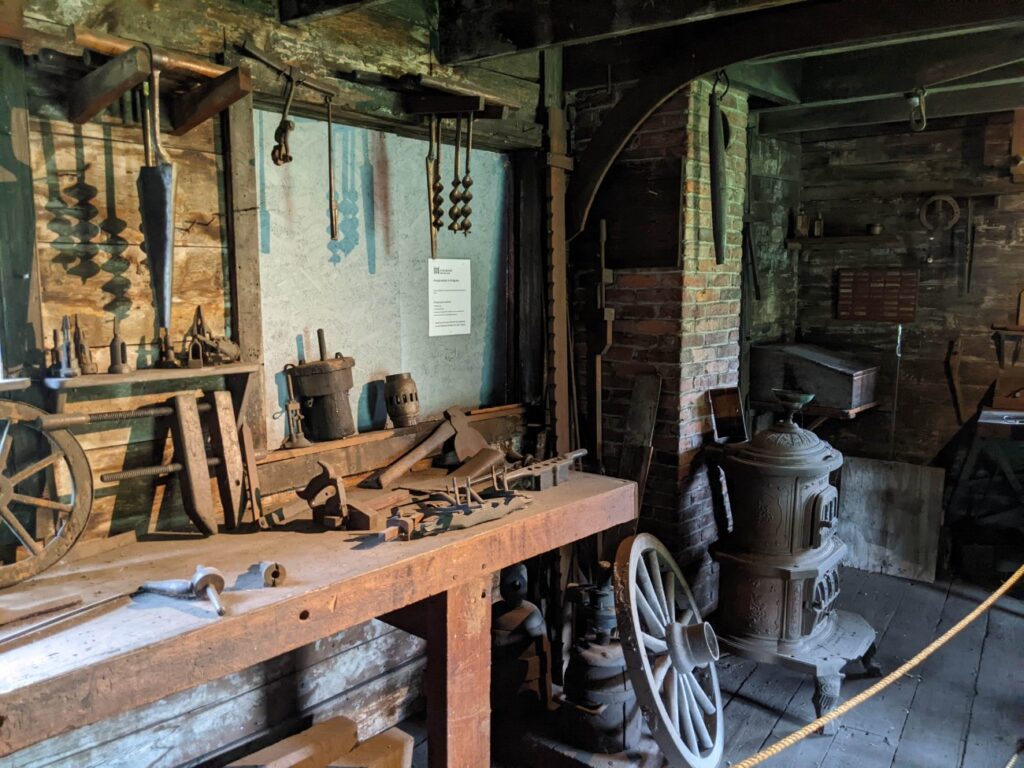
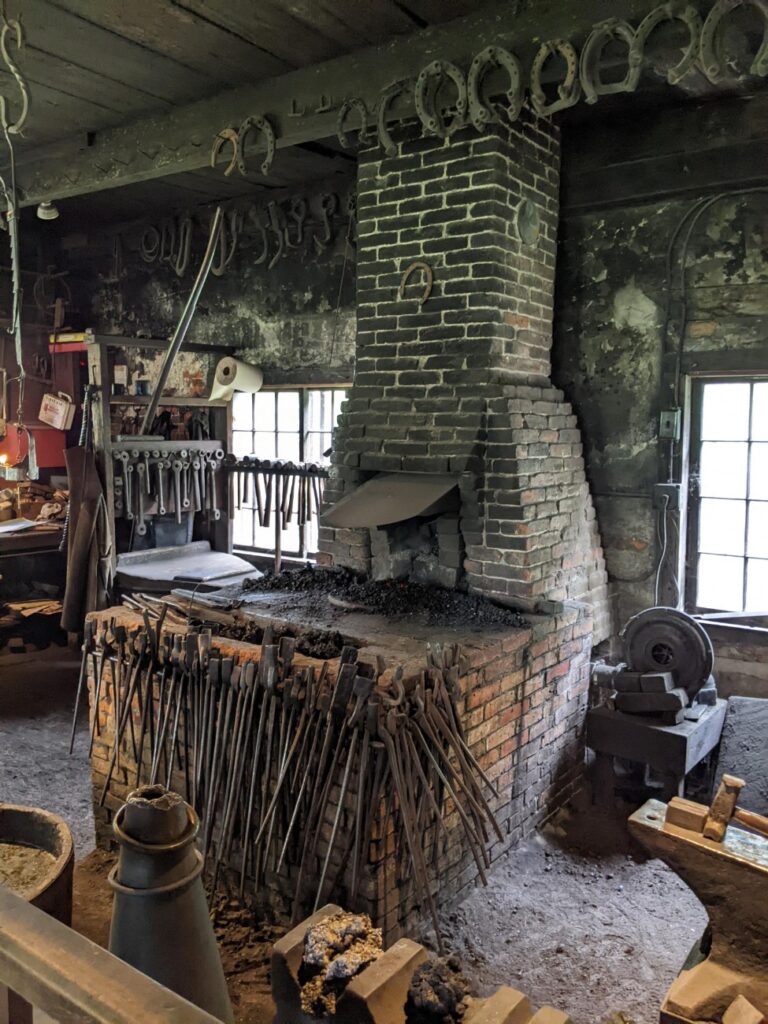
Meeting House
The Meeting House is an old church from nearby Charlotte, VT, from 1840. It’s not super remarkable inside, though there is a cool-looking organ. Music made in Vermont plays on a loop, so you can sit in a pew and listen for a while if you like. When I was there, it was a bizarre modern piece that didn’t particularly induce me to stick around.
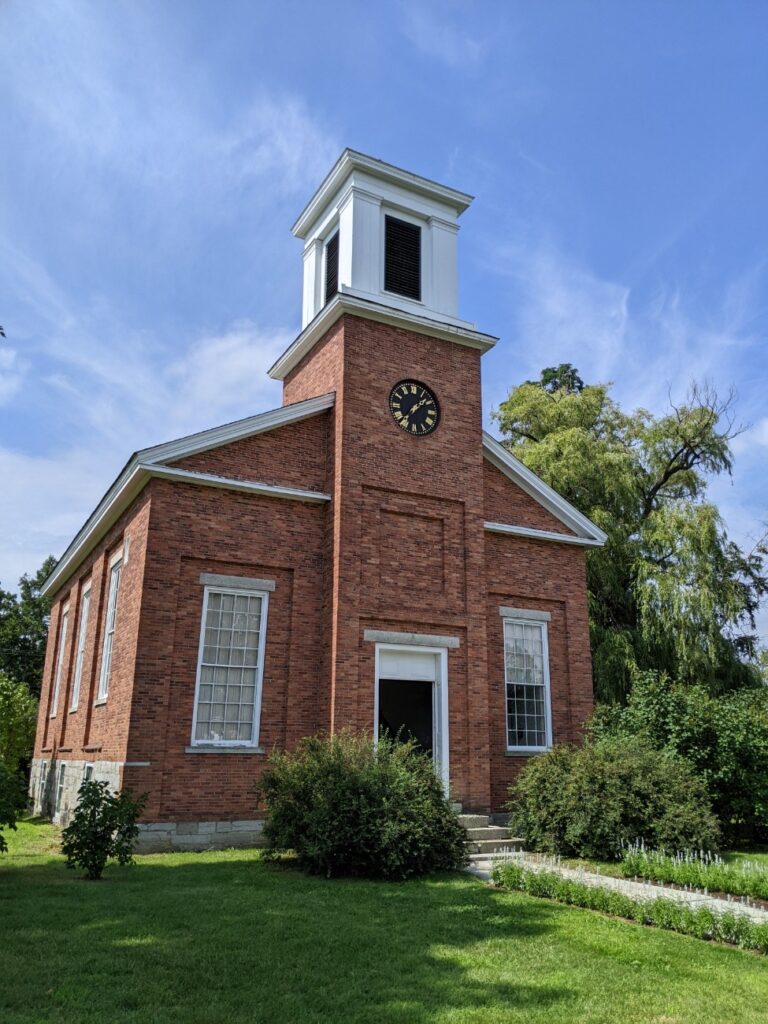
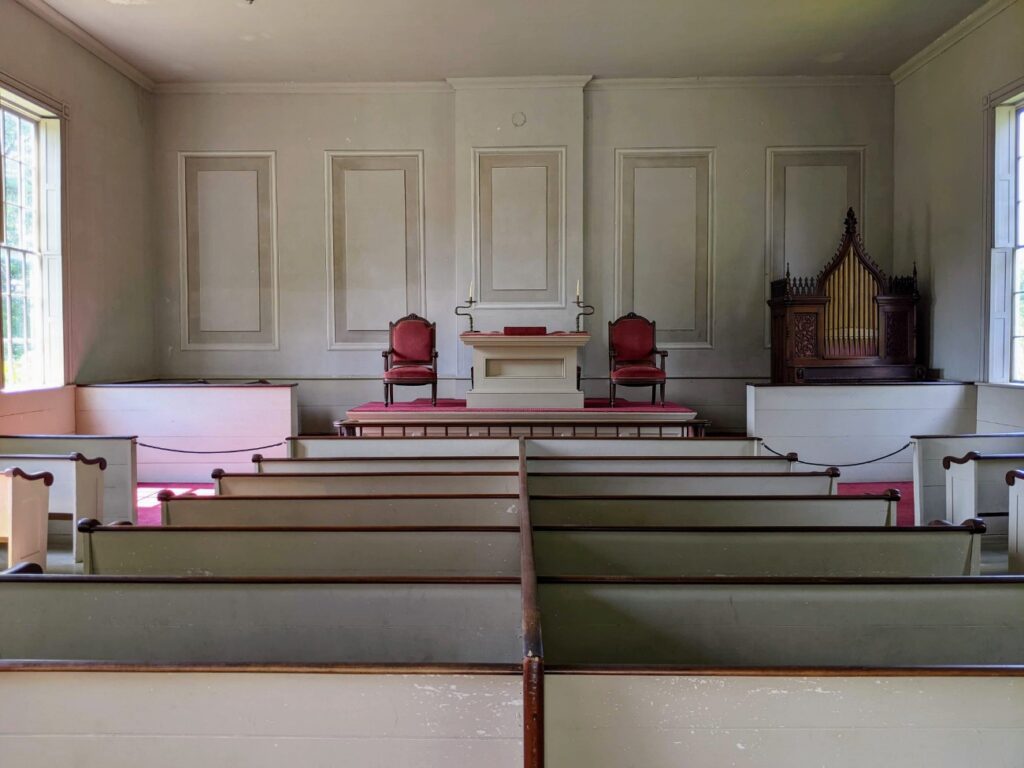
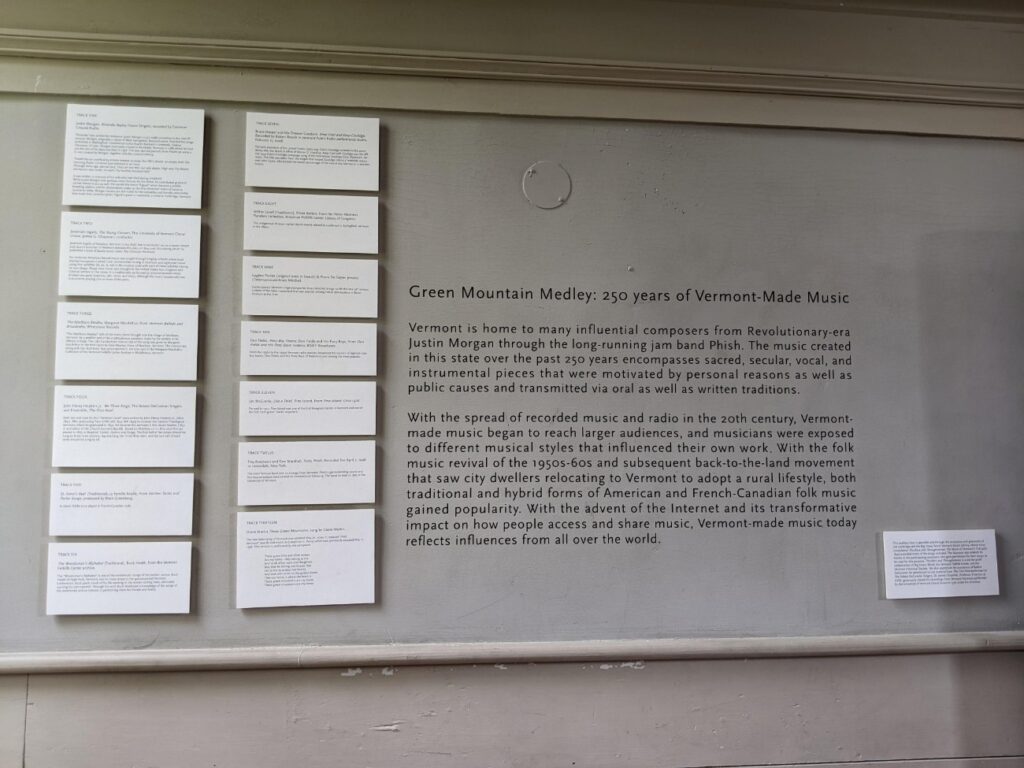
Horseshoe Barn
Similar to the Circus Building, the unique Horseshoe Barn is found in the back left corner of the Shelburne Museum. The barn itself was built on site in 1947, based on a design from a Georgia, Vermont building.
Mrs. Webb and the Webb family sure liked collecting carriages since besides the Round Barn at the front and this large Horseshoe Barn, there’s even a Horseshoe Barn Annex behind. And no wonder! To see these grand carriages up close is really fascinating. I don’t think I expected them to be nearly so huge. There are more stagecoaches, trolleys, sleighs, stagecoach sleighs, a Romany-style wagon, and a massive Conestoga wagon!
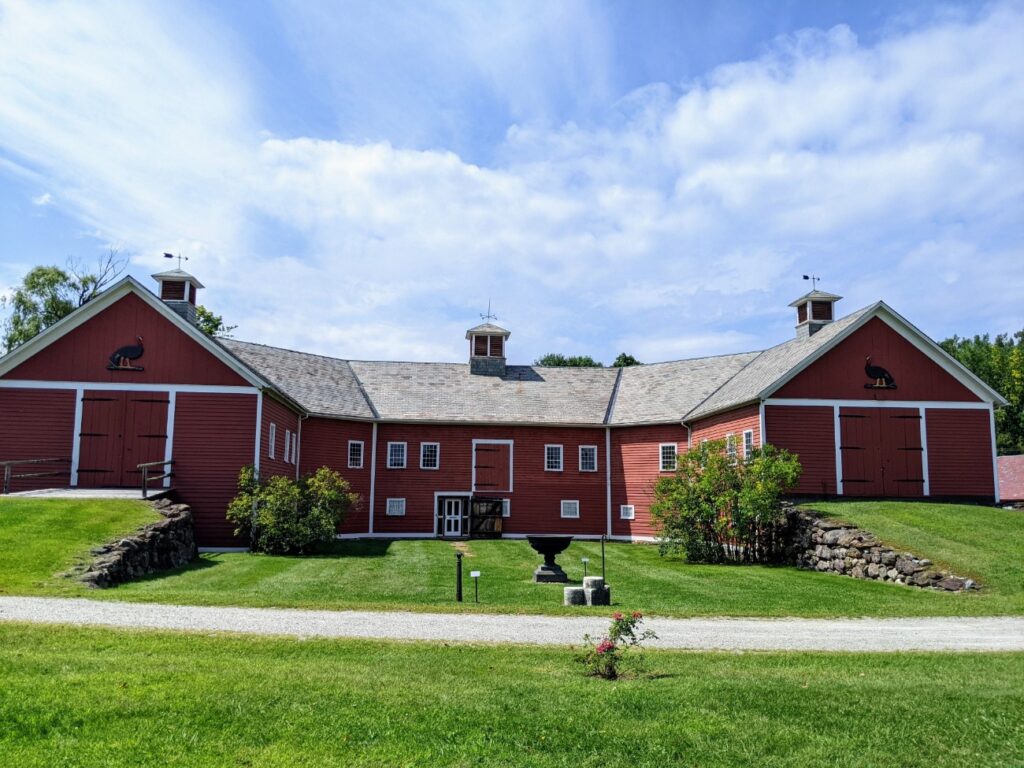
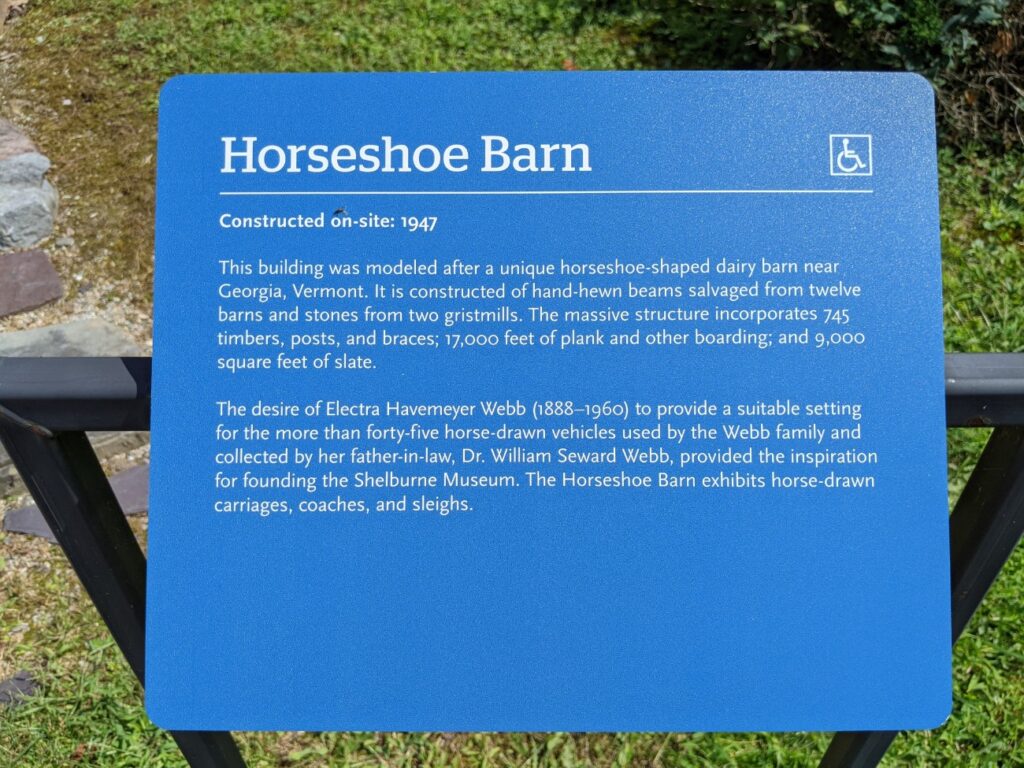
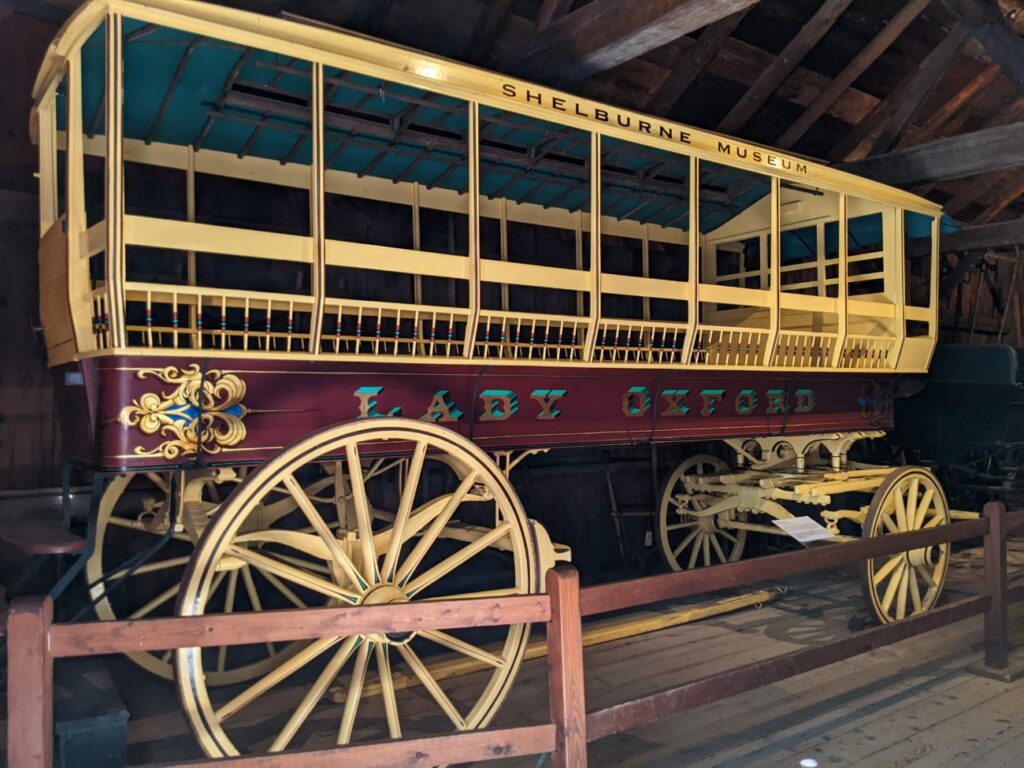
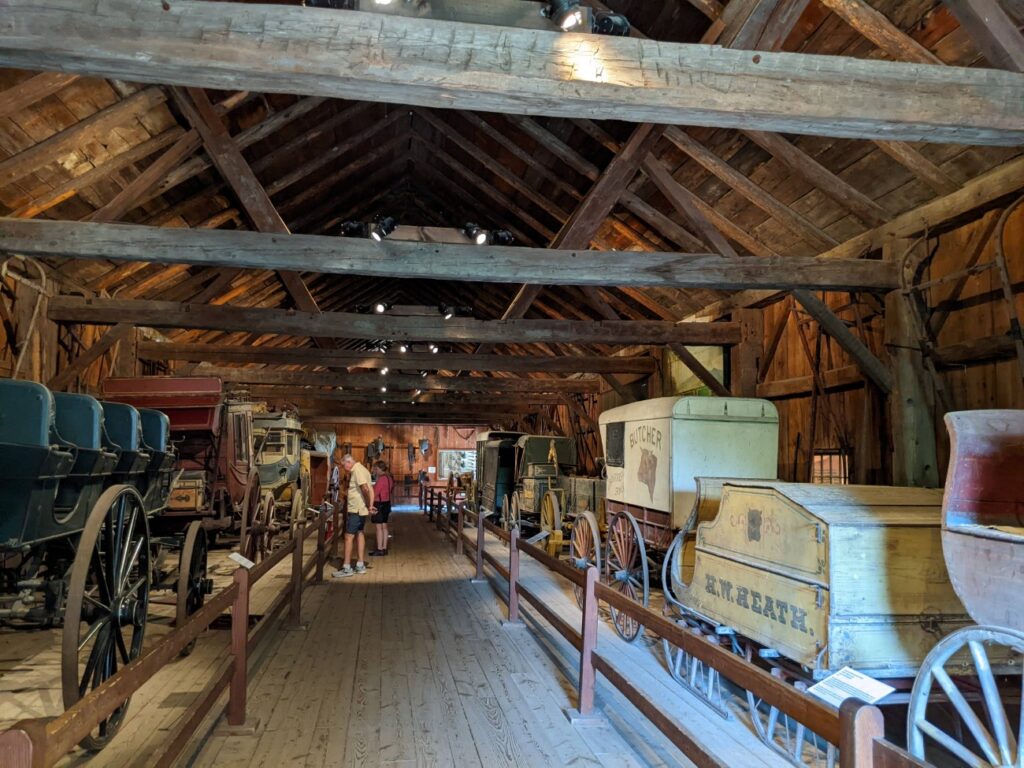
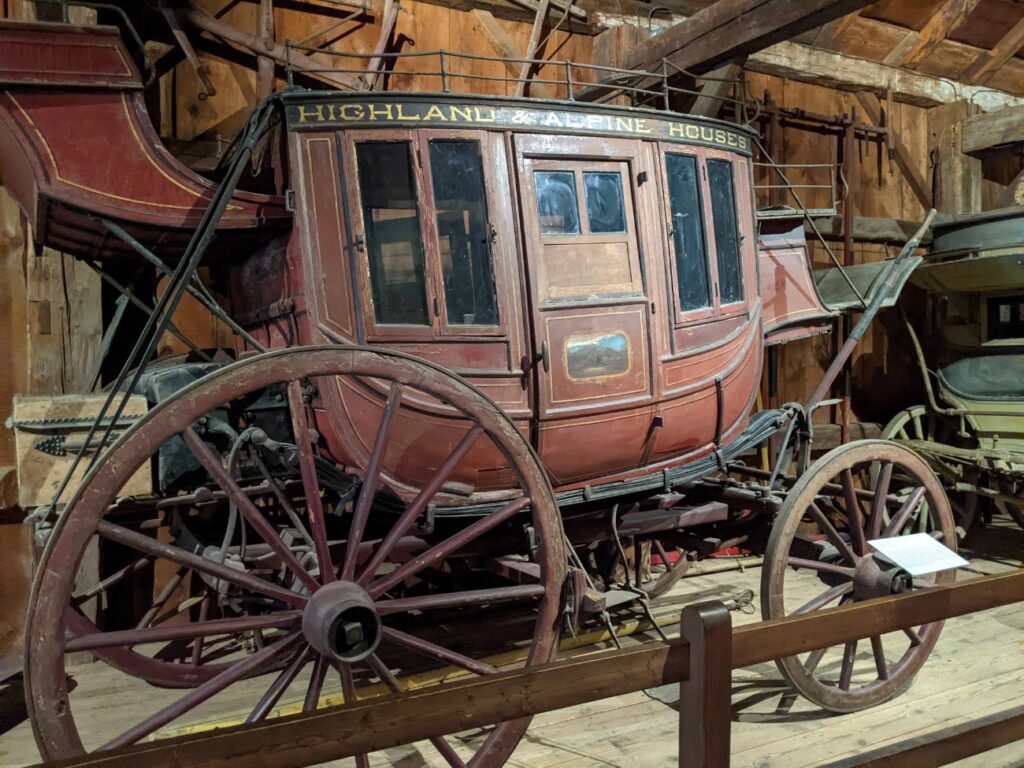
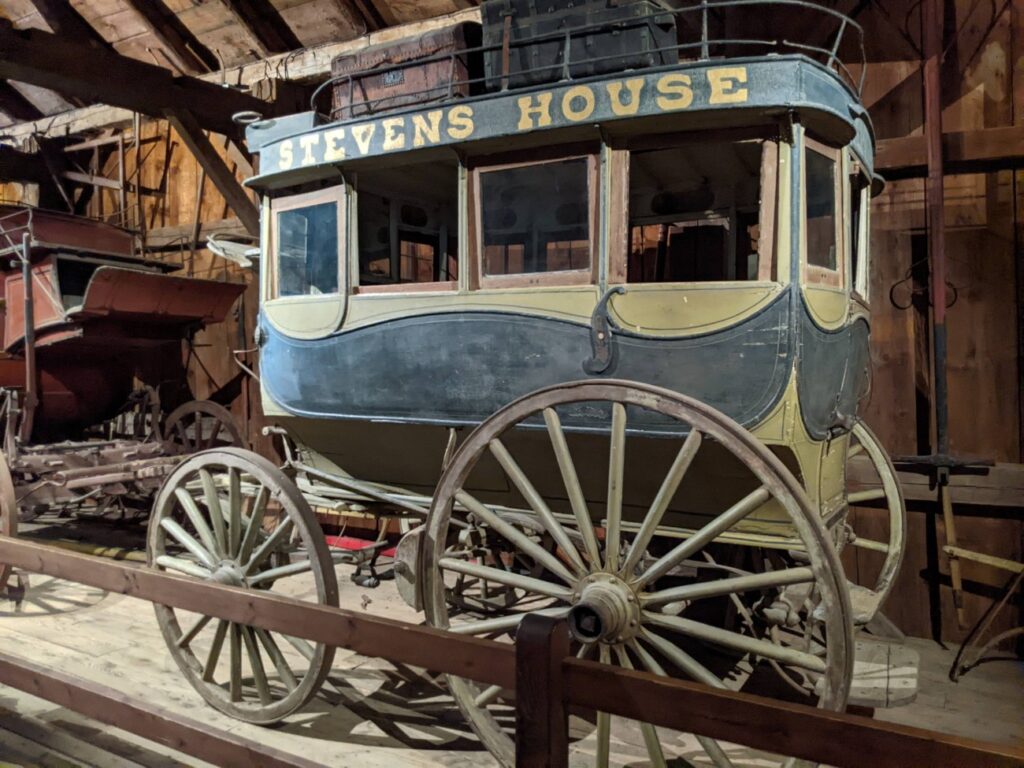
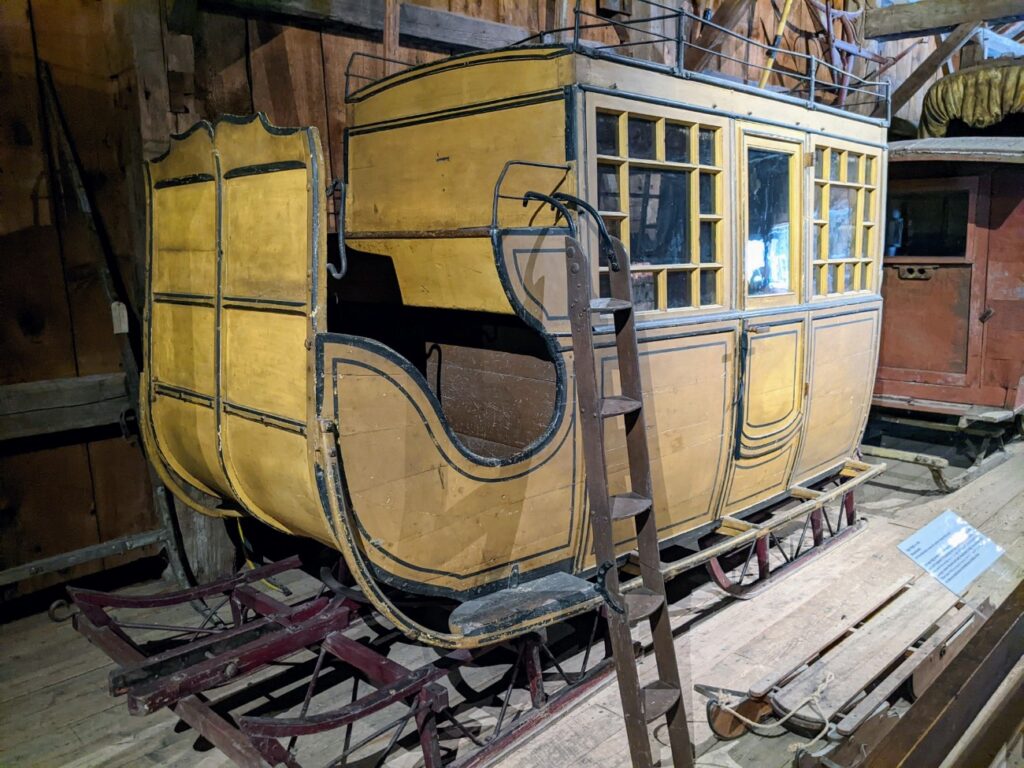
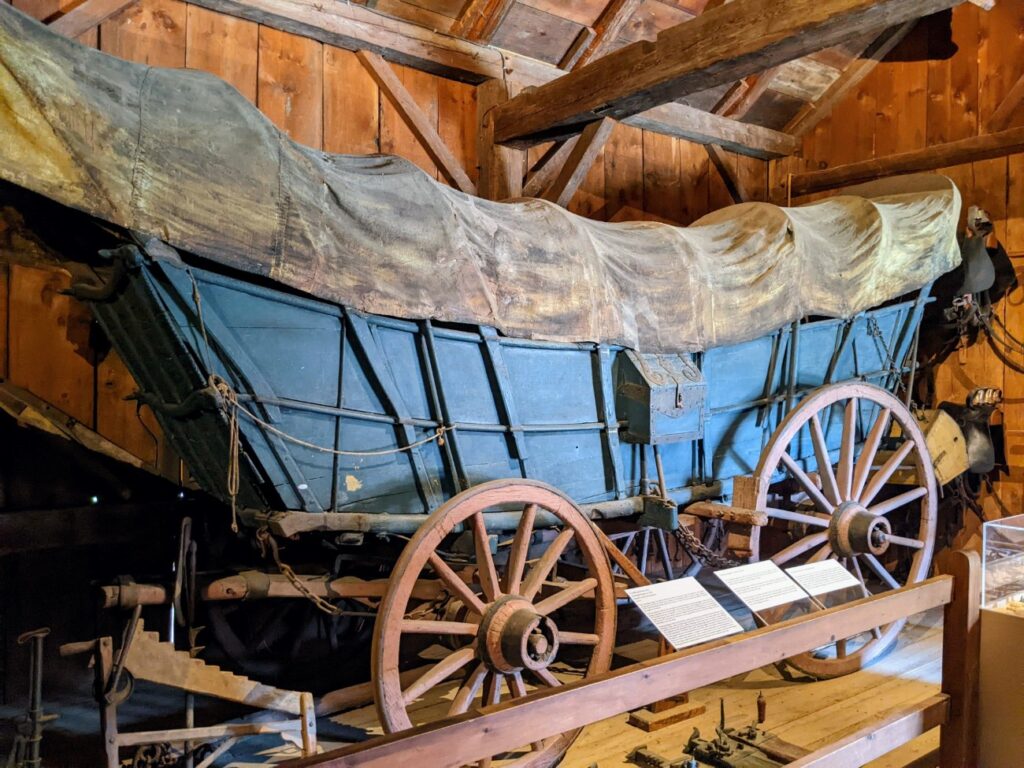
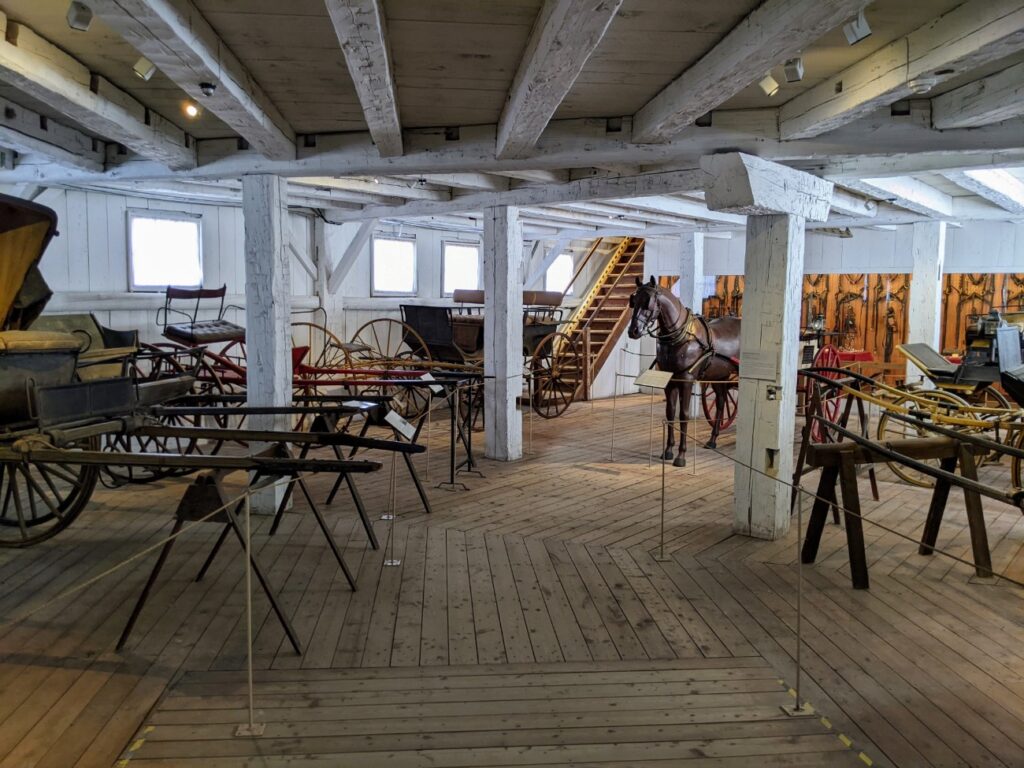
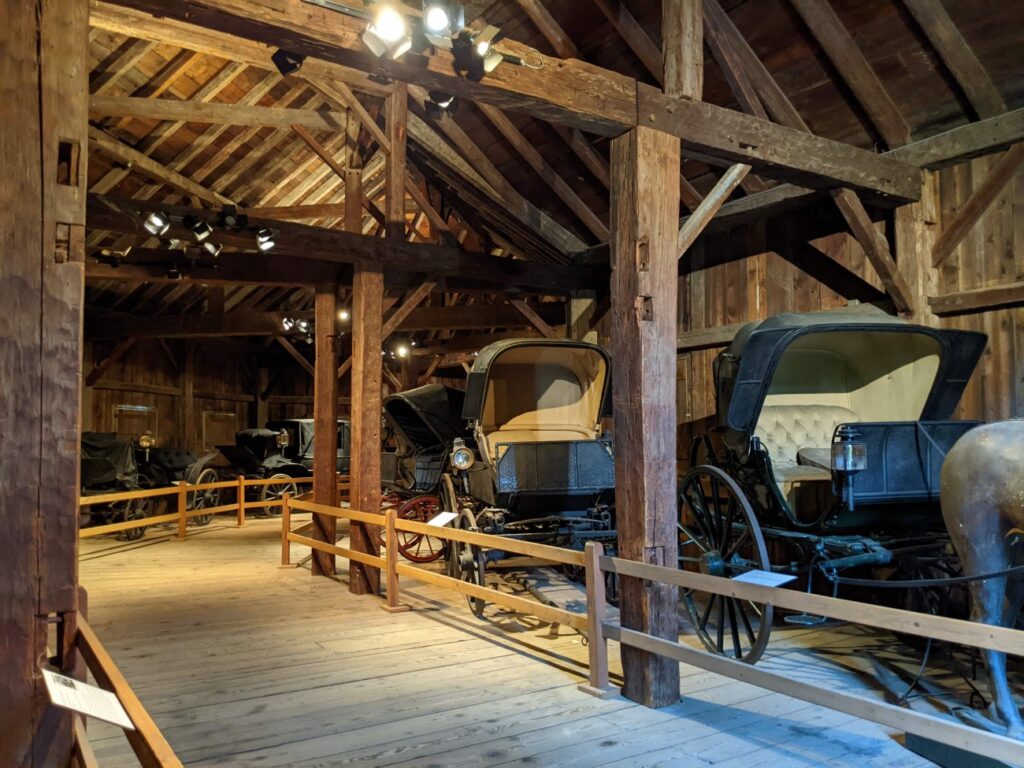
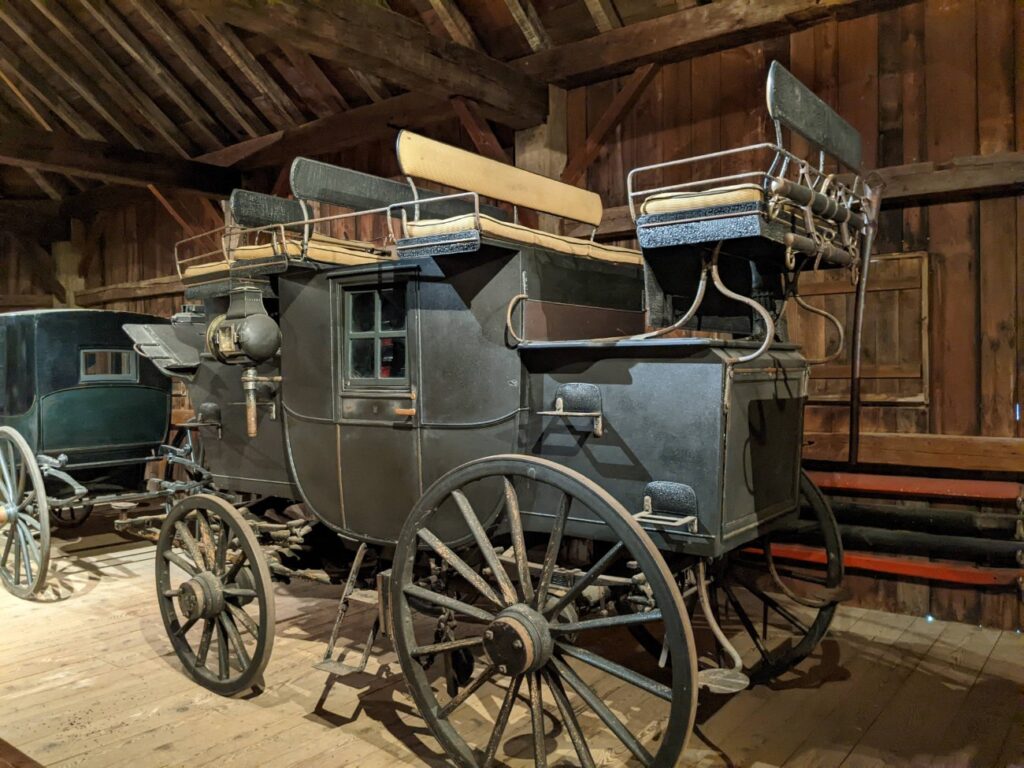
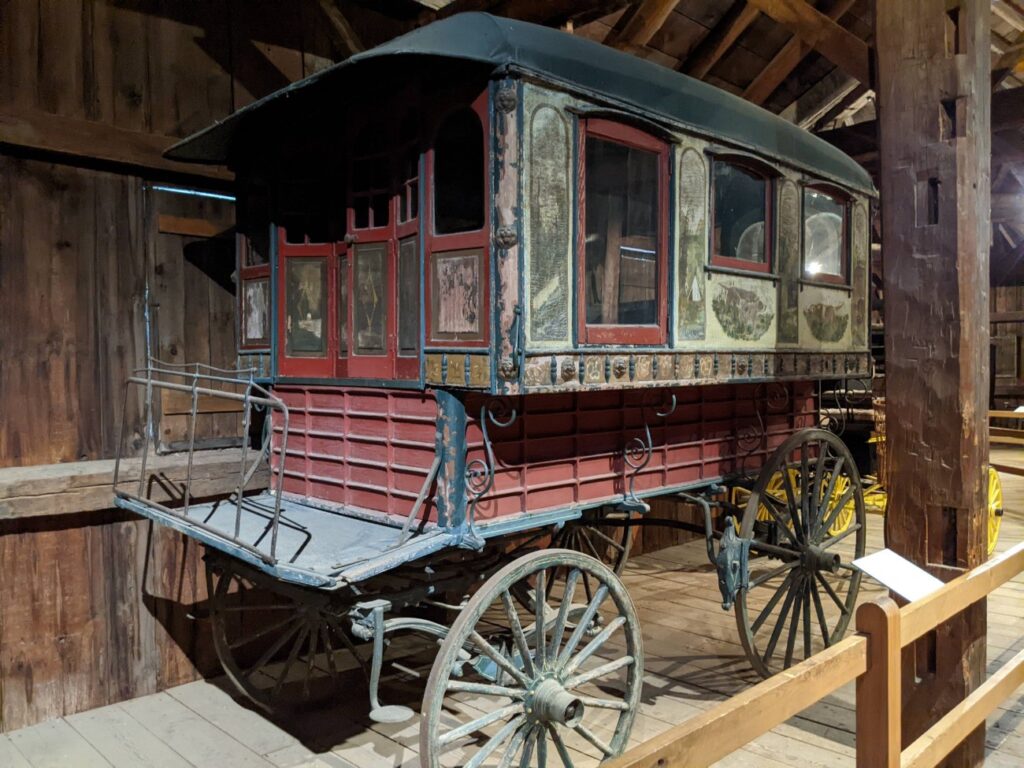
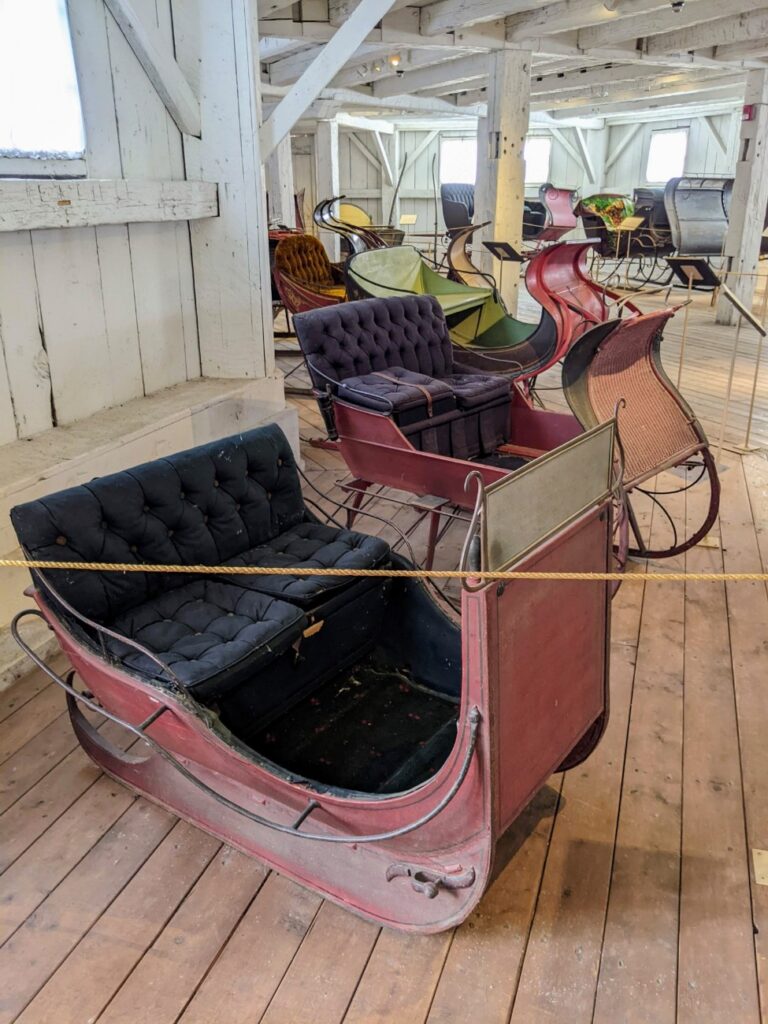
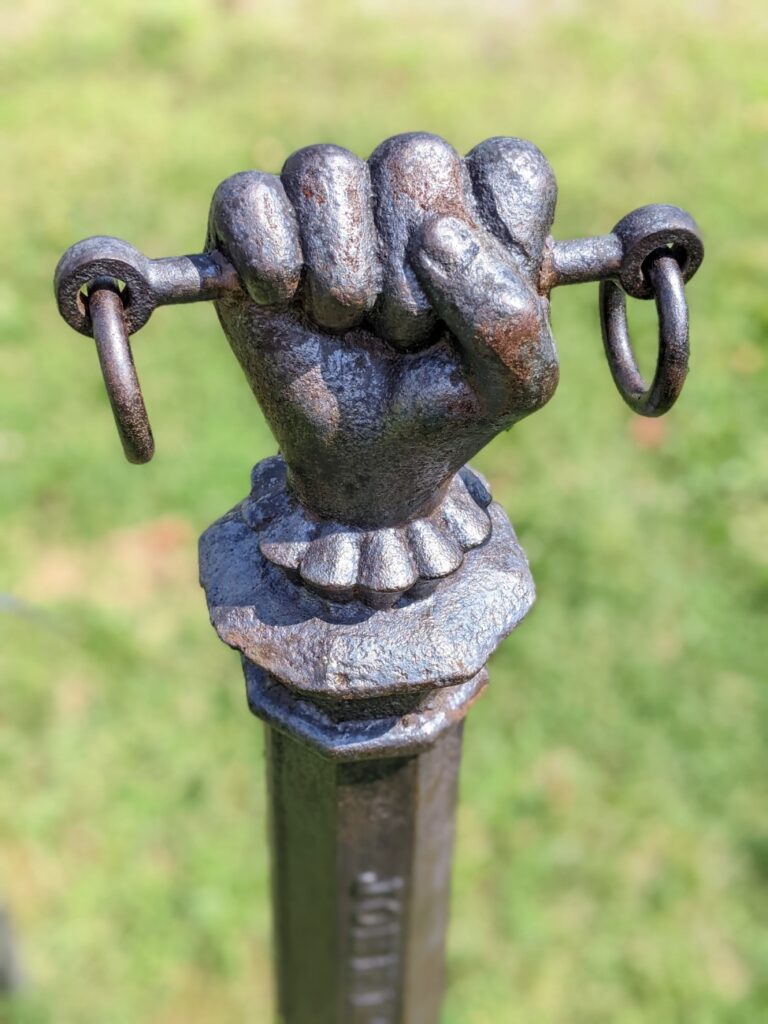
Print Shop Row
At the very back of the property is a row of craft shops and various buildings that I’ll talk about together. The Print Shop is the only one really open and is great fun! For anyone who loves printing, graphic design, books, color, or anything like that, this shop feels like a playground. The Print shop holds printing presses from the 1820s to the 1950s. Often, there is someone inside operating one of the presses, and you can see examples of the printed pages on the walls. I love the alphabet series, which you can buy in the museum’s gift shop. During my visit, I got a small printed bookmark for free that is really cute.
Attached to the Print Shop is a Weaving Shop that wasn’t open in 2022. It holds various looms for textiles. Moving to the right, we see a Shaker Shed from Canterbury, VT, ca. 1840. It’s large, open-sided, and barn-like, and set up as a relaxation area with several seating areas. Farther along, we find a two-cell 1890 Jail from Castleton, VT, which makes a great spot for family pictures.
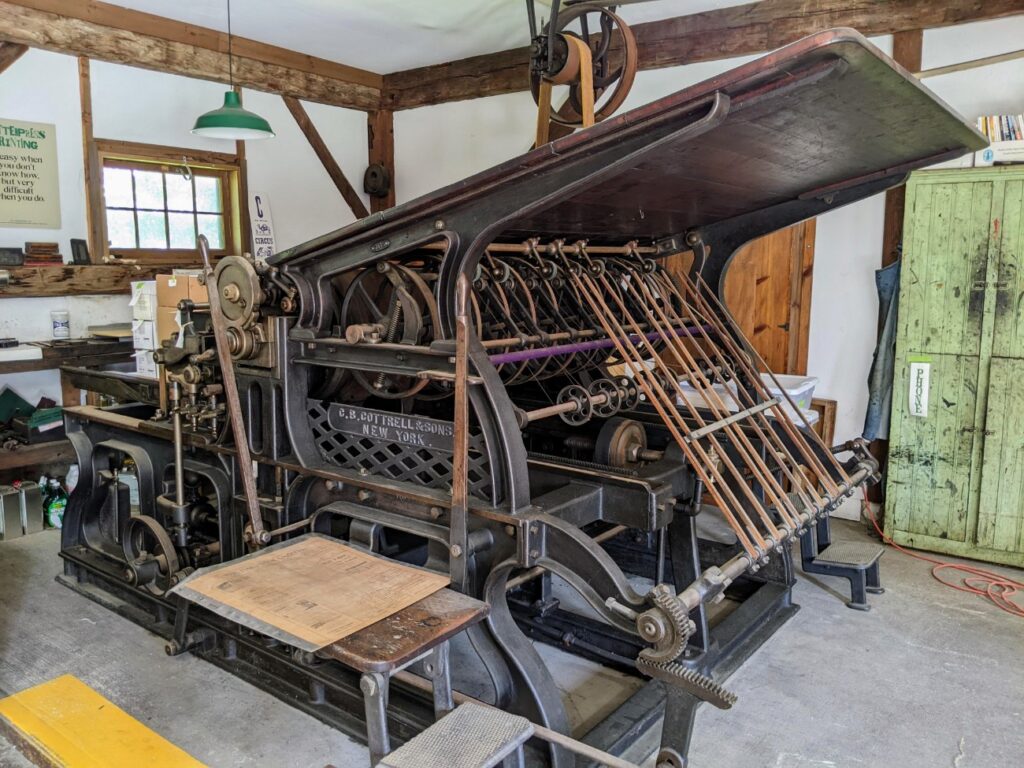
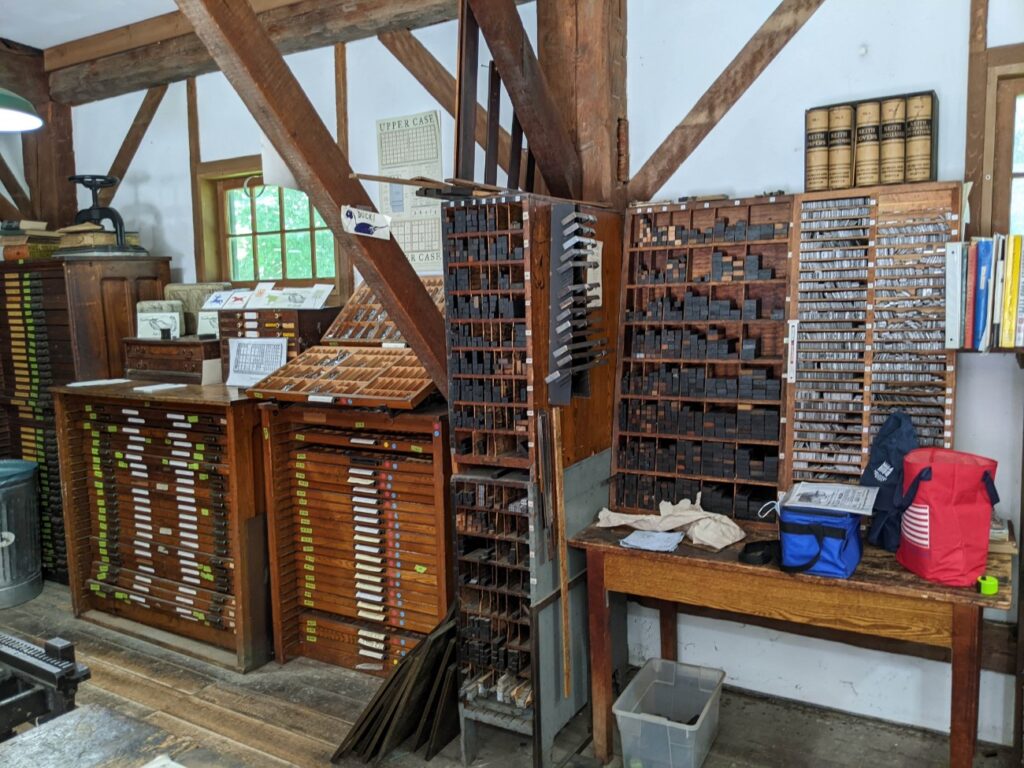
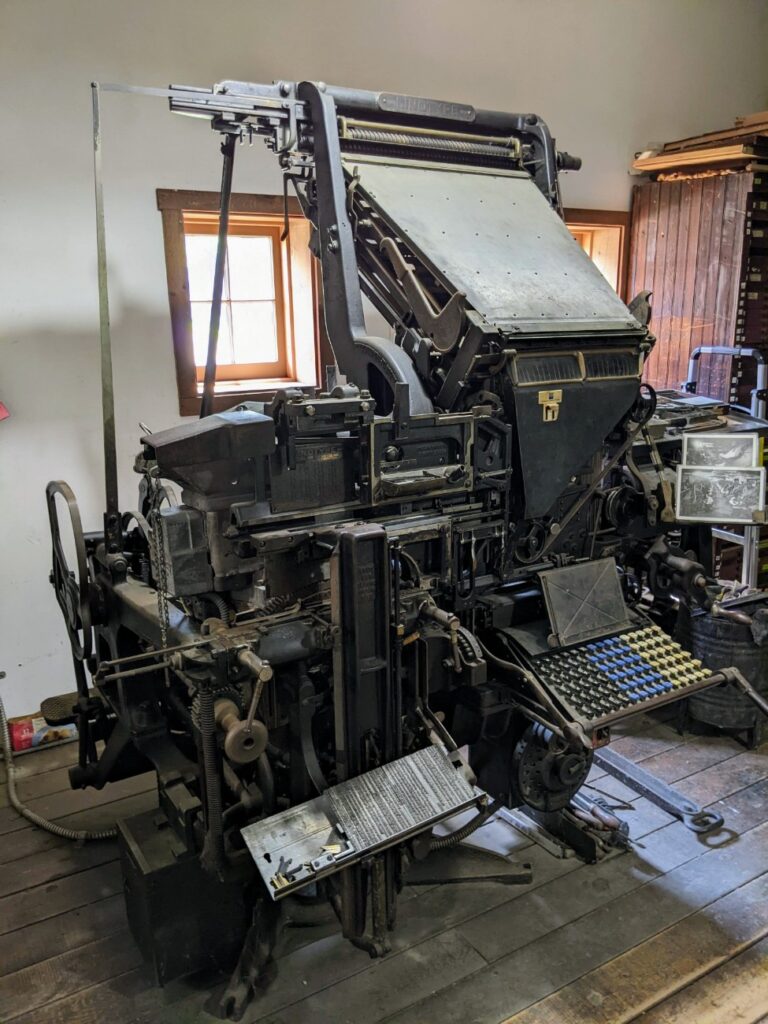
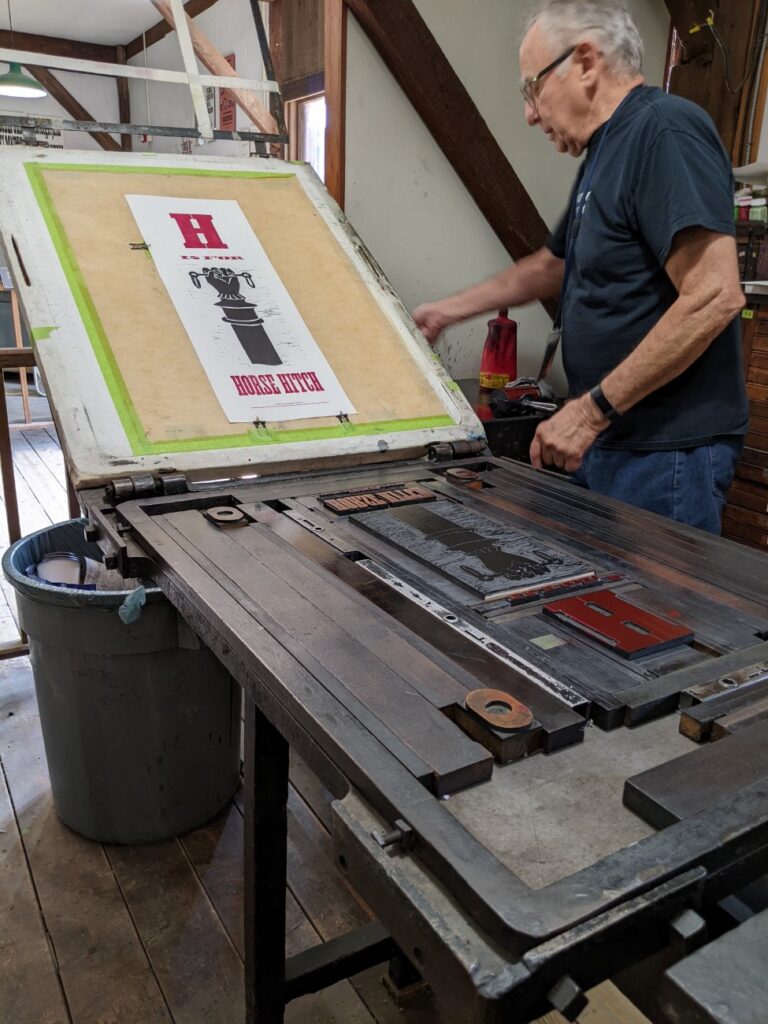
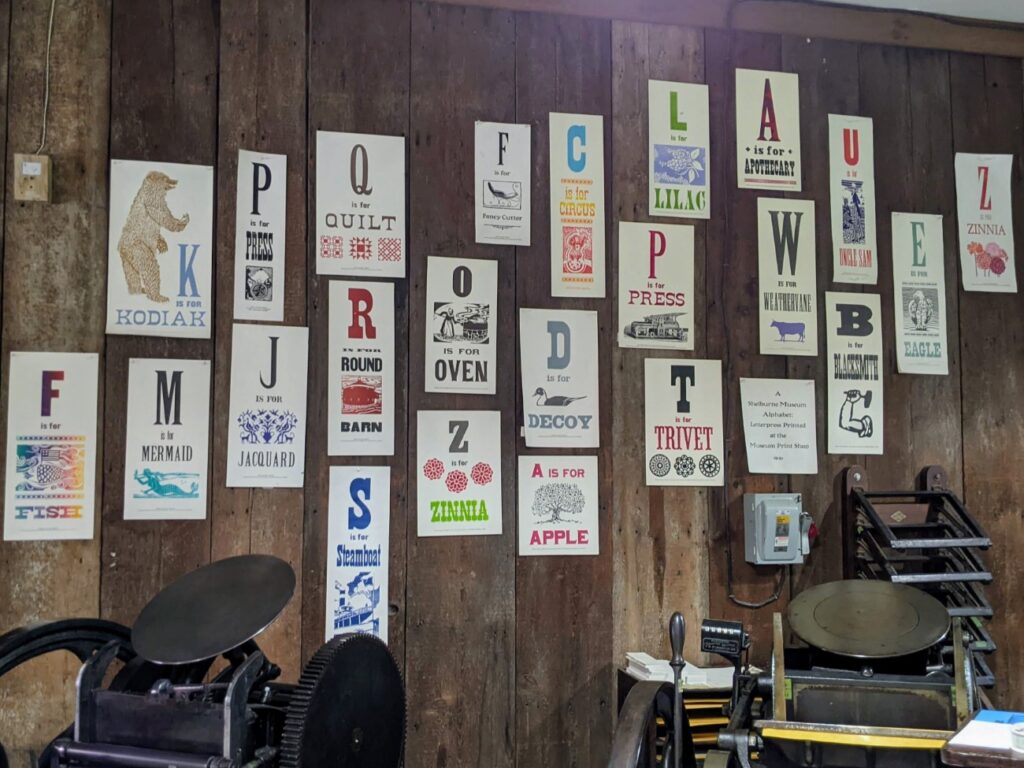
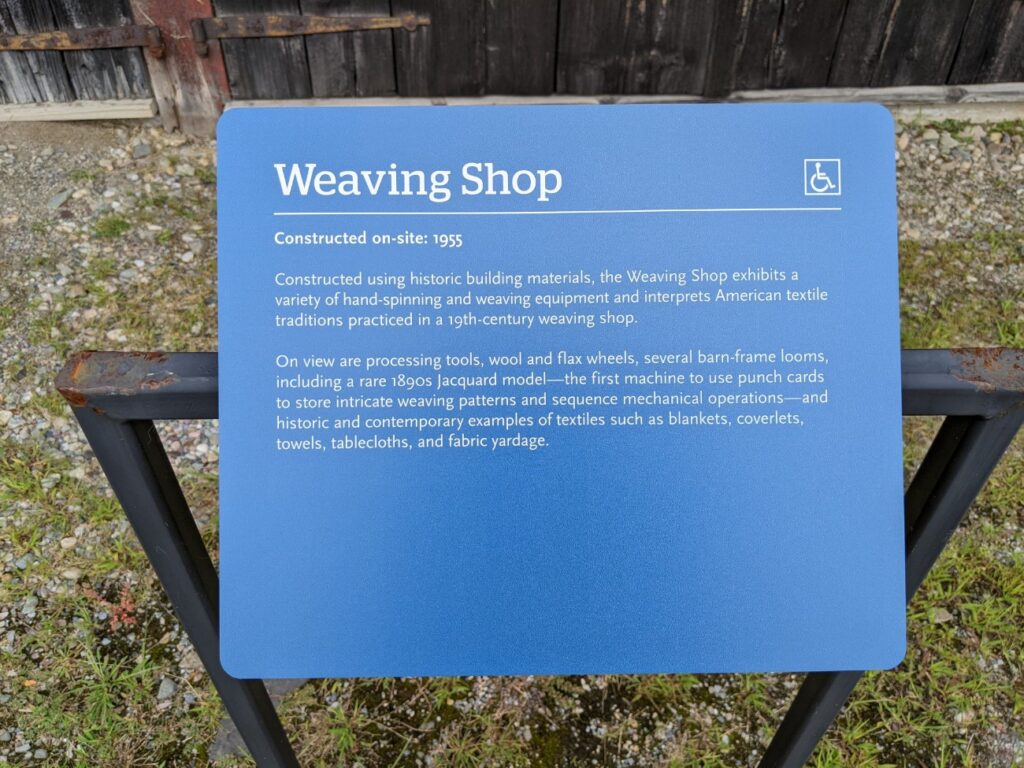
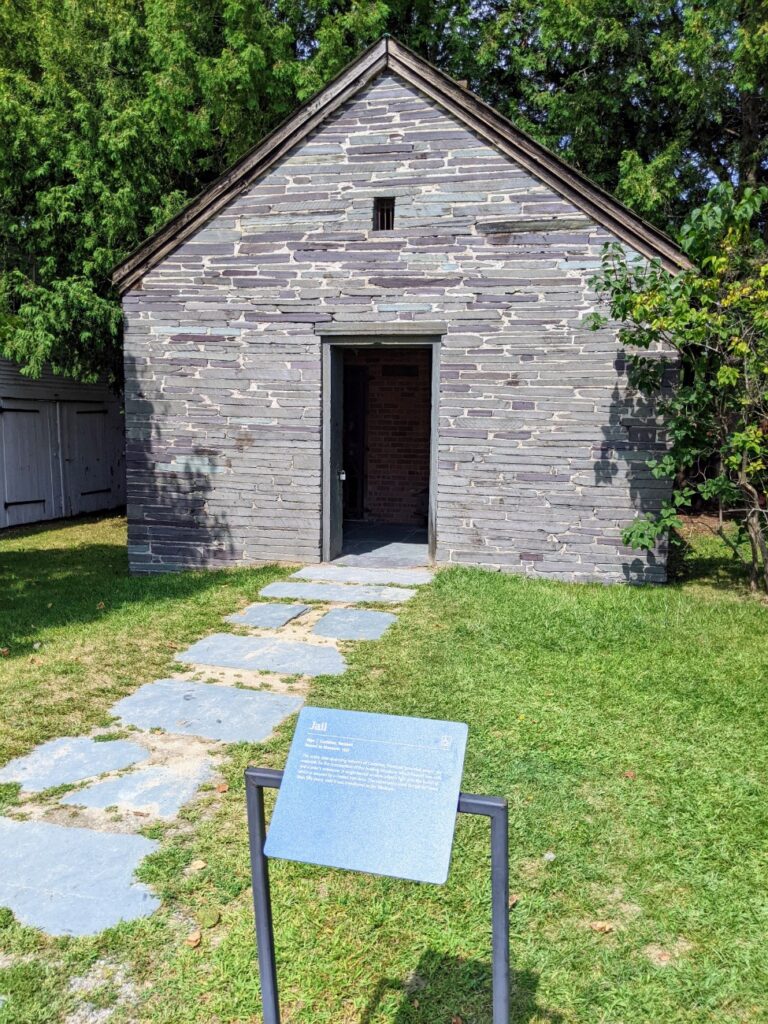
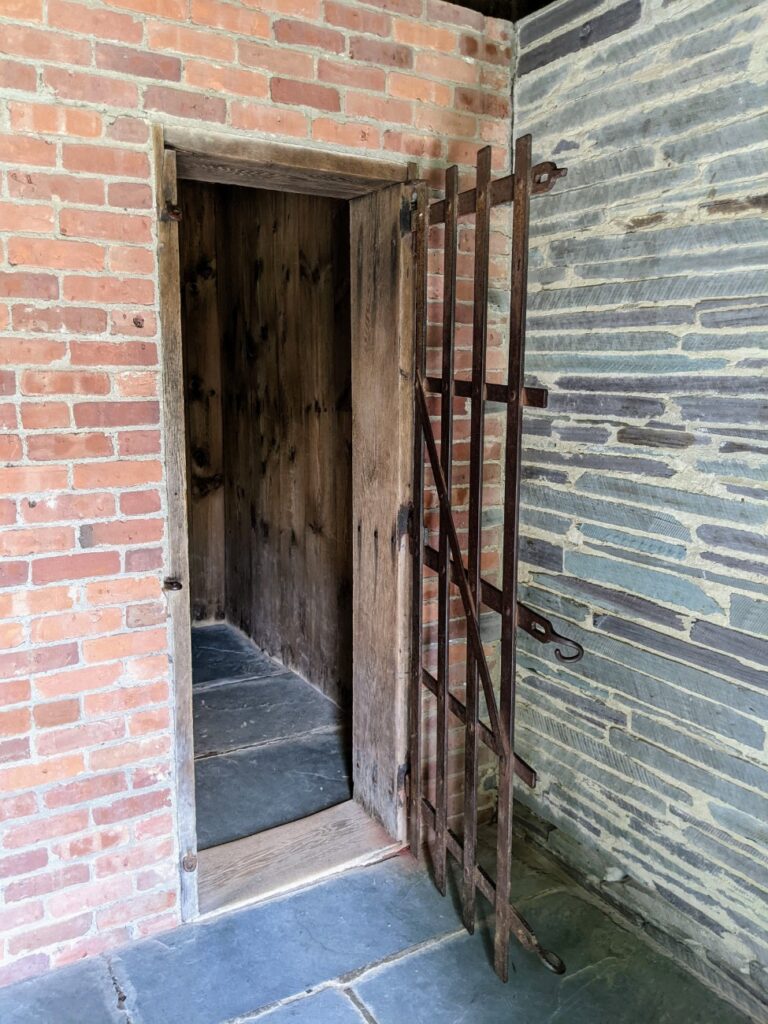
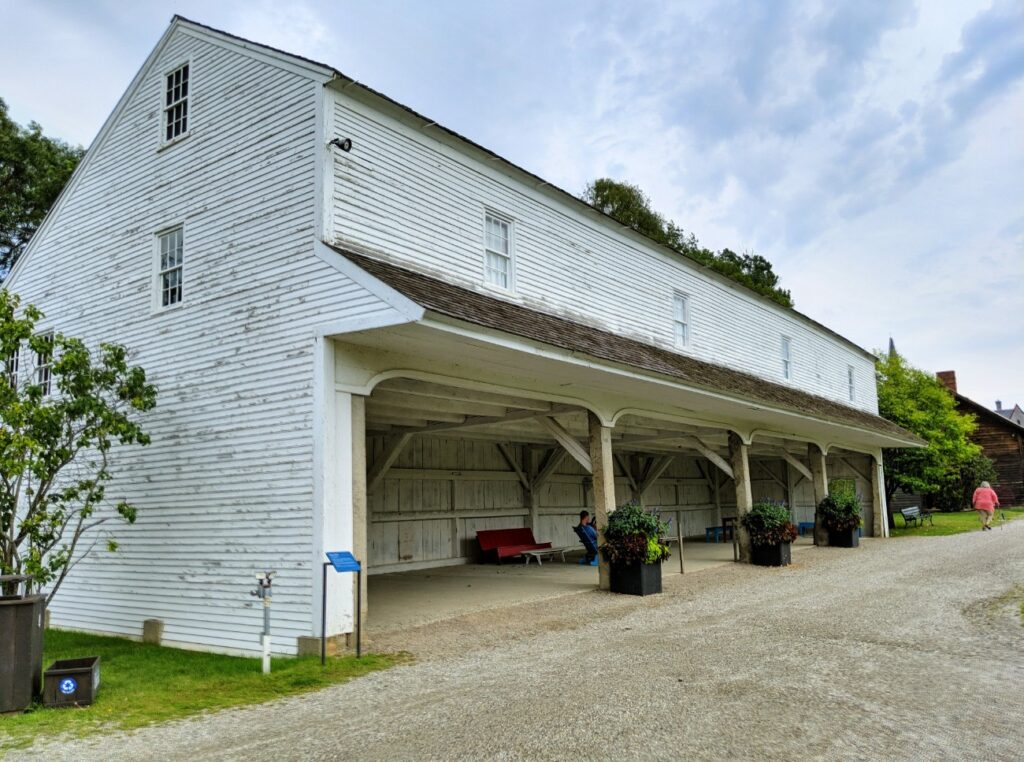
Textile Galleries
Officially called The Dana-Spencer Textile Galleries at Hat and Fragrance, this string of attached buildings was initially constructed in Shelburne as a distillery around 1800 and used later as a barn. Electra Webb moved it to the property in 1947 and added additional rooms to house her rare hatboxes, rugs, and fabrics. (The “and fragrance” part refers to the herbal sachets used to preserve textiles, per the website.) The area is so lushly planted that during my first visit, I totally missed that there was a gallery back here!
Inside is a stunning collection of modern quilts by artist Maria Shell, though that exhibition was only for 2022. I imagine a new collection for 2023 will take its place. There are also the hatboxes, hooked rugs, woven and embroidered pieces, even tiny dioramas with dolls in elaborate costumes and settings.
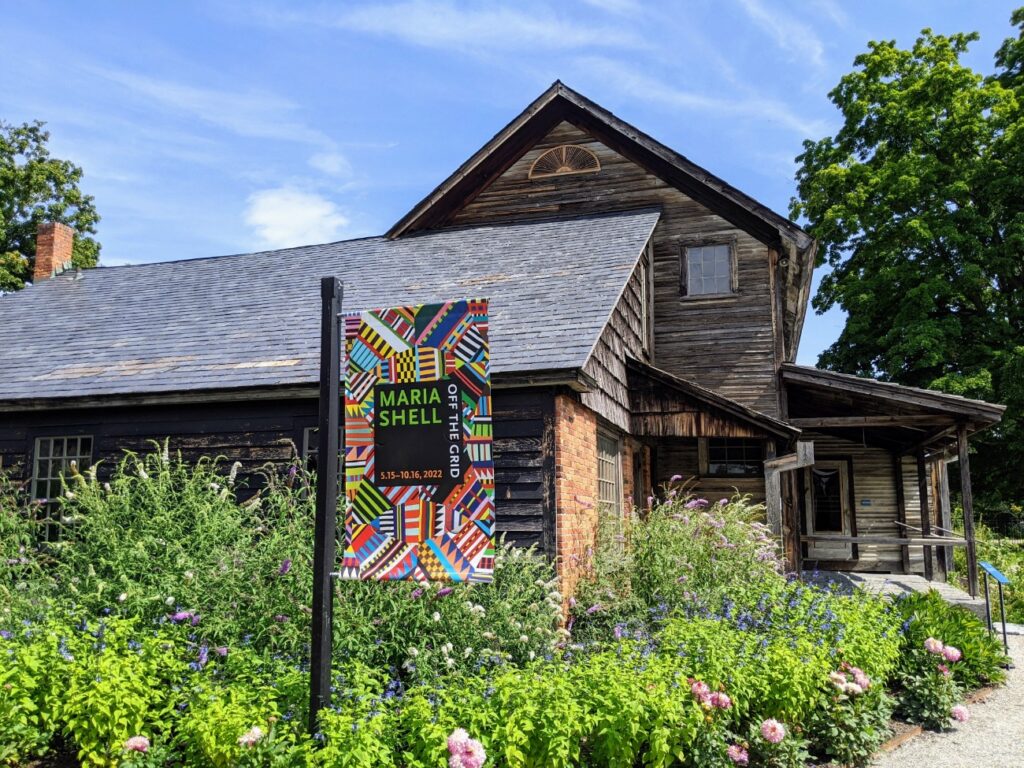
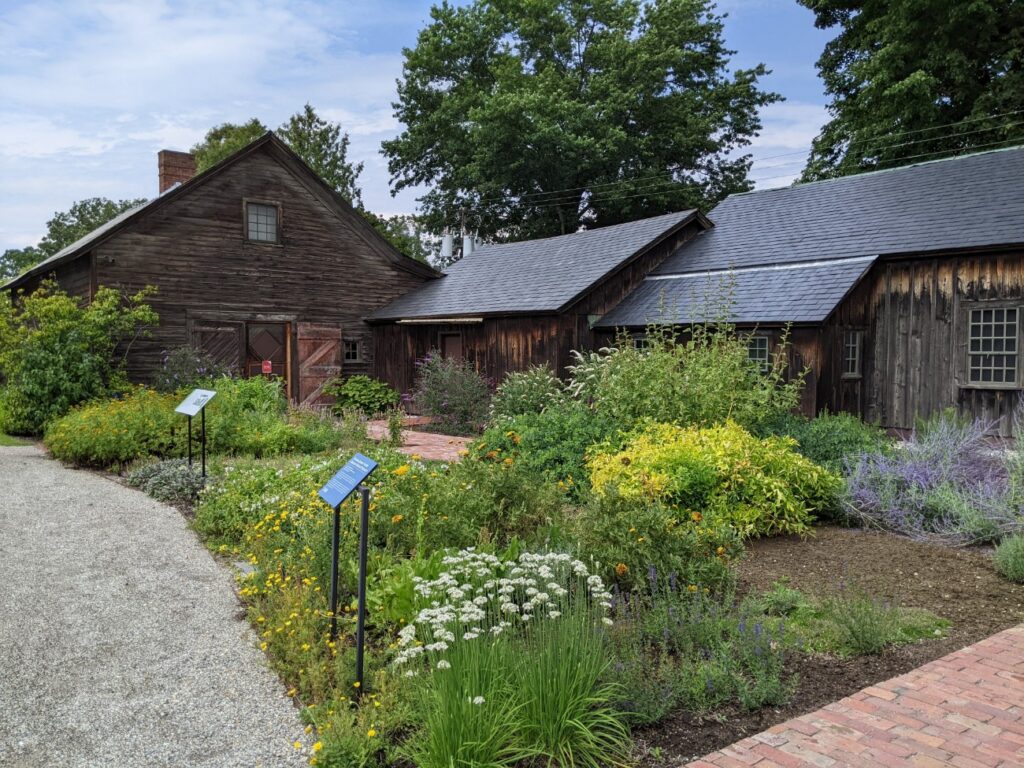
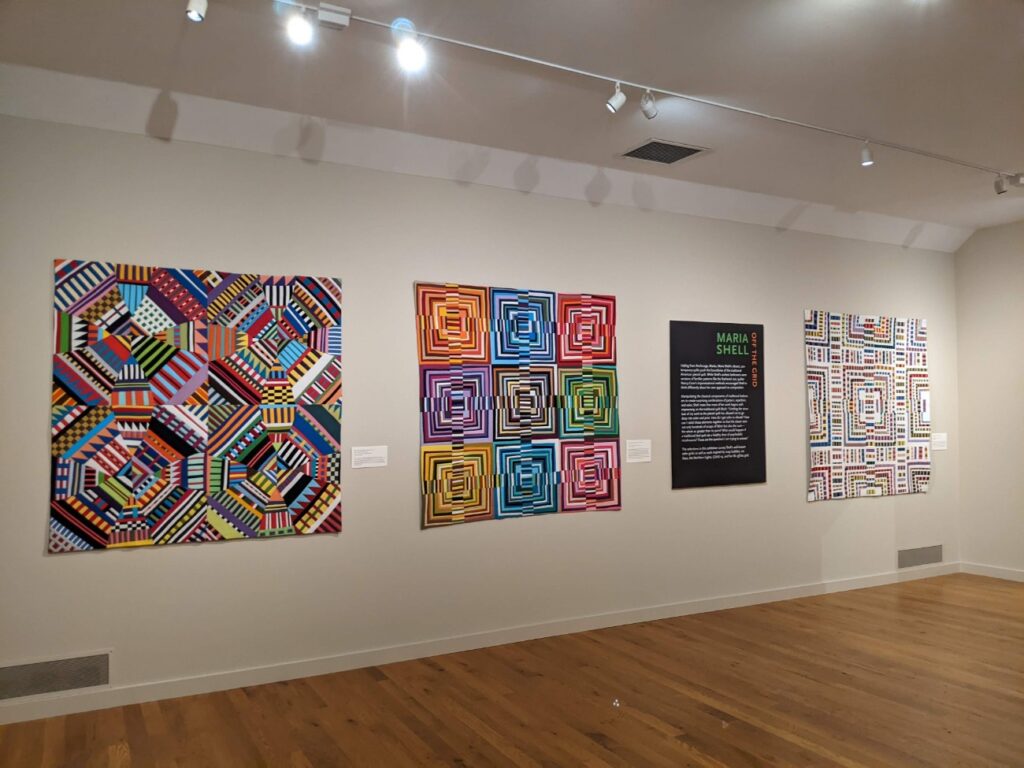
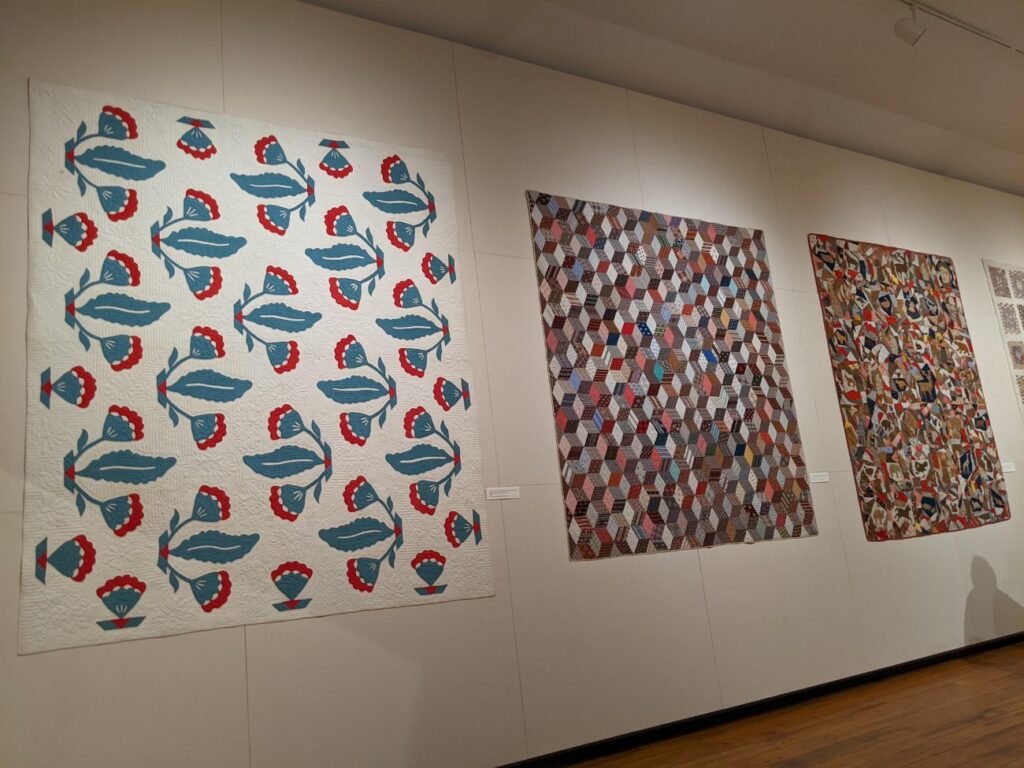
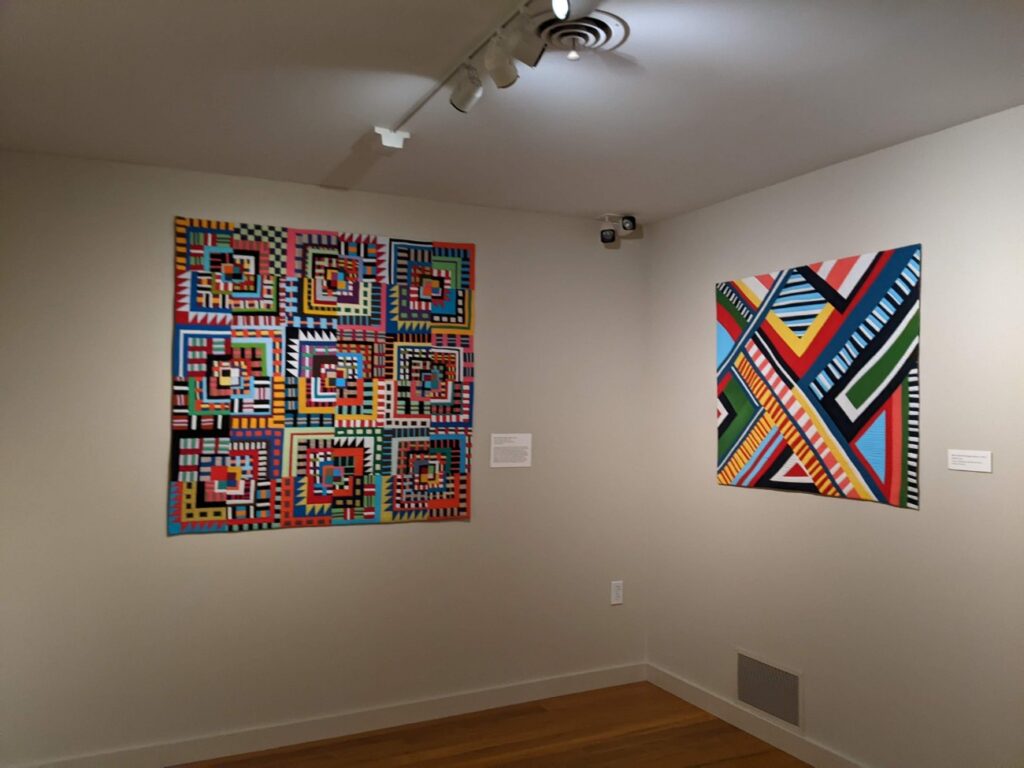
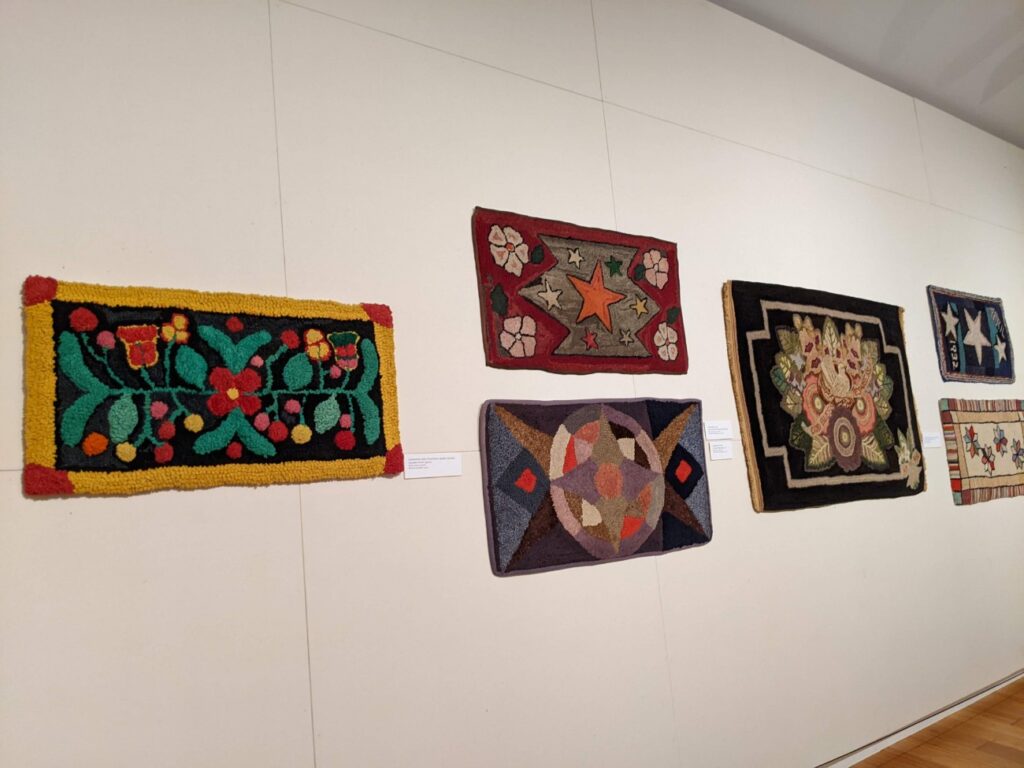
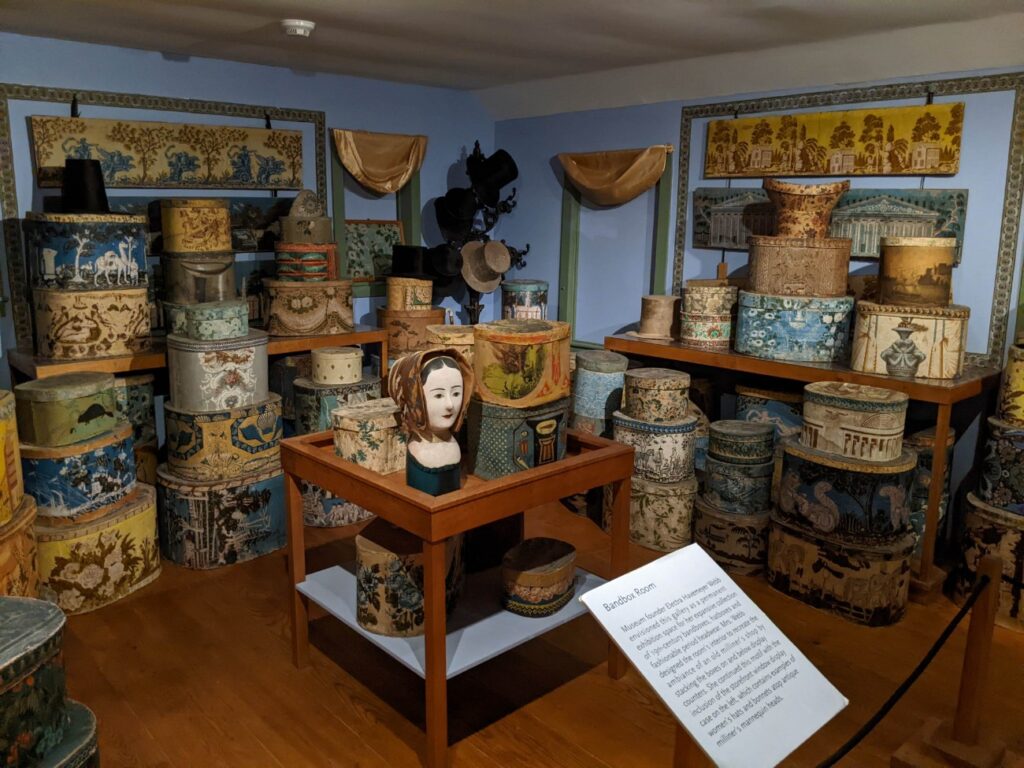
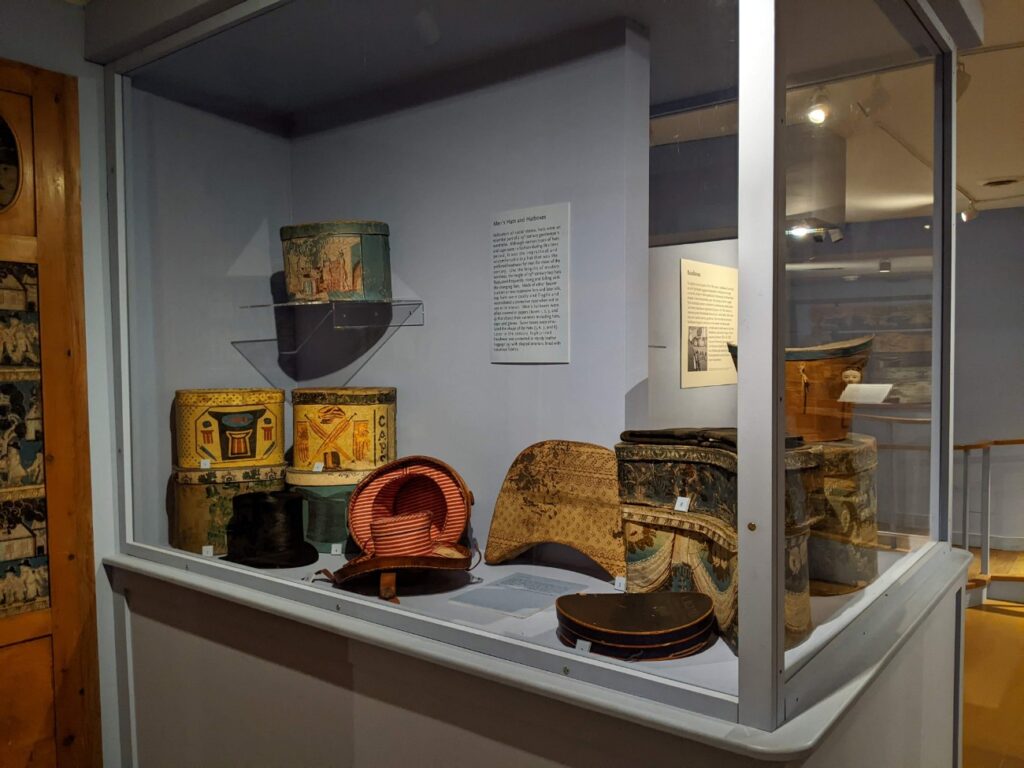
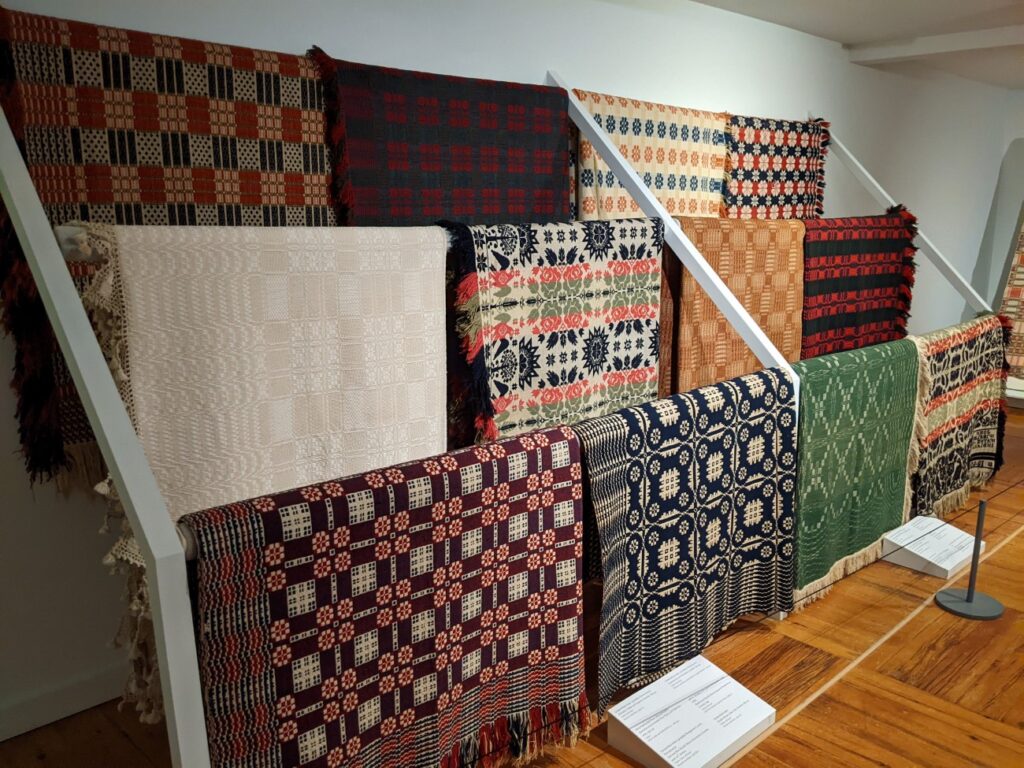
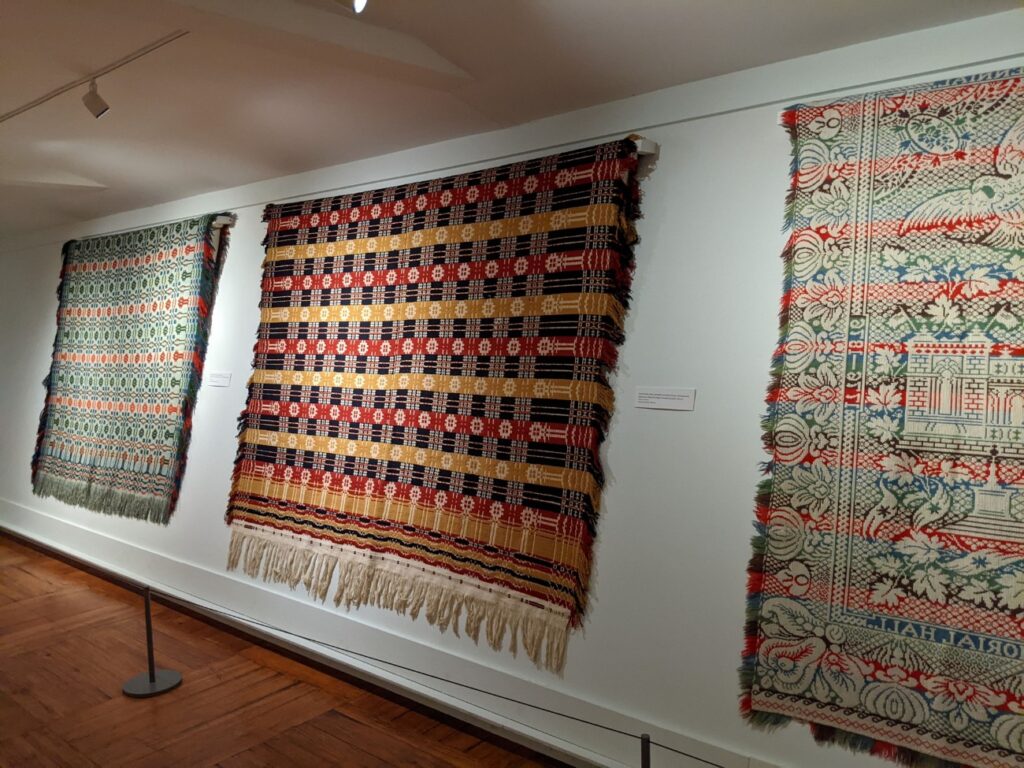
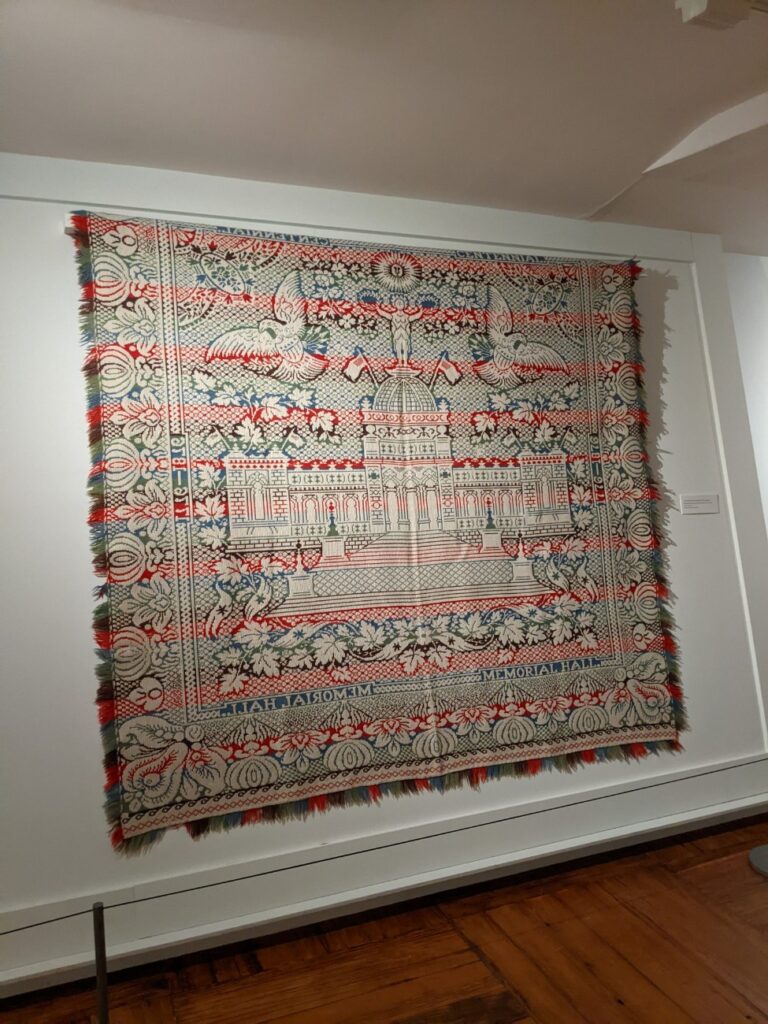
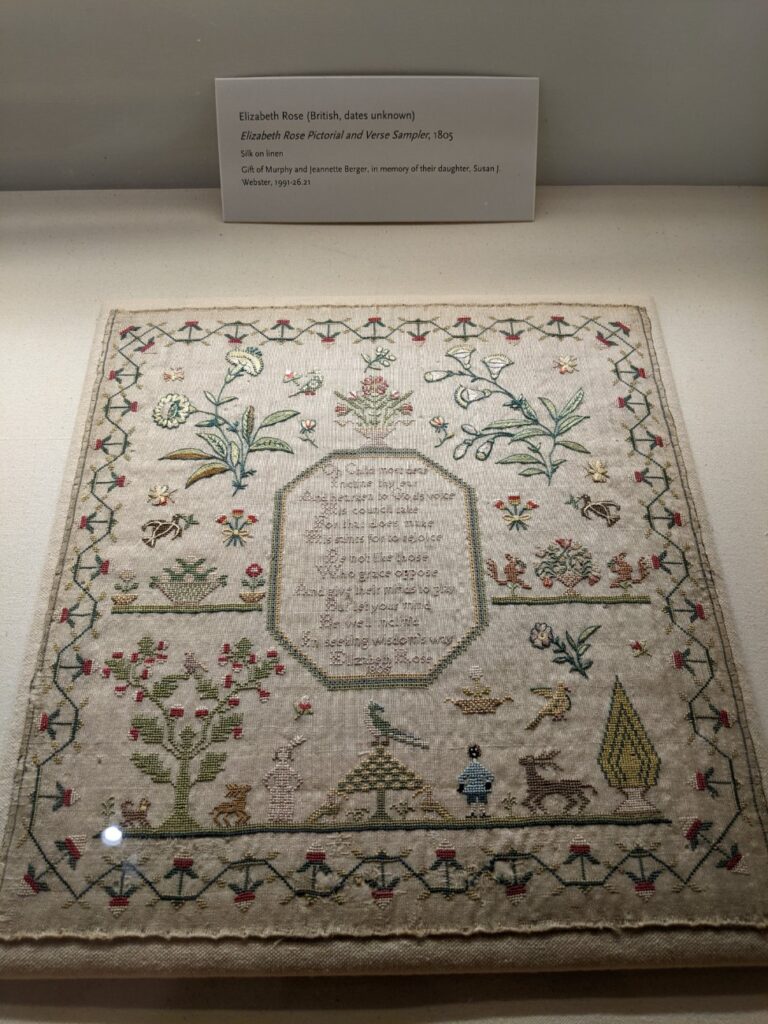
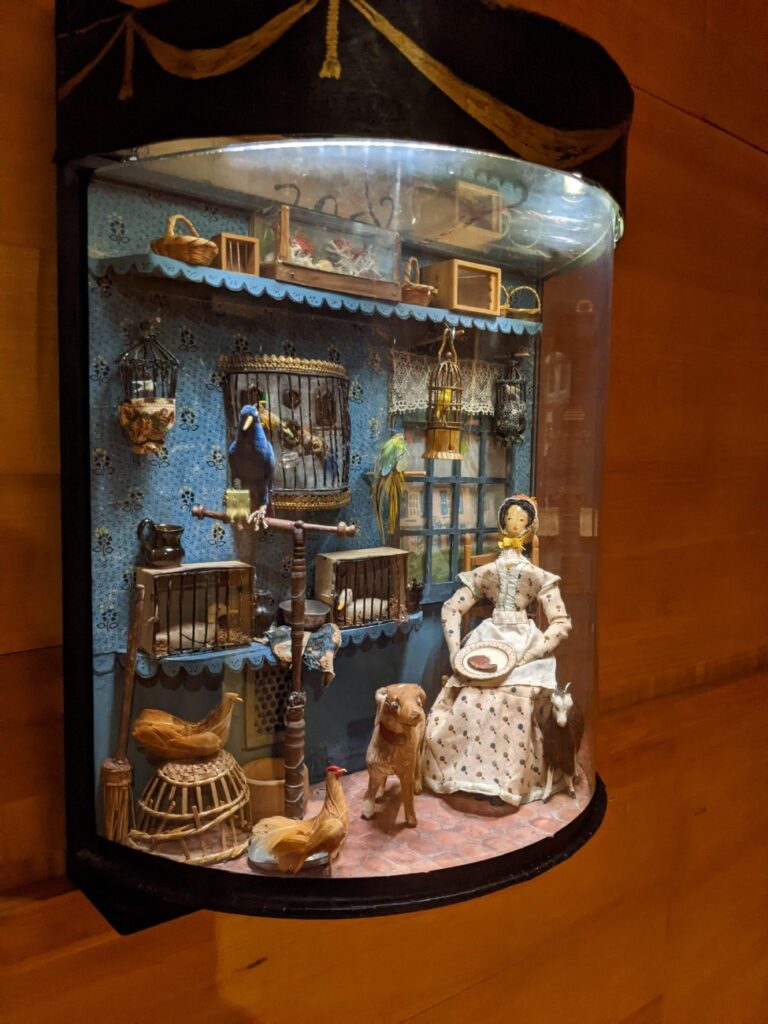
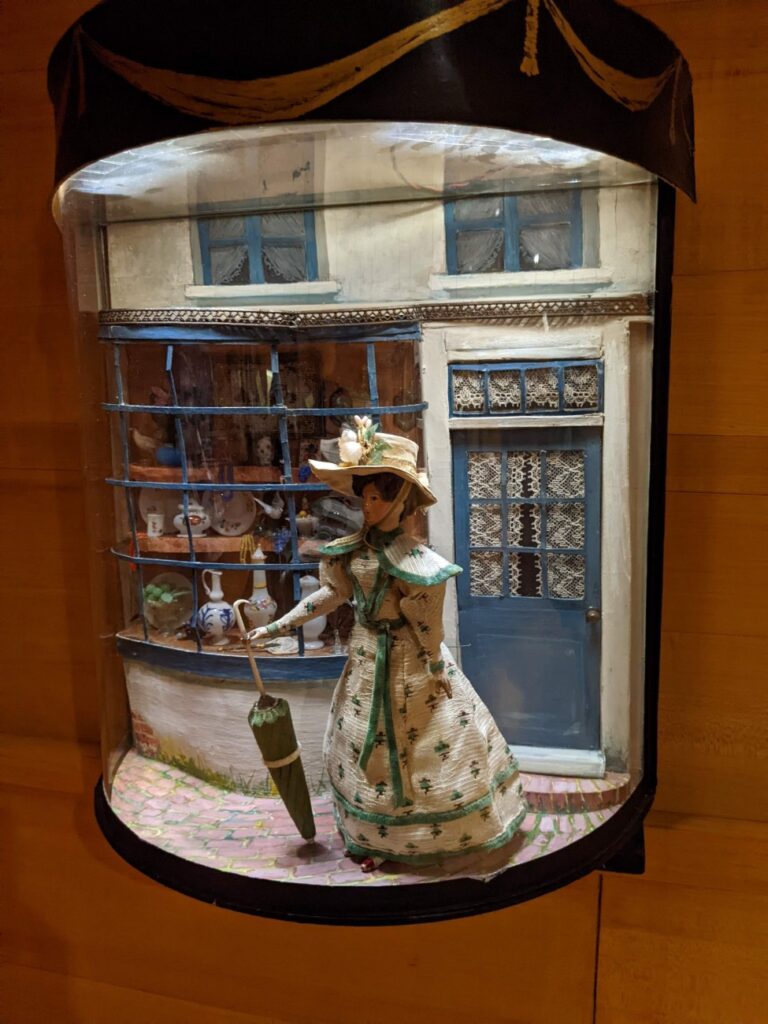
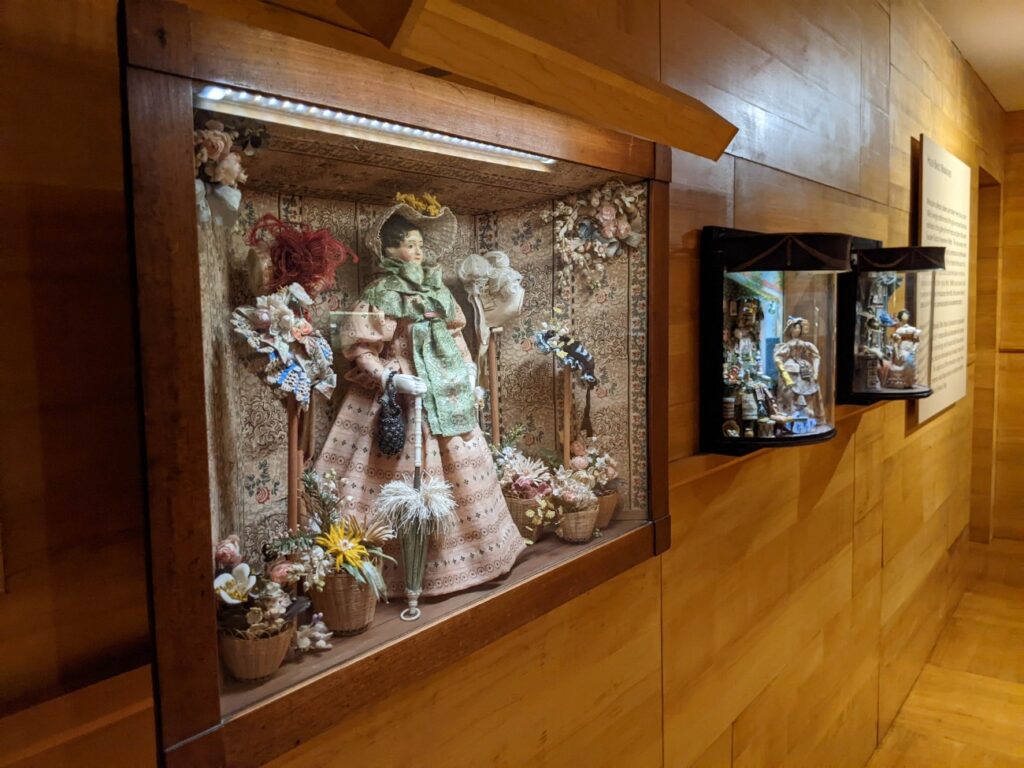
Variety Unit
True to its name, the Variety Unit holds an array of different collections, mostly in the decorative arts, with an upstairs dedicated to dolls and toys. The house itself is the only building original to the property, with the front still facing the main street. And in the style of New England continuous architecture, has rambling additions to the backside.
The result is a bit of a ramble inside, where you’ll discover galleries of glass, pottery, china, scrimshaw, metal trivets, wooden molds, bottles, and more. Upstairs is a converted attic space that showcases dolls and toys. A separate room displays automata, which are fascinating! None of them are operating, but a video plays on a loop showing each one in action.
The Shelburne Museum map also shows a Toy Shop attached to the back of the Variety Unit, with a running American Flyer train. I don’t remember seeing it, so it’s possible I missed a whole room! There are also bathrooms tucked back in here, so make sure you prowl around and find everything.
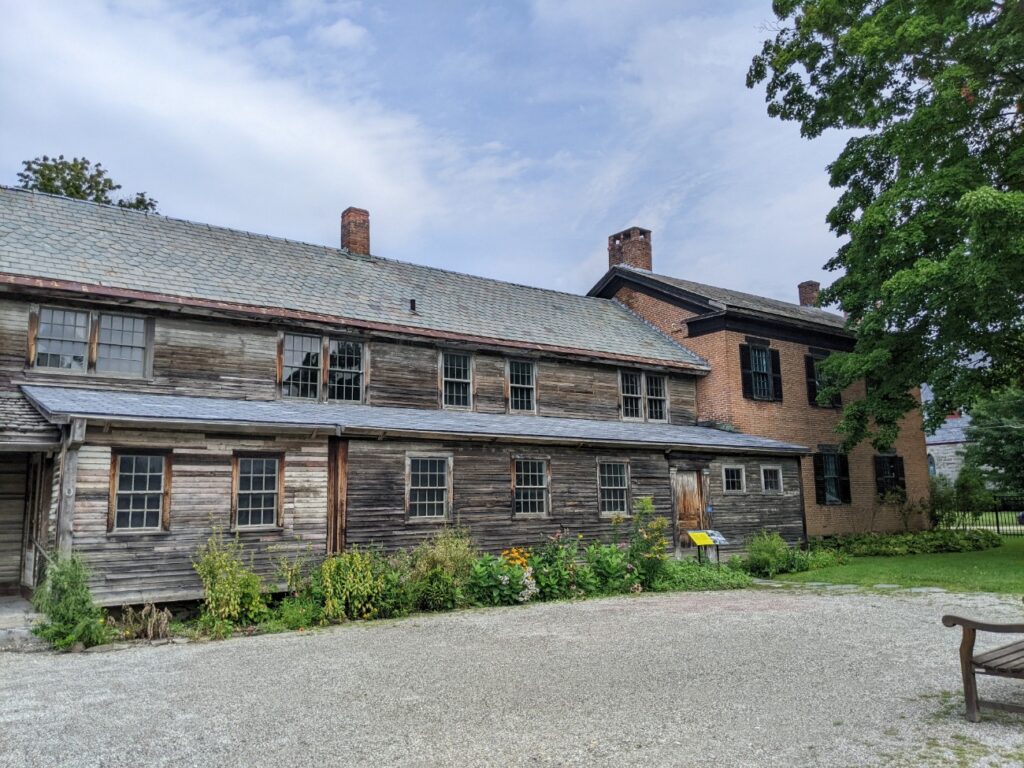

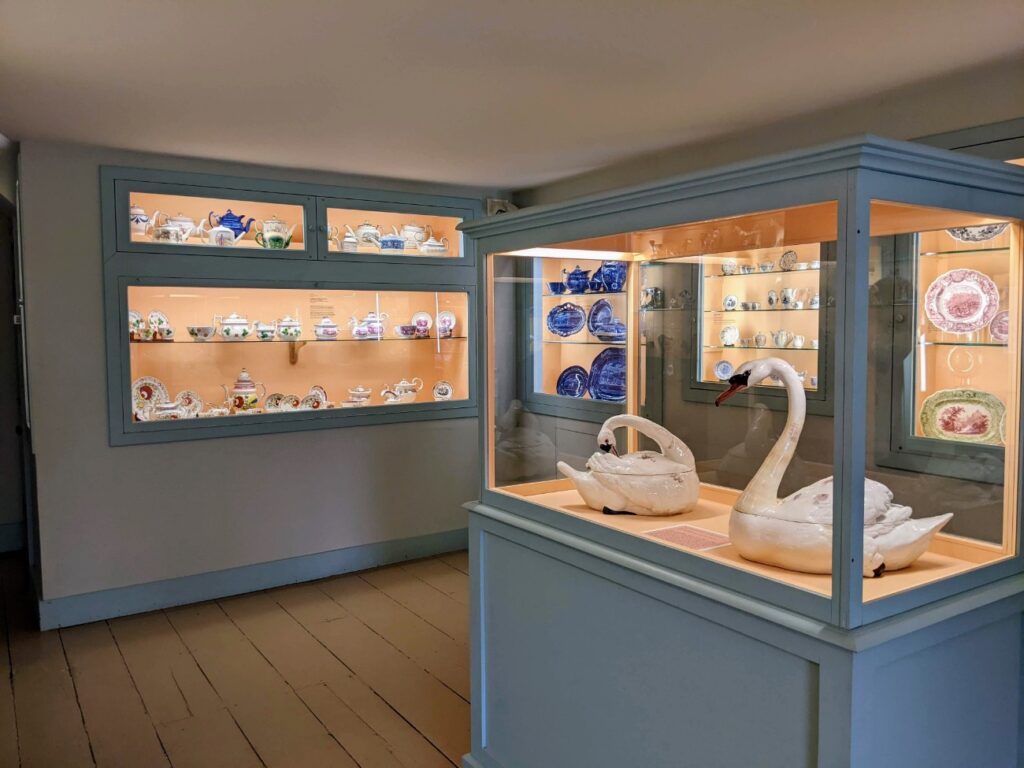
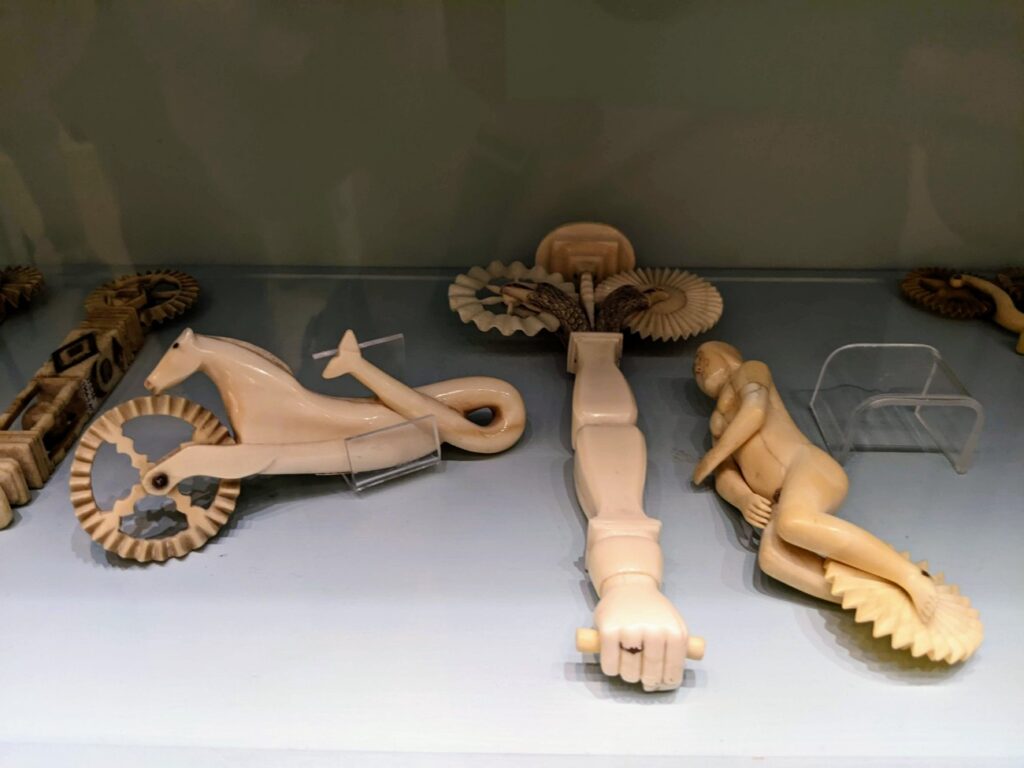
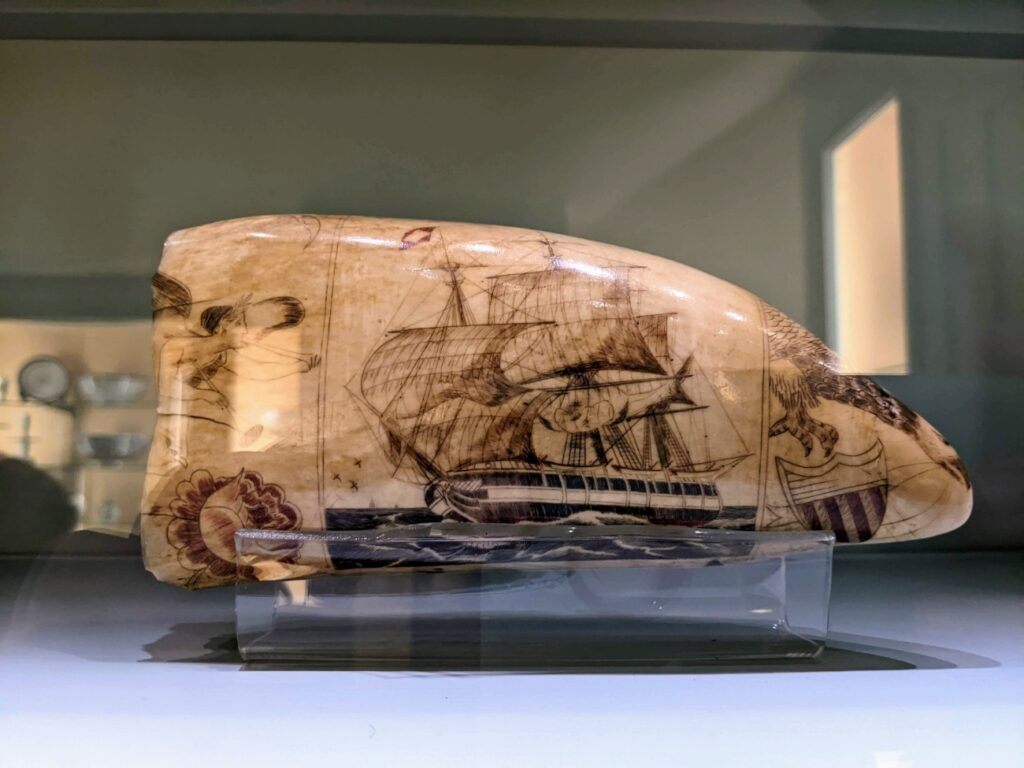
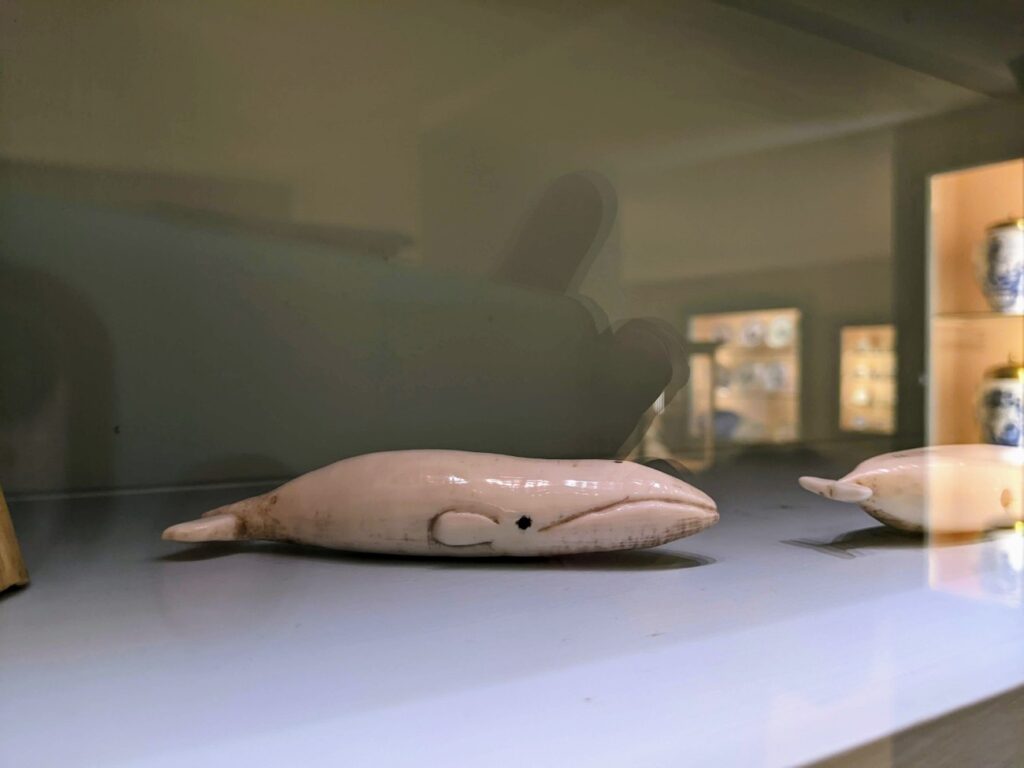
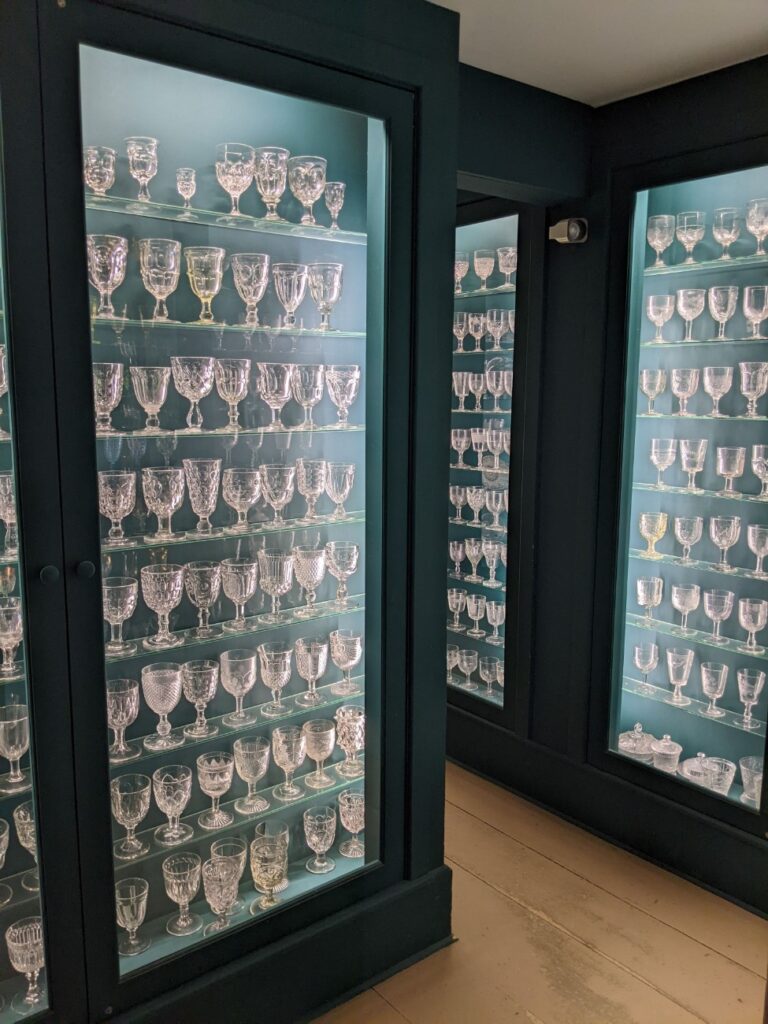
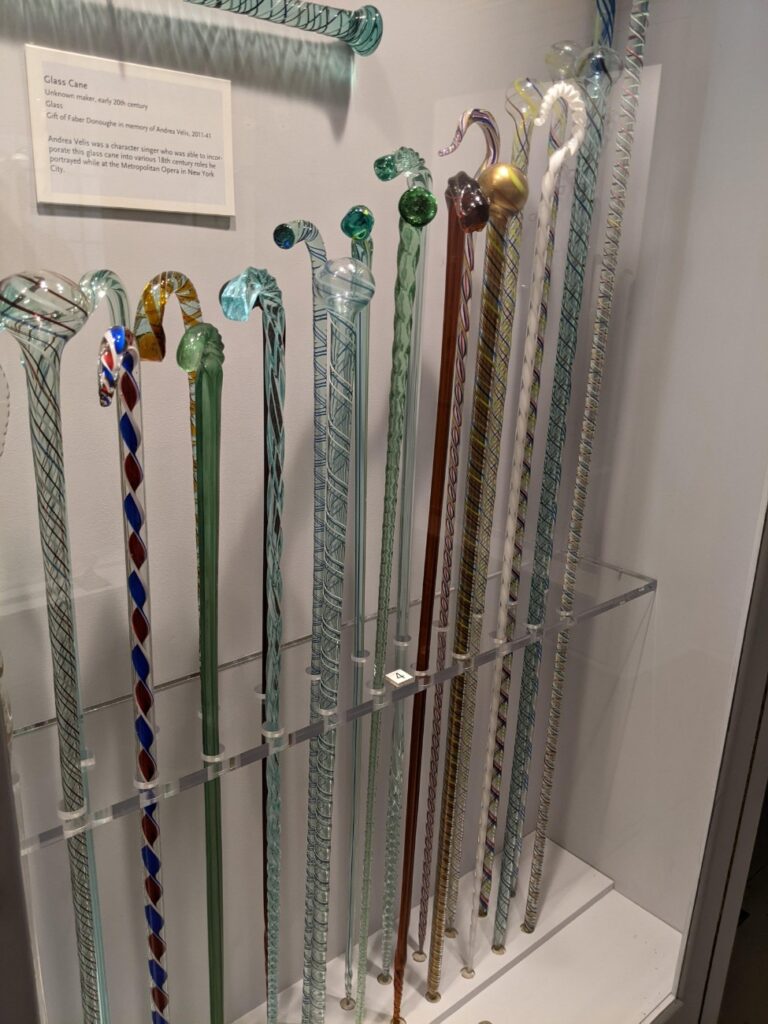
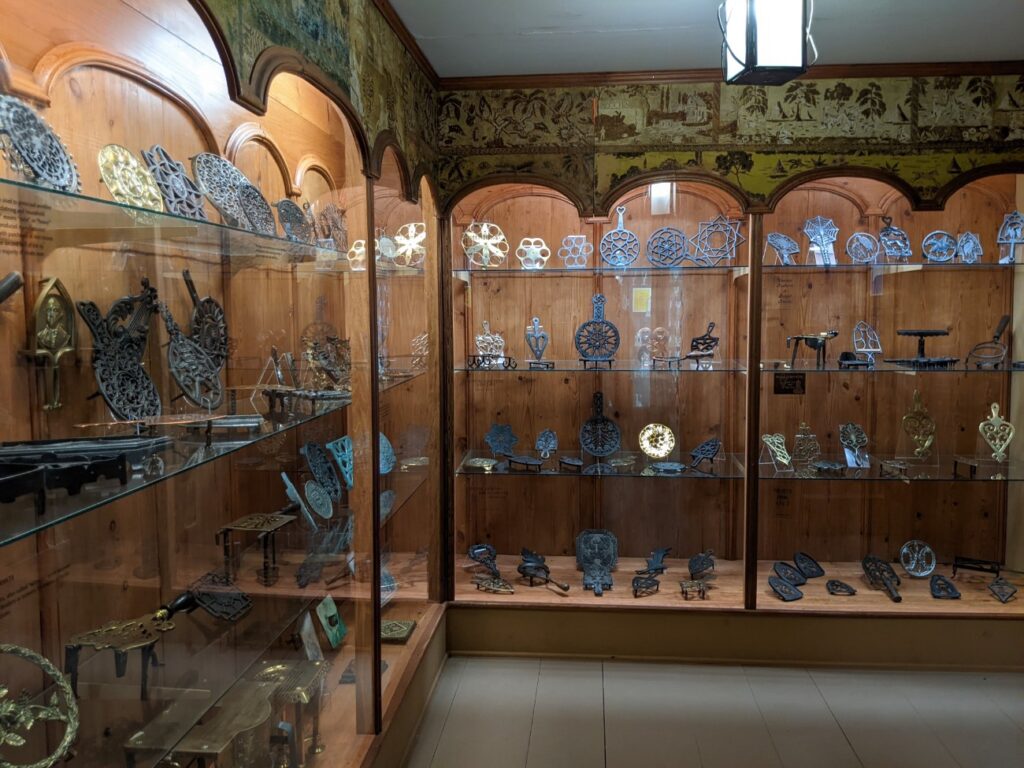
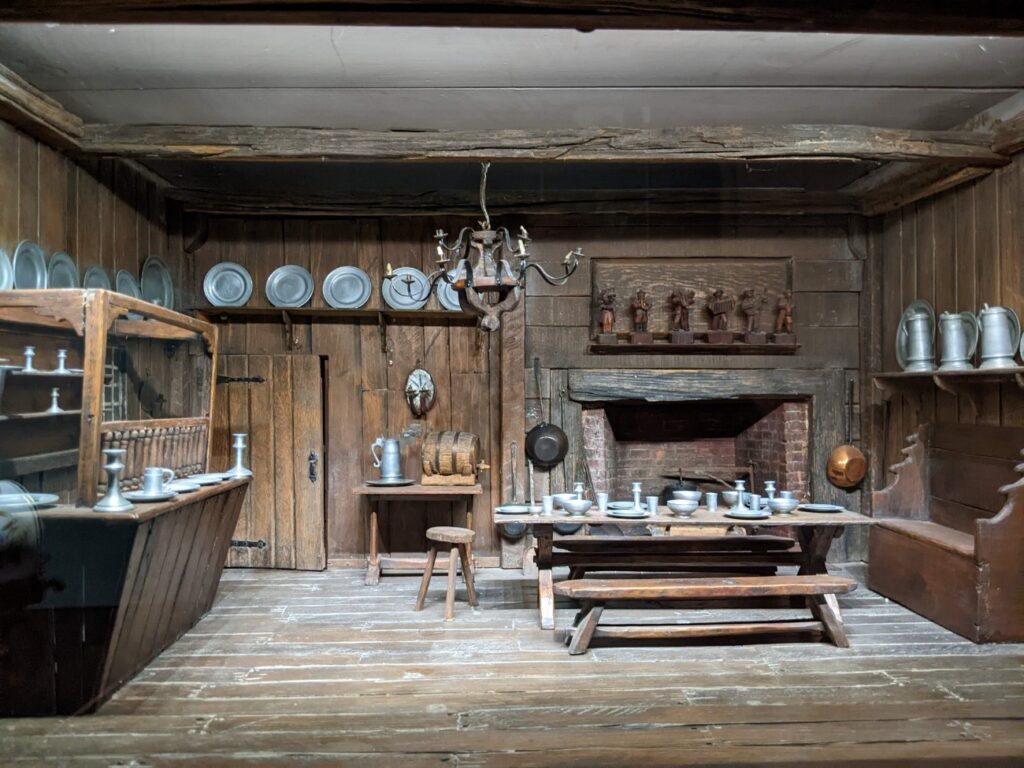
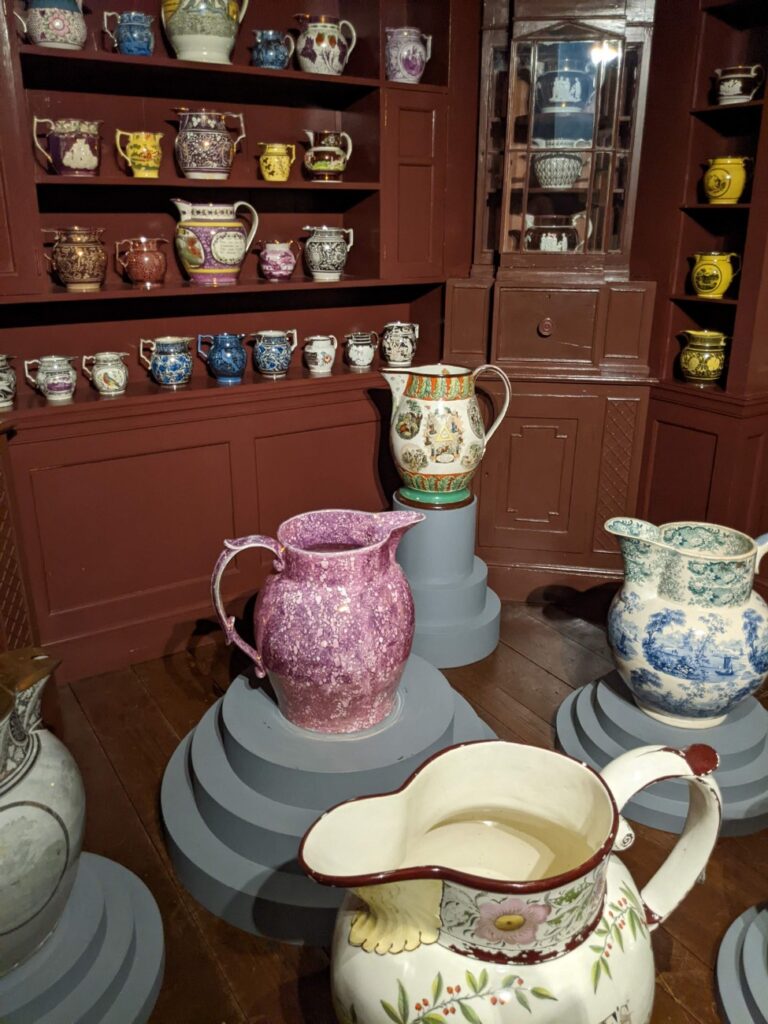
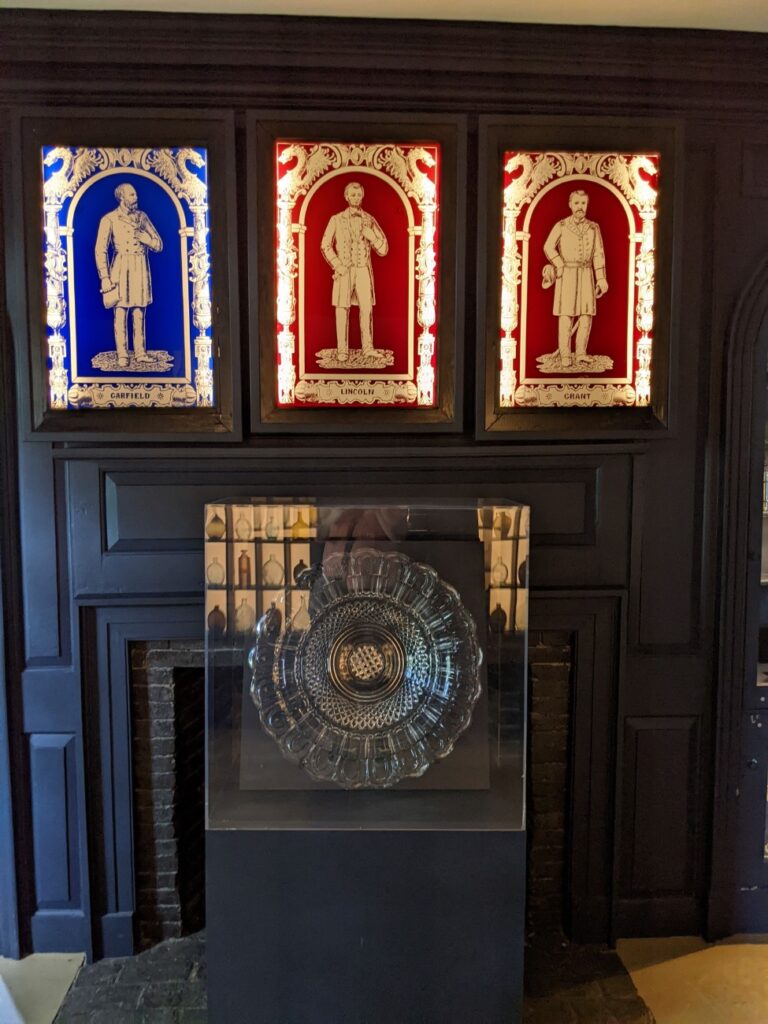
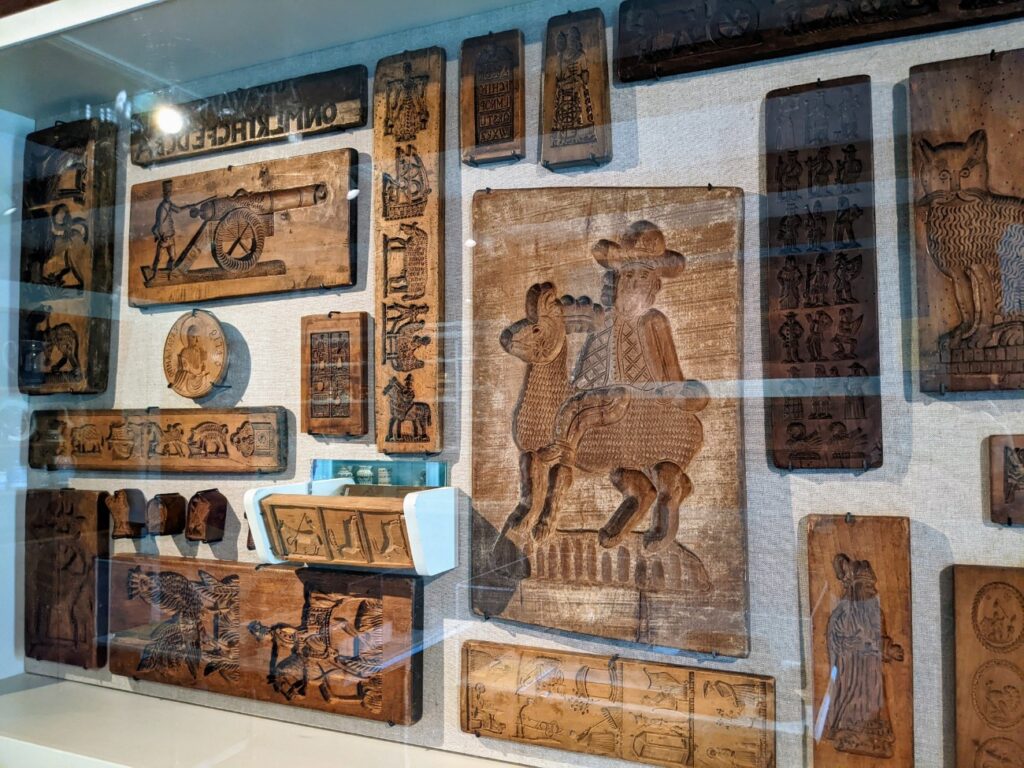
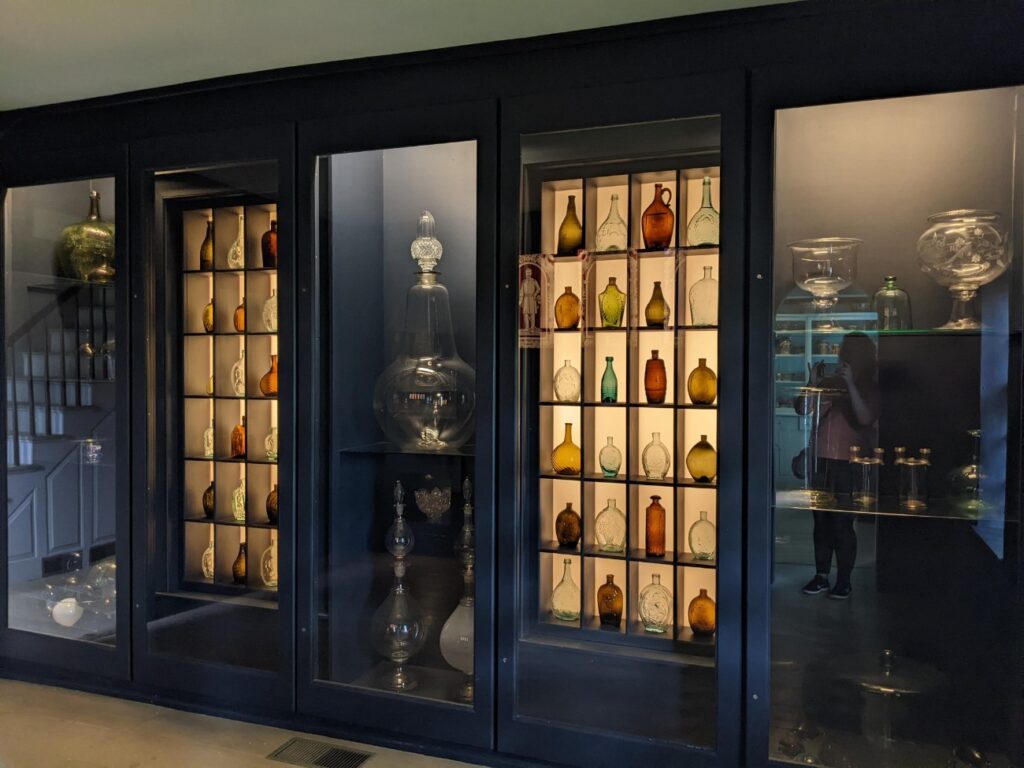
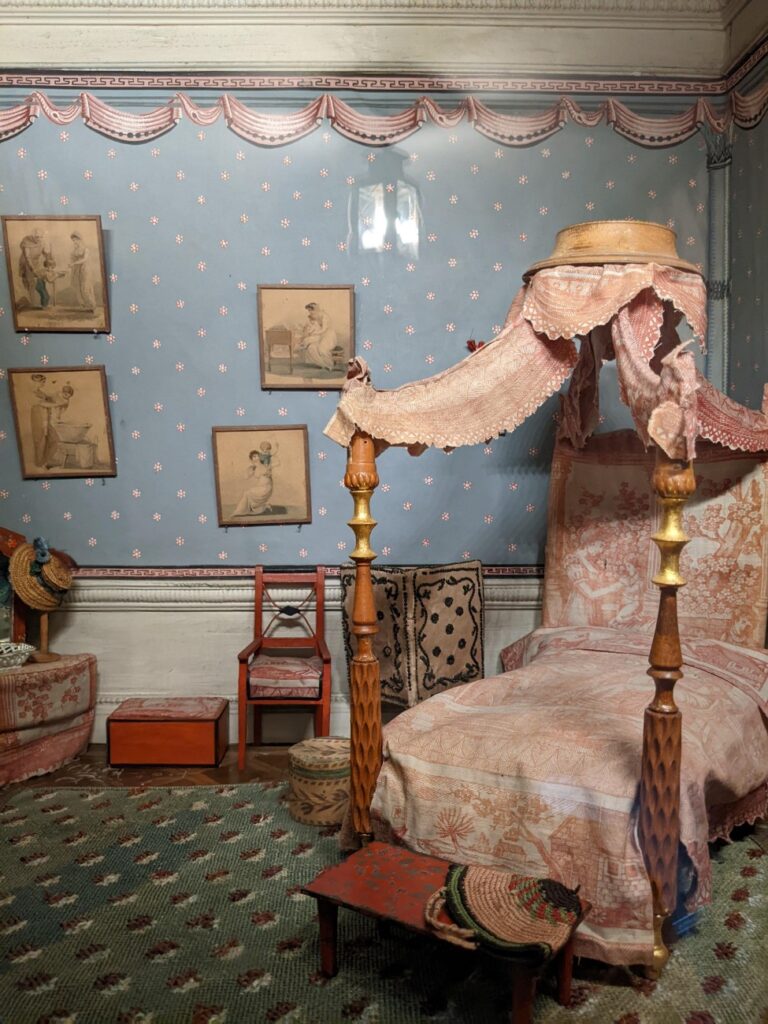
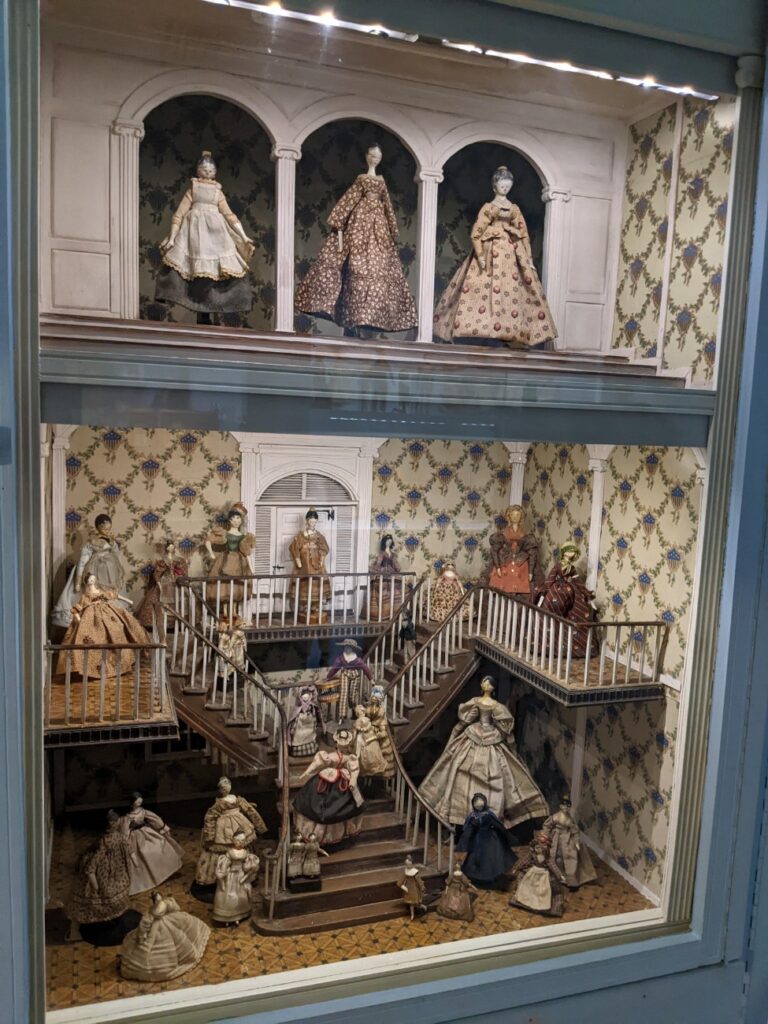
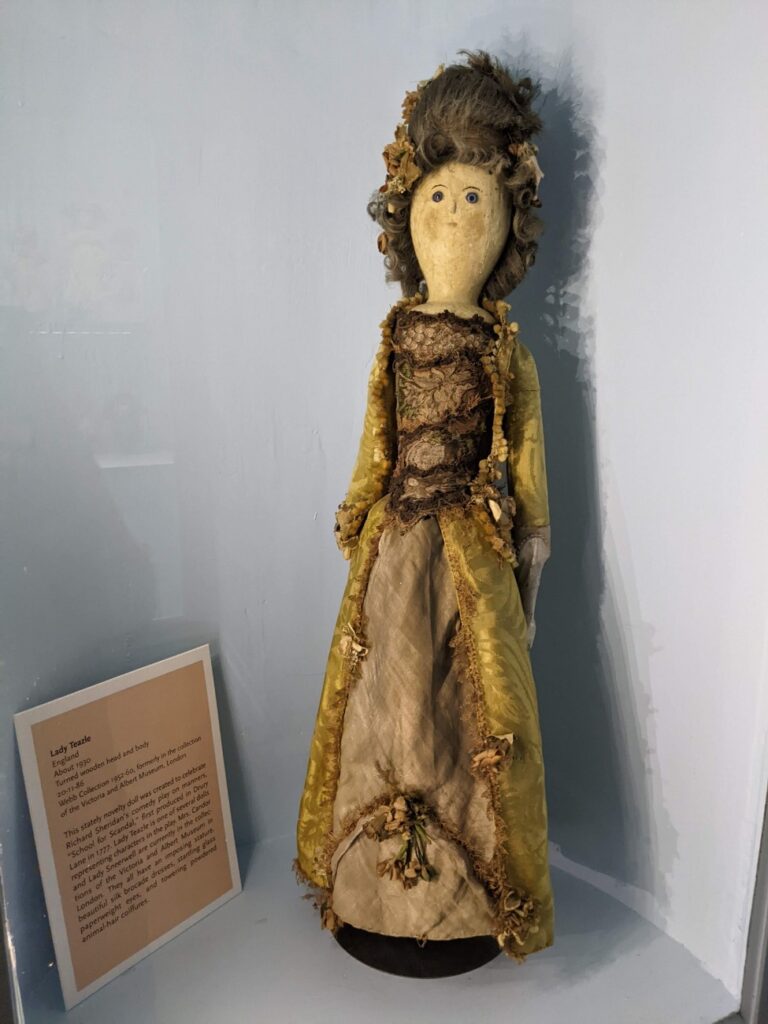
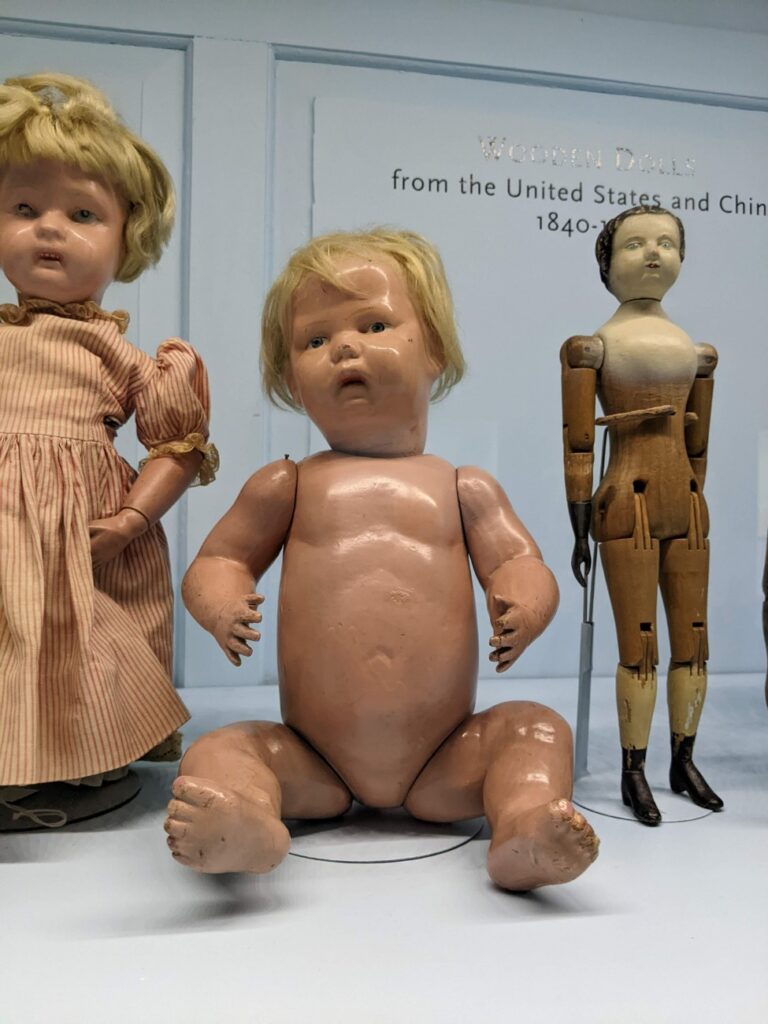
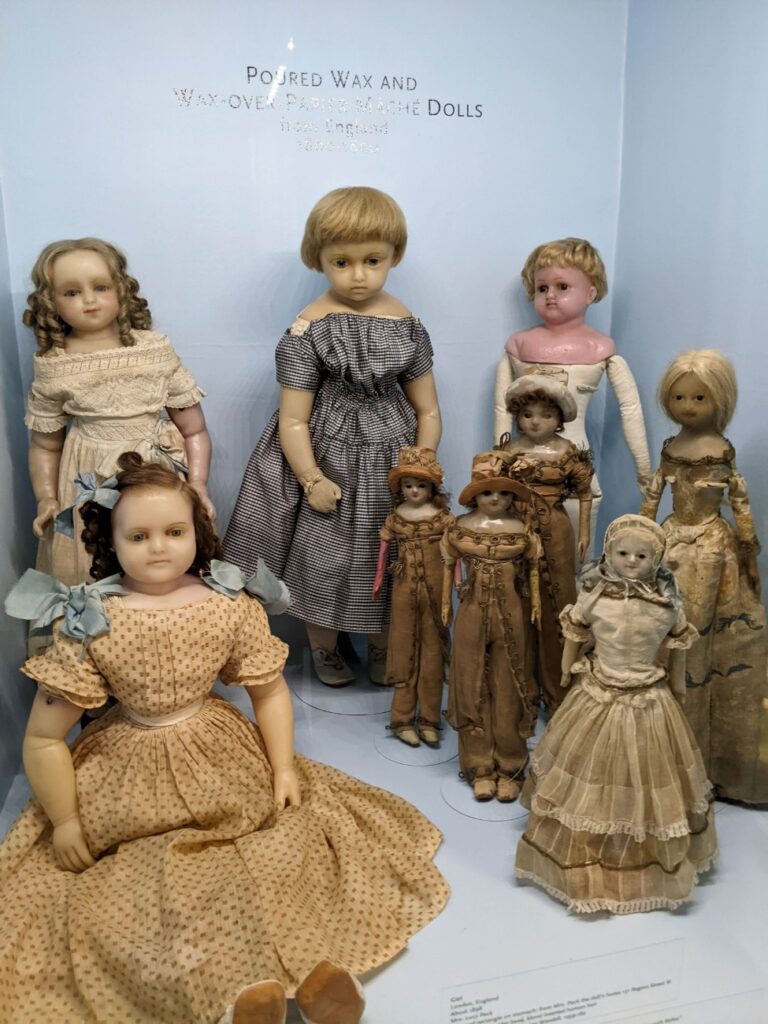
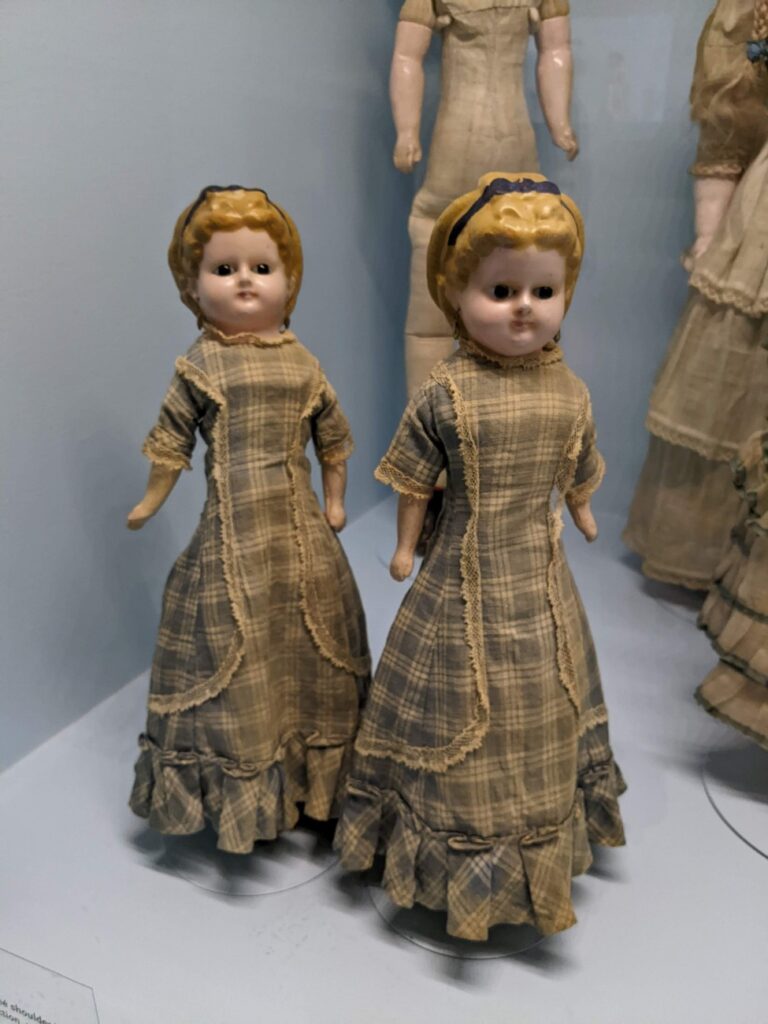
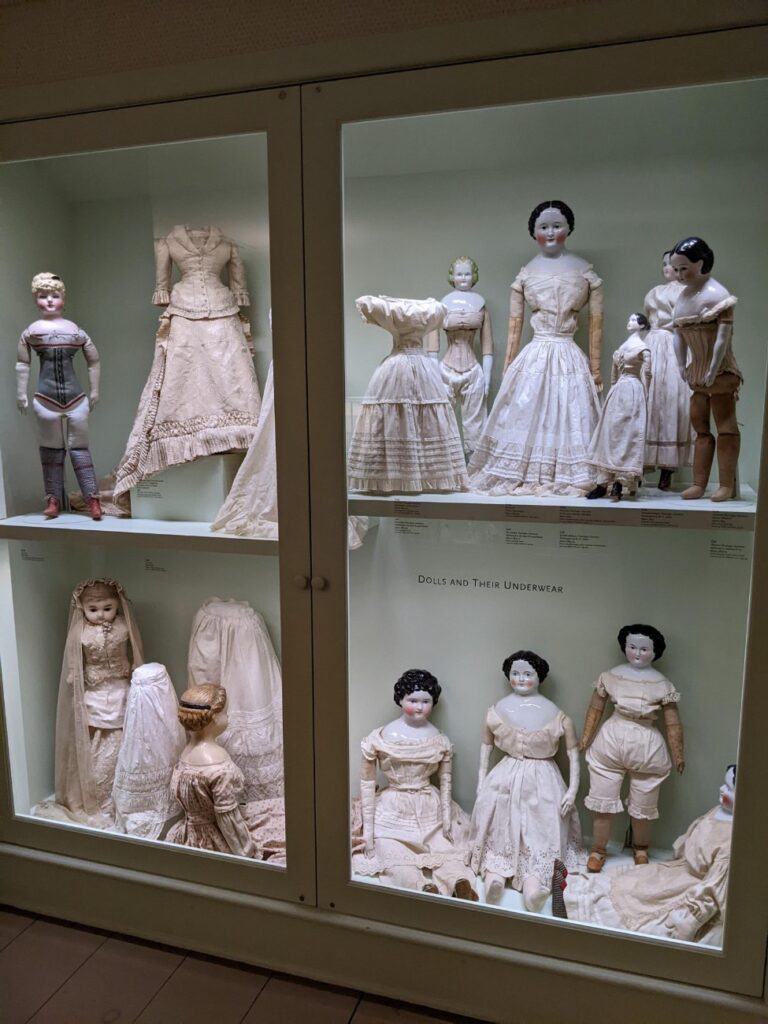
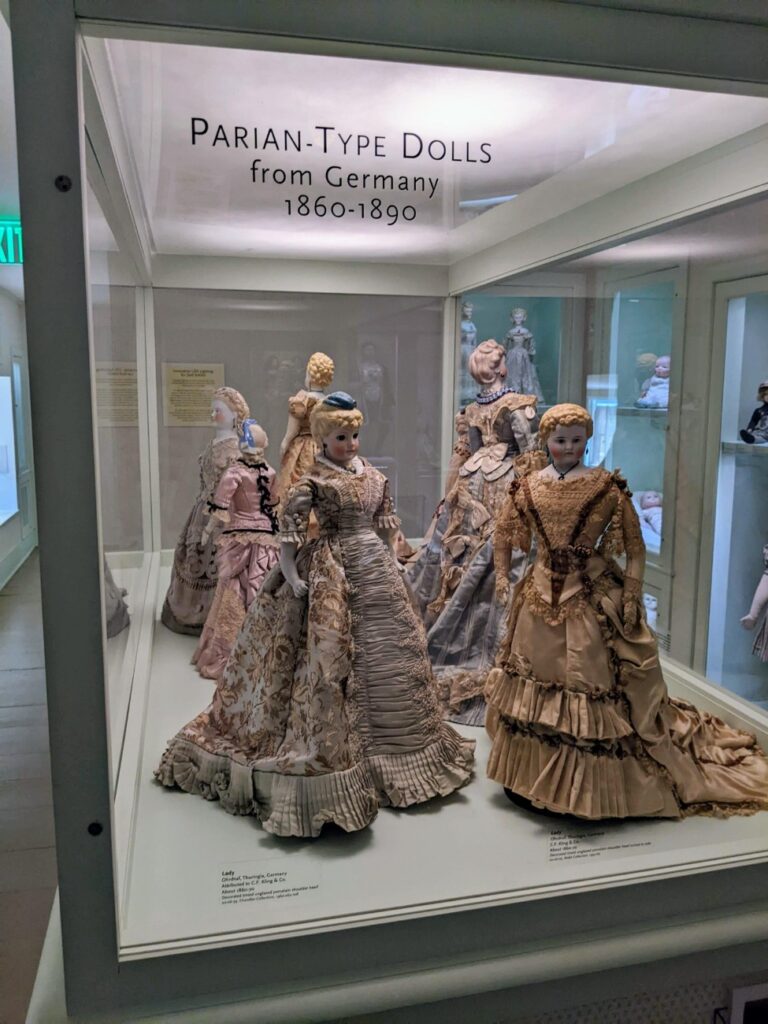
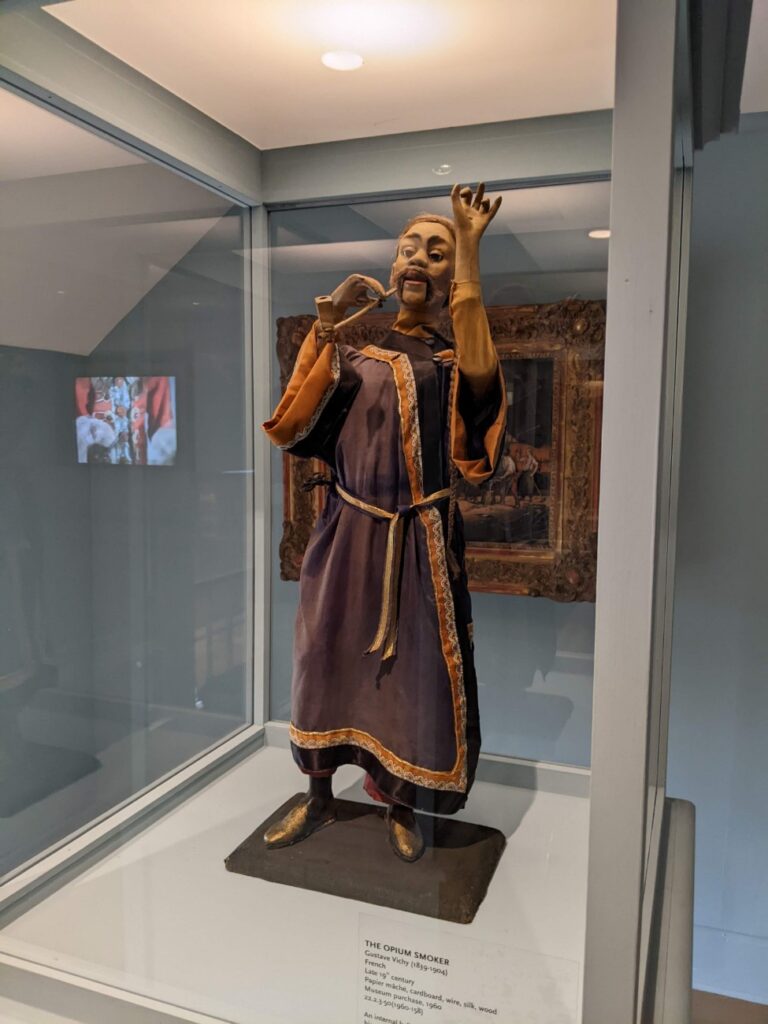
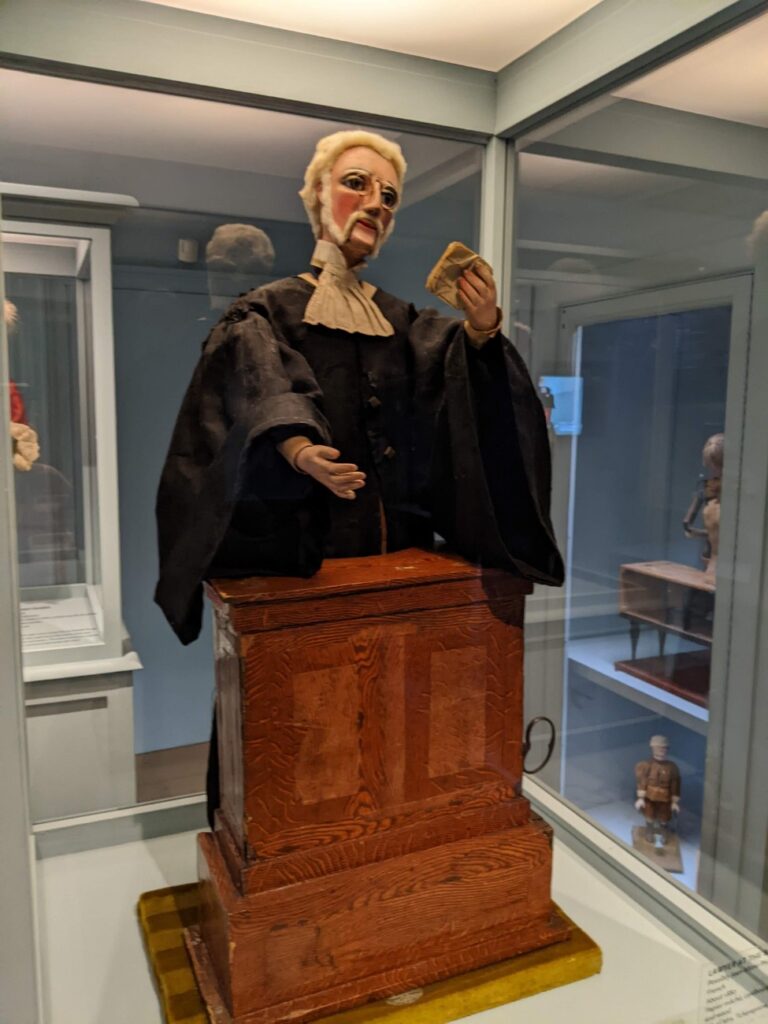
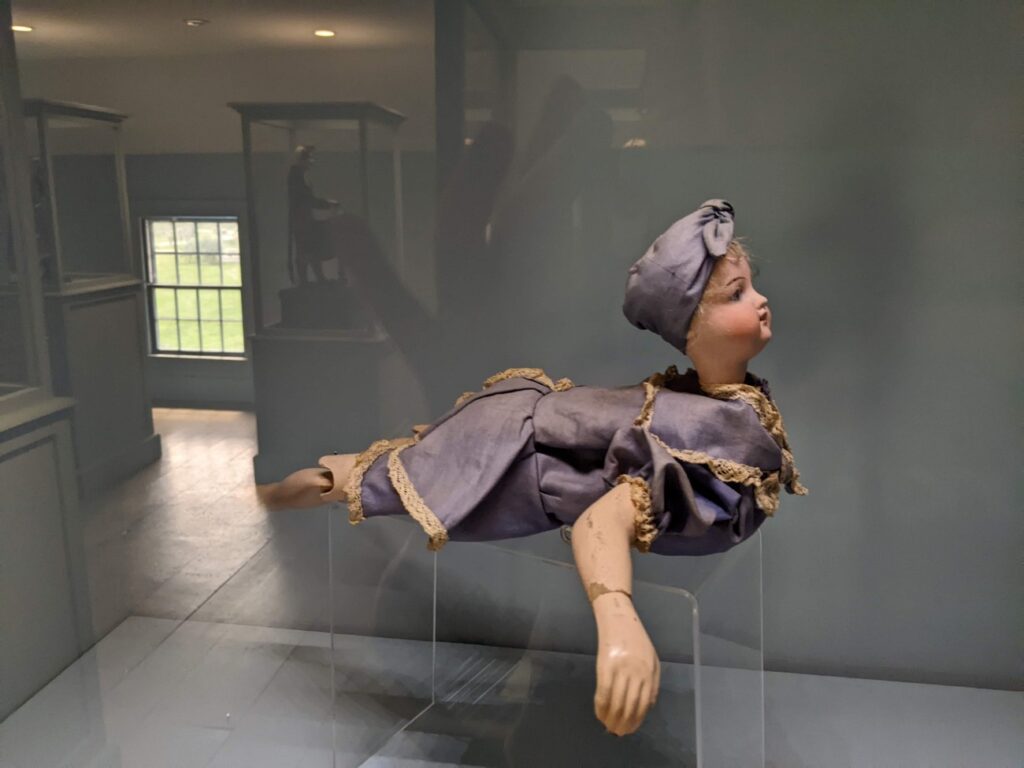
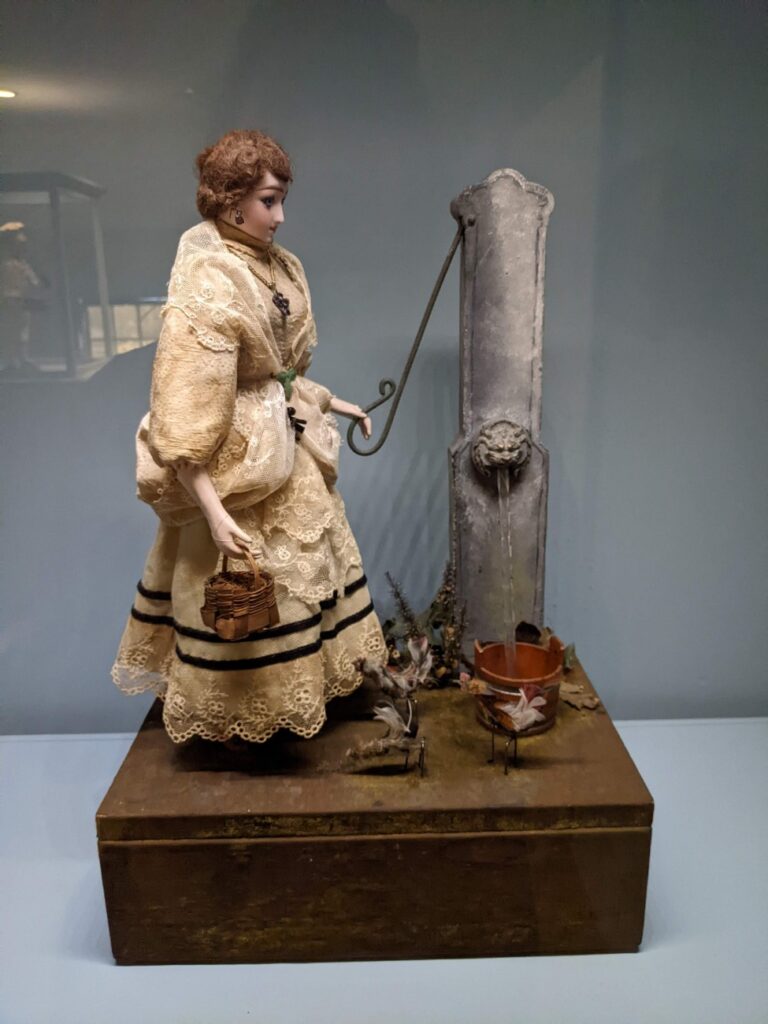
Stone Cottage
Compared to the riches found in the Variety Unit or the Horseshoe Barn, the Stone Cottage isn’t much to see. I don’t think you can even properly go inside, just peek in the door. This cottage comes from South Burlington nearby and was built around 1840 as a farmer’s two-room home. The yard around it contains a Smokehouse, circa 1820 from Charlotte.
There is a nice lawn between the Stone Cottage, Schoolhouse, and Stagecoach Inn. Along one side, there is a series of stands that hold the pages of a children’s book. Going down the line to each one, you can read the whole book. During my visit, it was a fun one about a guy & his dog on a camping trip. Due to a hungry bear, they get a little more adventure than they were looking for!
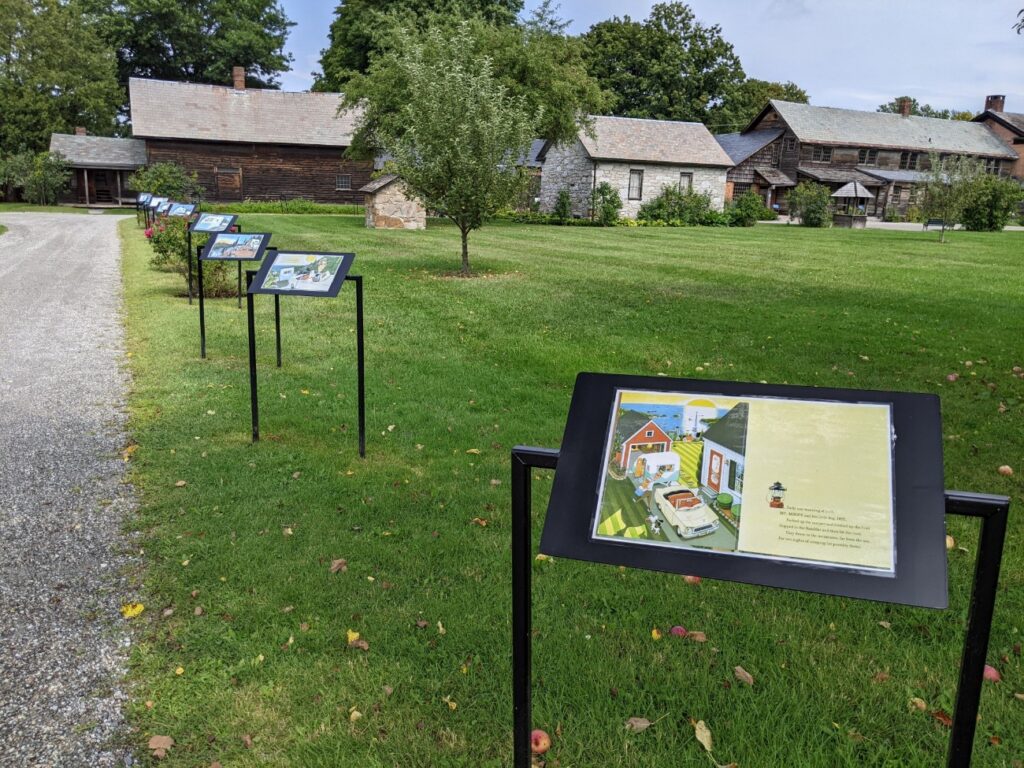
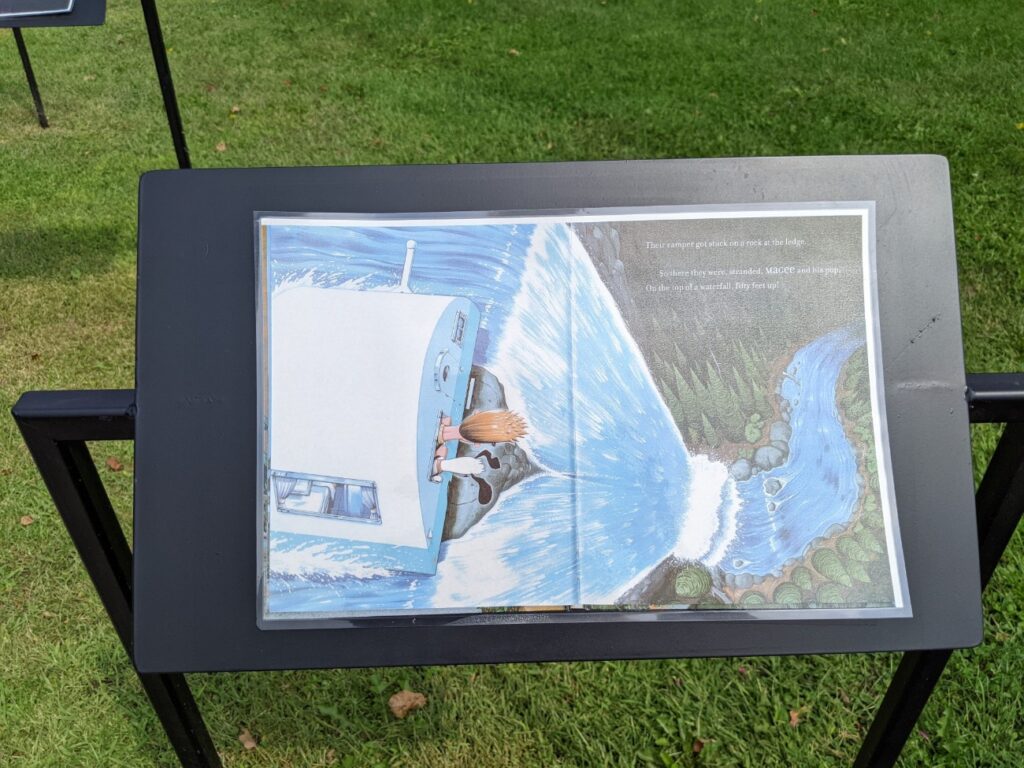
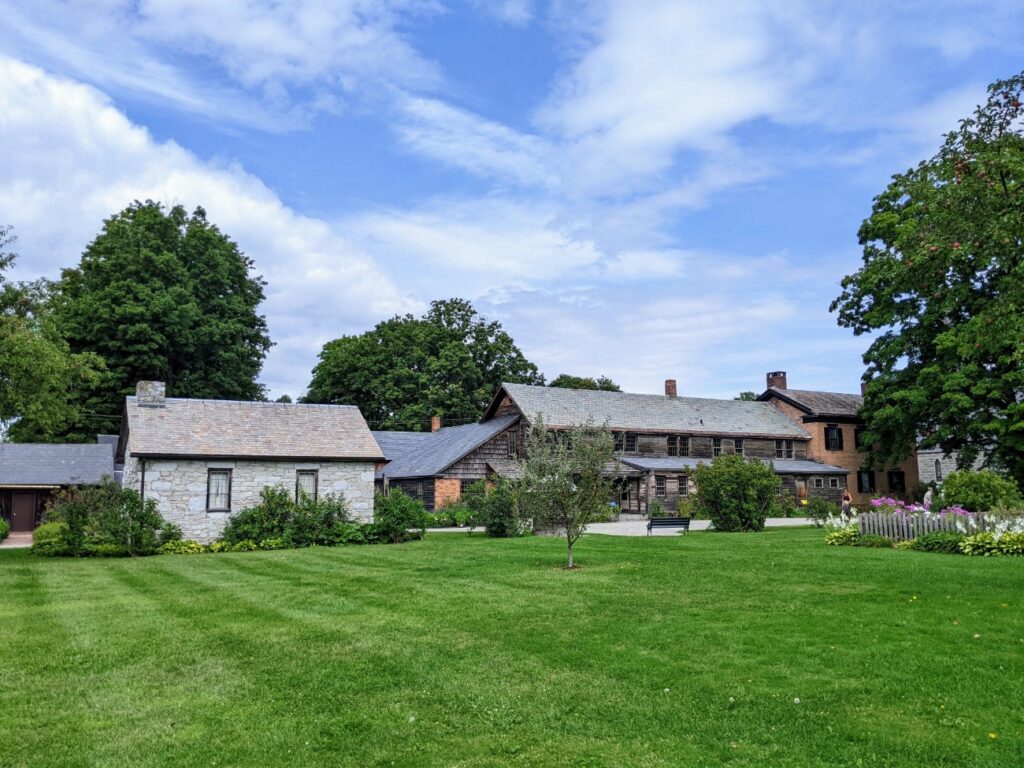
Schoolhouse
The children’s book might be in honor of the nearby Schoolhouse, from Vergennes, VT, ca. 1840. This one-room schoolhouse is really pretty in red brick with a bell tower. Inside is set up with desks, chalkboards, and an all-important wood stove. Make sure to walk the looping side trail around to the front in order to go inside.
Around the back of the schoolhouse is – appropriately – a small, modern playground in case you have little kiddos that need to get some energy out. Swings, a short slide, and some bouncy animals can be found in a pretty garden lined with a fanciful owl fence.
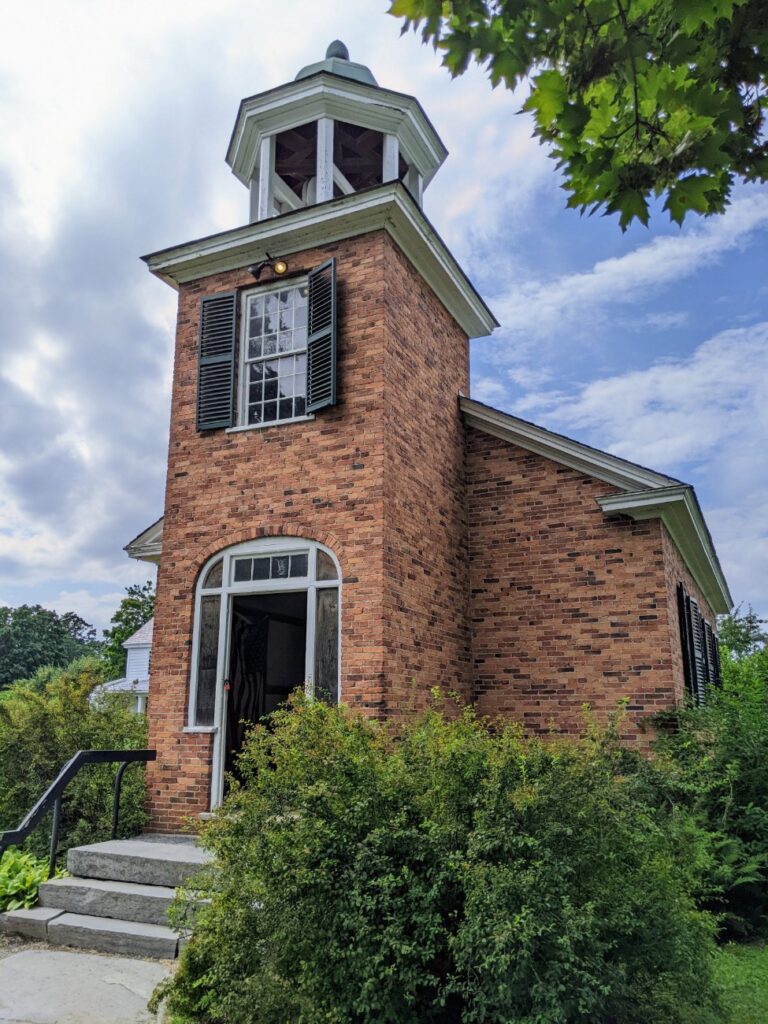
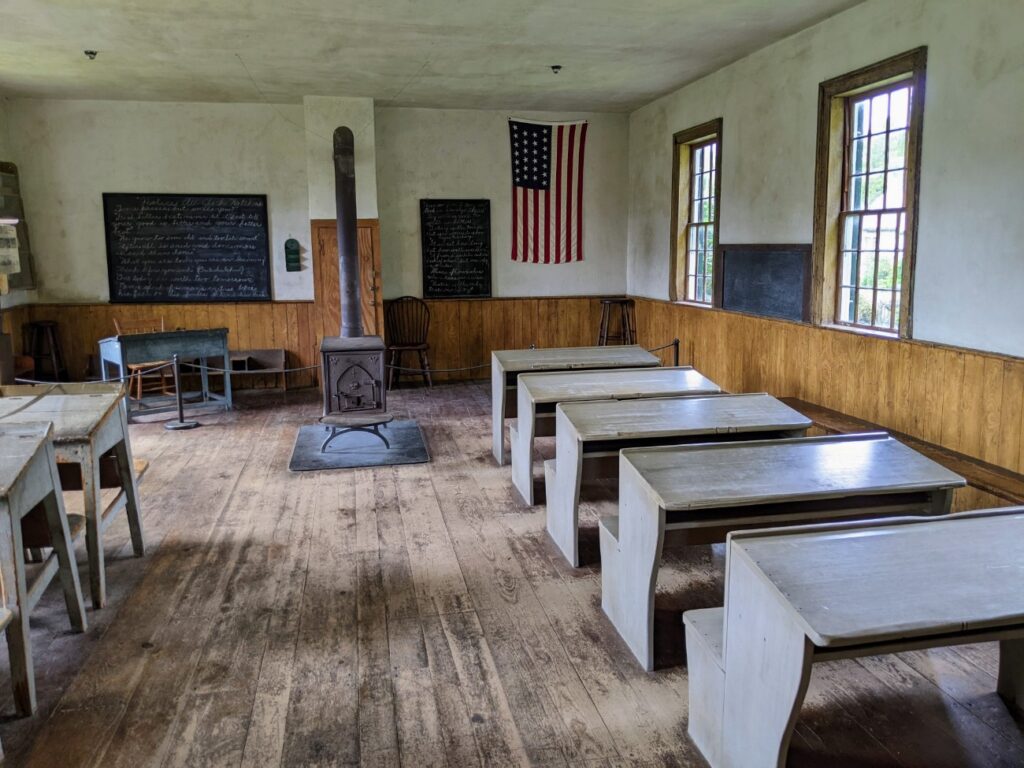
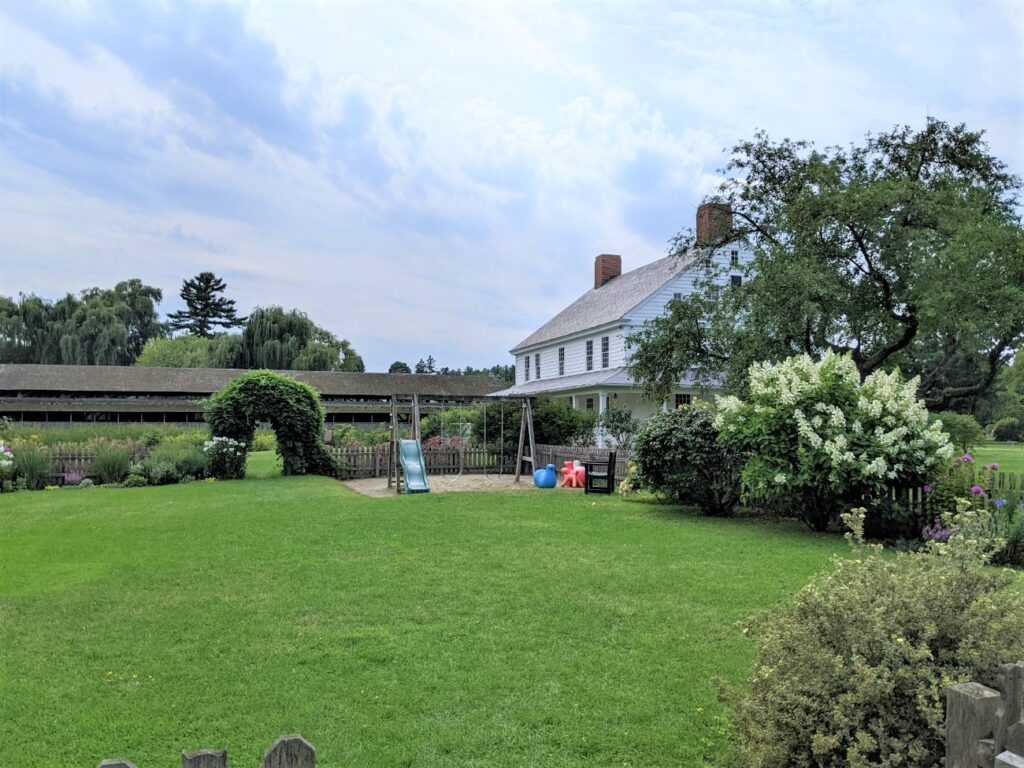
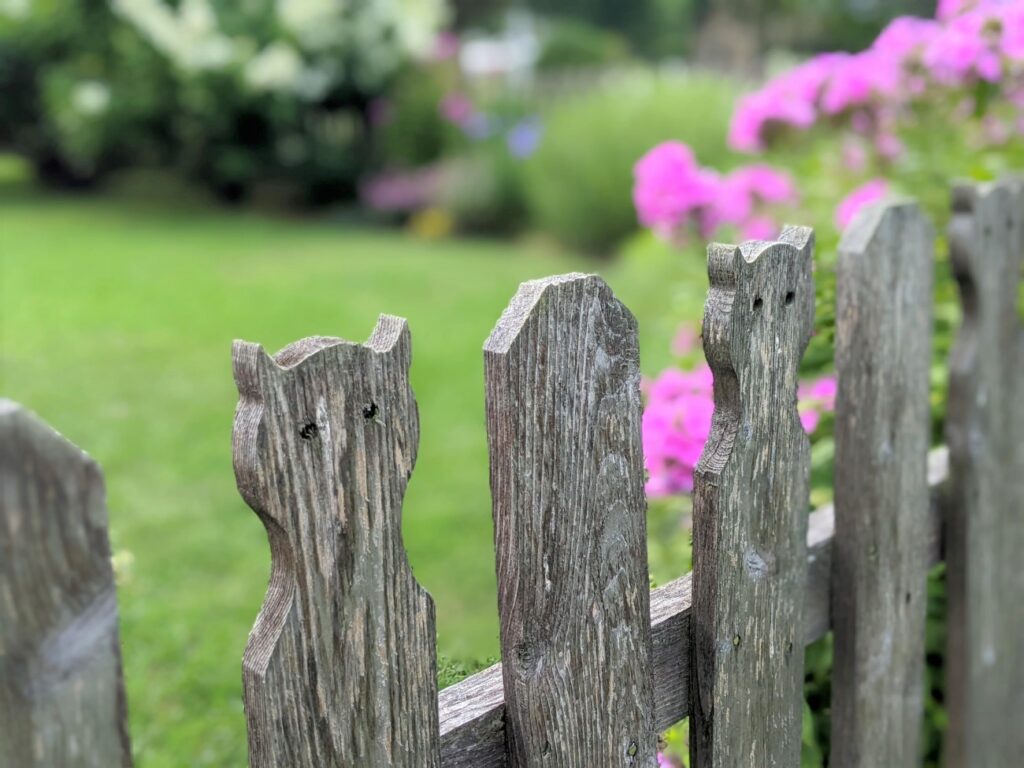
Stagecoach Inn
The Stagecoach Inn is from nearby Charlotte in 1783. It houses Electra Webb’s original collection of antique signs, weathervanes, and more folk art. Unfortunately, it was closed for renovations during my visit. But I know it houses some of the more important, and earliest, works in her collection, so I’m sad to have missed it.
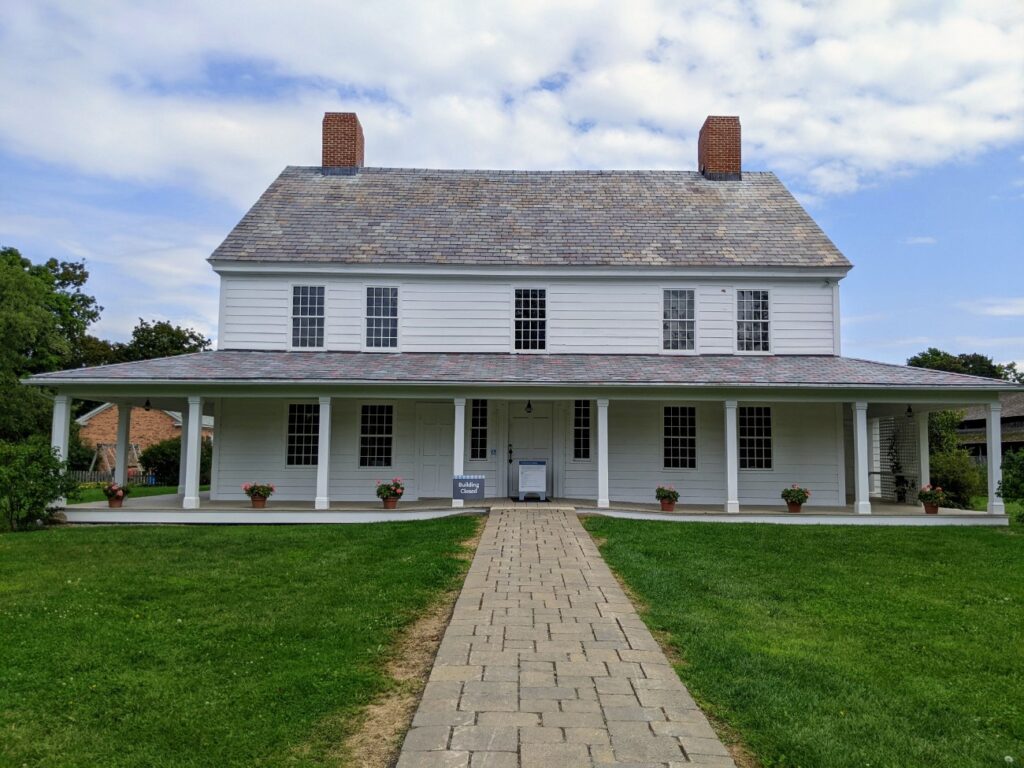

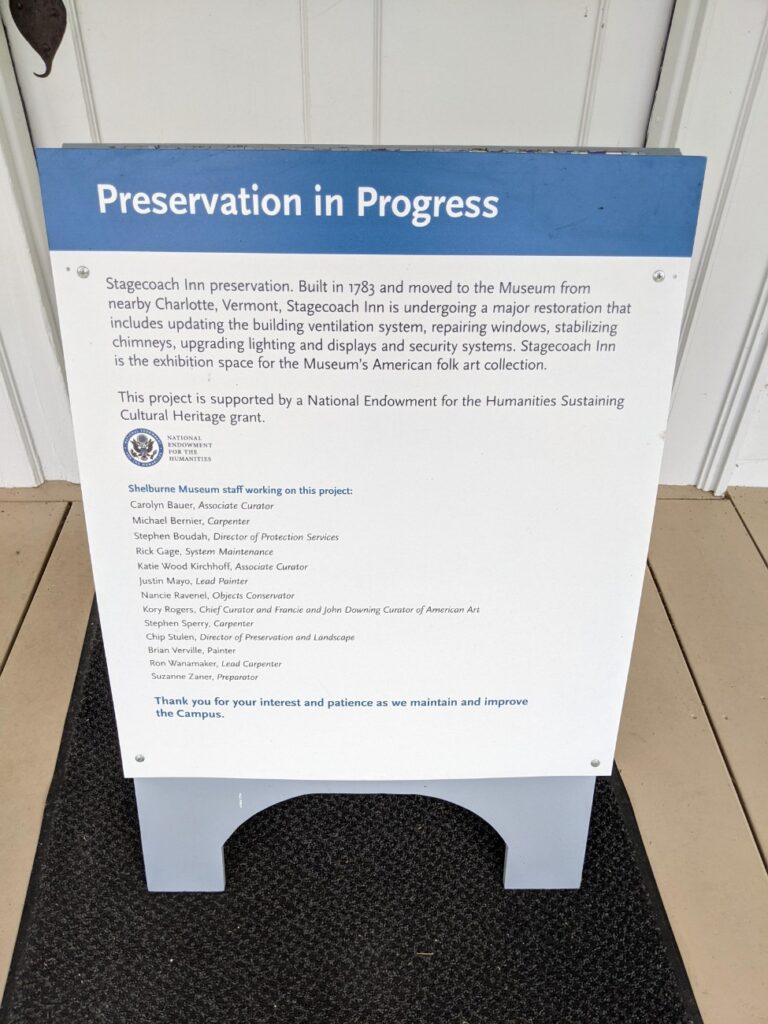
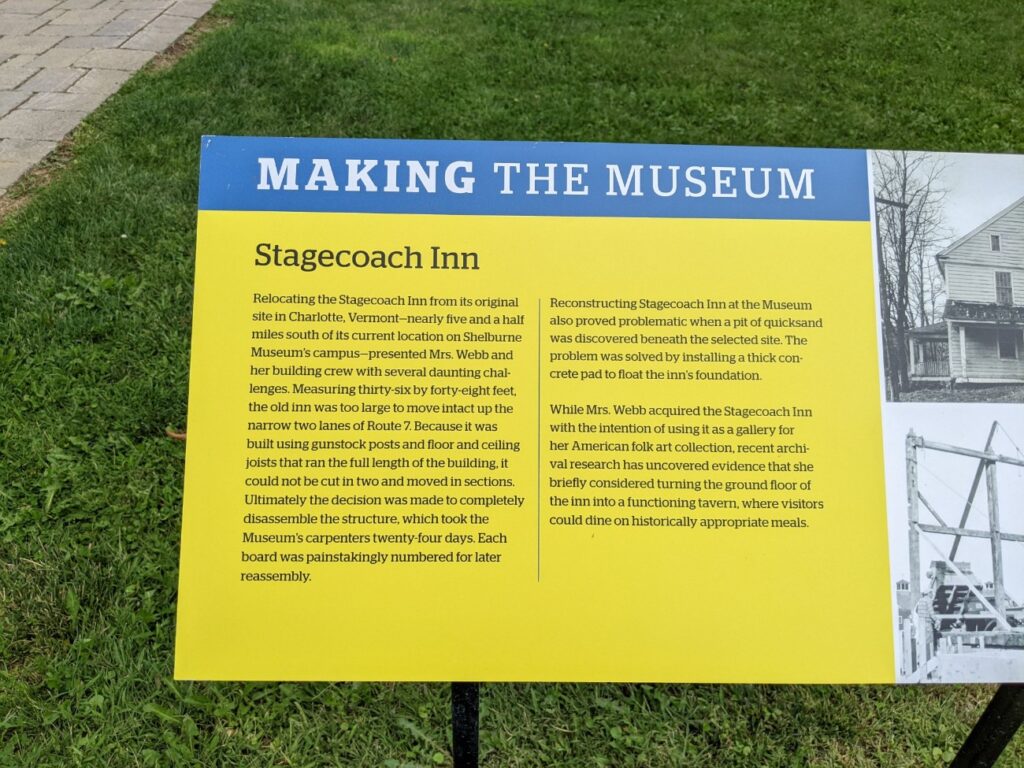
Covered Bridge
I’ll tell y’all the truth – Shelburne Museum is so large, and I took so many pictures that my phone totally died by the time I got to the Covered Bridge! So this is your reminder to bring a backup battery or charger – this place has that much to see. I had to come back a second day just to take pictures! Luckily, that is included in your ticket price, see more below.
The 1845 two-lane Covered Bridge served as Shelburne Museum’s main entrance until the late ’70s. And it’s another one of those eye-catchers as you drive past to make you curious about what’s inside. This double-wide bridge spanned the Lamoille River in Cambridge, Vermont for 100 years. Plus, it includes a side path just for pedestrians, though now you can walk all over. I think covered bridges are really cool and this is definitely the largest and longest one I’ve ever seen.
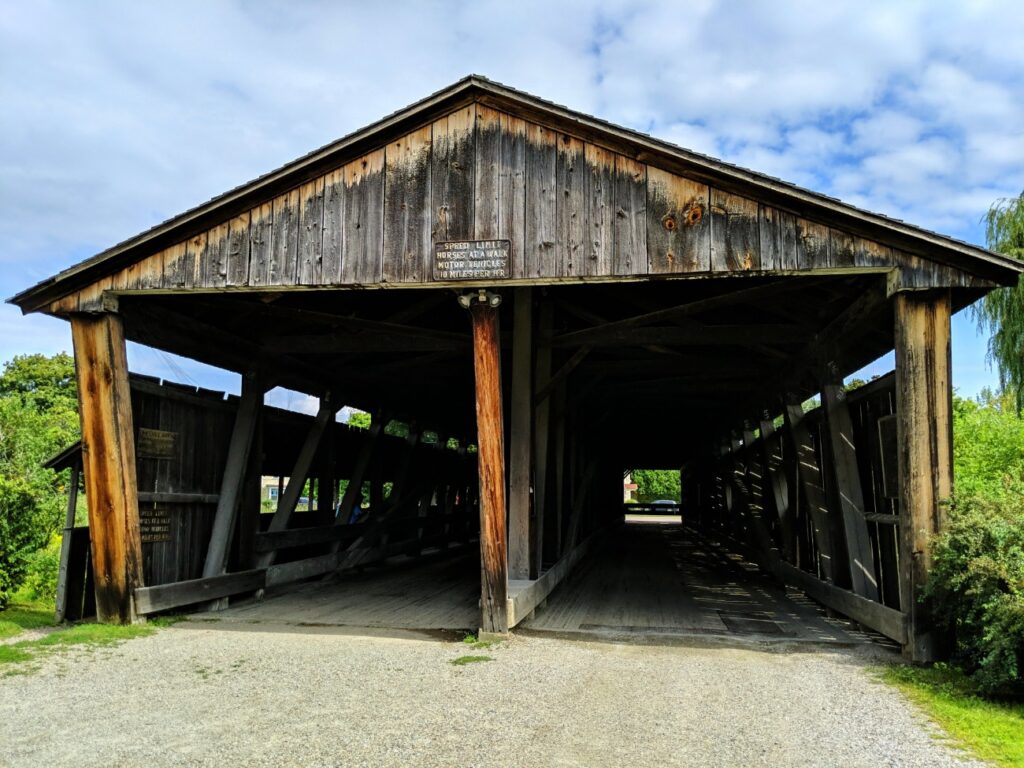
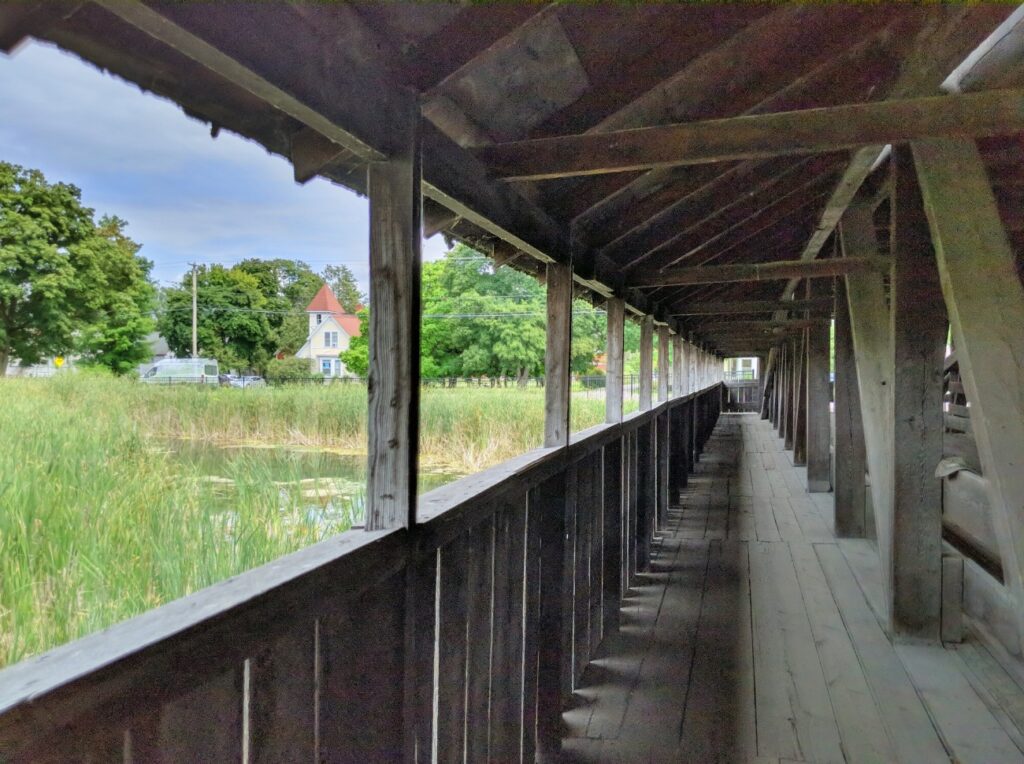
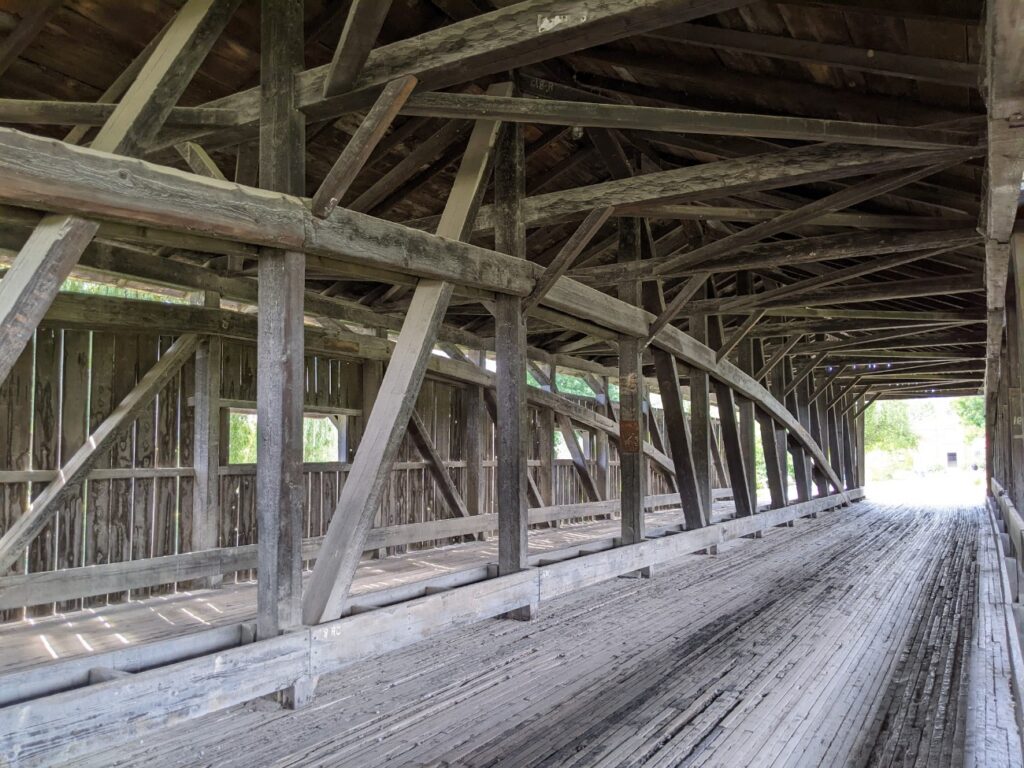
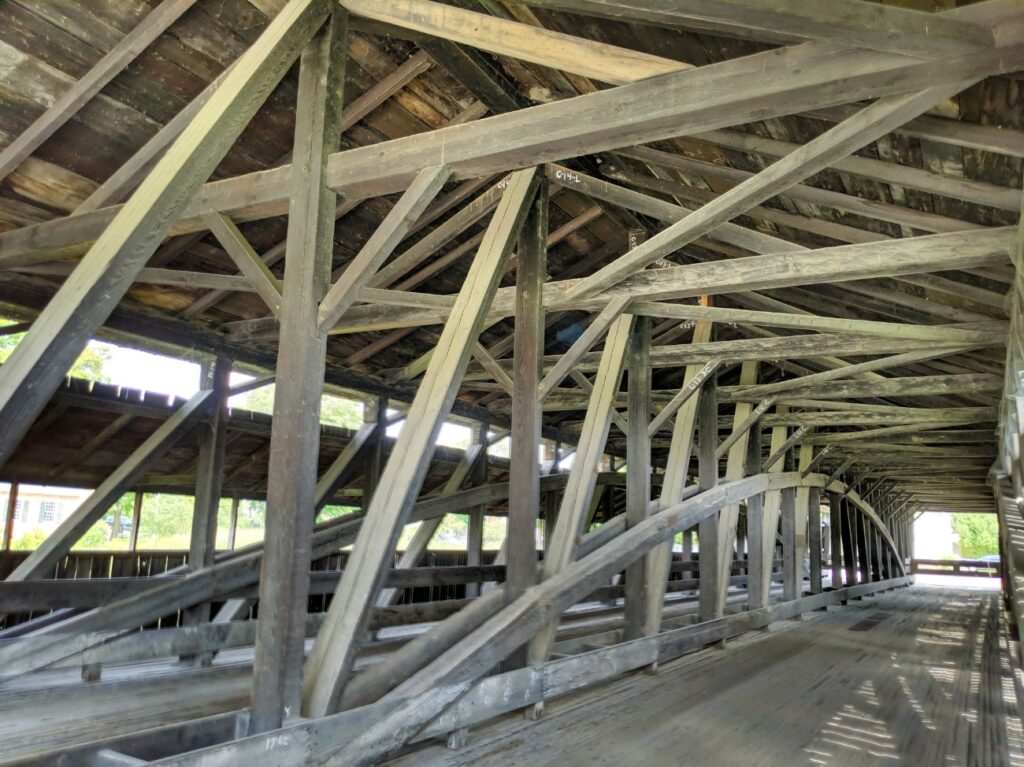
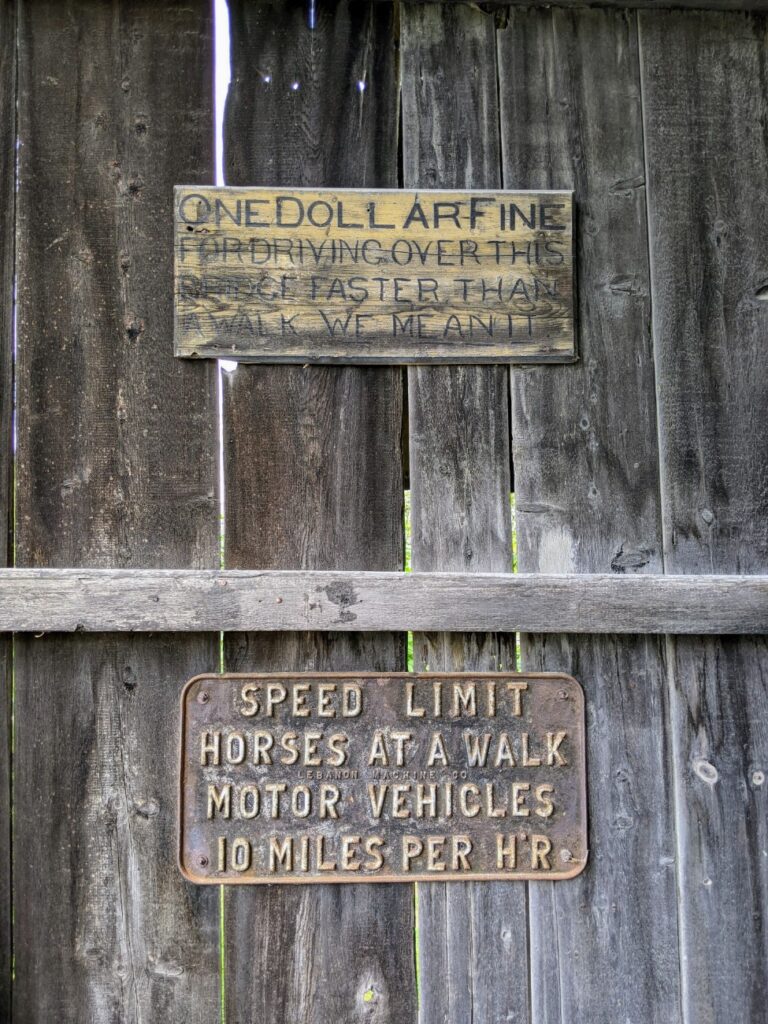
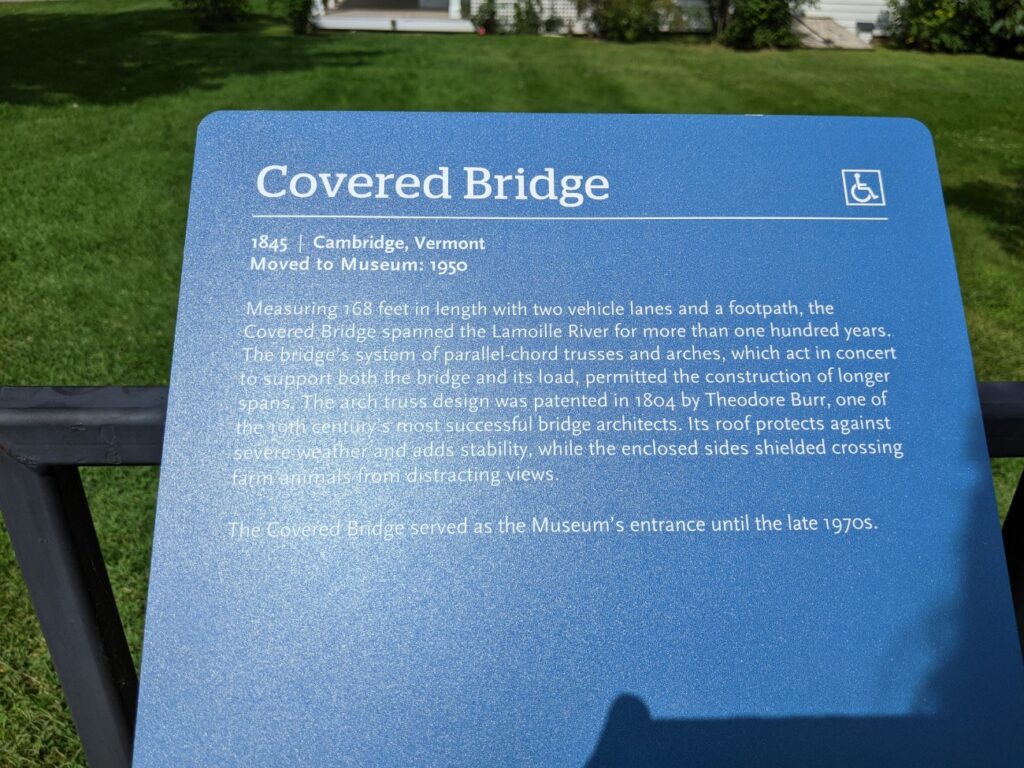
Dorset House
The Dorset House has a similar collection to what I imagine the folk art in the Stagecoach Inn is like, i.e. Mrs. Webb’s earliest stuff. And indeed, these two galleries flank what used to be the main entrance. The house itself comes from East Dorset, VT, ca. 1832. It’s sweet and white with several small rooms inside and a short staircase to a second floor.
Inside, there is a huge collection of early-American bird decoys. And at first blush, you think, “why??” but looking at them, they really are beautiful! I have a hard time believing some of them weren’t carved for decorative purposes rather than for sport hunting. And there are so many! Rooms and rooms, and all kinds of birds from giant lobster-cage Canada geese to tiny, tiny replicas.
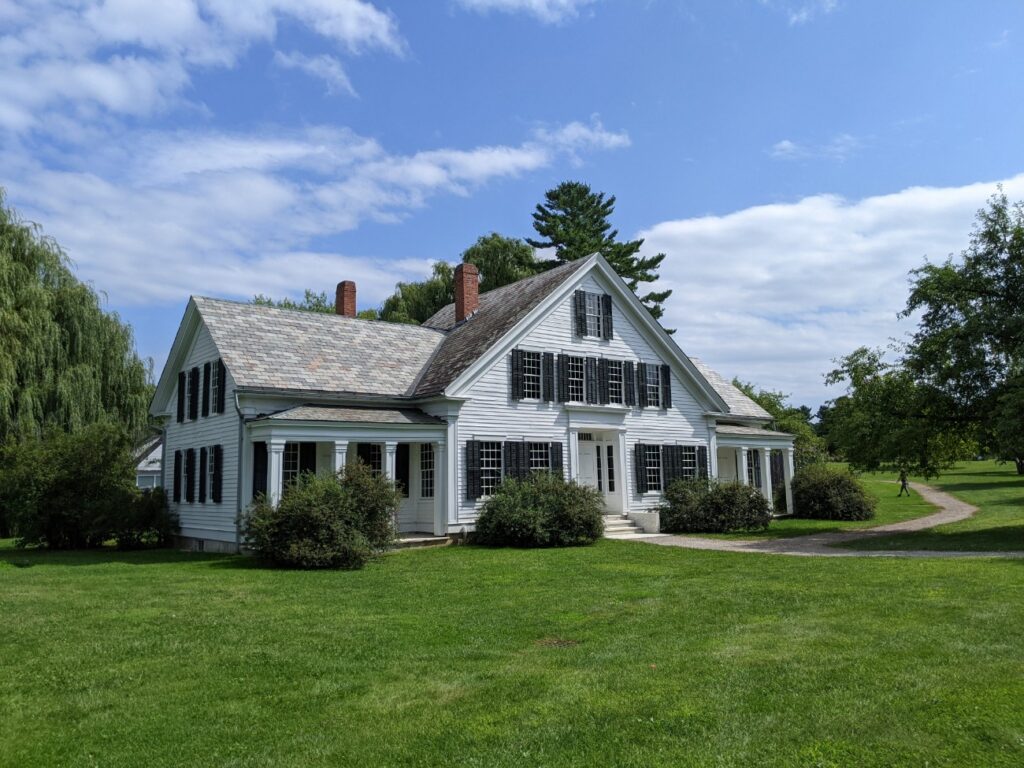
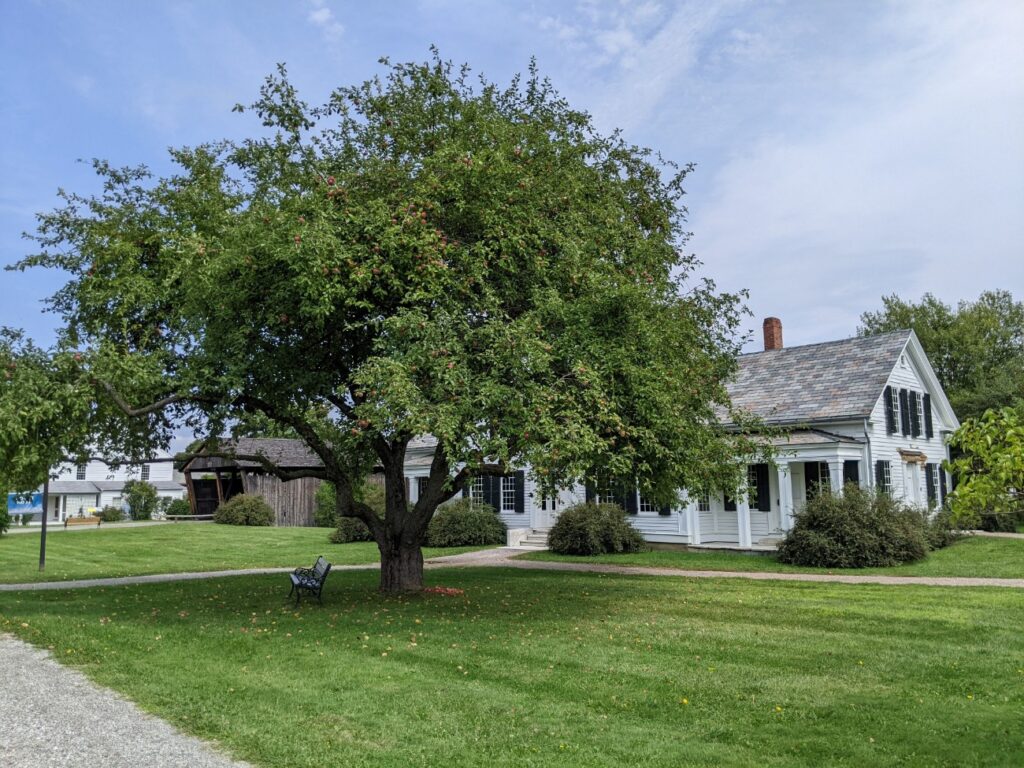

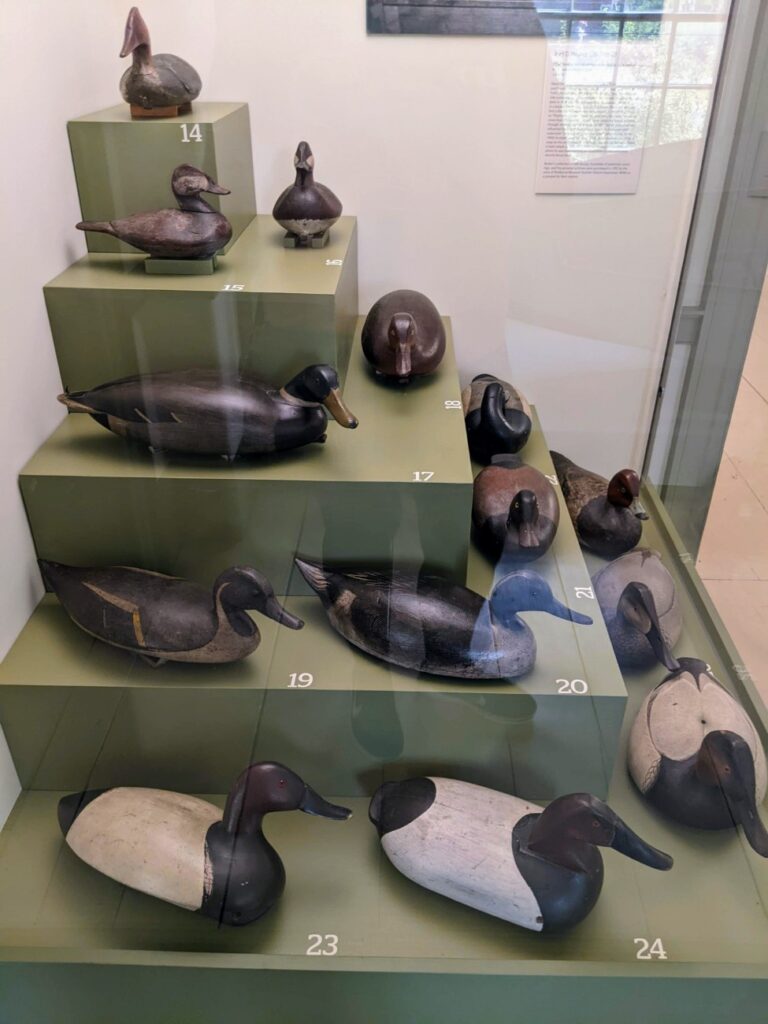
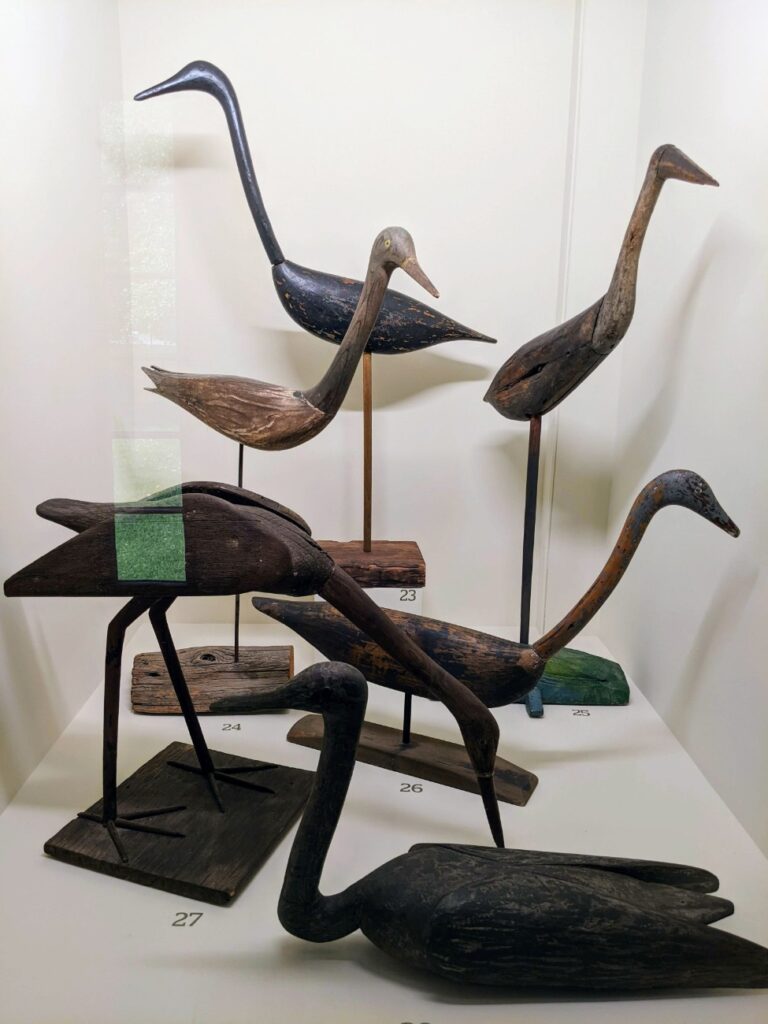
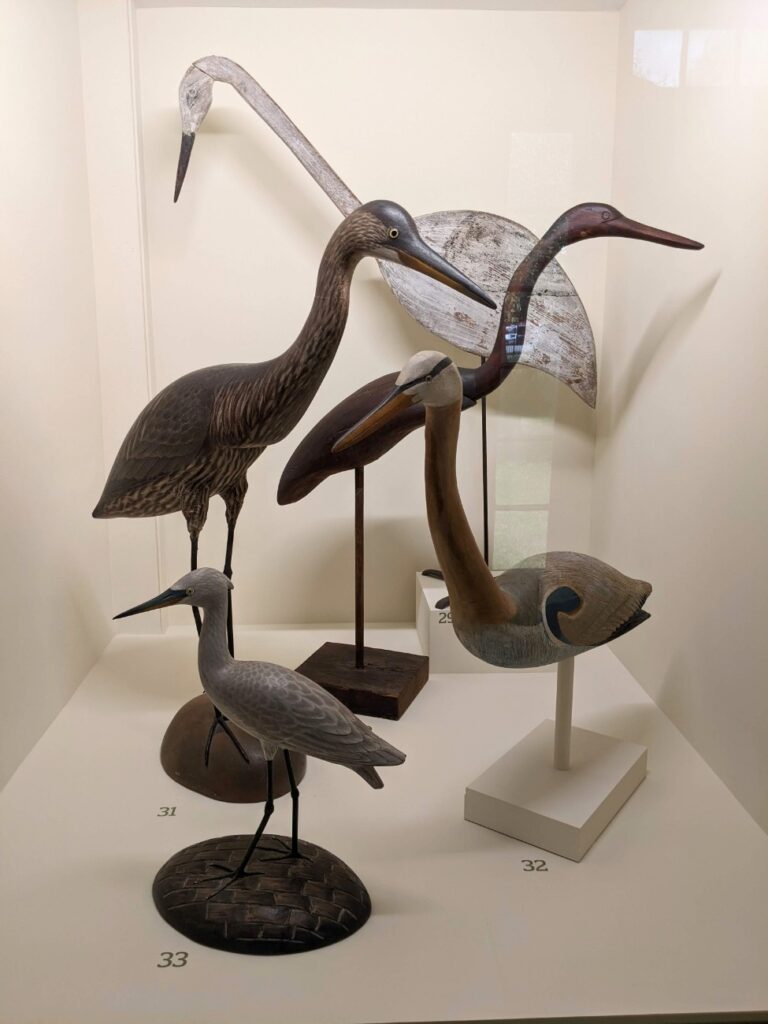
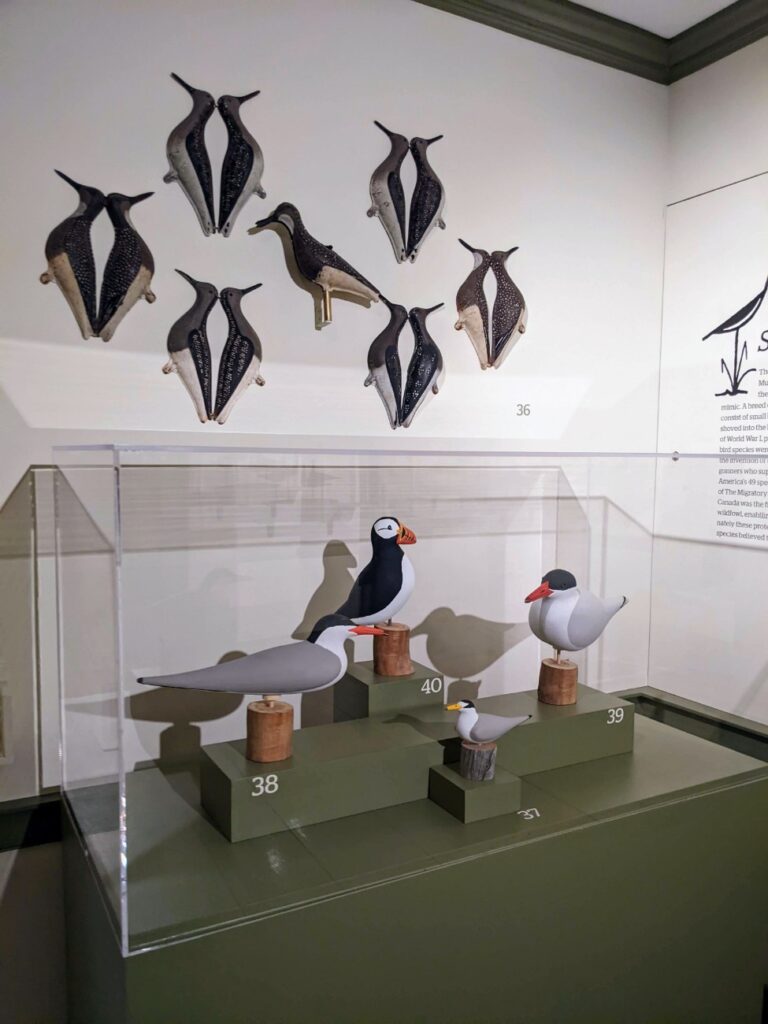
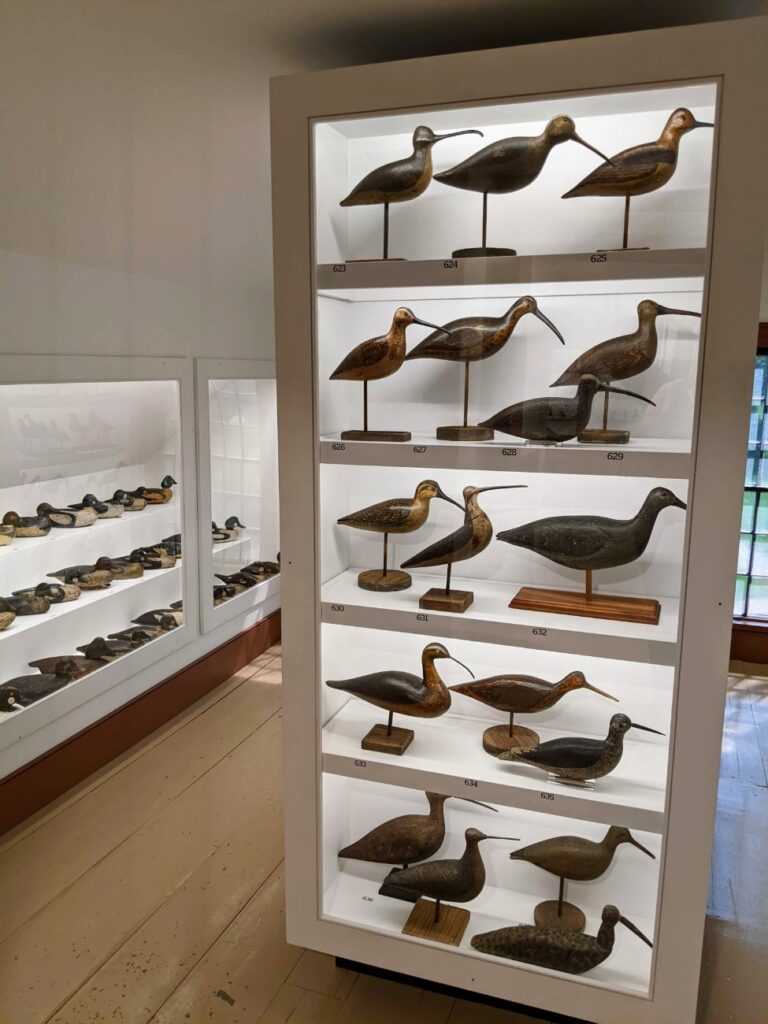
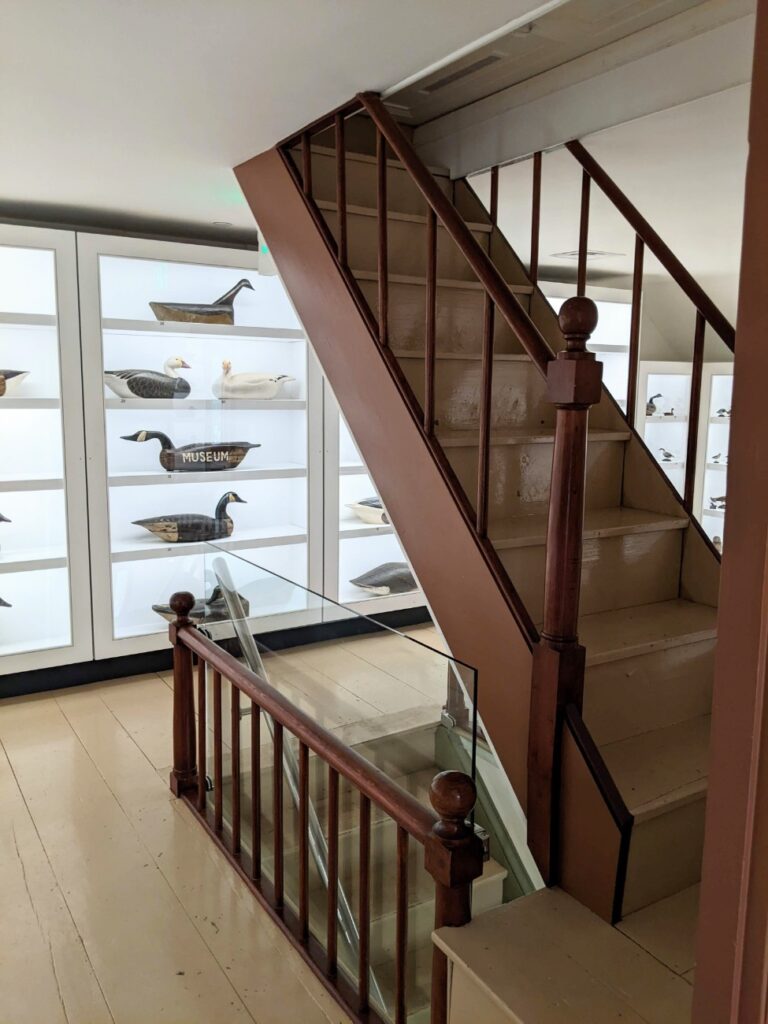
Settlers’ Homestead
So far, we’ve taken a more-or-less clockwise route around Shelburne Museum. (See the map here.) If the entrance is at 6:00, we’ve made it almost back around to 3:00, with the Horseshoe Barn in the top left corner, the Variety Unit in the top right corner, and now we’re making our way back up the slope along the right-hand side of the clock.
Around the corner from the Dorset House, you find the Settlers’ Cabin and Barn, and Sawmill, making a little slice of settlement-era Vermont. There’s a small, neat barn, a small house with a loft and garden patch. The large sawmill features a 1787 up-and-down saw and “related machinery.”
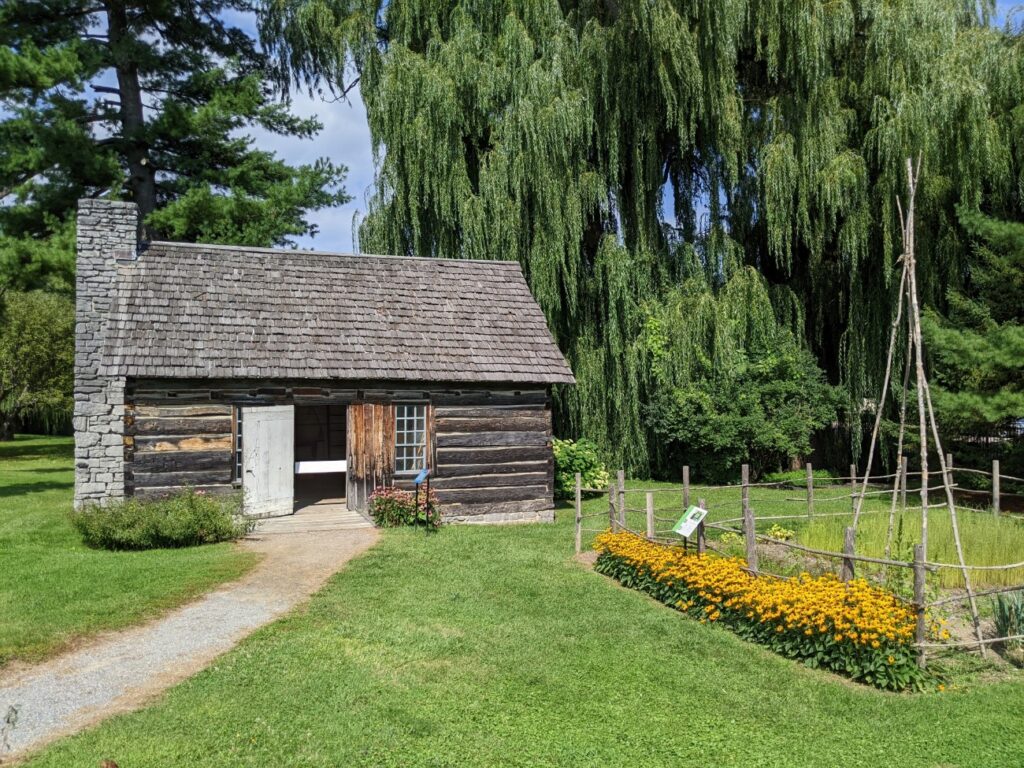
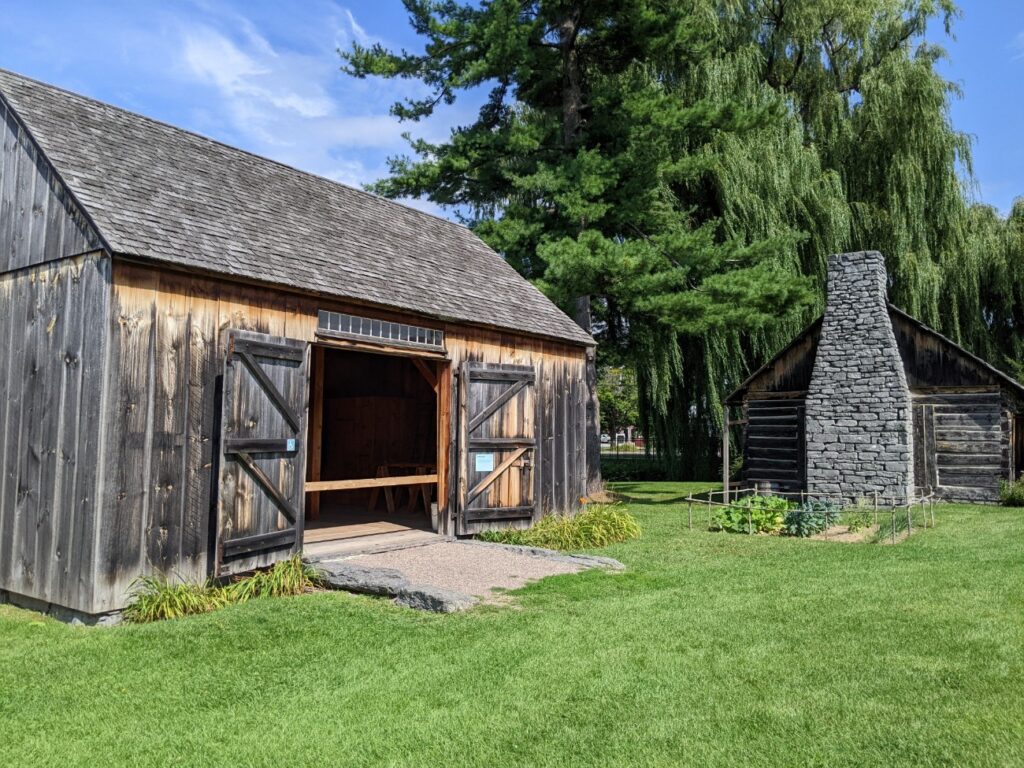
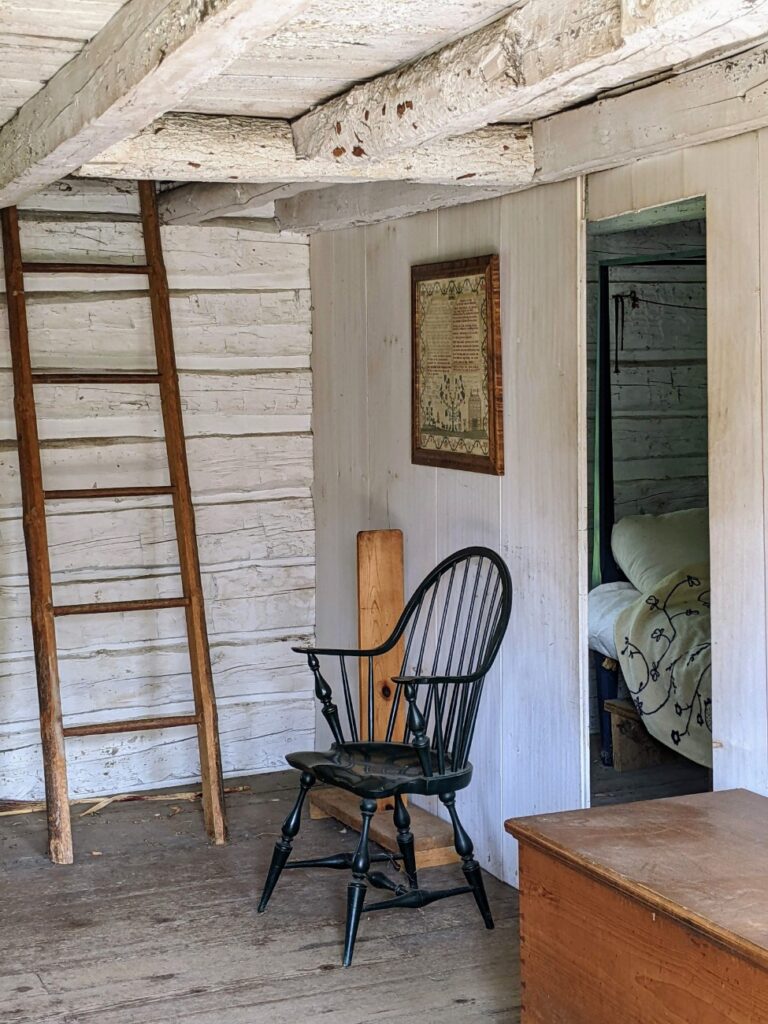
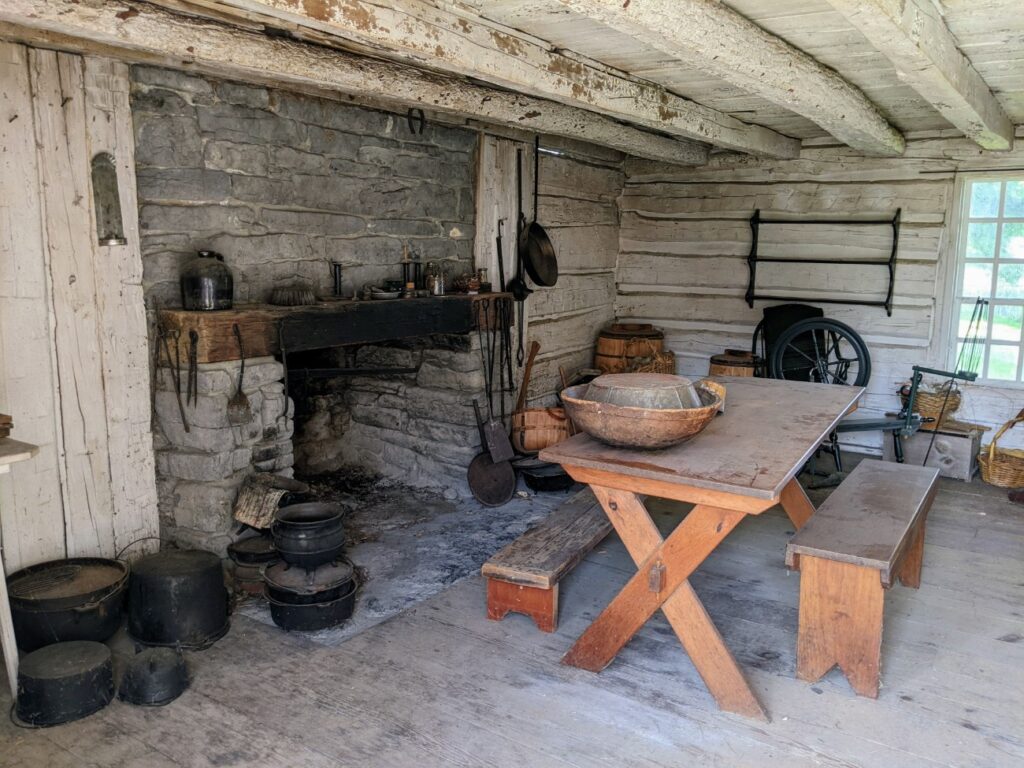
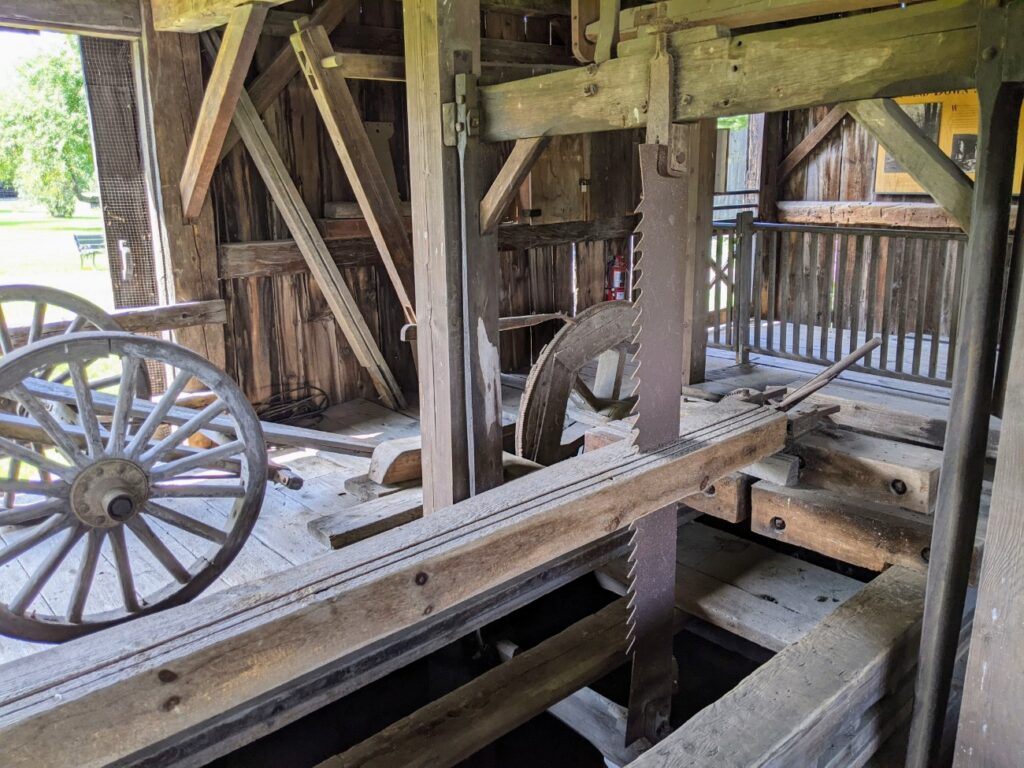
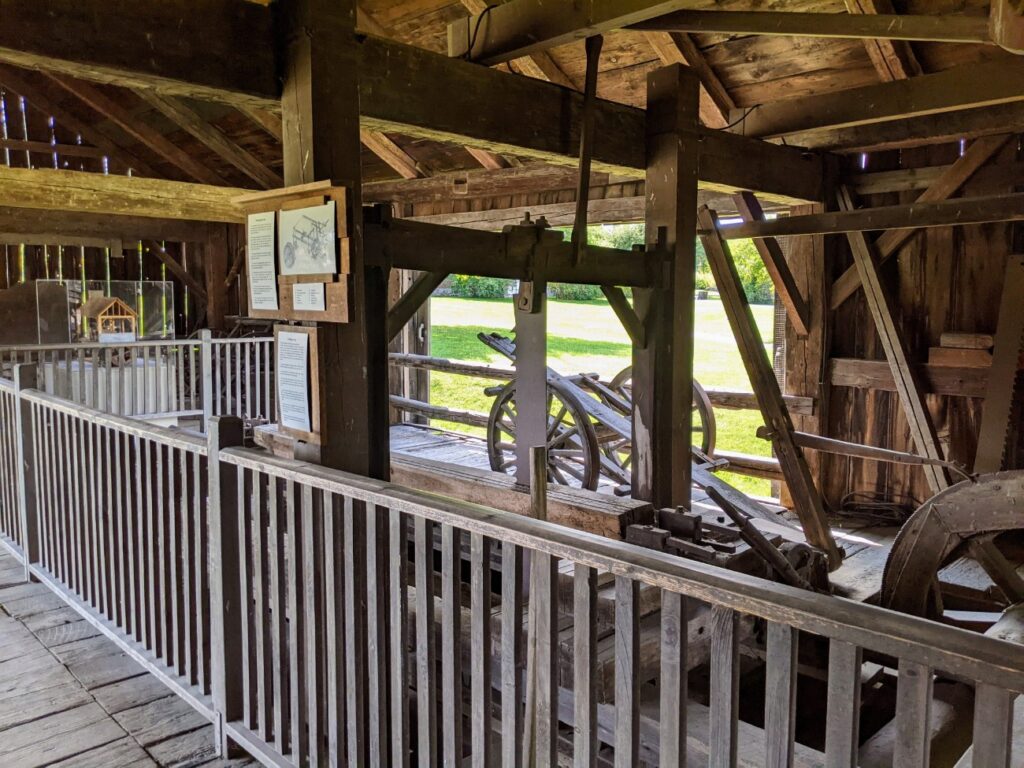
Webb Gallery
The Webb Gallery building was built on-site in 1960 to house a collection of fine American art paintings. There is kind of a vague federal style to it, and it has a nice foyer with two spiral staircases off each side.
Inside is an array of landscapes, portraits, still life, and more. You can take a 10-minute tour of the highlights of the collection at 11:00 and 1:30 daily from mid-May to mid-October.
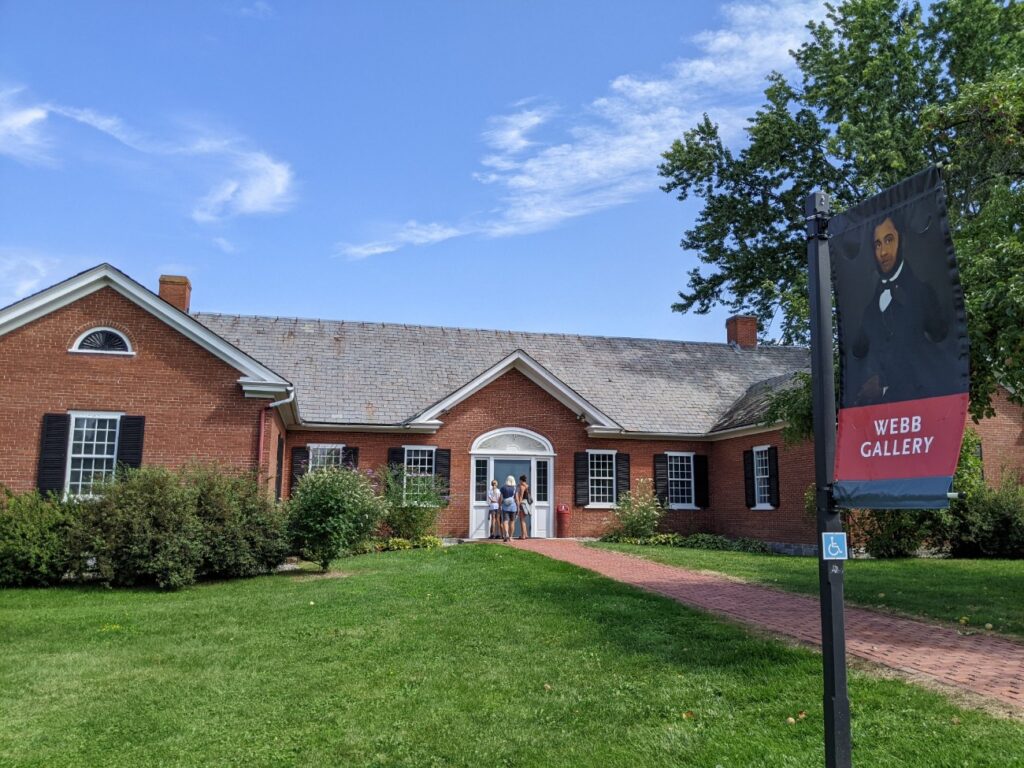
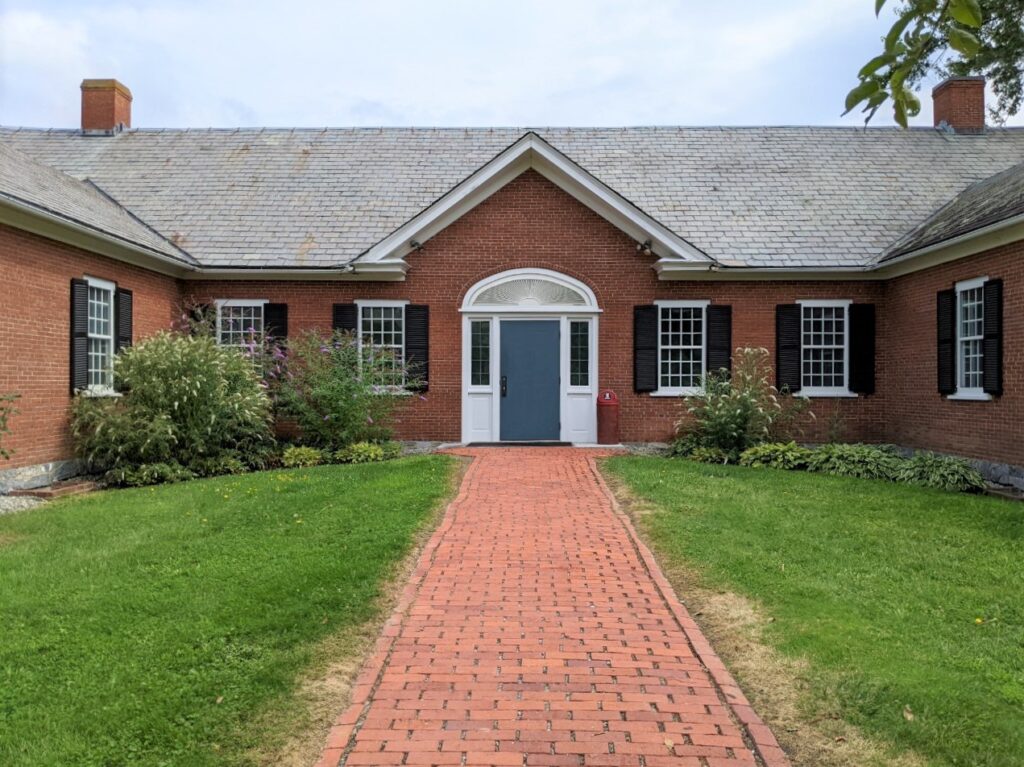
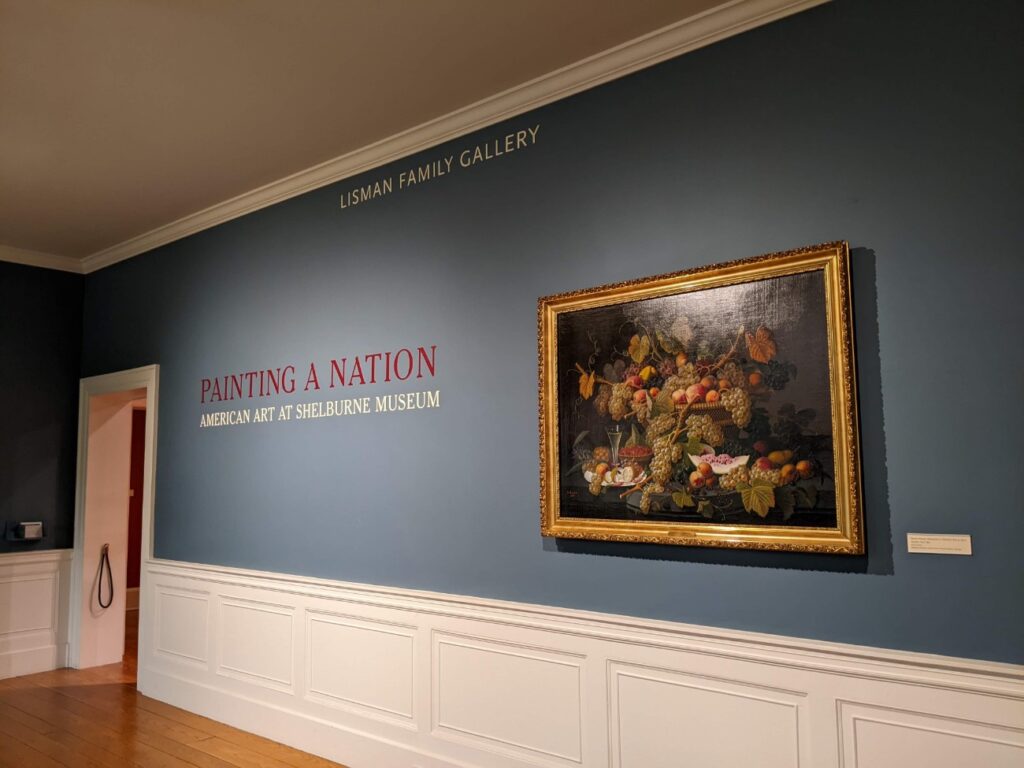
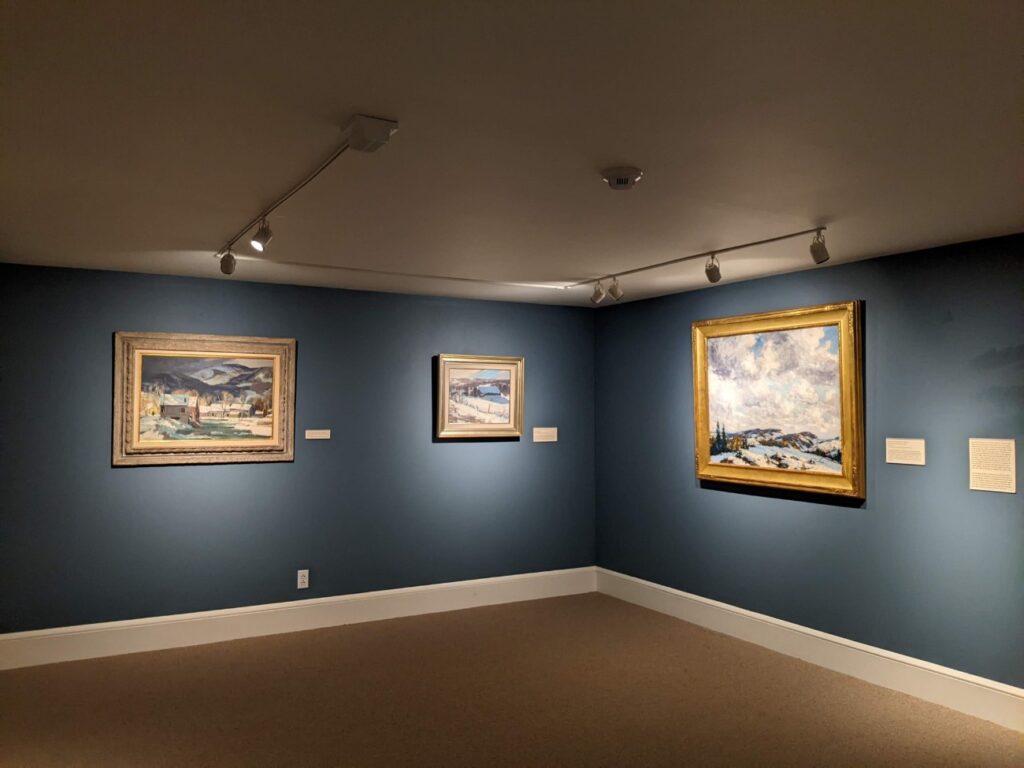
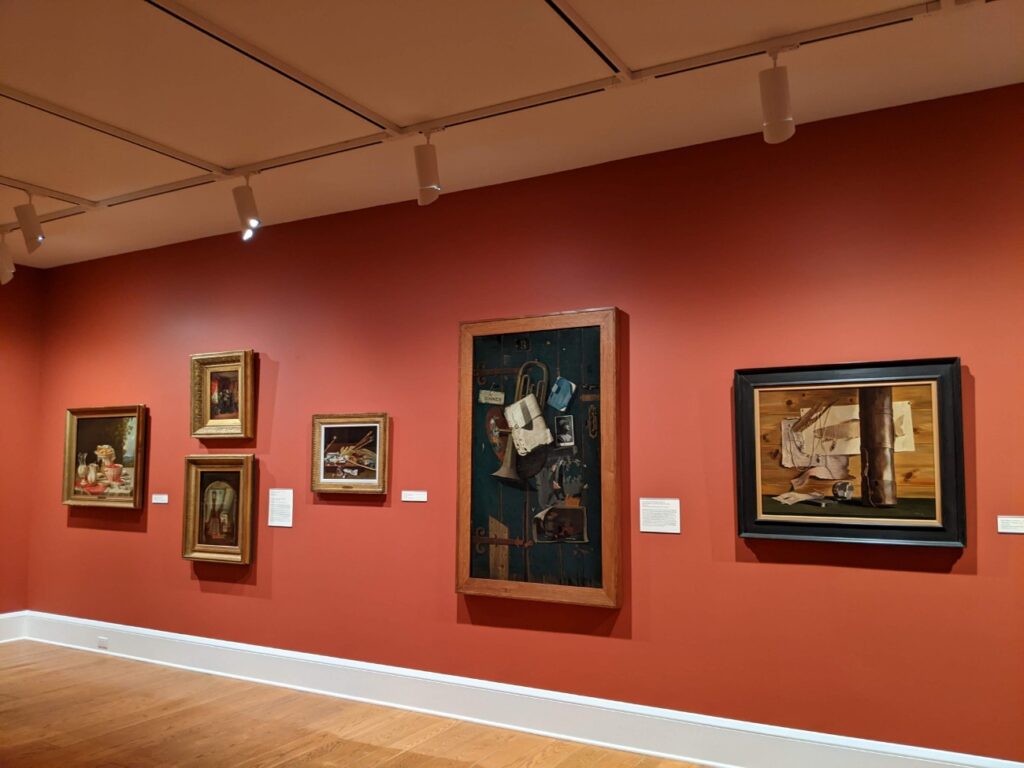
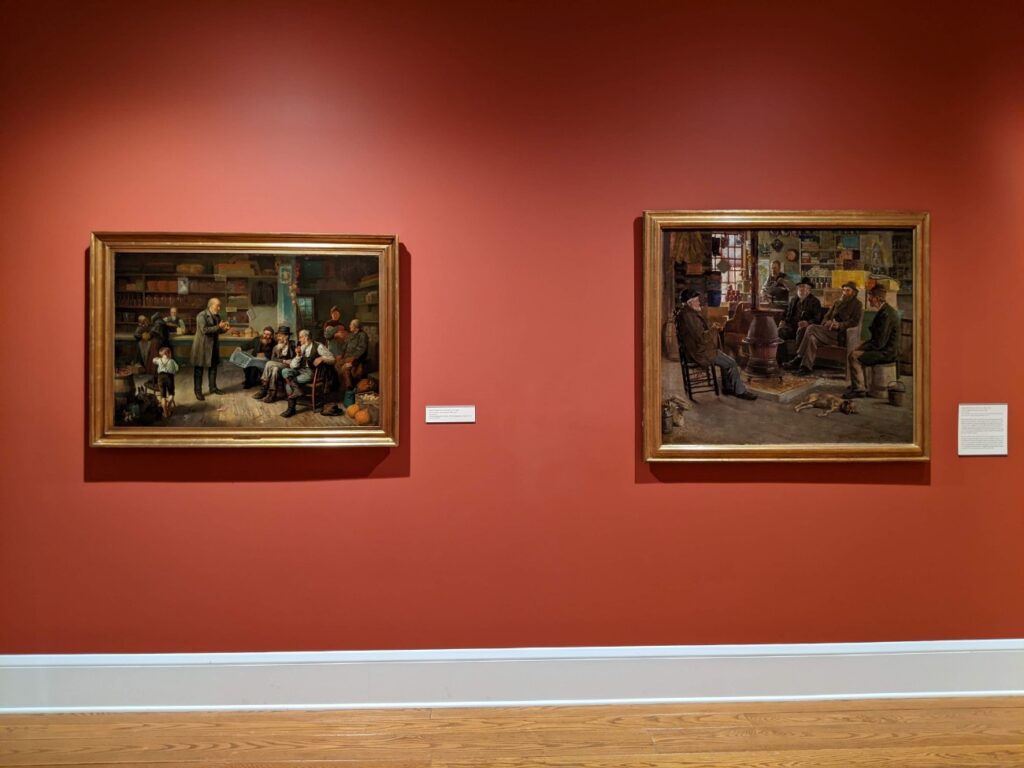
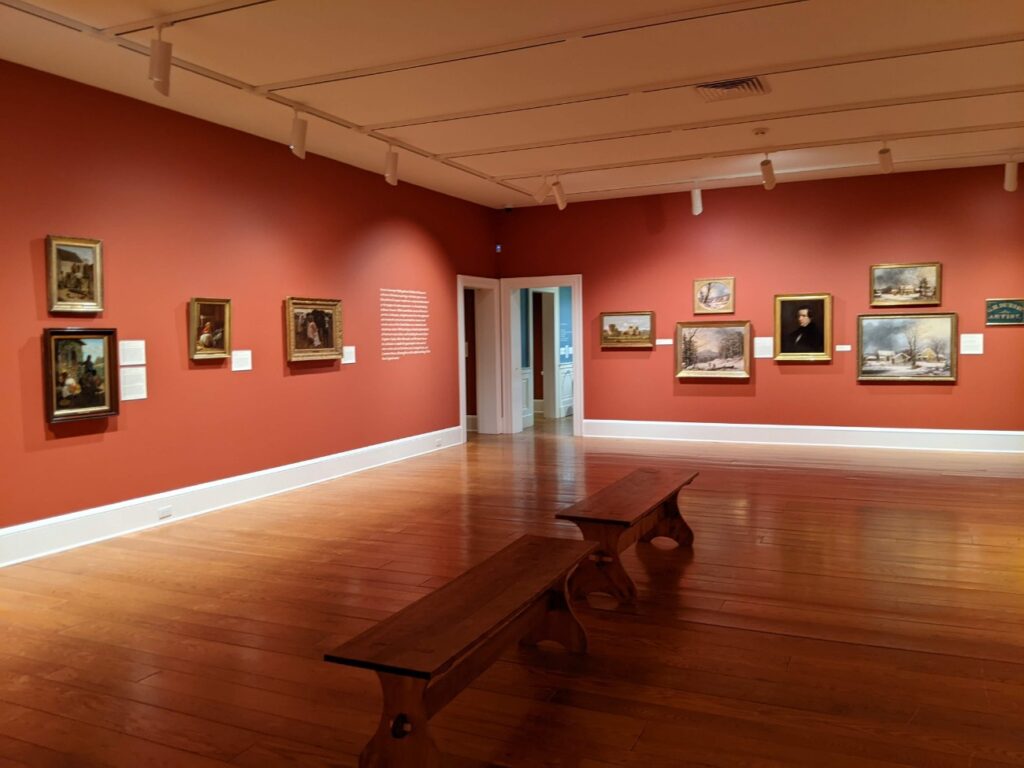
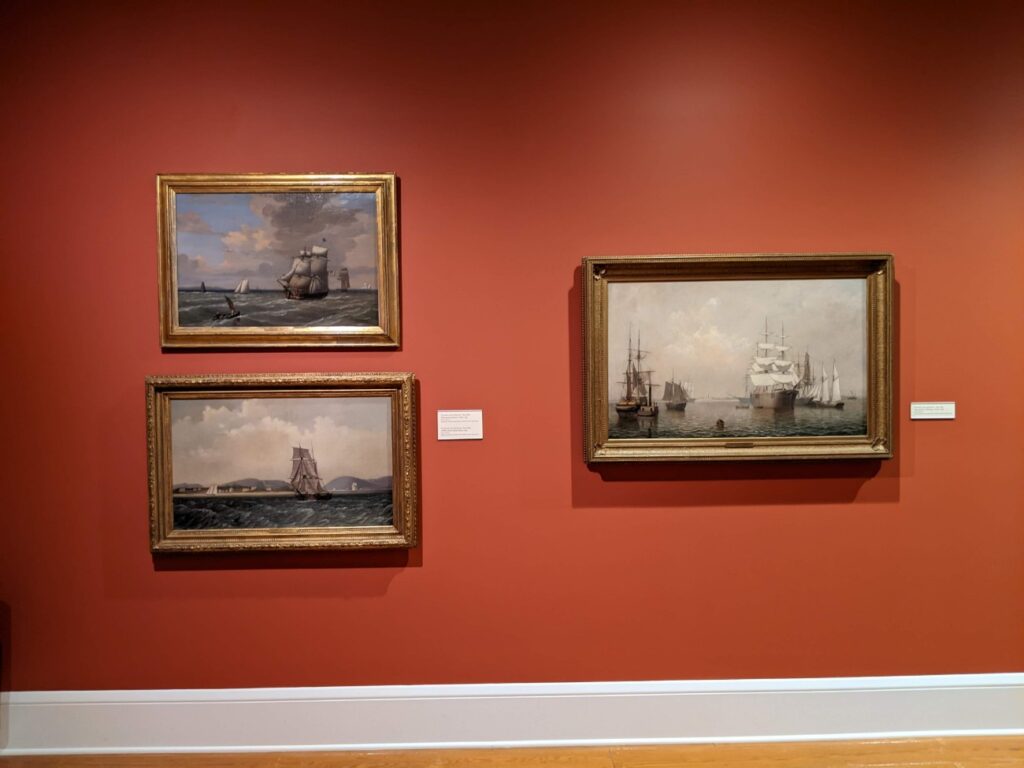
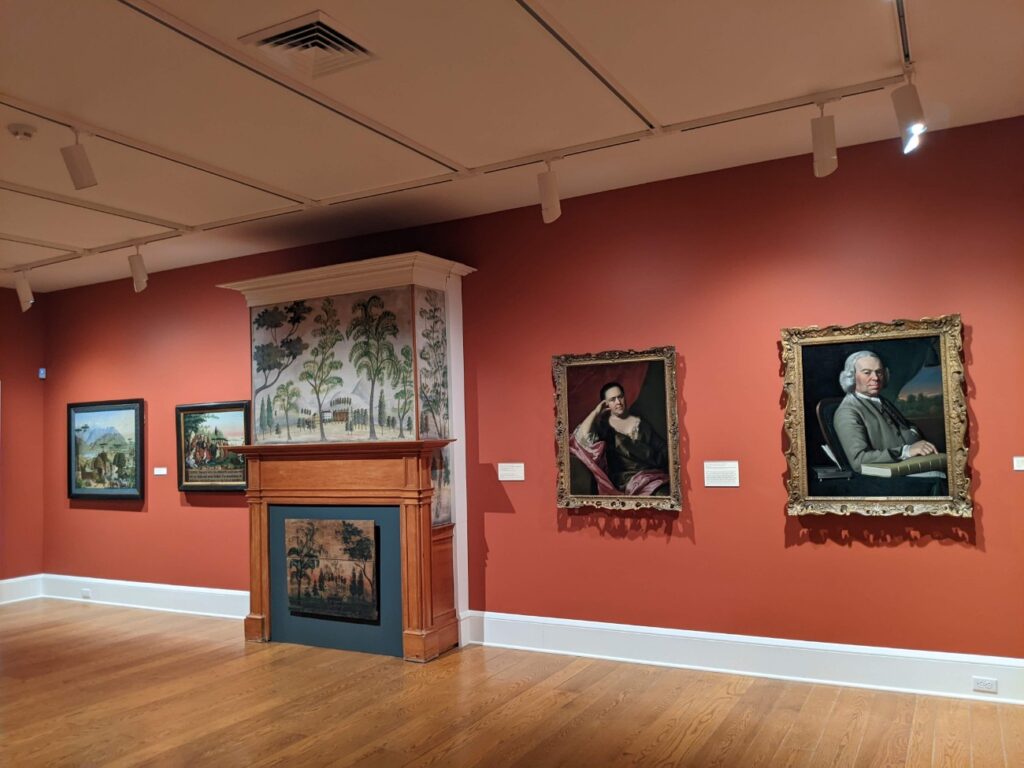
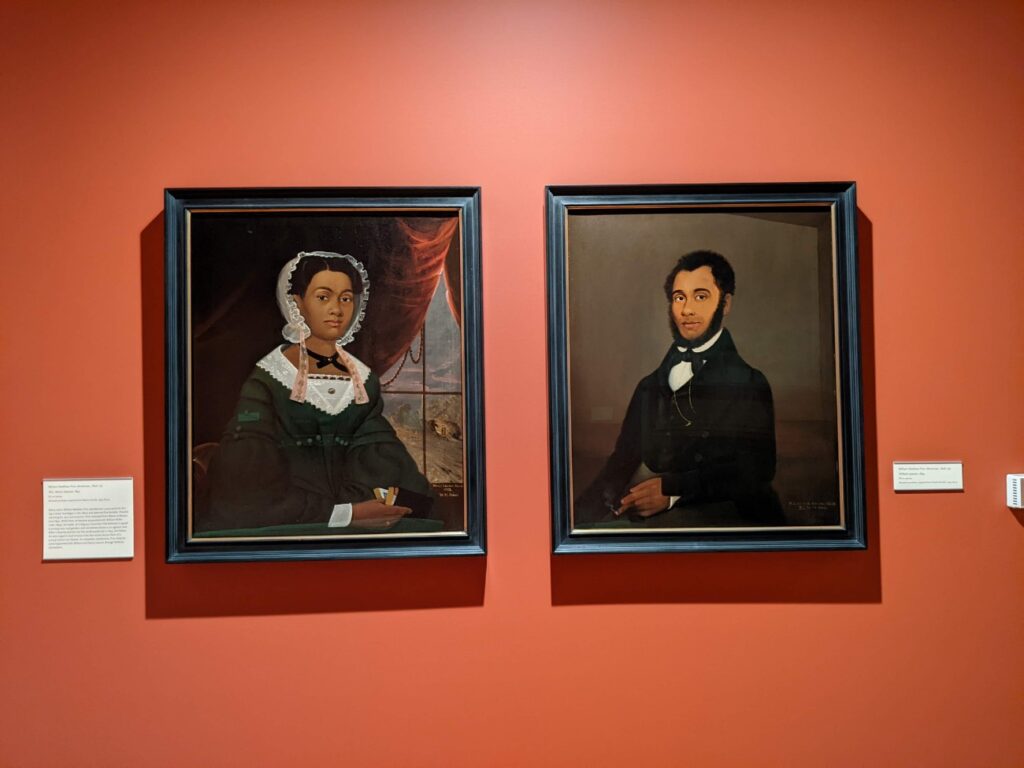
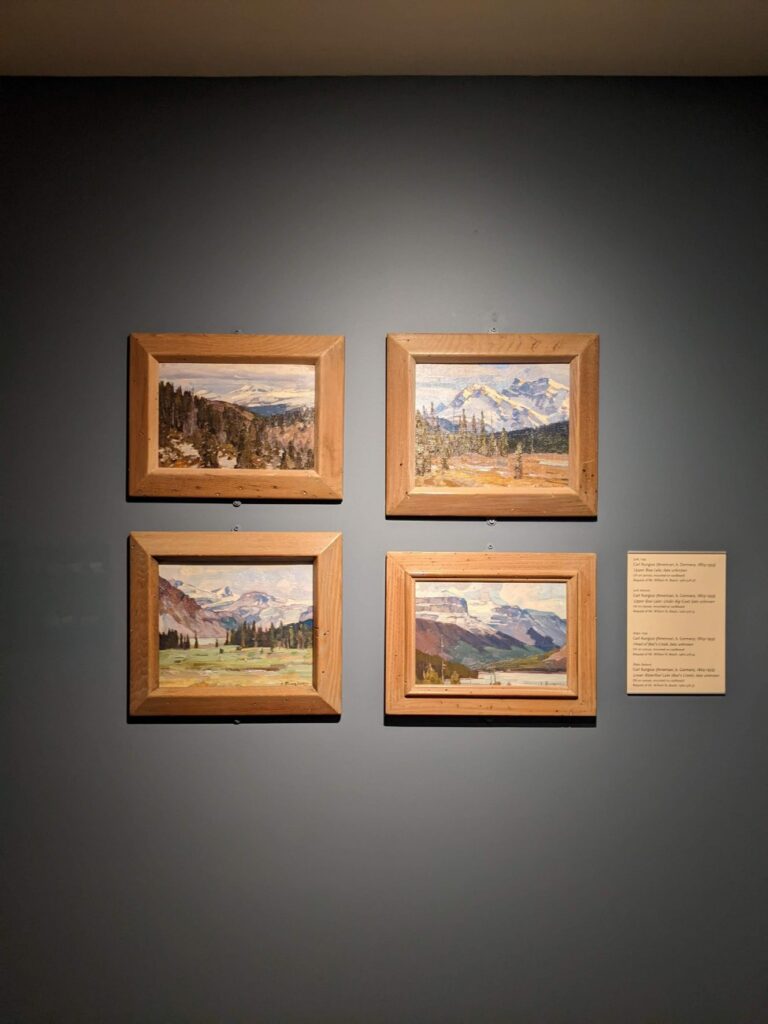
Memorial Building
At the heart of the Shelburne Museum is the Electra Havemeyer Webb Memorial Building. On a slope overlooking most of the rest of the collection stands a large Greek Revival building that, for all the world, looks like a house. There’s a dining room on one side, a study on the other, and several upstairs bedrooms. But the Webbs never lived here. It was built on a home that Electra Webb admired, and so her children used that design to hold rooms directly lifted from her New York City Park Avenue apartment.
The Memorial Building arguably holds the finest collection in the whole museum, with several French Impressionist and European paintings, plus the lush furnishings of her New York apartment. It certainly is a walk around her life and influences, which is undoubtedly interesting. Three floors are tied together with a central spiral staircase (though I imagine there is an elevator somewhere.) The bottom floor holds a gallery of American lost-wax sculpture.
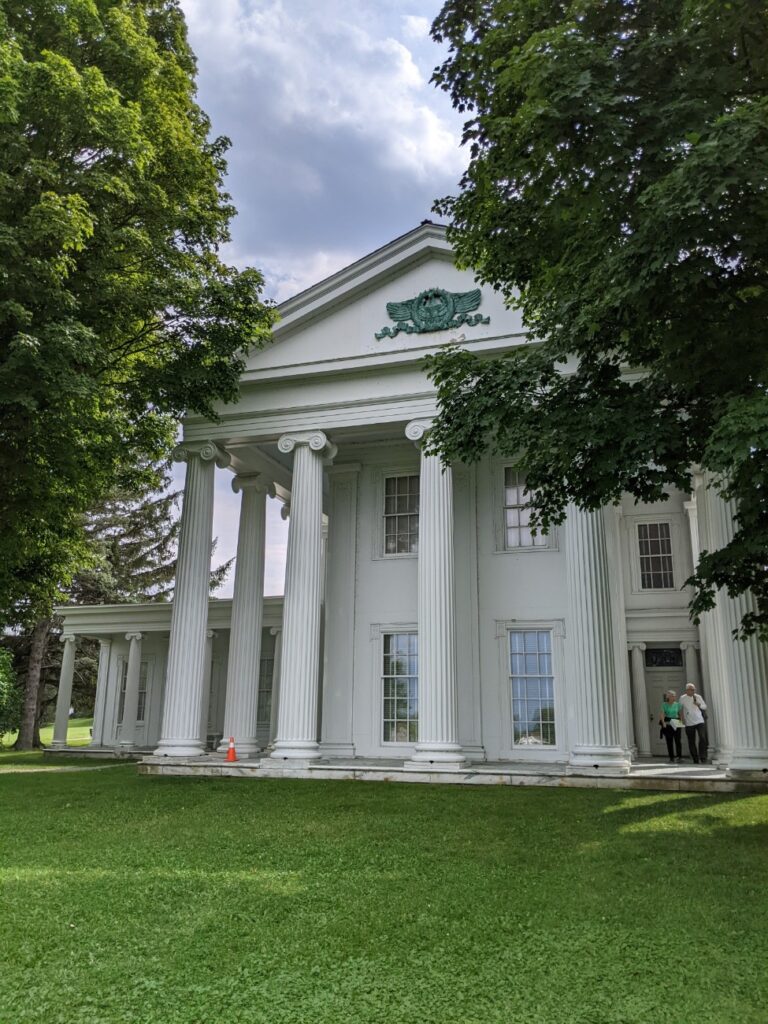
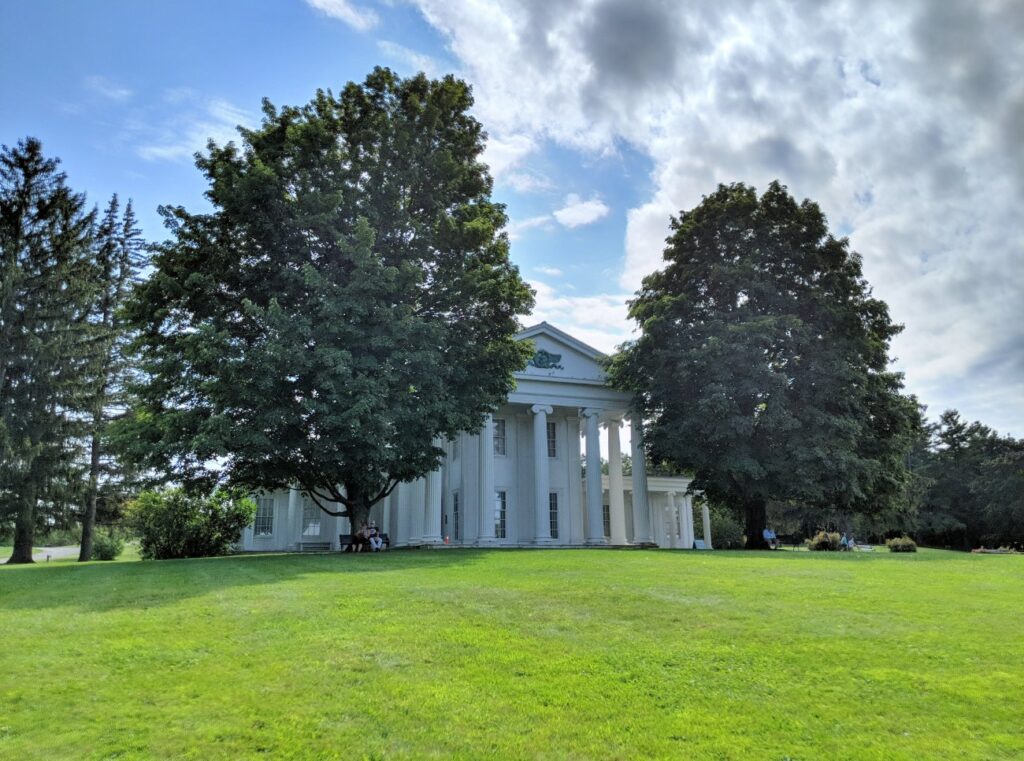
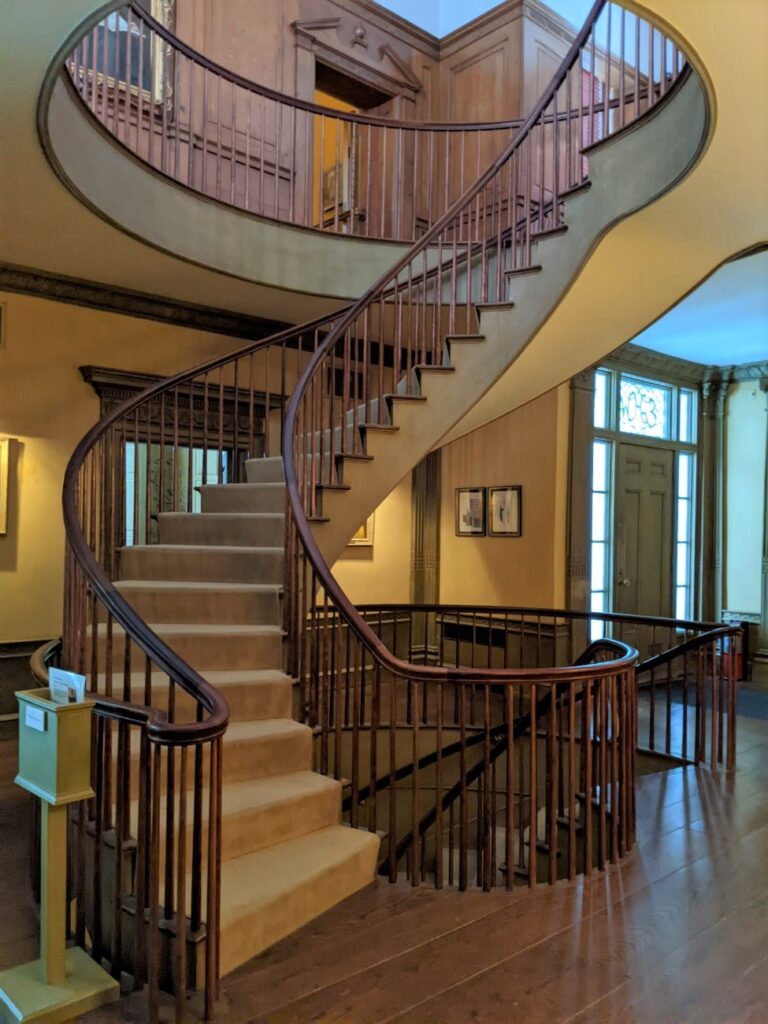
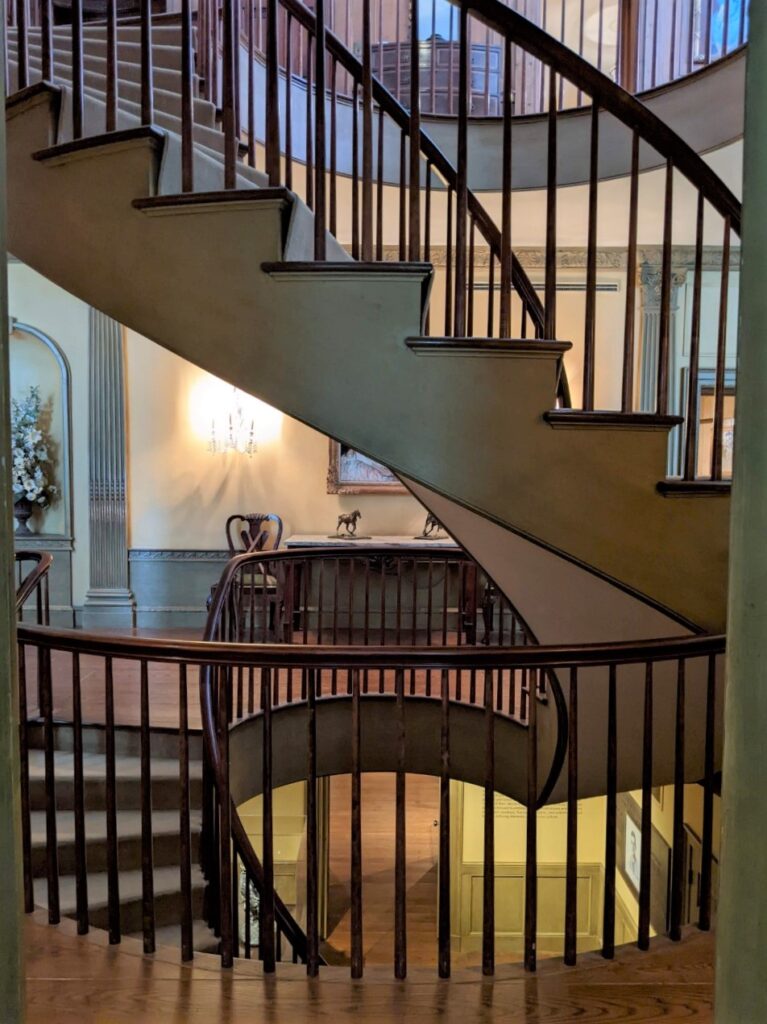
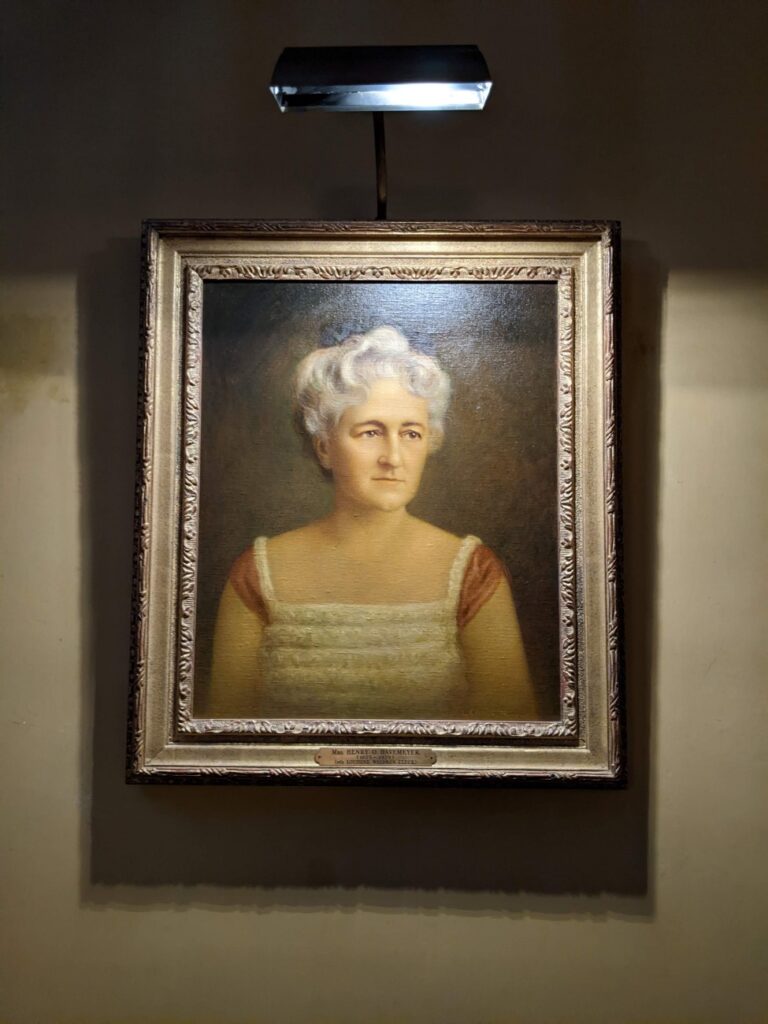
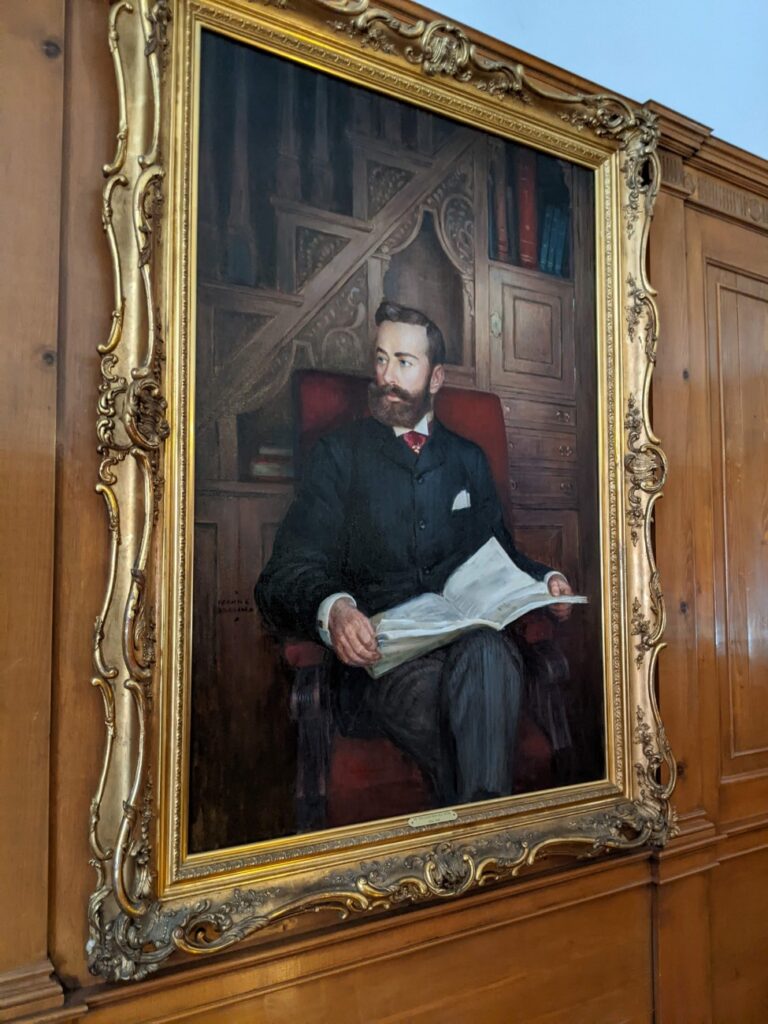
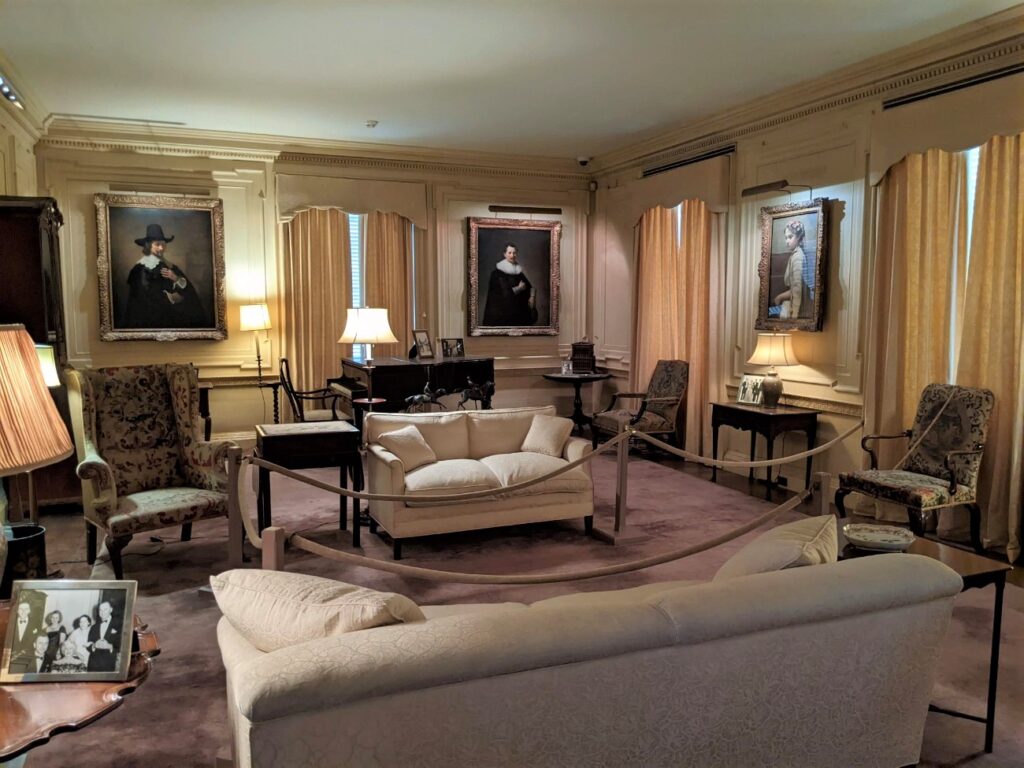
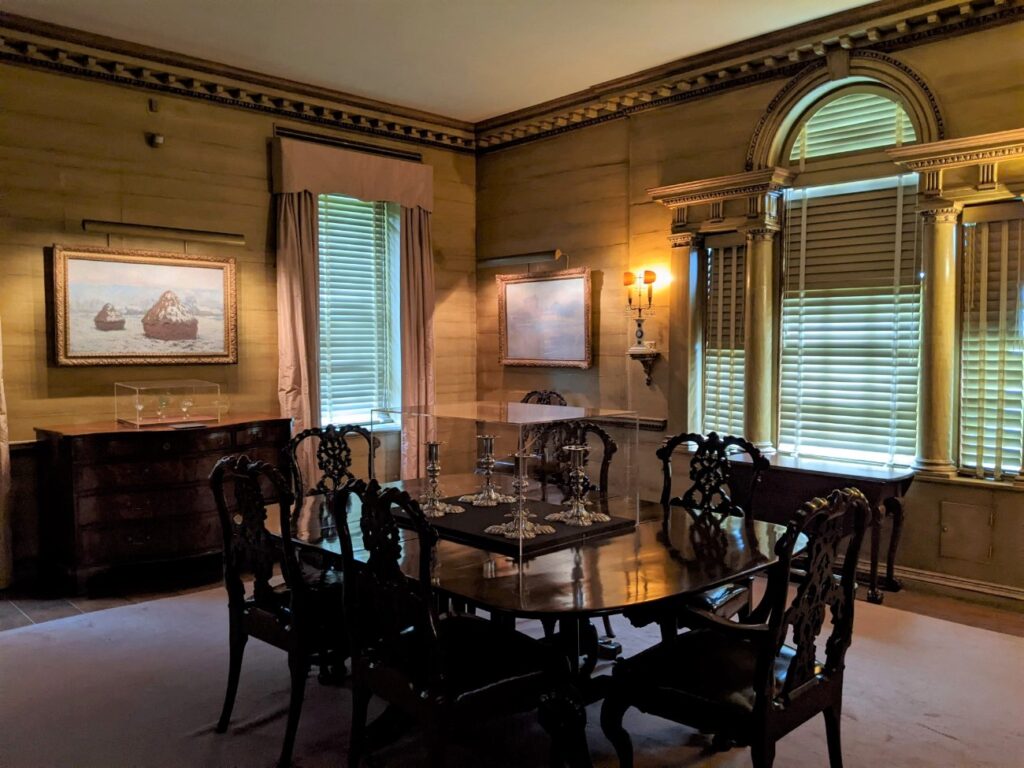
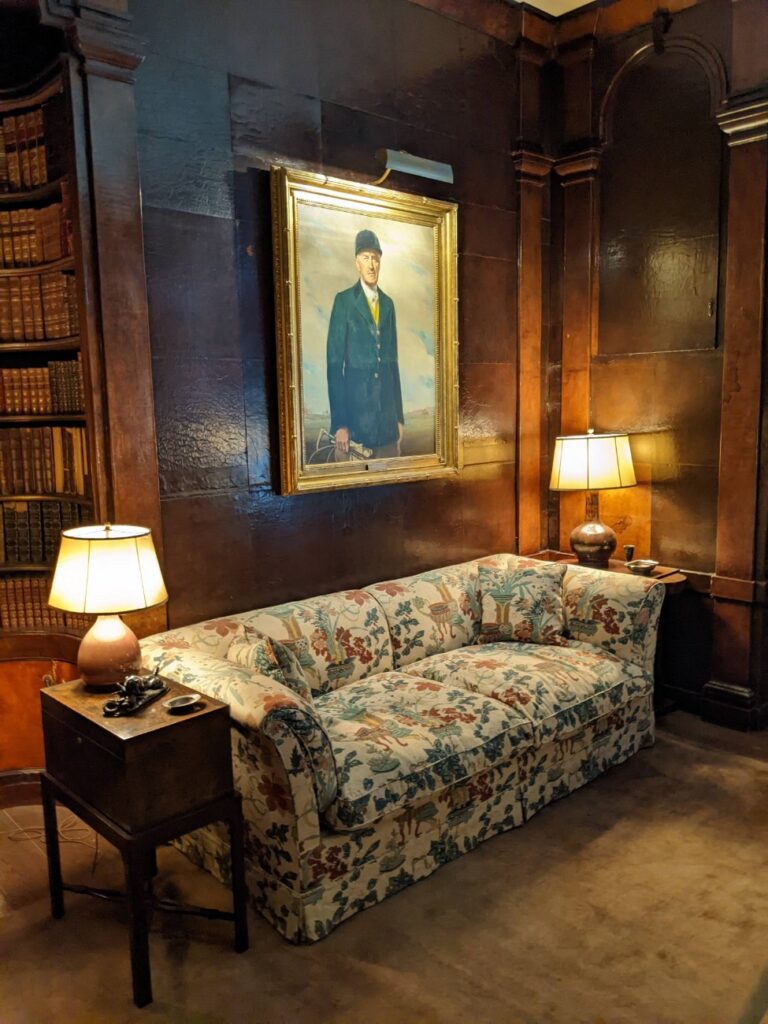
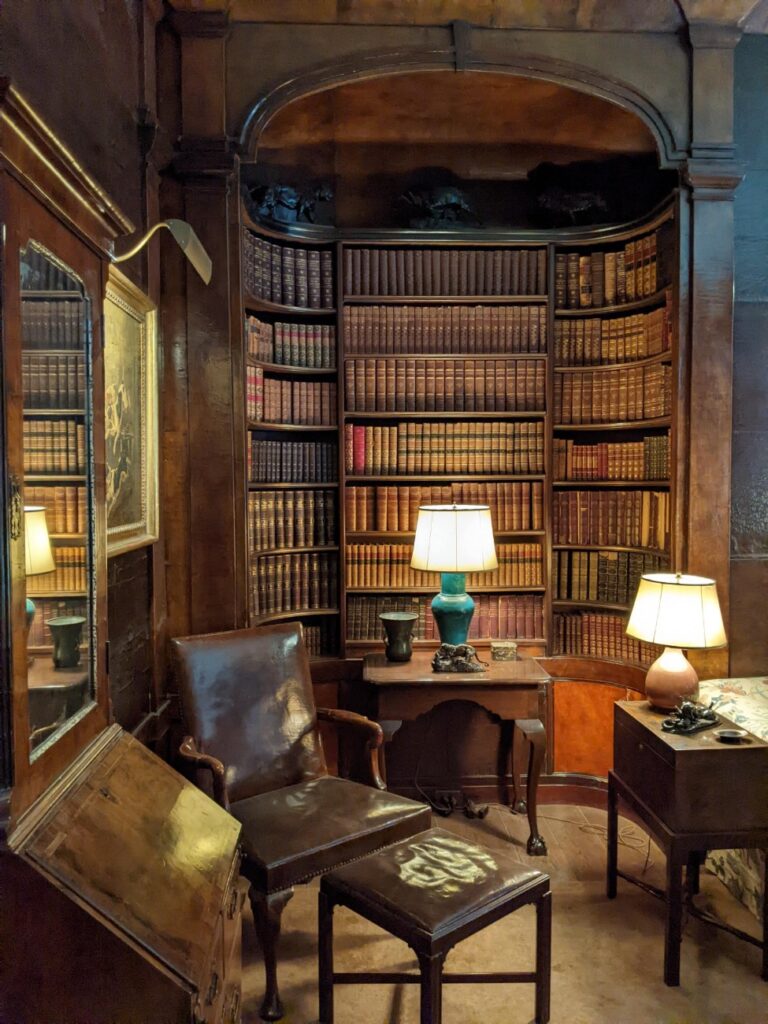
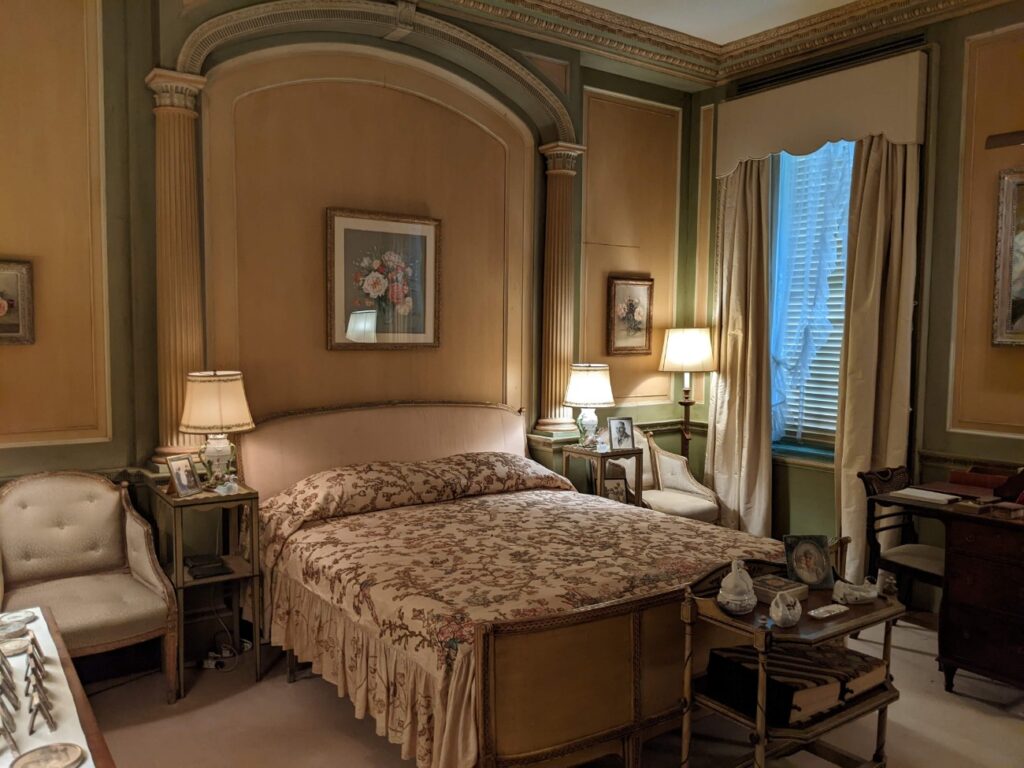
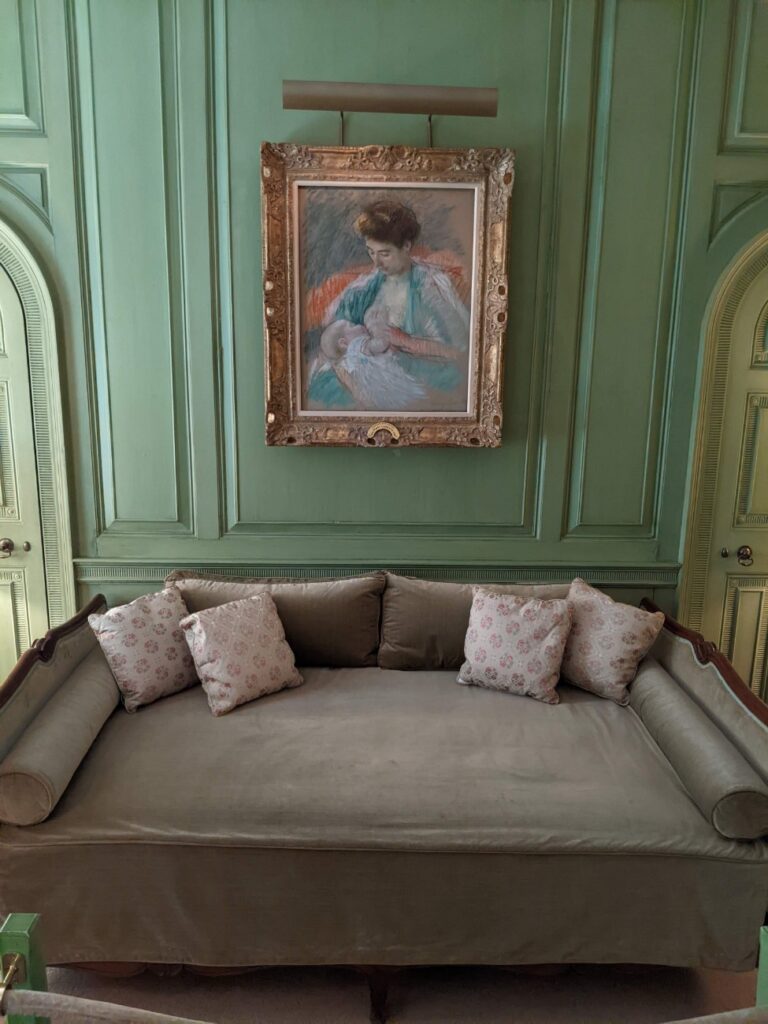
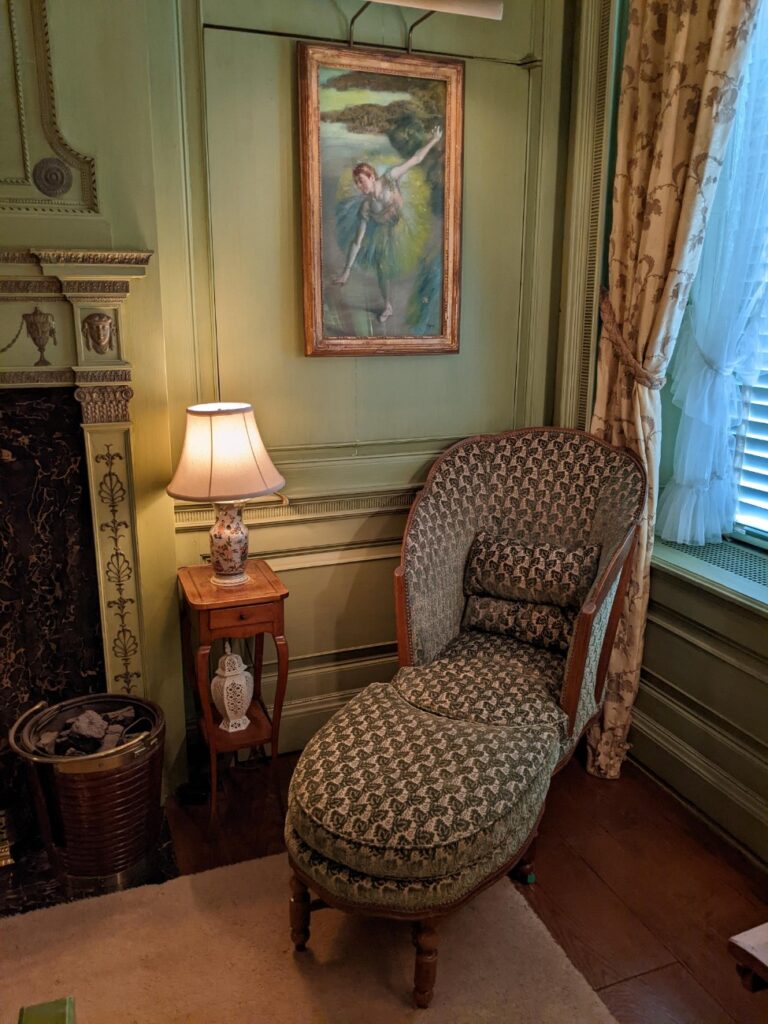
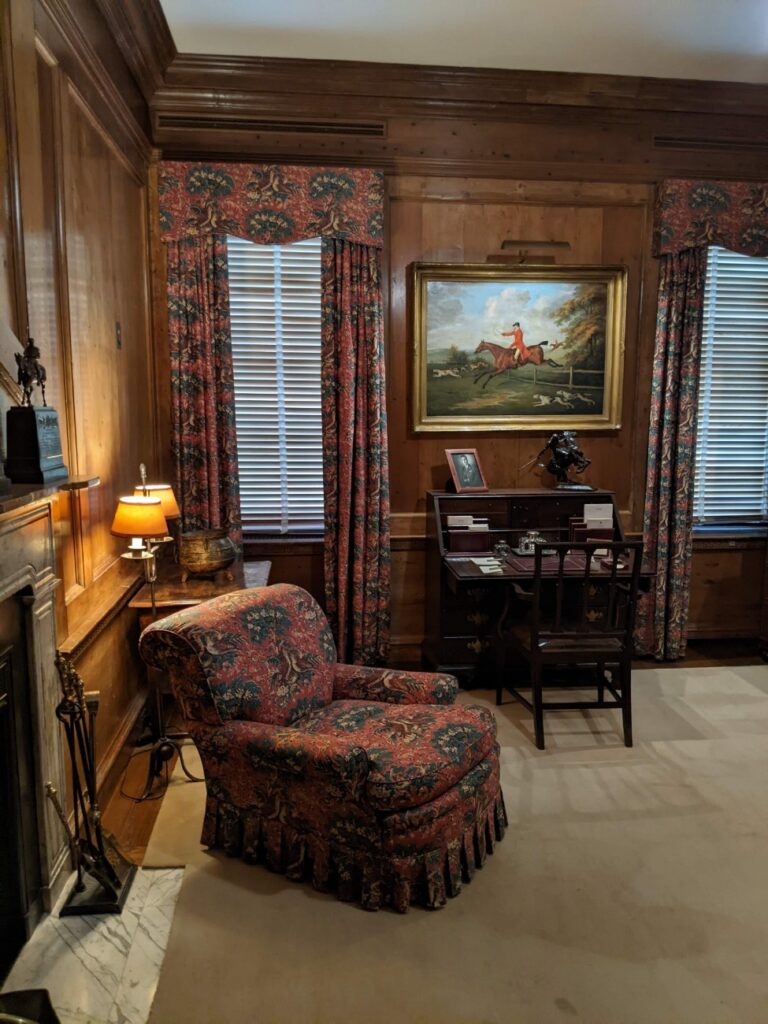
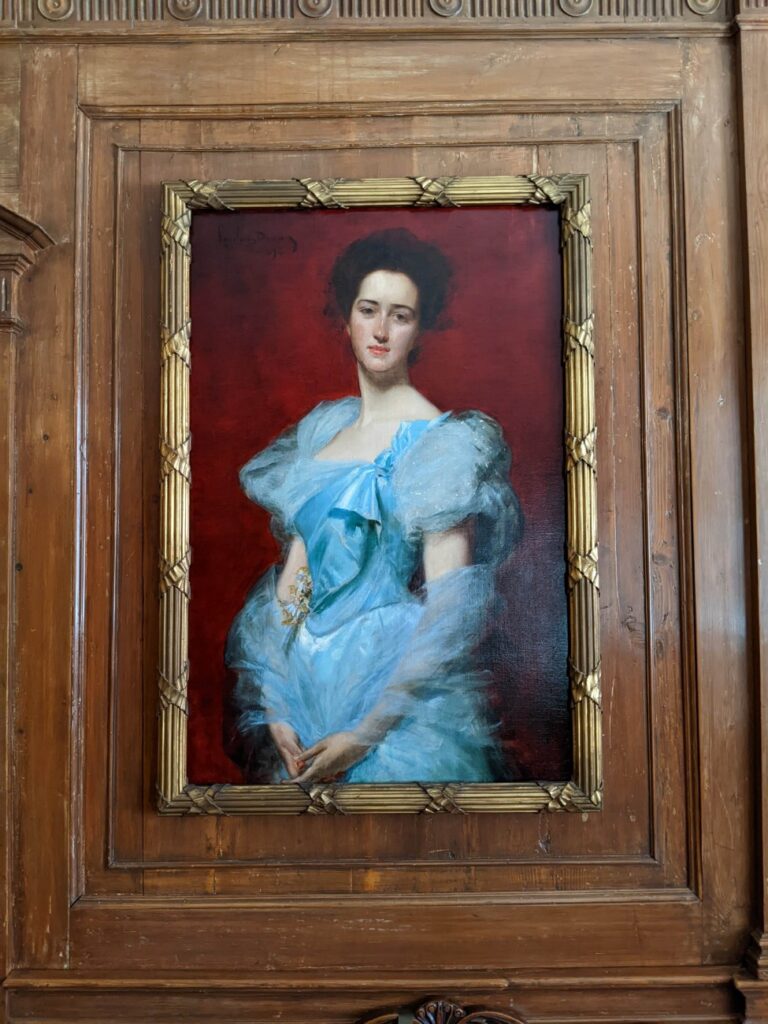
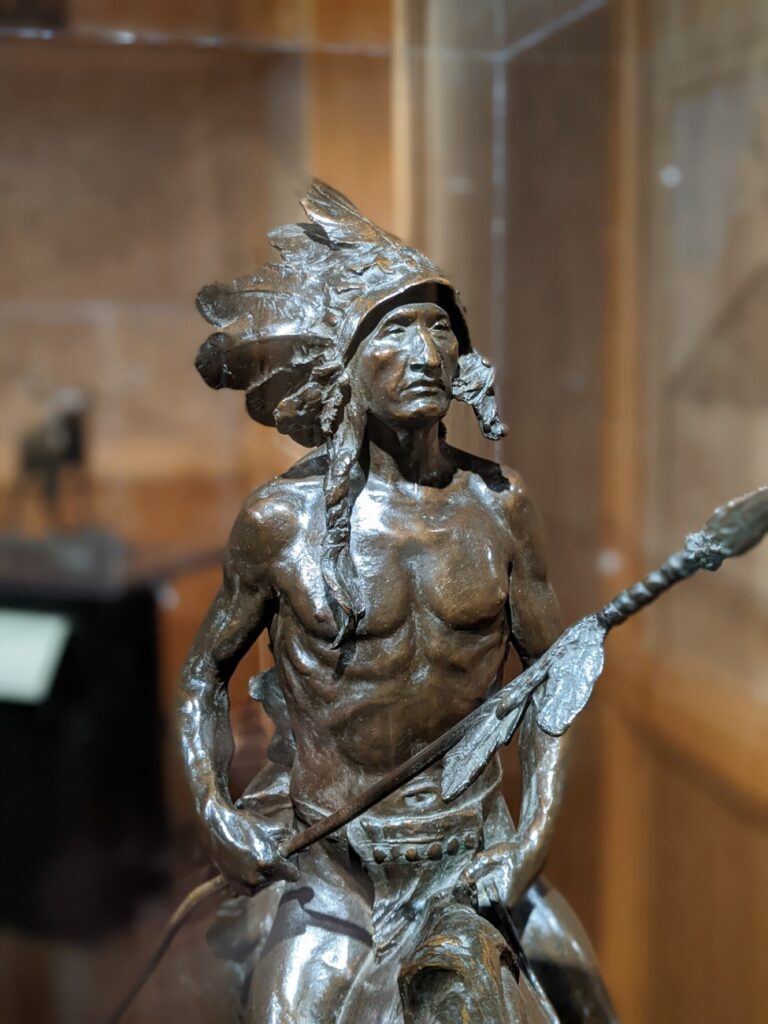
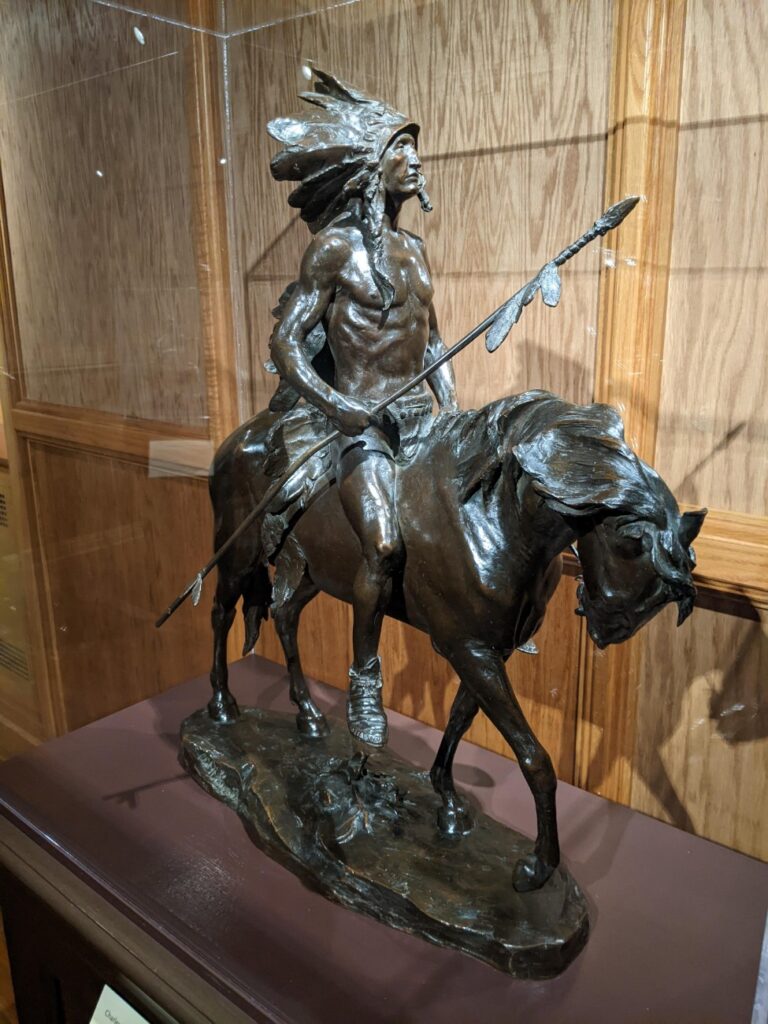
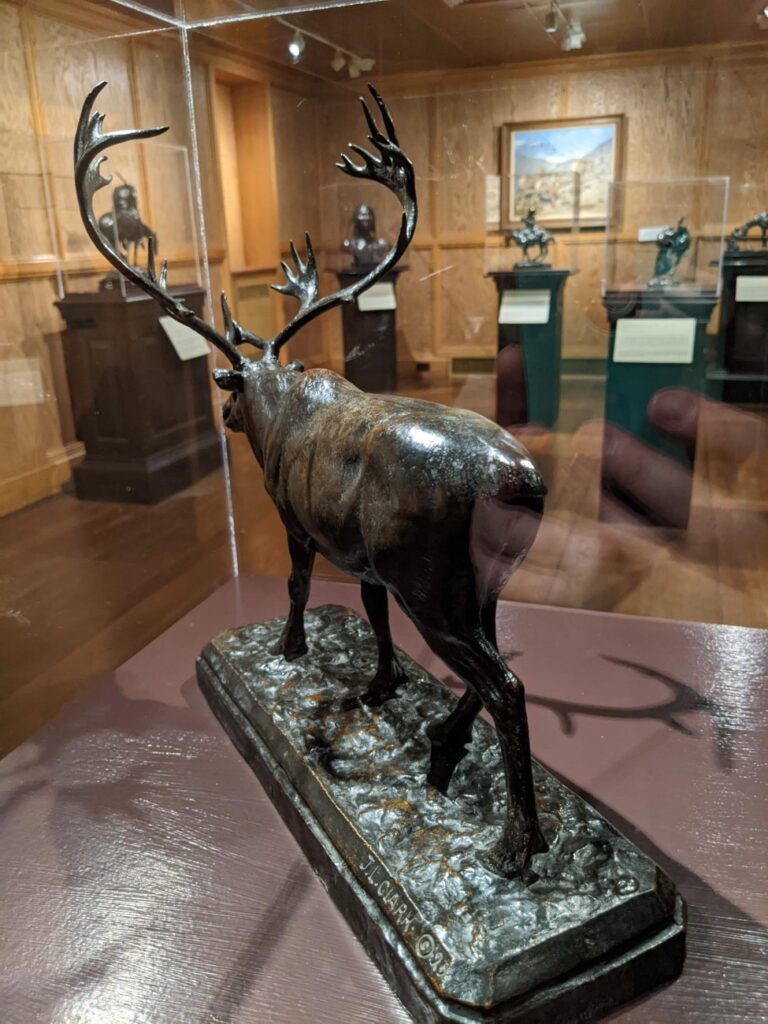
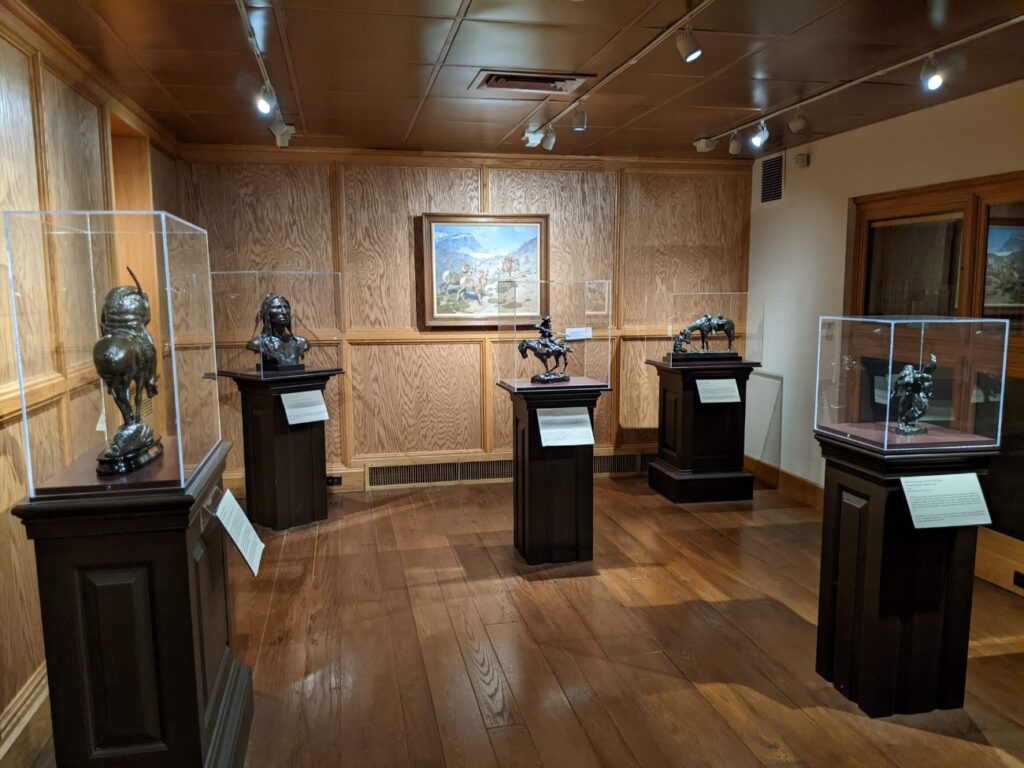
Pizzagalli Center
The newer (2013) Pizzagalli Center houses an auditorium and classrooms, as well as rotating exhibit space. And it is the one building on the whole property that looks and is modern! During my visit, there was an exhibit on Luigi Lucioni, an Italian painter once called Vermont’s “painter laureate” by Life magazine. Downstairs was a photography showcase with video on how we see and view the world.
There are also bathrooms and water fountains in this building.
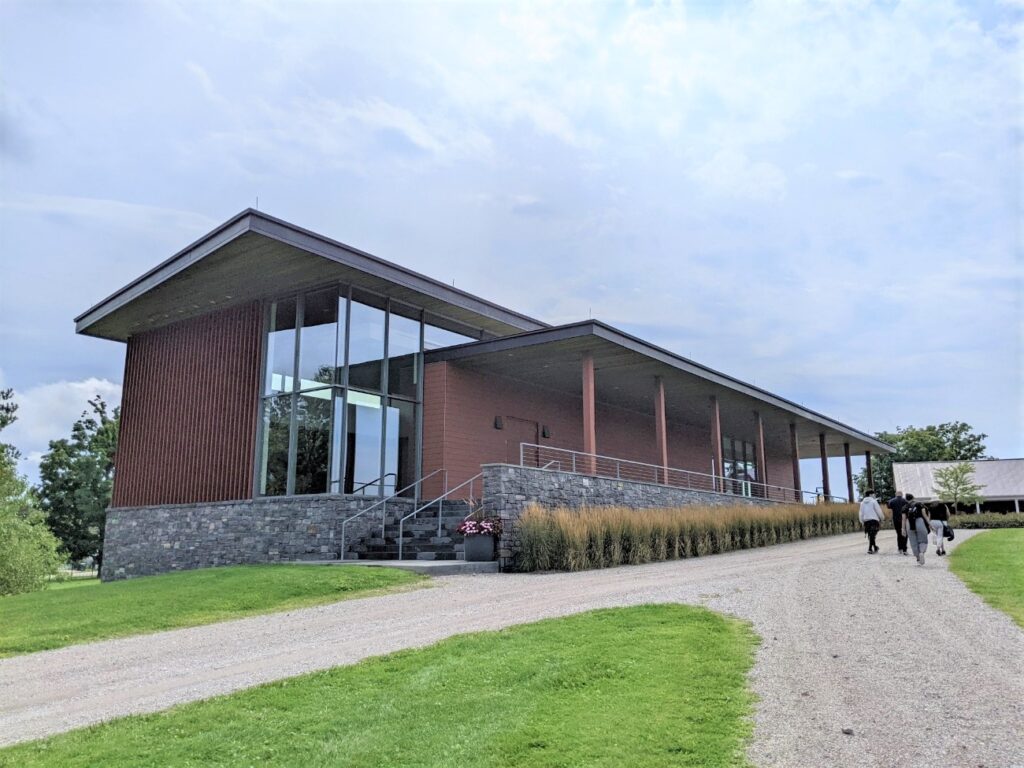
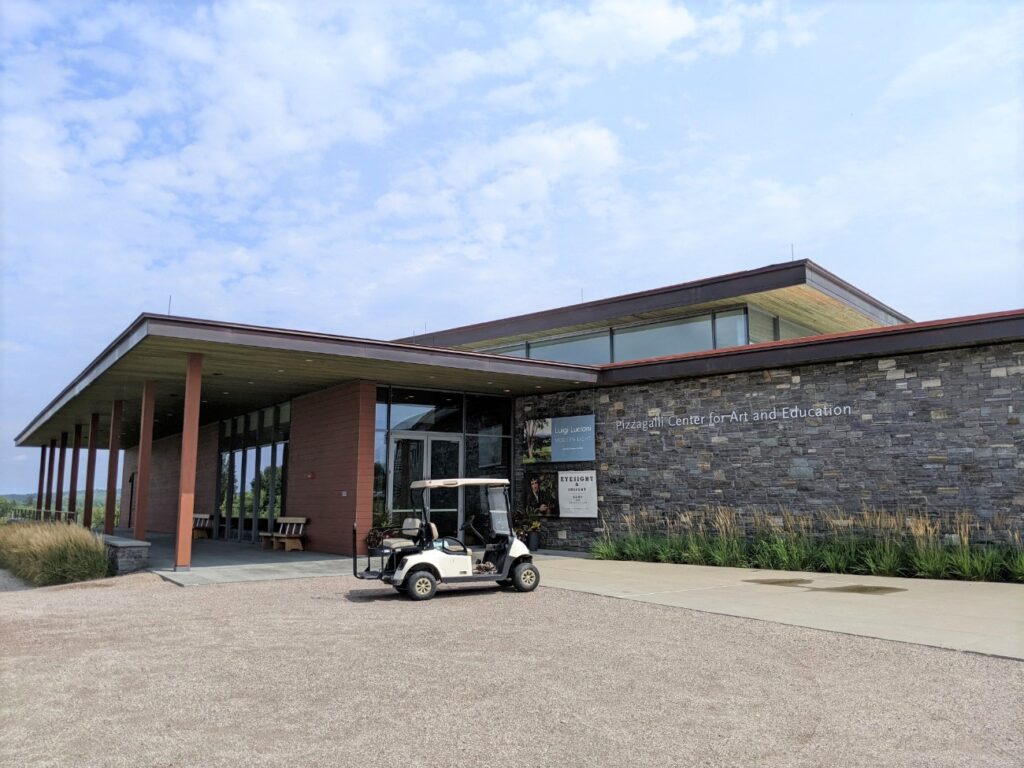
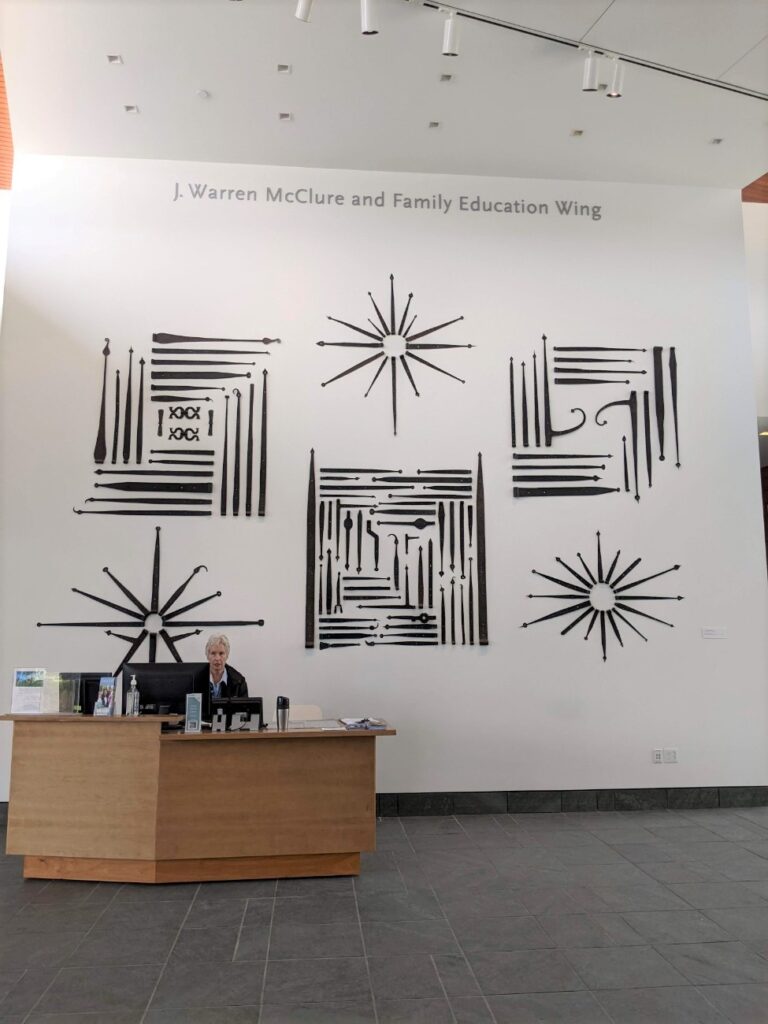
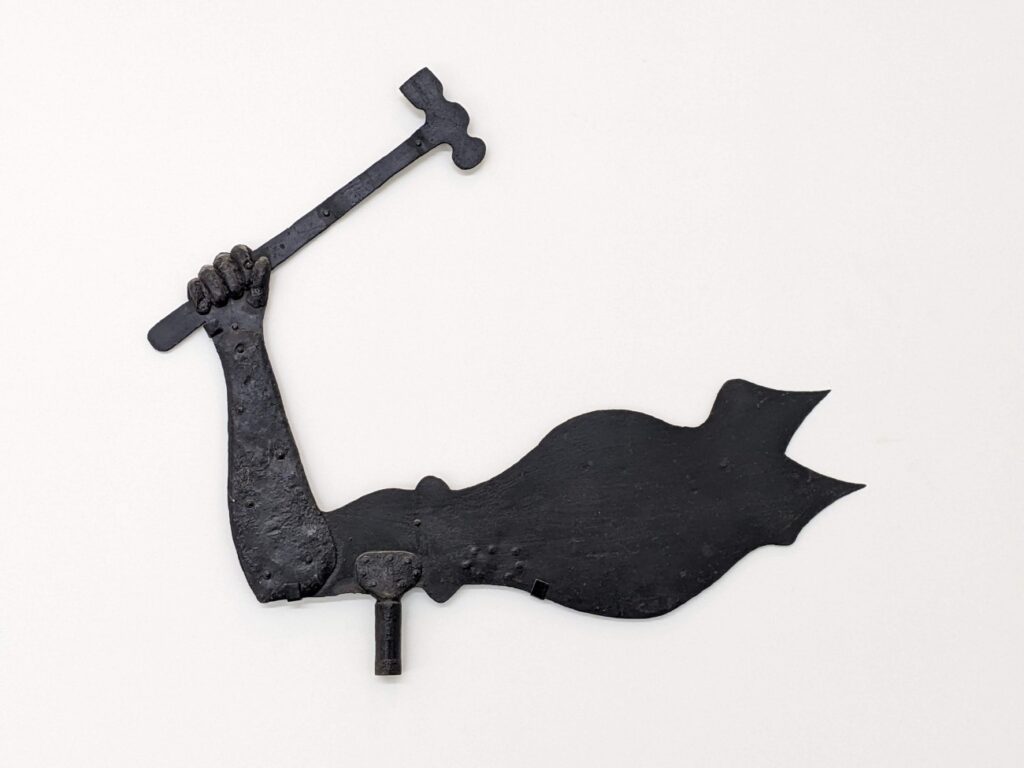
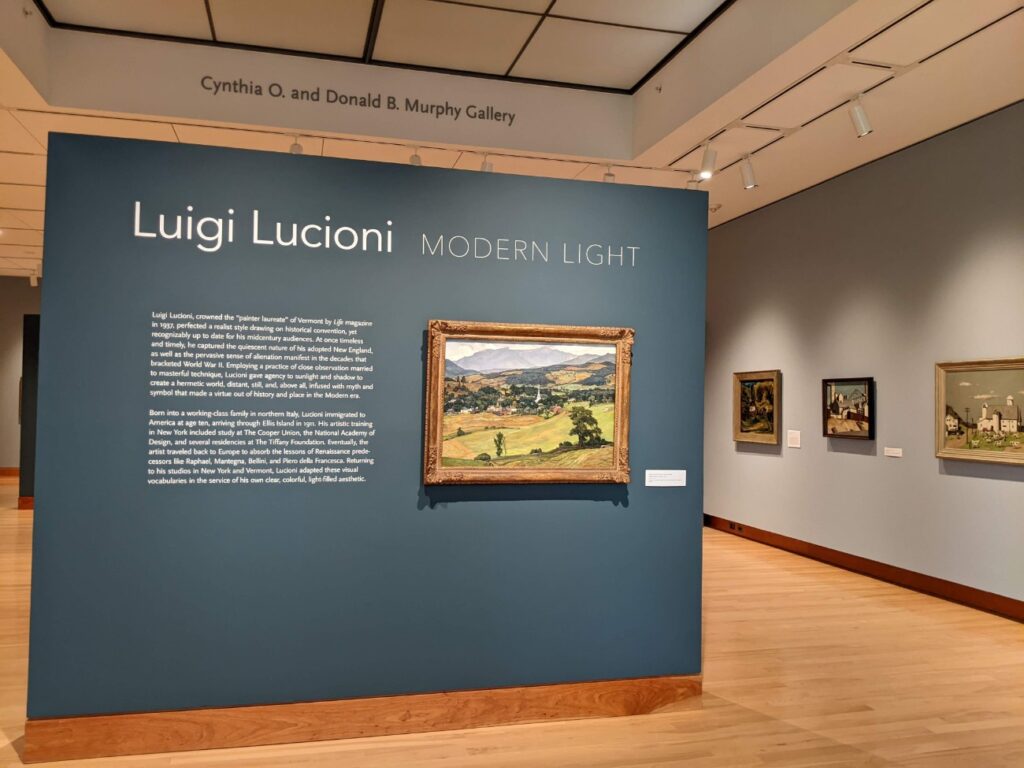
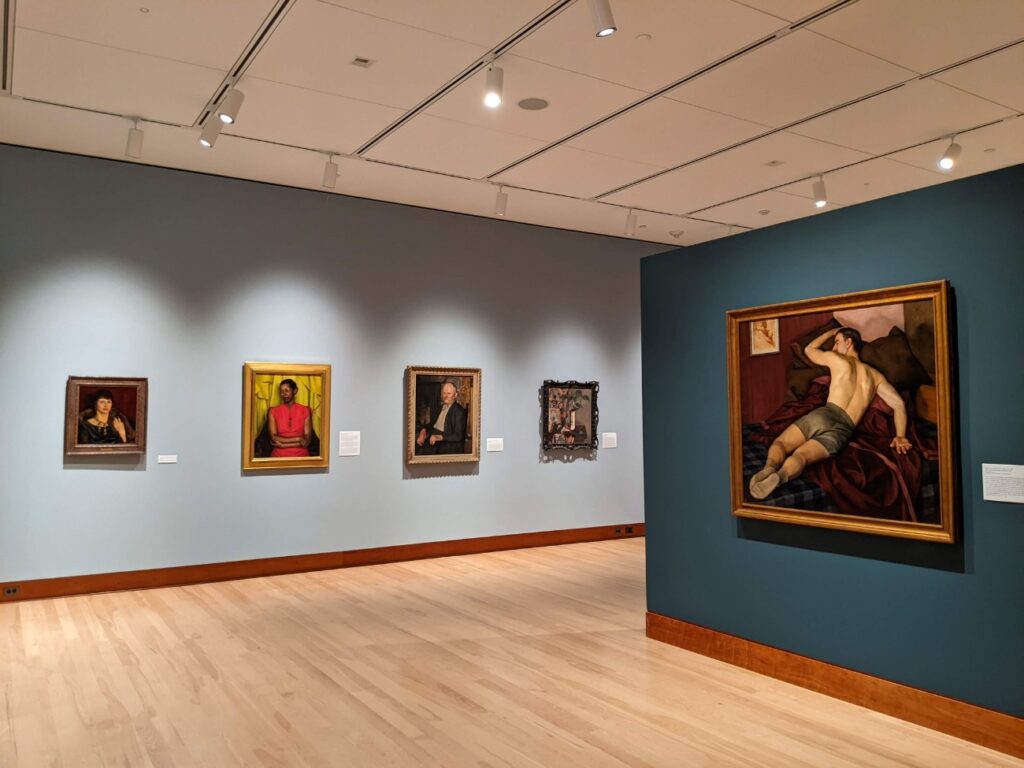
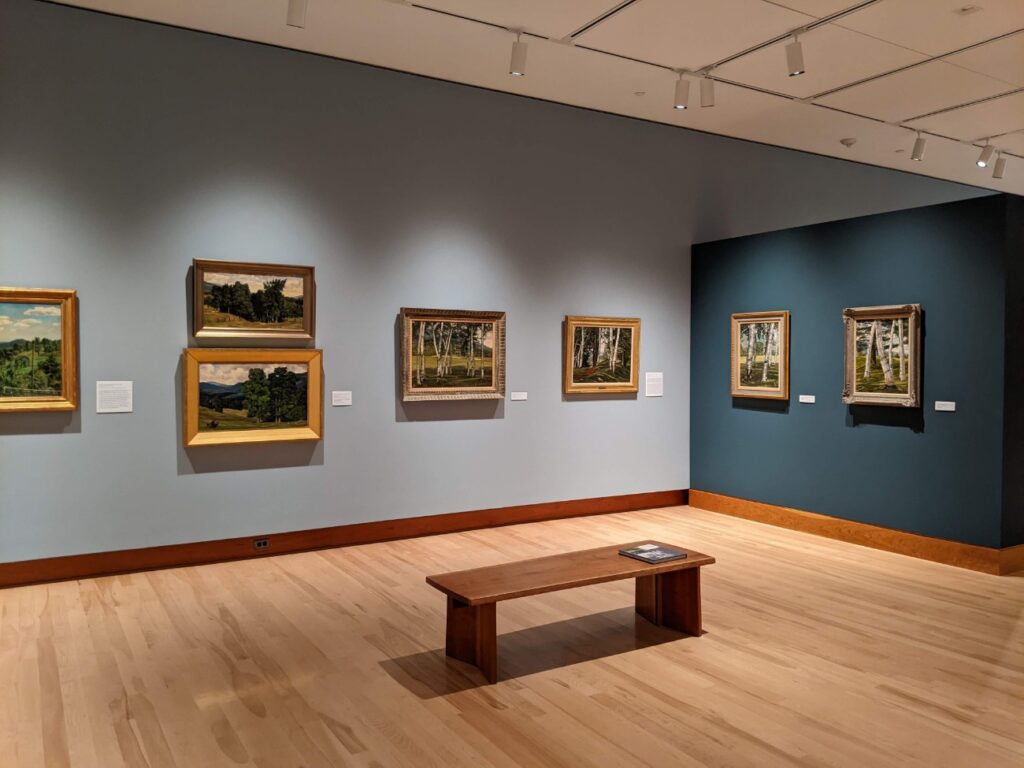
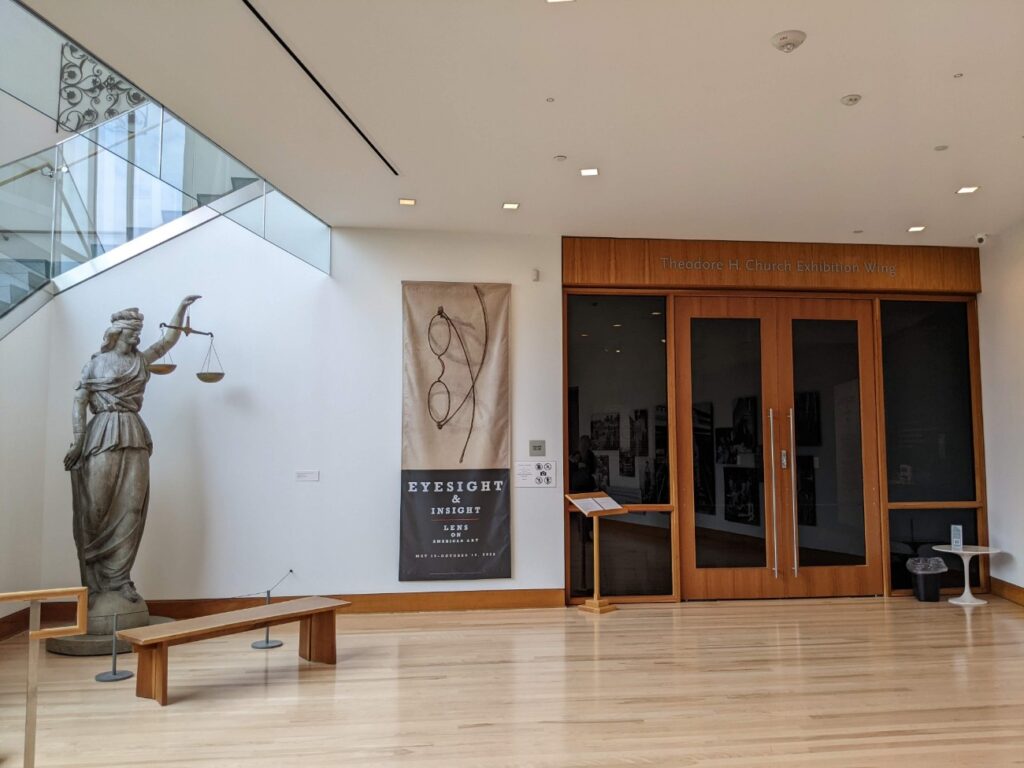
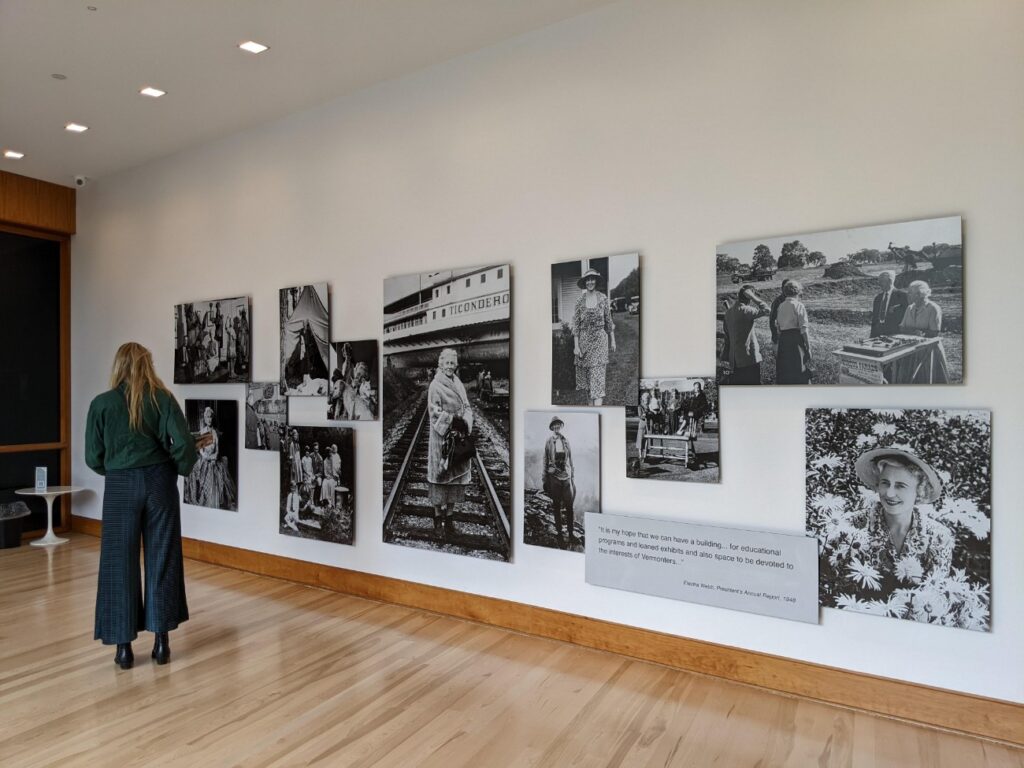
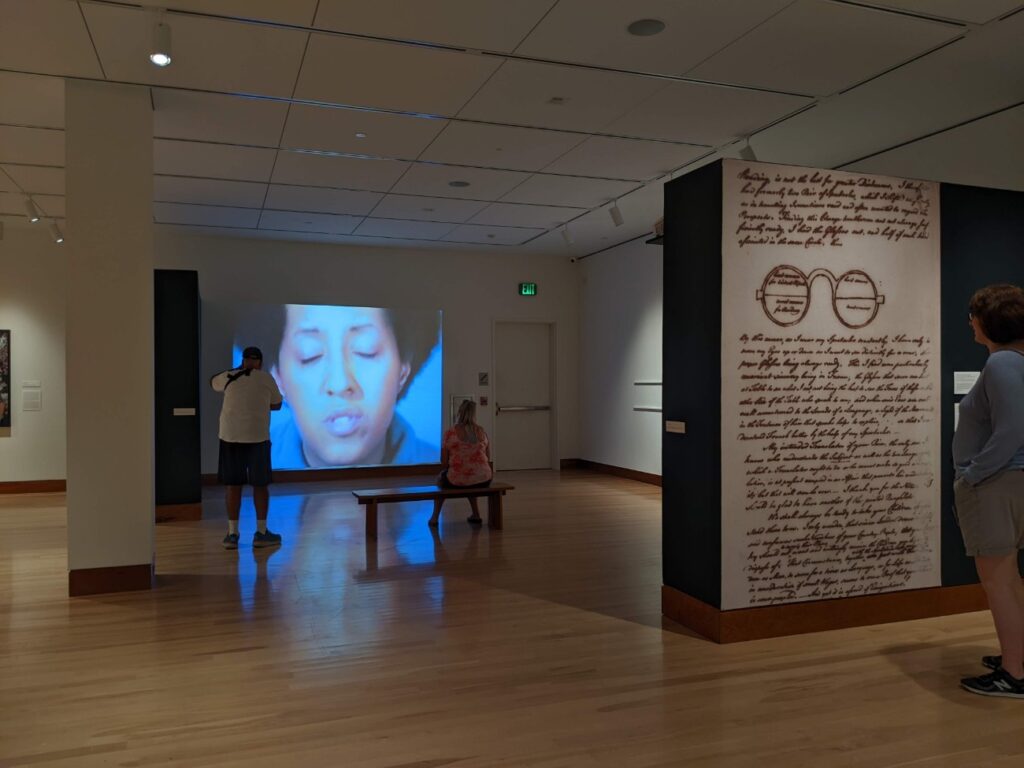
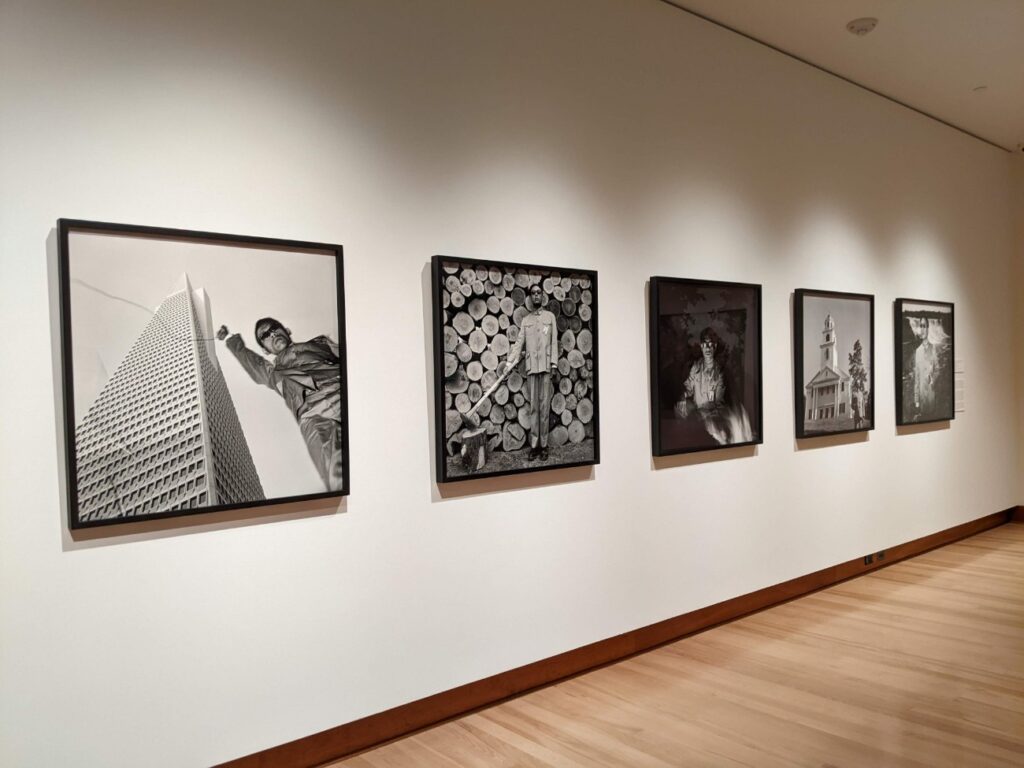
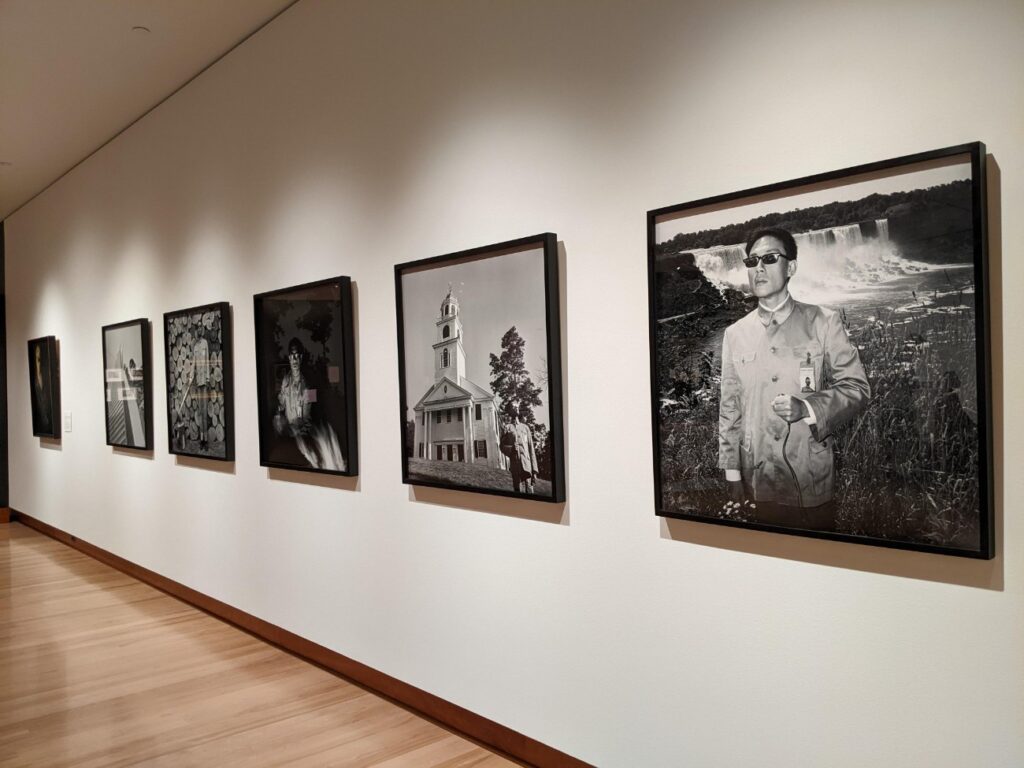
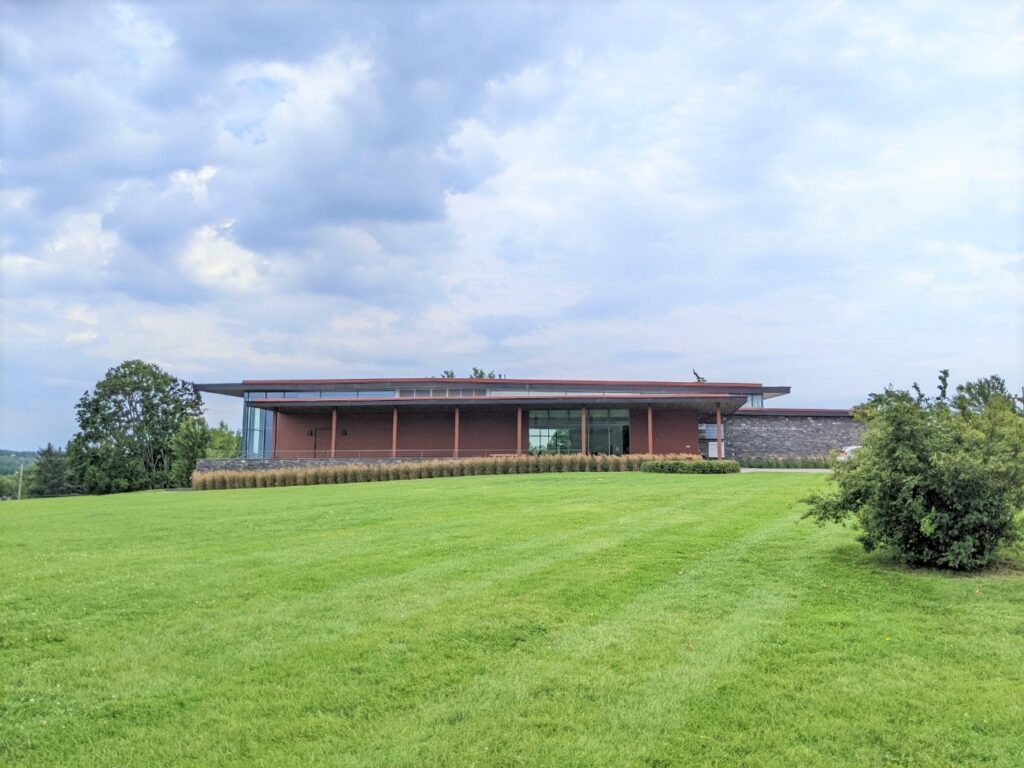
Gardens
The entire 45 acres of the Shelburne Museum are set in beautiful gardens. There are 22 named gardens, including daylilies around the Circus Building, the concentric Bostwick Garden near the Prentis House, a Heritage Garden behind the Dutton House, and so much more. Everywhere you look, there are glorious flowers and intriguing textures.
Not the least of which is a large central installation behind the entrance building. When I was there, they had a monumental art installation called Nancy Winship Milliken: Varied and Alive. Set in a pollinator garden, four gigantic frames are hung with natural materials that move with the wind. Horsehair, wool, bleached wood/driftwood, and maybe felted wool balls are used in each of the four pieces. Called Pasture Song, Meadow Breath, Lake Bones, and Earth Glow, together they create what Milliken calls “contemporary pastoralism.” It looks like this installation was particular for the Shelburne’s 75th anniversary, so it looks like they change what’s in this space every year.
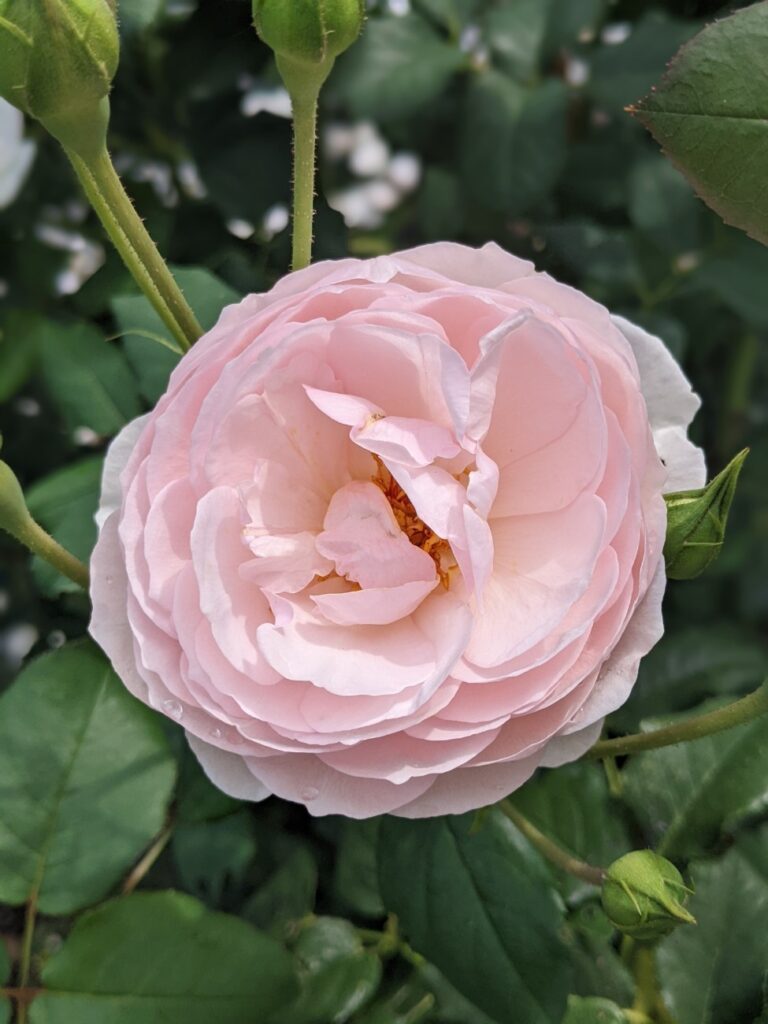
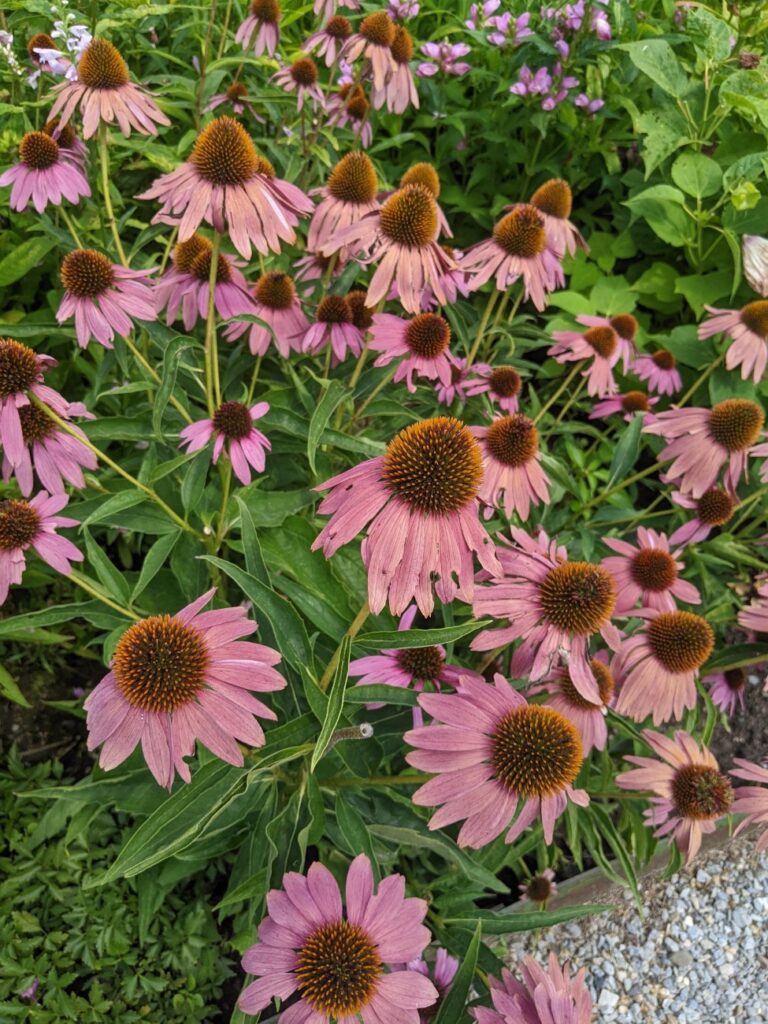
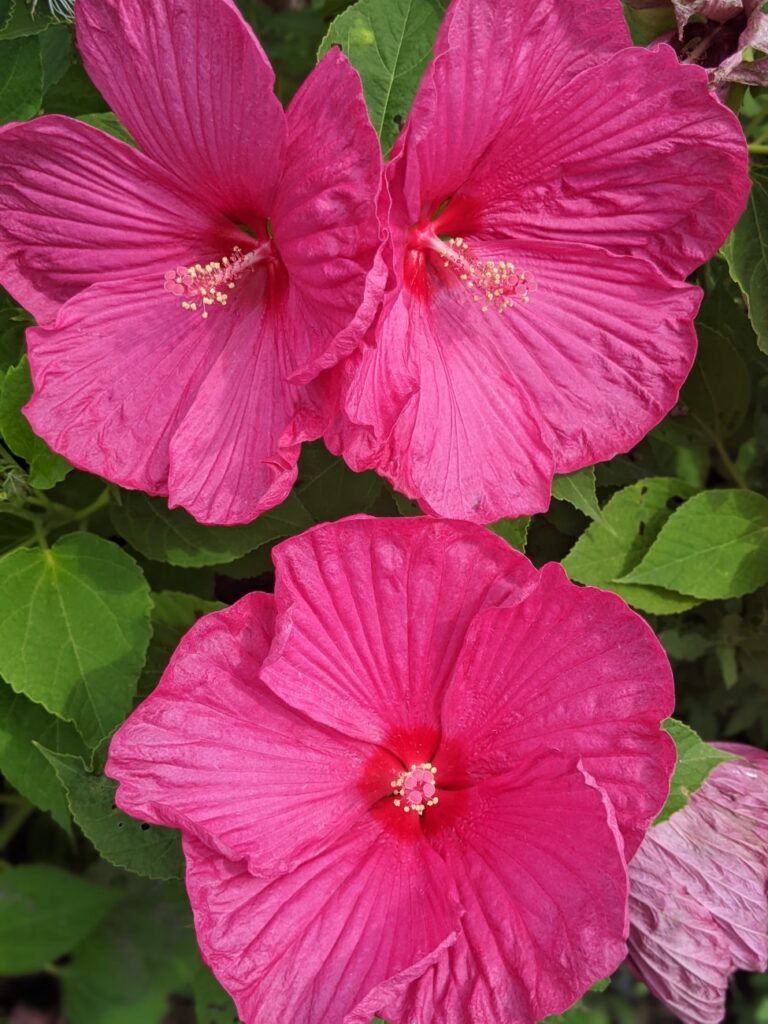
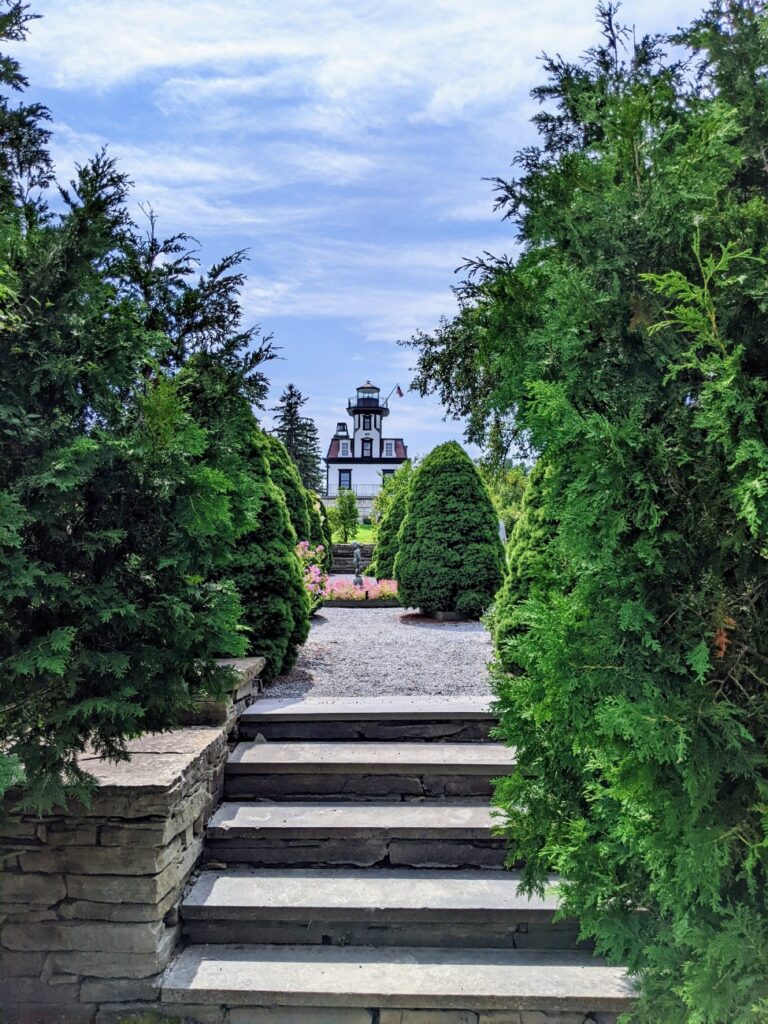
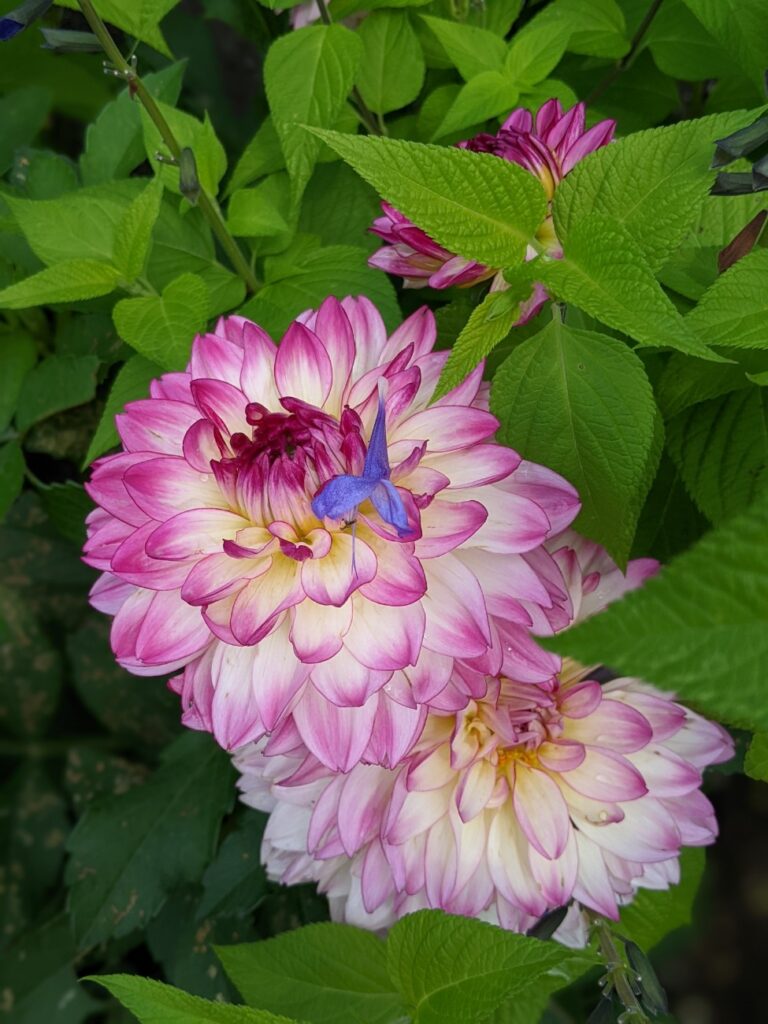
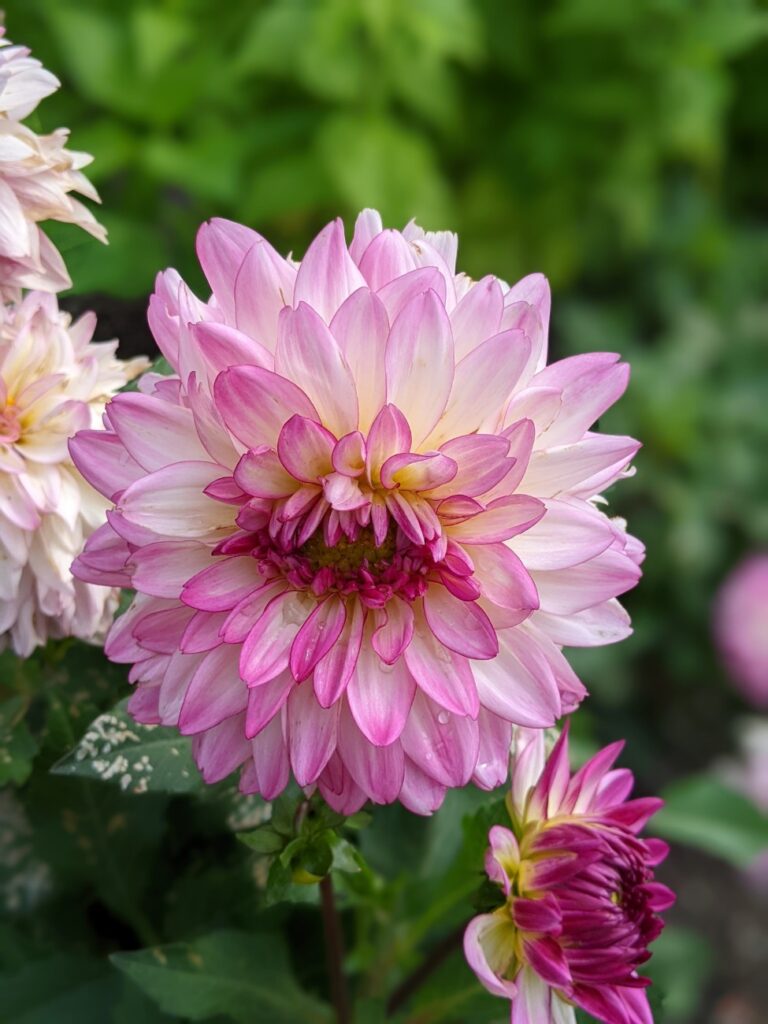
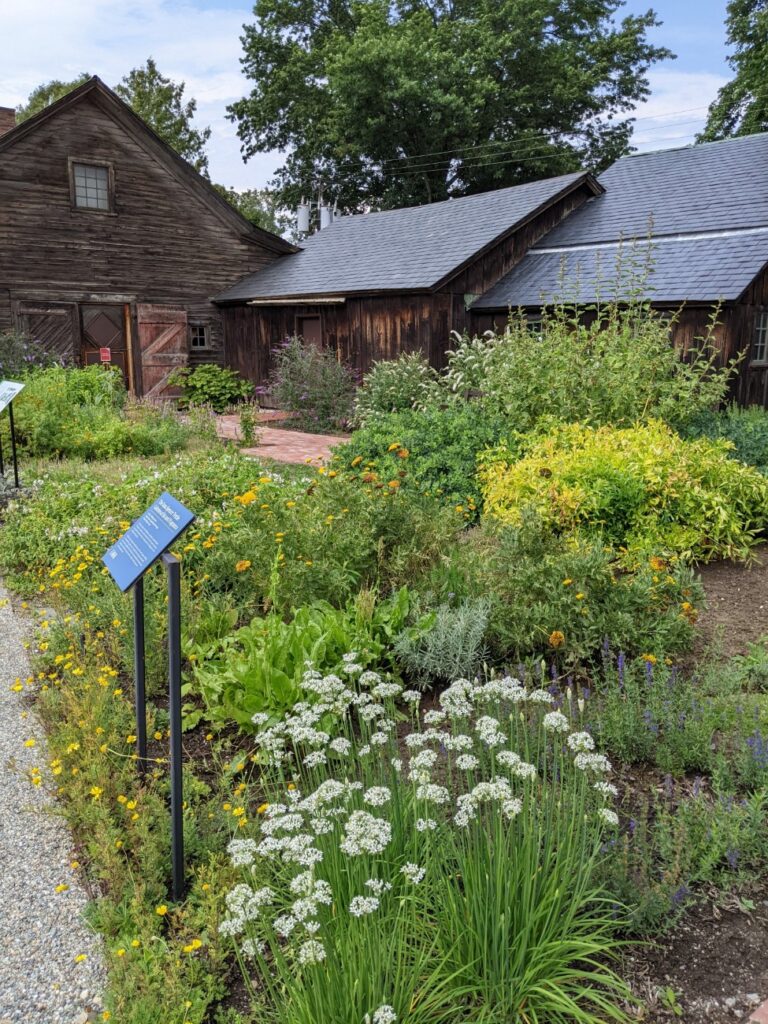
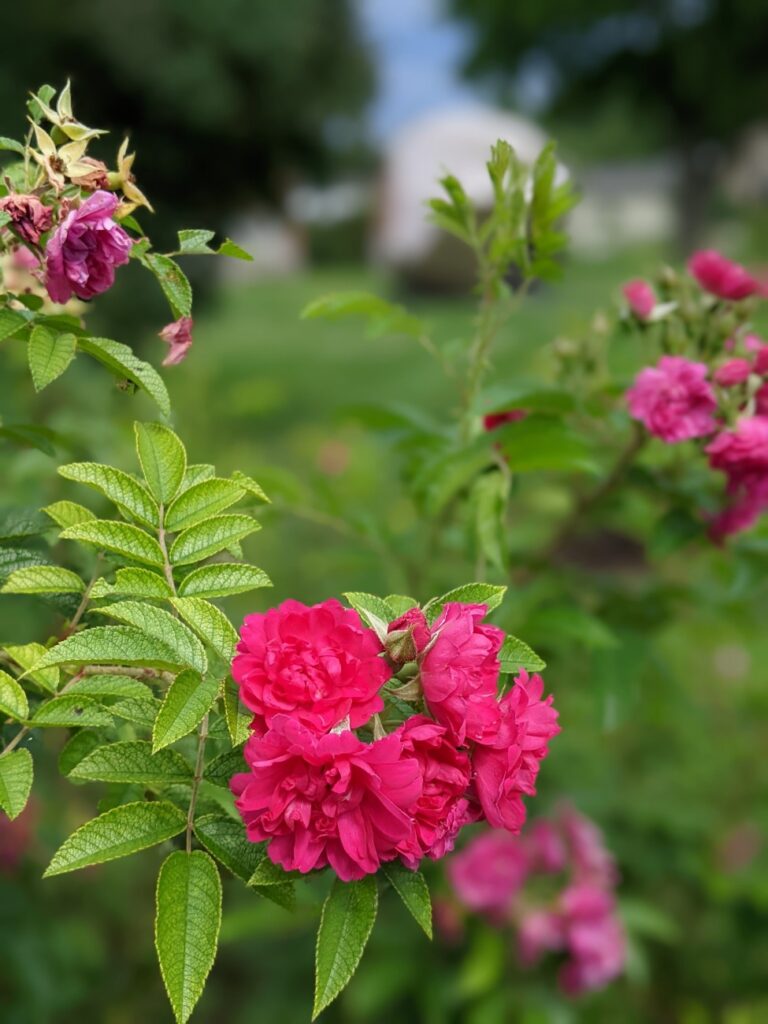
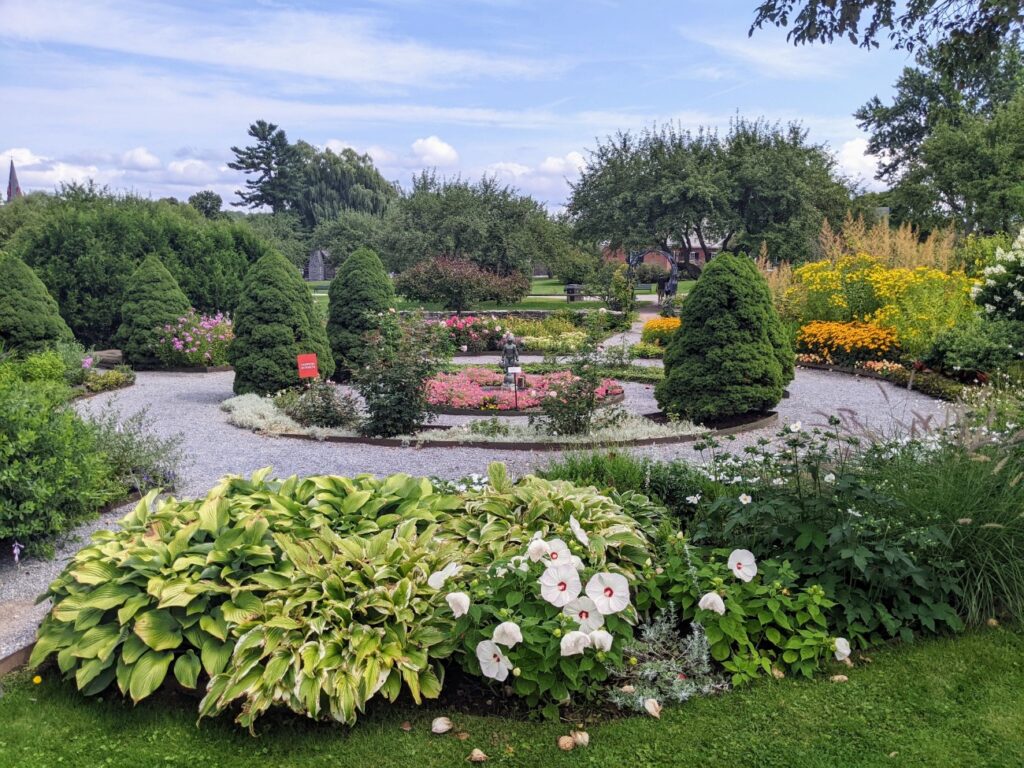
Good to know: There is an overall elevation change from the entrance to the property to the back, where the Print Shop and Variety Unit are located. There are more noticeable slopes around the Memorial Building and around the Railroad Station. If you need help getting around the large property, there is a shuttle (basically a large golf cart) that operates in a loop with stops at the Carousel, Railroad Station, Ticonderoga, Blacksmith Shop, Meeting House, Horseshoe Annex, the corner in front of the Jail, across from the Webb Gallery, at the end of the walk to the Memorial Building, and at the Entrance/Exit.
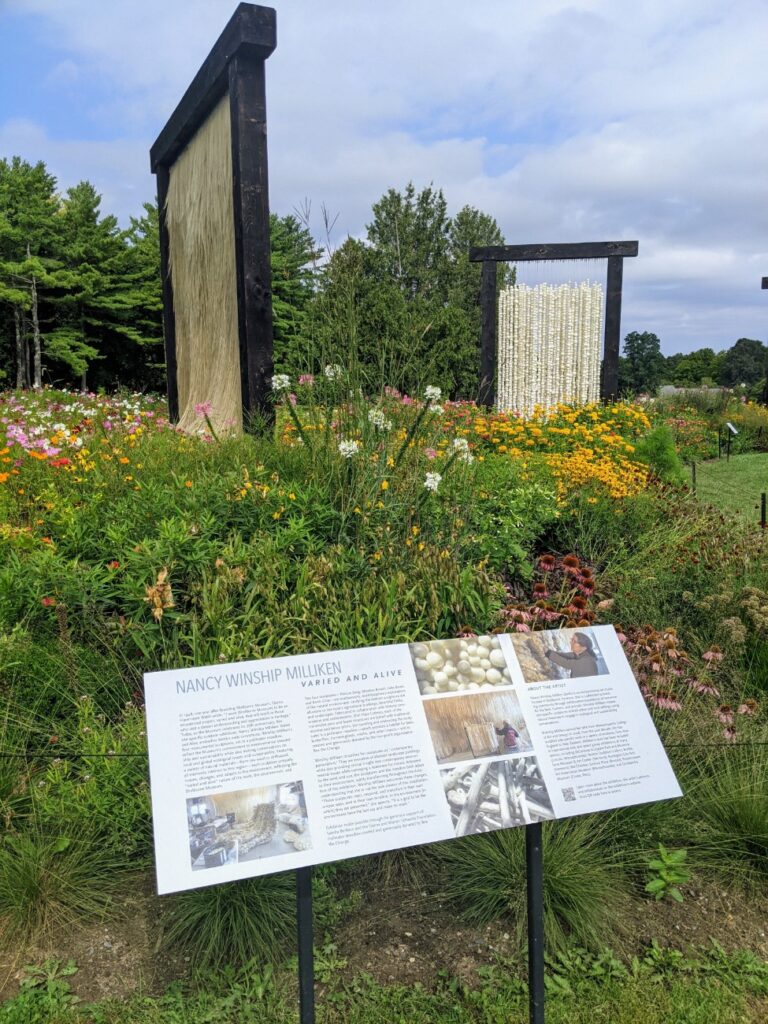
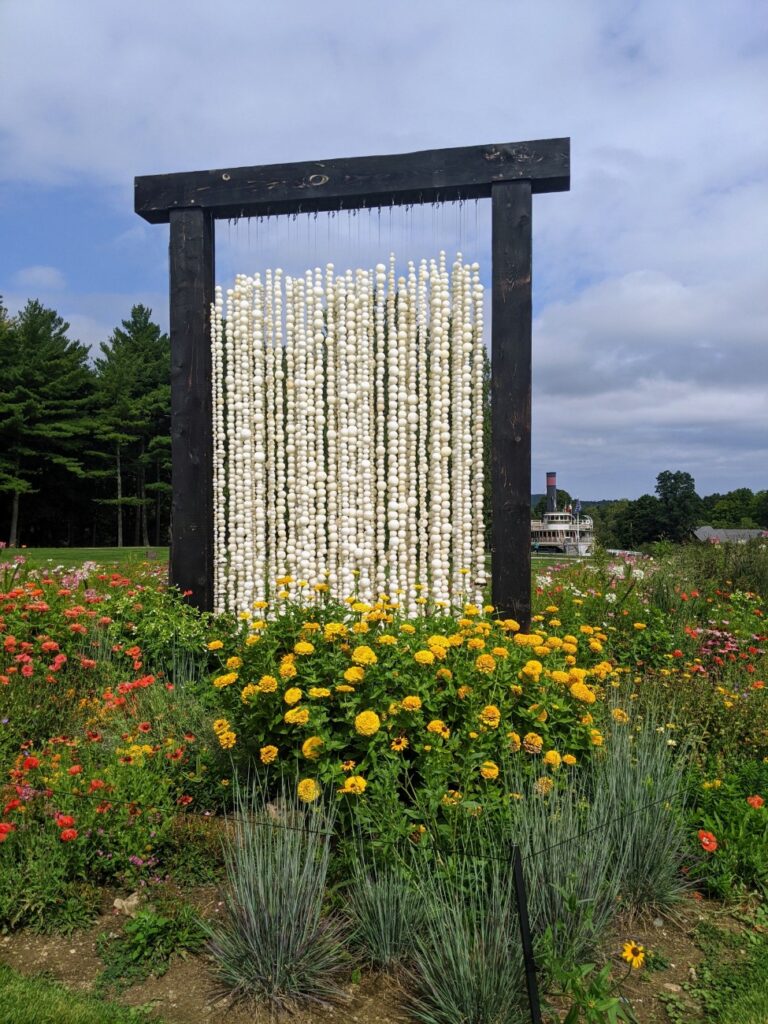
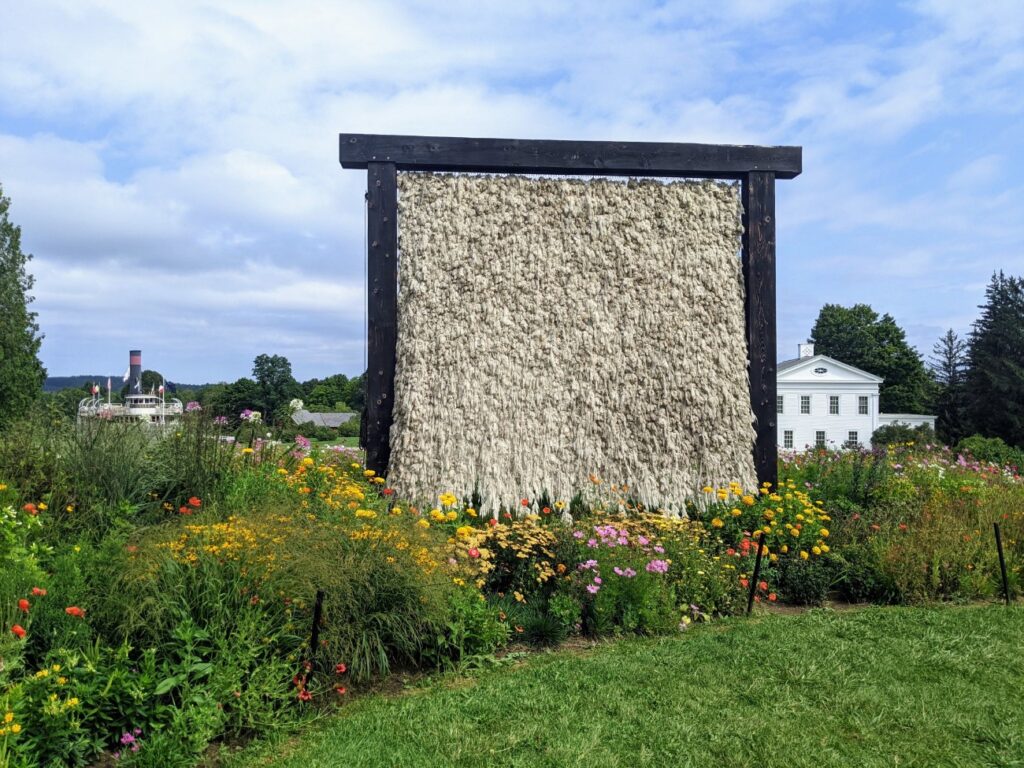
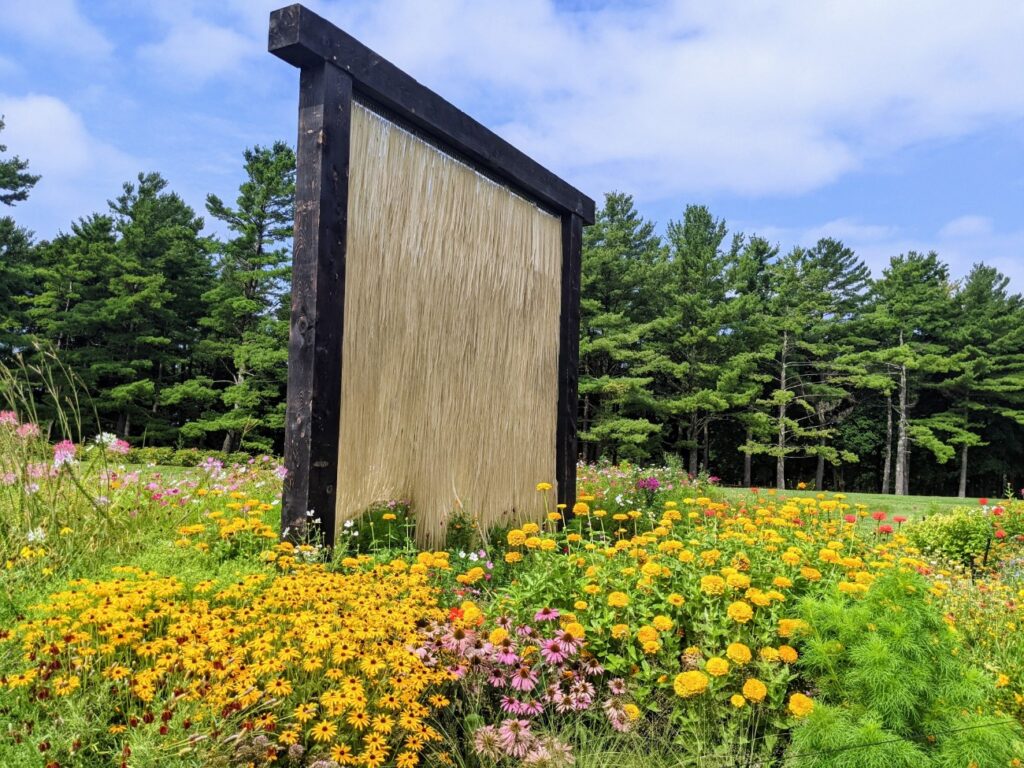
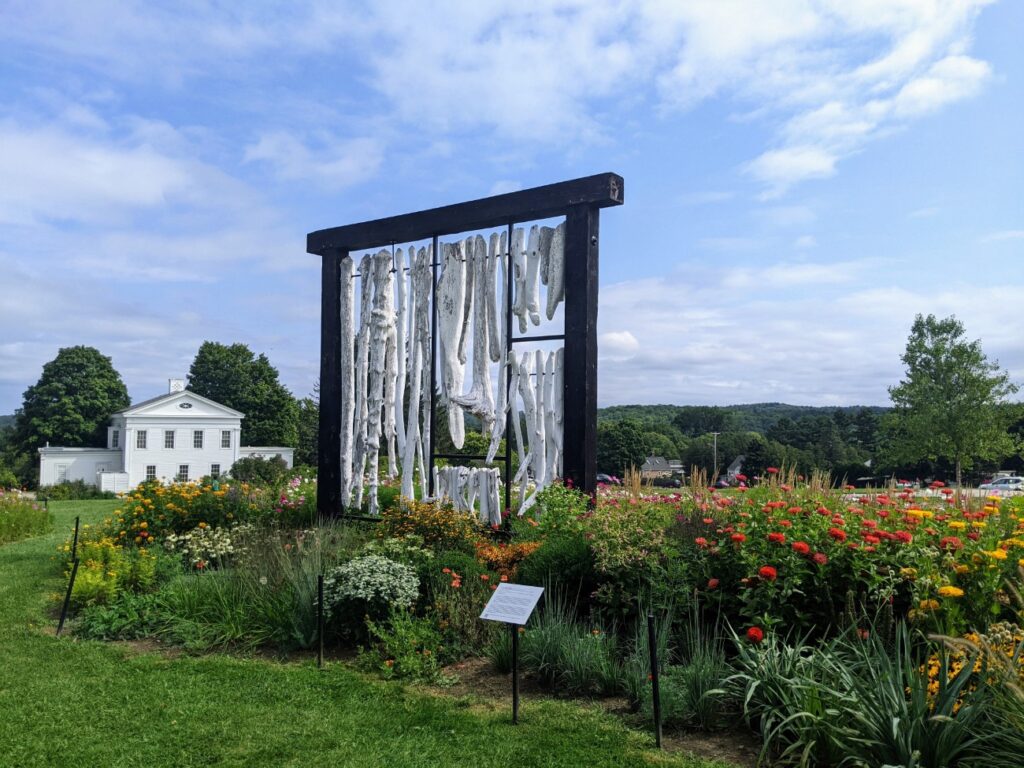
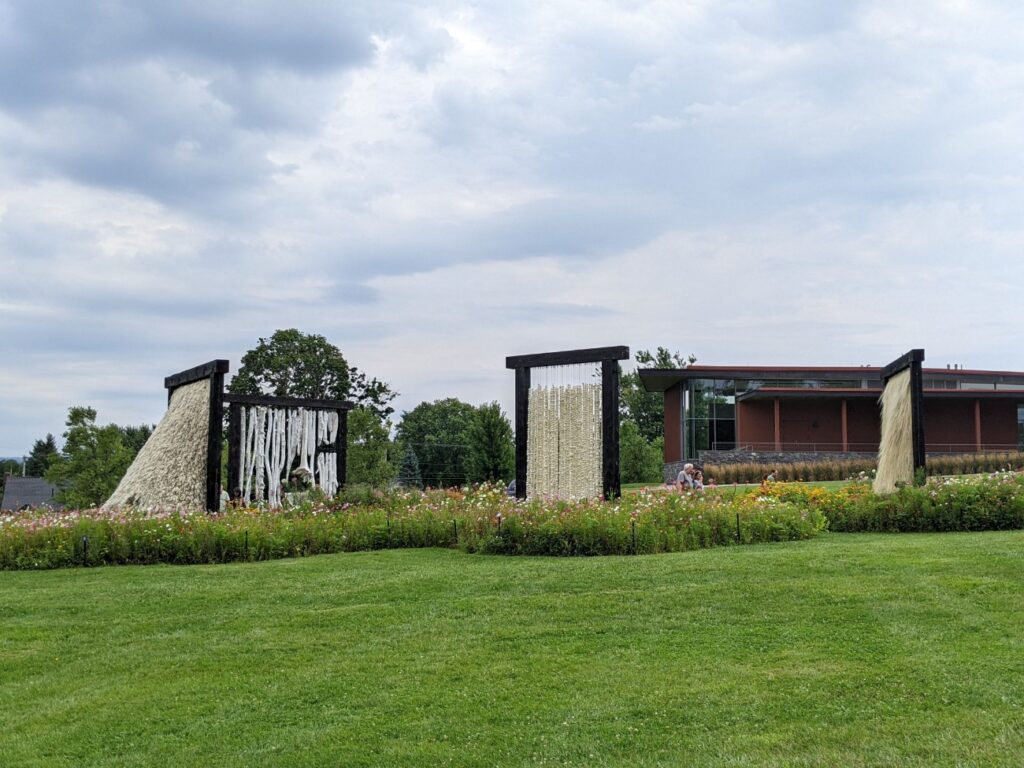
Food & Bathrooms
I mentioned in passing The Weathervane Cafe, which is central to most of the property, tucked behind the Pleissner Gallery and General Store. It’s a big building with bathrooms and plenty of indoor seating as well as outdoor picnic tables. Offerings include soup, salad, and sandwiches, chips, drinks, and ice cream. See the menu here. There are also snacks available in the museum gift shop at the entrance.
Bathrooms are plentiful too – there are large ones at the entrance, the Pizzagalli Center, and The Weathervane Cafe. Smaller ones can be found at the Railroad Station and around the Textile Galleries. Water fountains are only found at the larger bathrooms. There are some benches around, but the two main places to sit and take a load off for a while are at opposite ends of the property. One is the patio behind the gift shop and the other is at the Shaker Shed all the way at the back.
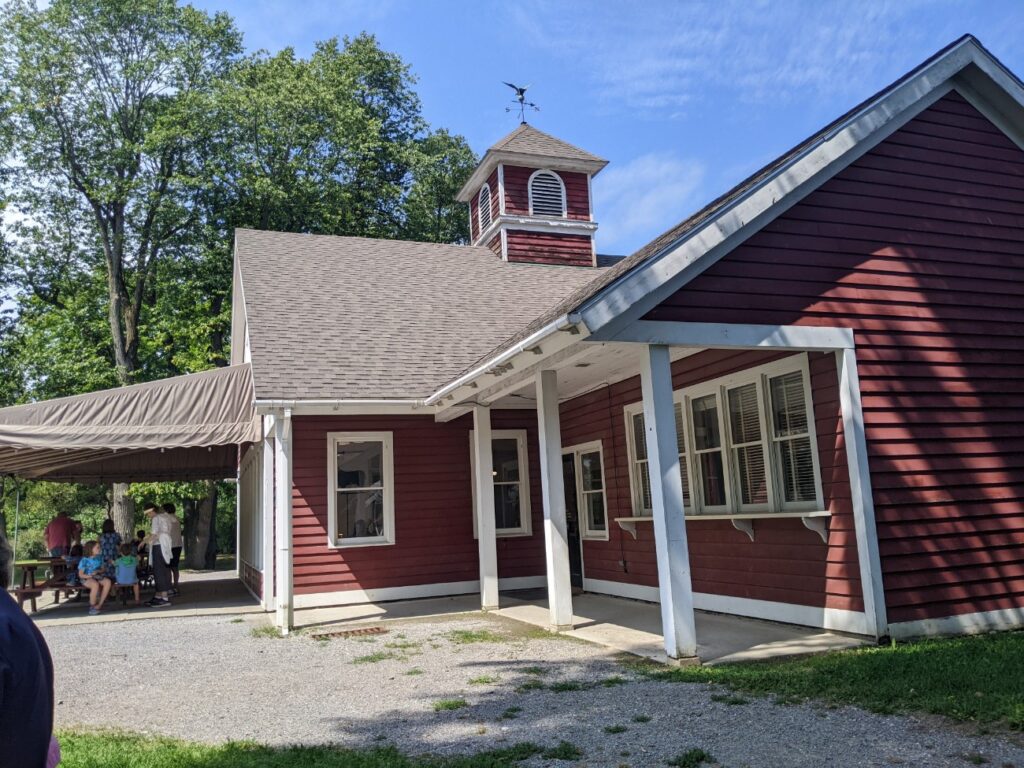
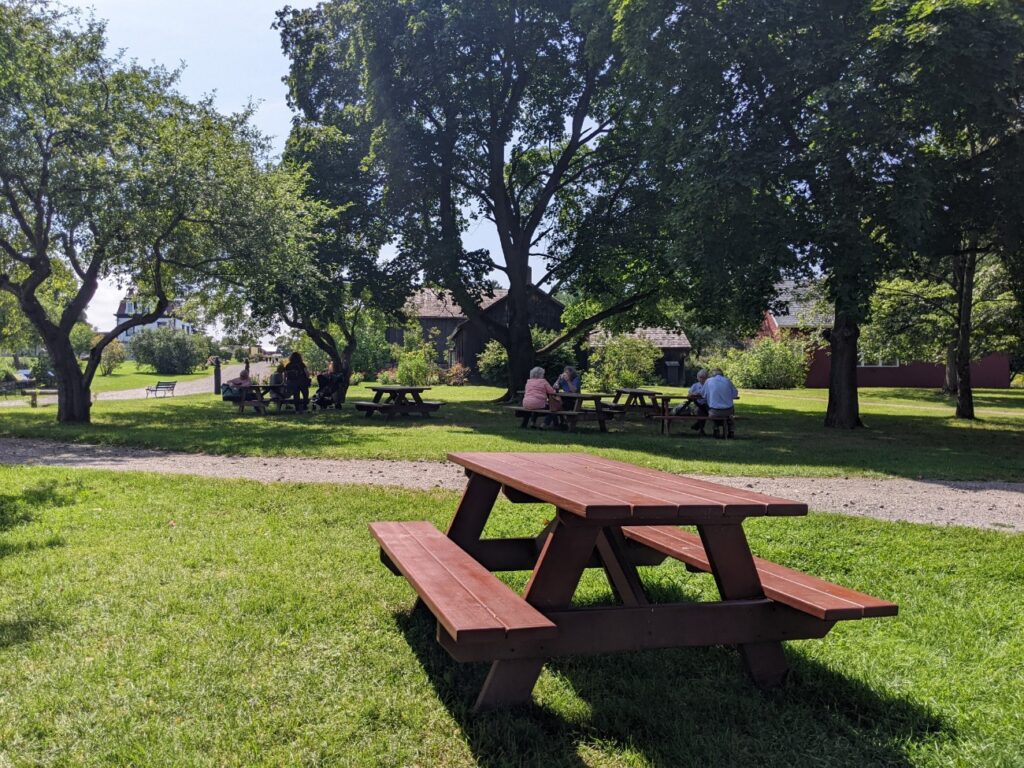
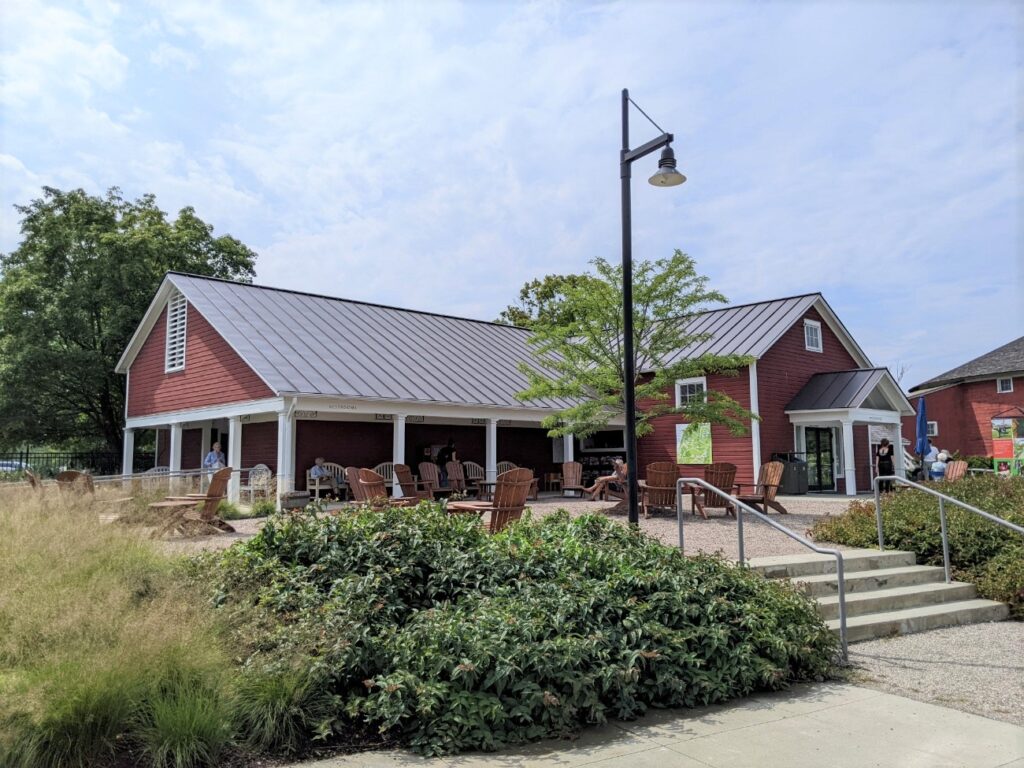
Events
The Shelburne Museum offers several events during the year, not the least of which is Free First Friday Eves, where not only is admission free after 5 pm, but there are local food trucks and live music at the Weathervane Cafe patio! It’s only open until 7:30 pm when the music stops, so it’s not nearly enough time to visit the whole place for free, but it sounds like a lot of fun.
Otherwise, there are other concerts and live performances throughout the summer, including the annual Ben & Jerry’s on the Green series of nine outdoor concerts, the Vermont Symphony Orchestra, and Lyric Theater Company shows. Most of these carry an additional cost, but at least for the Ben & Jerry’s shows, kids 12 and under are free.
The Shelburne Museum generally closes for the season in October but reopens in the evenings in December for Winter Lights. The cost is $15 per adult and $10 for kids 3-17. I’m not sure if food is normally available, but there is a special Ice Bar night with two literal ice bars, plus snacks from food trucks. Tickets range from $70-85 ($85 for non-members) and include two drink tokens and two food tokens. Once your tokens run out, you can buy more with cash. This event sold out this year so it may be worth getting your tickets early! Winter Lights in 2022 lasted from Nov. 25-Jan 1, mostly on the weekends and all week between Christmas & New Year’s. Always check the calendar before your visit!
Gift Shop & Admissions
The Shelburne is only open during the warmer months, usually mid-May through mid-October. Hours are daily from 10 am-5 pm, except for special events. Tickets cost $25, $15 if you’re from Vermont, kids $12-14, and under-5s are free. Families with two adults and all their kids is $65 total. And get this, every ticket is good for two consecutive days. If you don’t quite manage to see everything in one day (or your camera battery runs out) you can come back a second day. I highly recommend it since there is so much to see. I ended up finding a whole gallery I had missed the first time! If you’re local and want a membership to visit as much as you like, they start at $60 per person or $85 per couple.
Make sure to walk around the museum gift shop on your way in and out. Much more than souvenirs, you can pick out upscale home goods, clothing, chocolates, toys, or books, and even snacks to fuel your way to the rest of the collection.
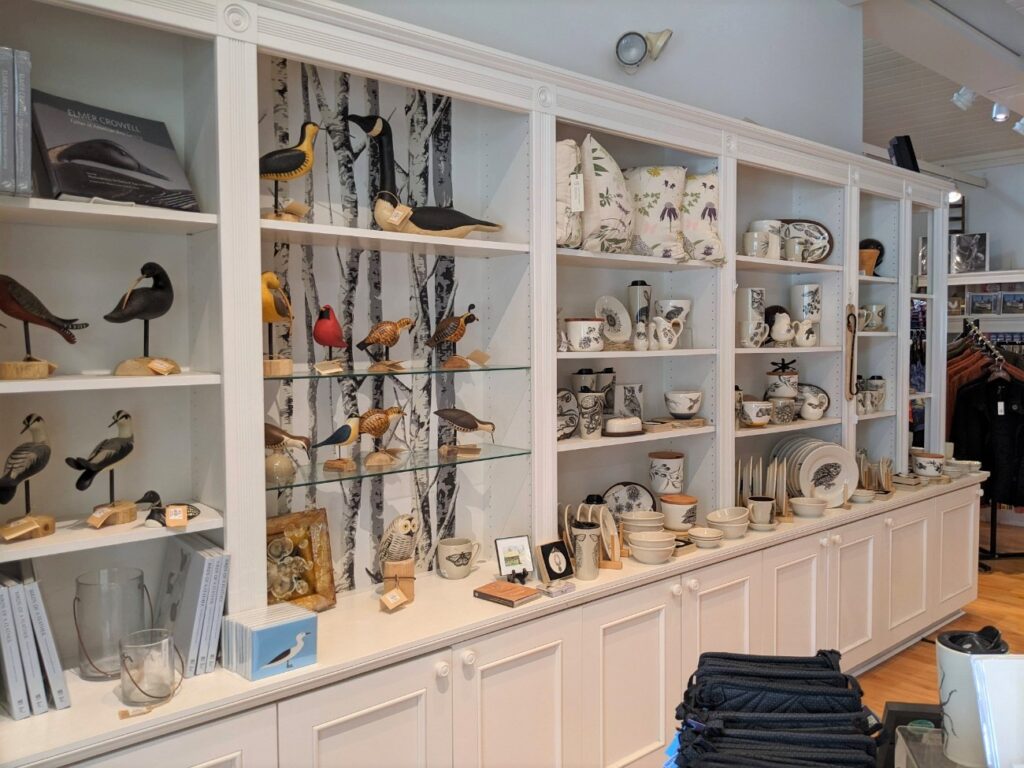
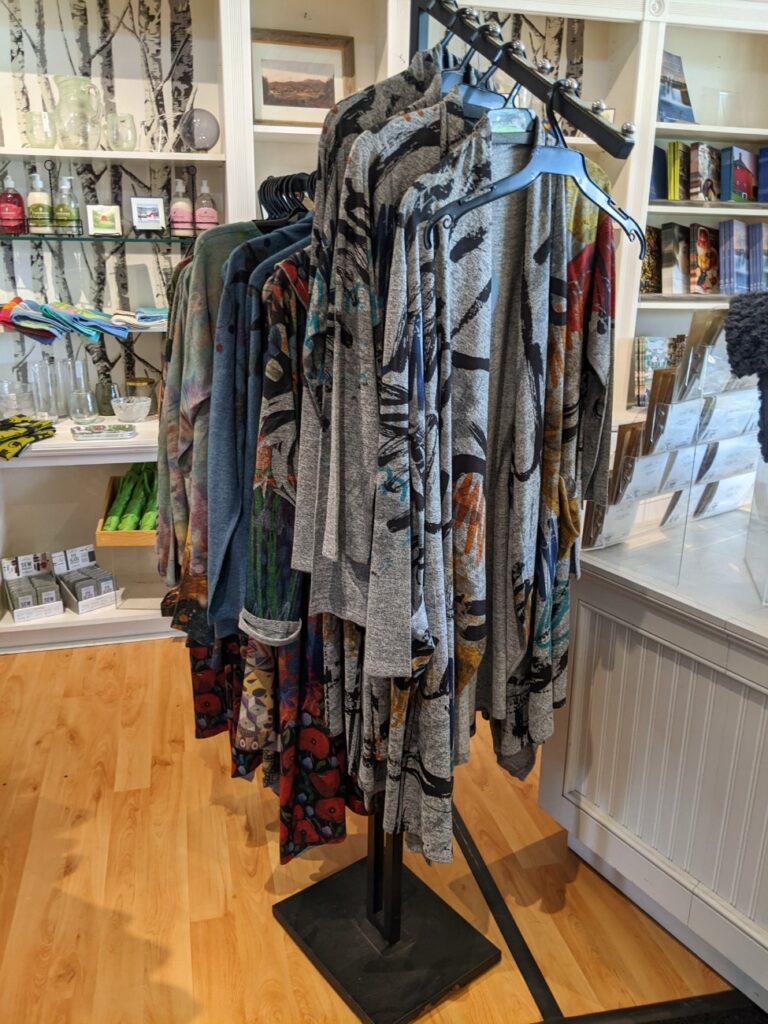
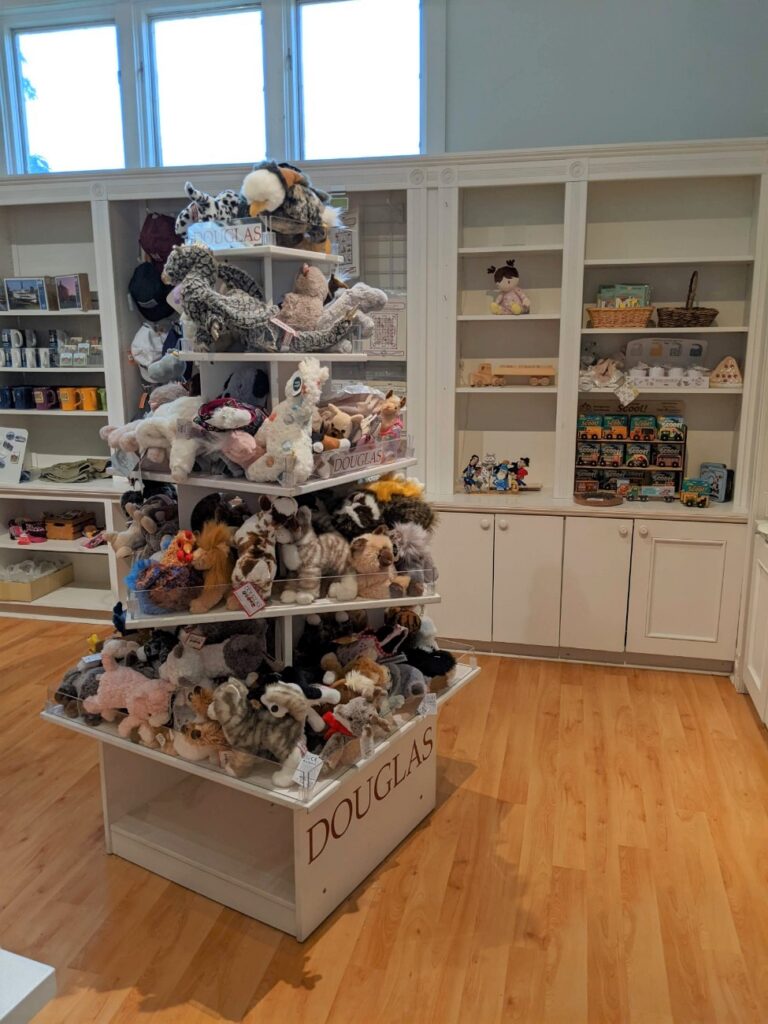
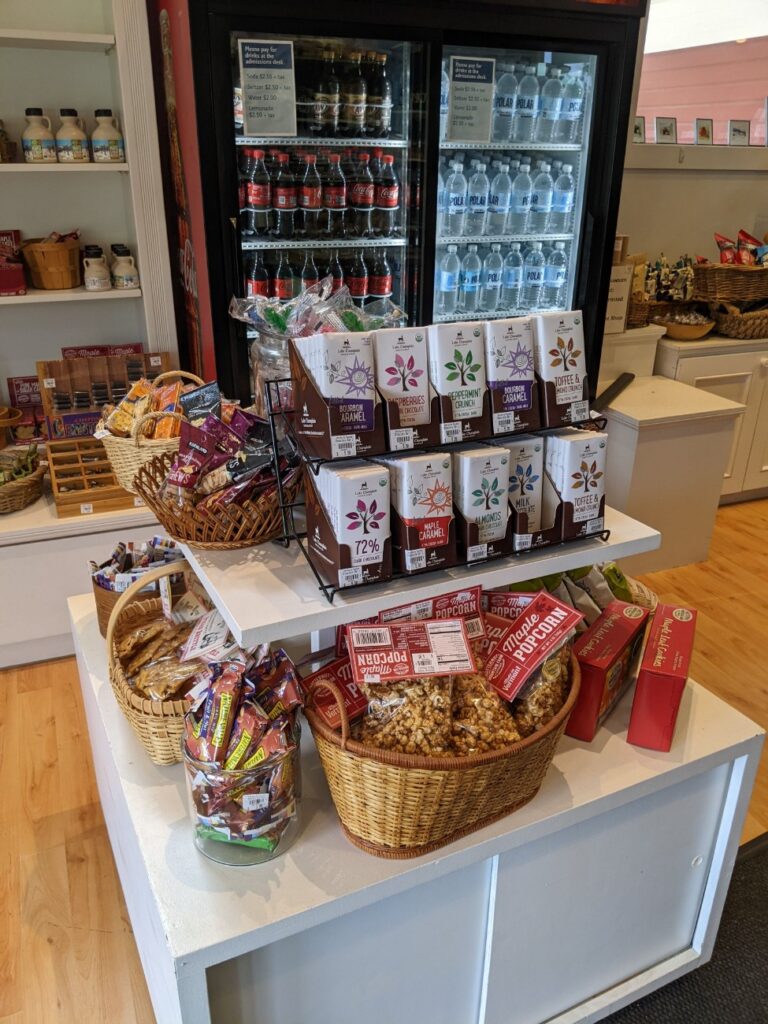
And as a parting shot, I want to mention just how nice the whole staff is. In particular, I had great chats with people in the gift shop, in the Pleissner Gallery, In the Textile Gallery, and in the Memorial Building. Much more than your average niceties. I remember one person told me, “Except for the ice storms, the weather is really great in Vermont!” and my little southern heart had a little attack. “You just have to be prepared,” she says.
In all, I can’t recommend the Shelburne Museum highly enough! It’s fun, quirky, interesting, unusual, and definitely worth visiting if you’re even remotely near Burlington, Vermont.
Be First to Comment